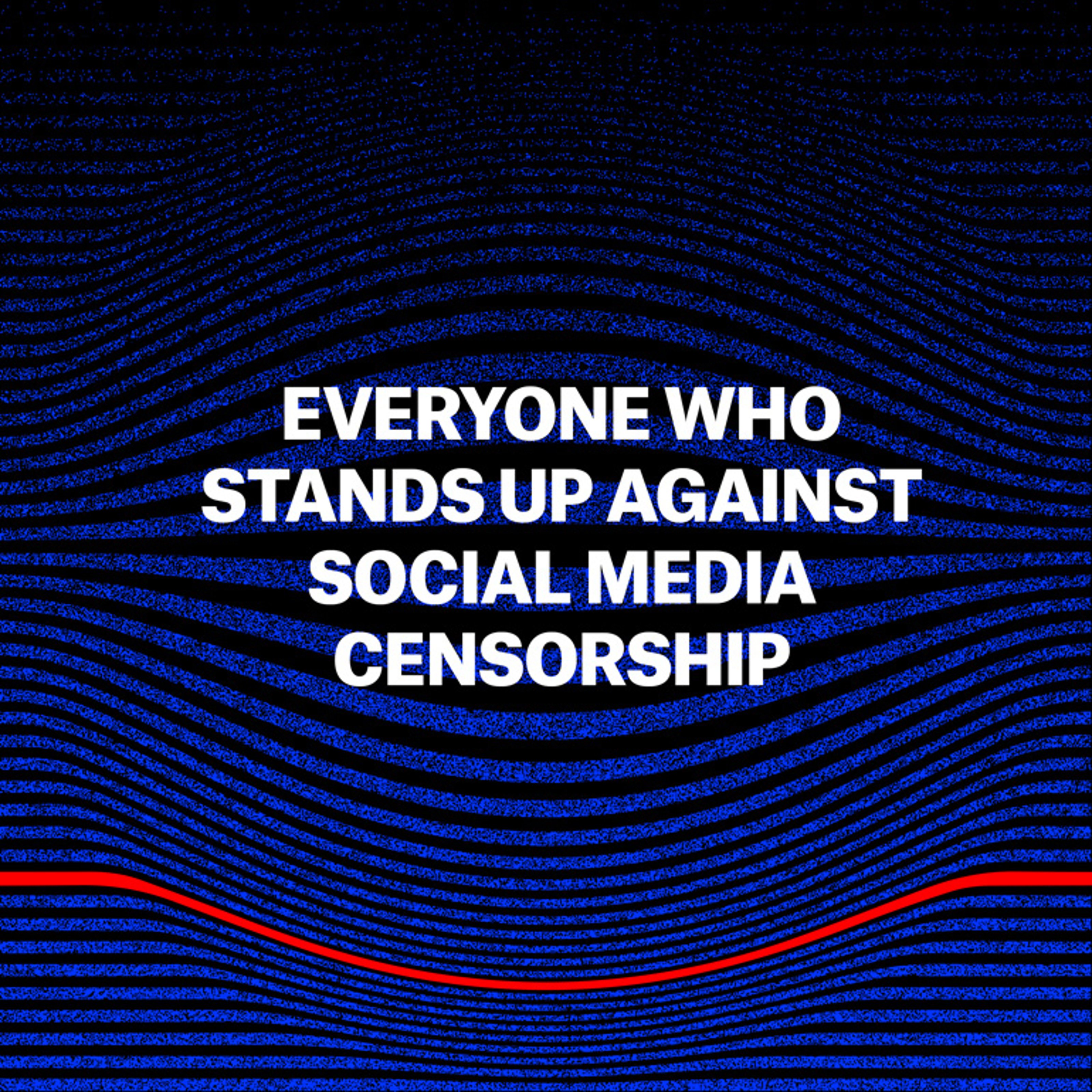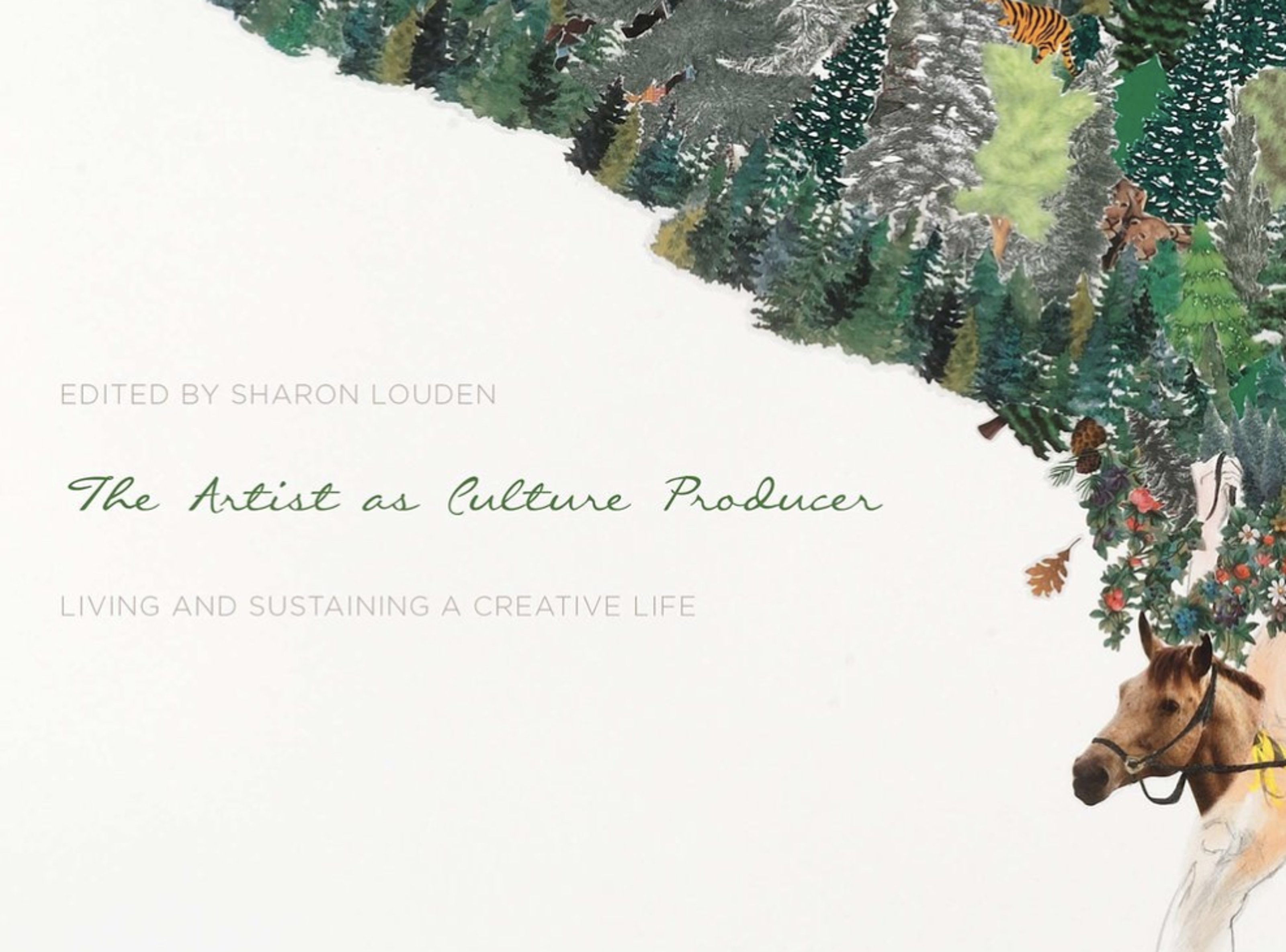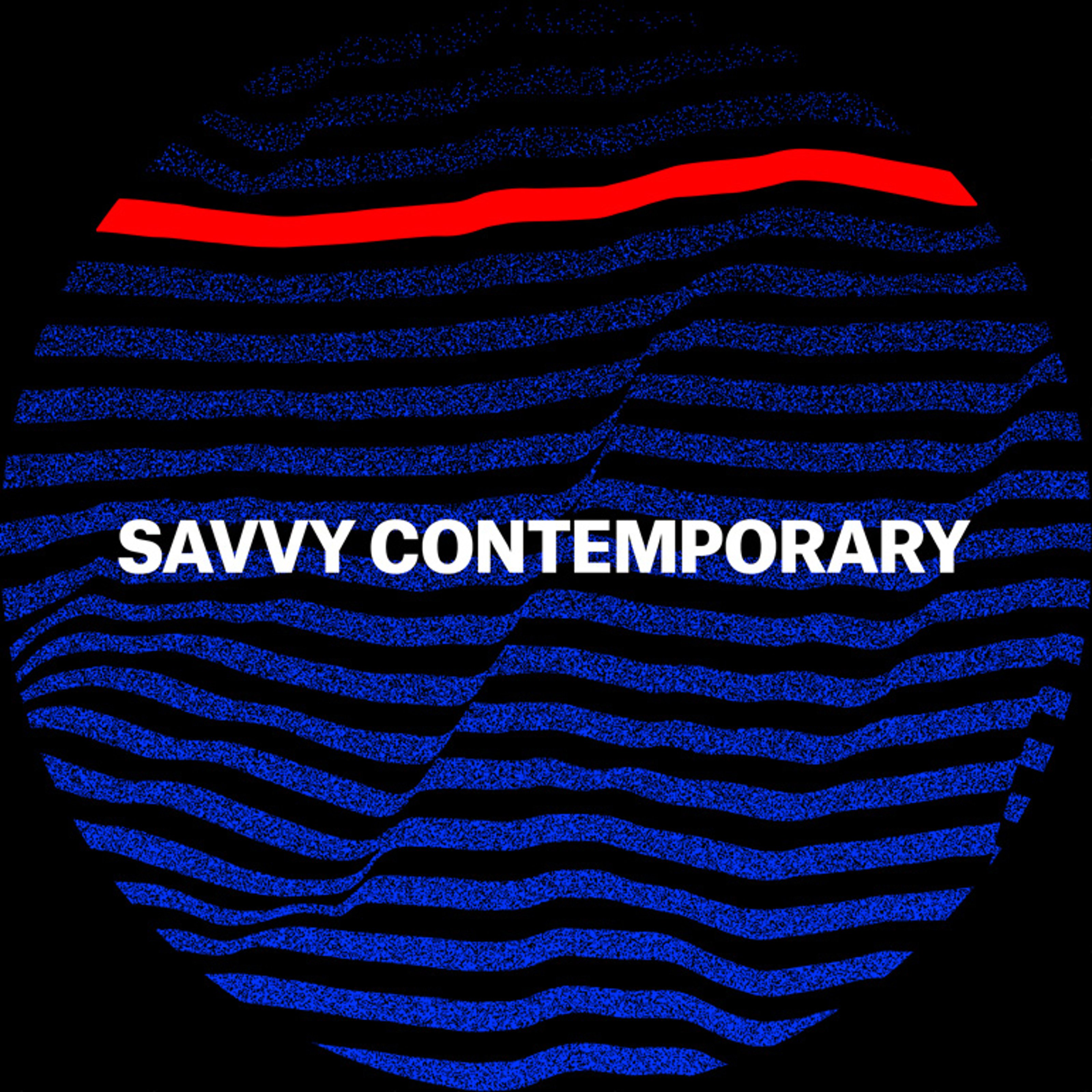
Collecteurs—the world’s first digital museum of private collections—is pleased to announce SUBSTANCE 100, a new, annual list that outlines a diverse array of artists, activists, collectives, movements and organizations making a substantial change in the world. By engaging a community of activists from the art world and beyond, SUBSTANCE 100 raises the question, “what is the purpose of art in the 21st century?”
SUBSTANCE 100 is produced with the belief that the art world can generate productive social activism now and for generations to come. Focused on the power of change, instead of power itself, SUBSTANCE 100 is neither exclusive nor concerned with rank. It celebrates the world’s most conscientious individuals and collectives, who are not afraid to challenge pre-existing models and enact social, environmental and political change for a more positive reality.
SUBSTANCE 100 accepted public nominations from March 15th to 23rd, 2020. A diverse panel of judges consisting of Nástio Mosquito, Adam Broomberg, Jessica Oralkan, Evrim Oralkan, Adam Carr and Àngels Miralda Tena from within the Collecteurs family have selected the finalists.
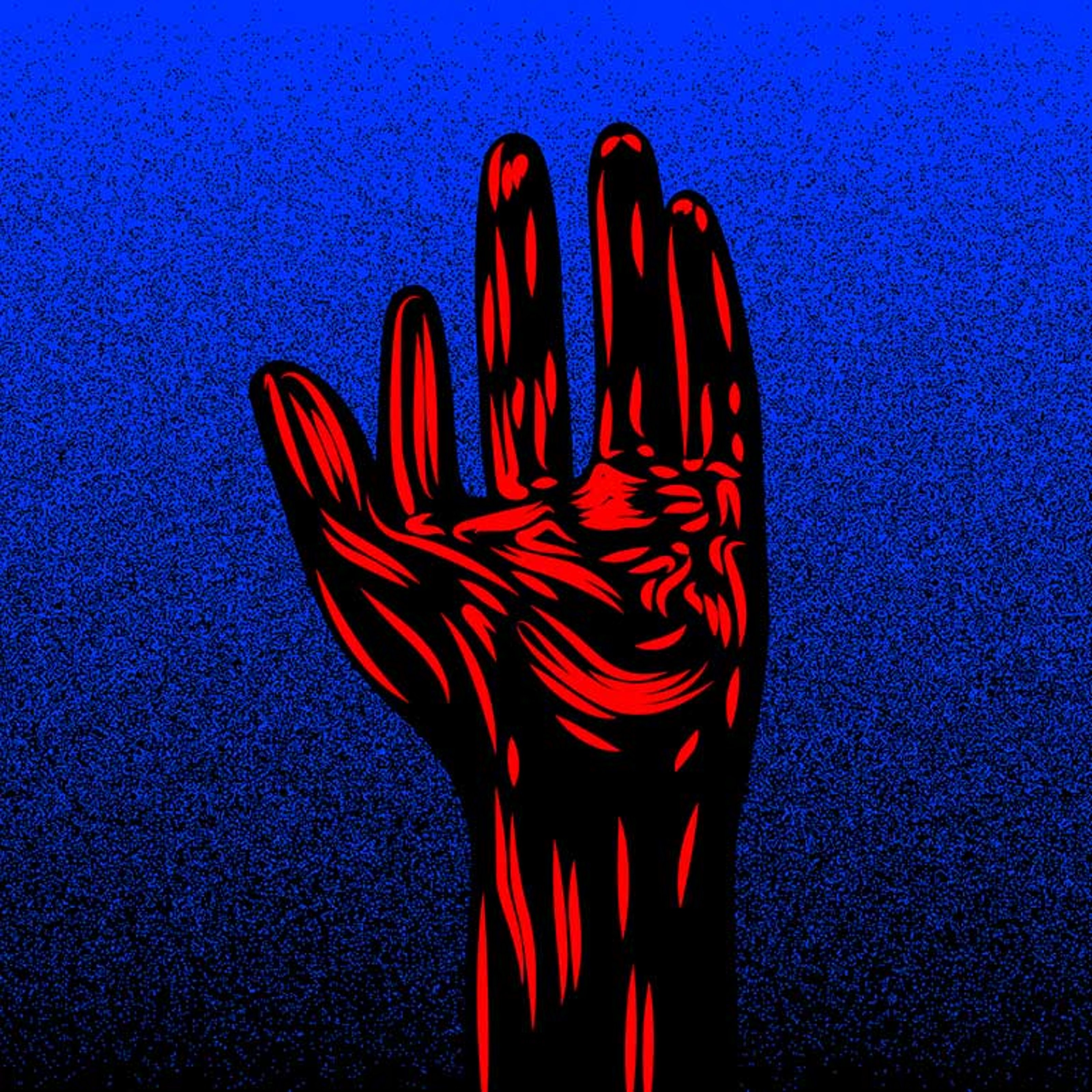
The goal of SUBSTANCE 100 is to inspire others, through example, to impart social, environmental and socio-political change through their own artistic endeavors. The intention of SUBSTANCE 100 isn’t to be exclusive, nor is SUBSTANCE 100 concerned with ranking. SUBSTANCE 100 is focused on the power of change, rather than power itself. Ultimately, SUBSTANCE 100 hopes to refocus the function of art in the twenty-first century and believes the art world is capable, if not responsible, for leading social activists now and for generations to come.
We will be presenting the list in groups to make it easier to digest. First up, we have an artist and filmmaker who explores the experiences of migrant diasporas globally; a collaboration by curators that considers how small-scale institutions can develop sustainable models; an artist’s collaboration with a hip-hop group to defy gentrification of historic neighborhoods; a coalition of artists standing up for those whose lives and livelihoods are placed at risk by predatory development; an institution facilitating the safe passage and hosting of persecuted artists; an artist exploring the effects of globalization and colonialism on youth in the Middle East; a curator exploring the medium of photography through an anti-colonialist and anti-imperialist lens; an artist focused on individual and collective experience and the overlap between the two; a filmmaker documenting the imprisonment of a journalist in an island prison for asylum-seekers heading to Australia; and an organization that provides humanitarian assistance to migrants in need. And here are the names…
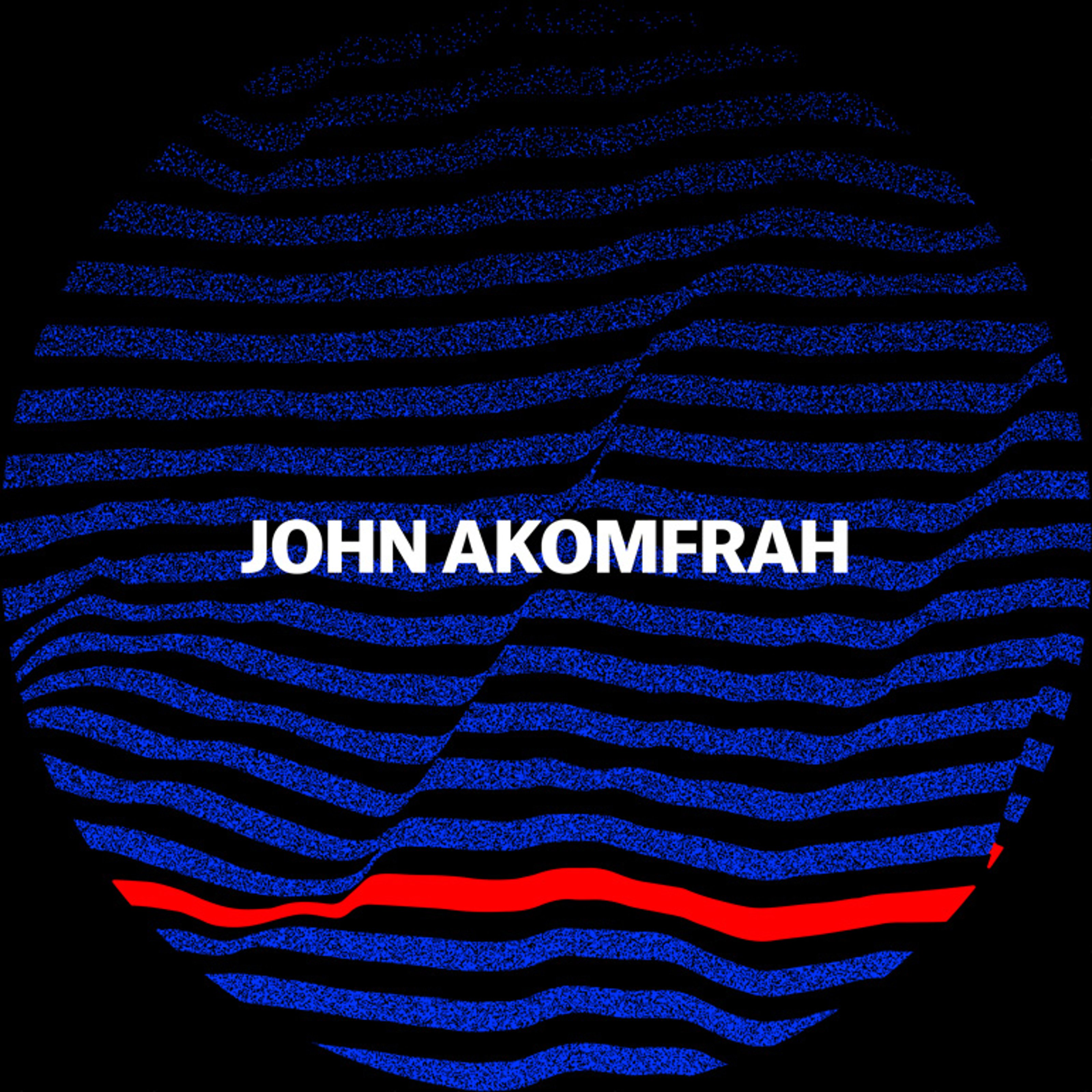


John Akomfrah is an artist and filmmaker whose poetic works have grappled with race, identity and post-colonial attitudes for over three decades. His works are characterised by their investigations into memory, post-colonialism, temporality and aesthetics and often explores the experiences of migrant diasporas globally. As a founder of influential Black Audio Film Collective, he made his début as a director with Handsworth Songs (1986) which explored the events surrounding the 1985 riots in Birmingham and London. The award winning film also established a multi-layered visual style that has become a recognisable motif of Akomfrah’s practice. In May 2019, Akomfrah participated in the inaugural, critically acclaimed Ghana Pavilion at the Venice Biennale, with his latest work Four Noctures.
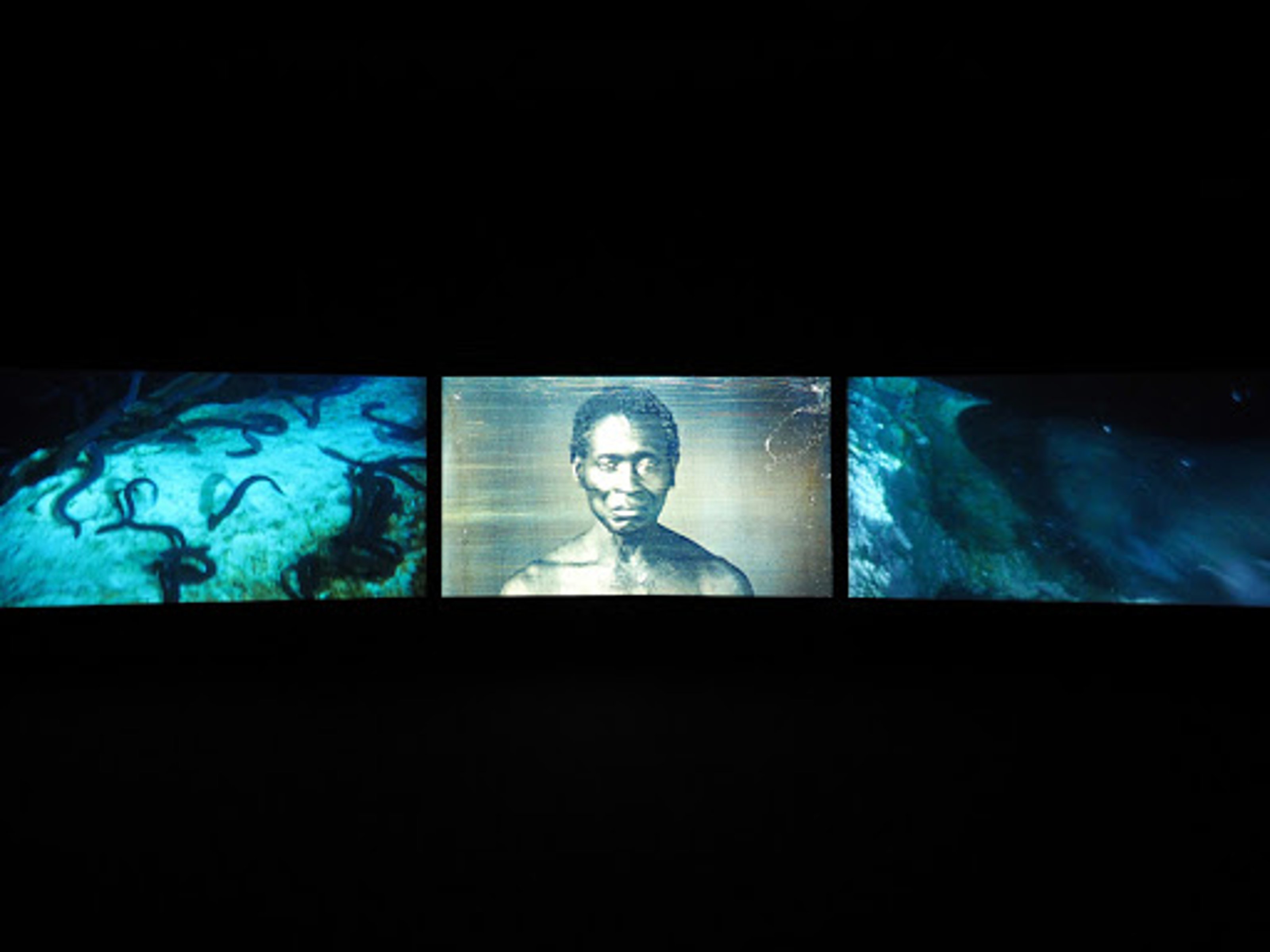
John Akomfrah – Vertigo Sea, 2015
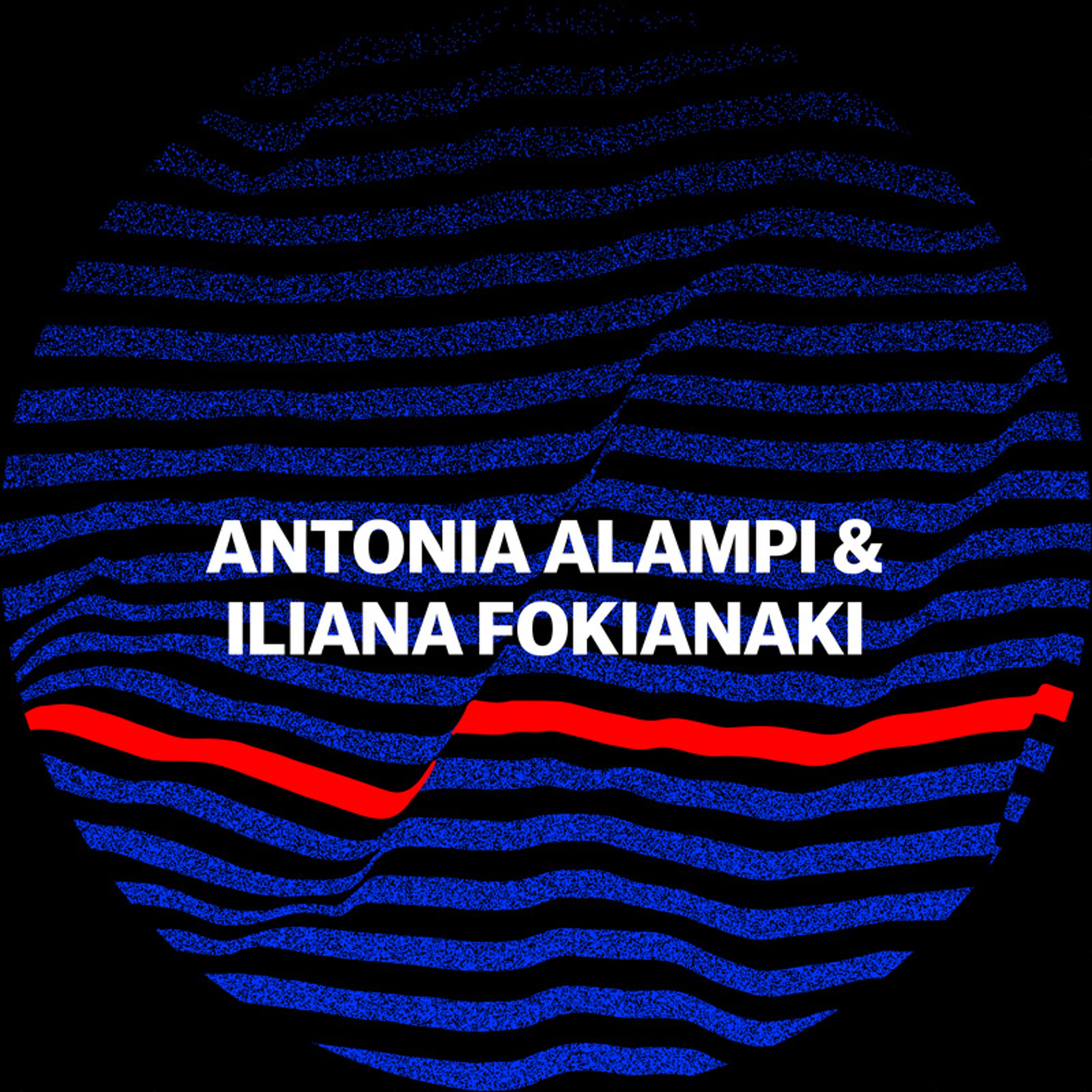


Future Climates is a platform founded by Antonia Alampi and iLiana Fokianaki with the objective to shape the forecast of institutional climates by addressing the precarious conditions of individual workers and small-scale organizations of contemporary culture. At its core lies the urgency to imagine and implement new sustainable economies in response to the changing weather that affects labour rights, work ethics and funding methods. Future Climates is mainly run and funded under the umbrella of State of Concept Athens, a non-profit institution founded by iLiana Fokianaki.
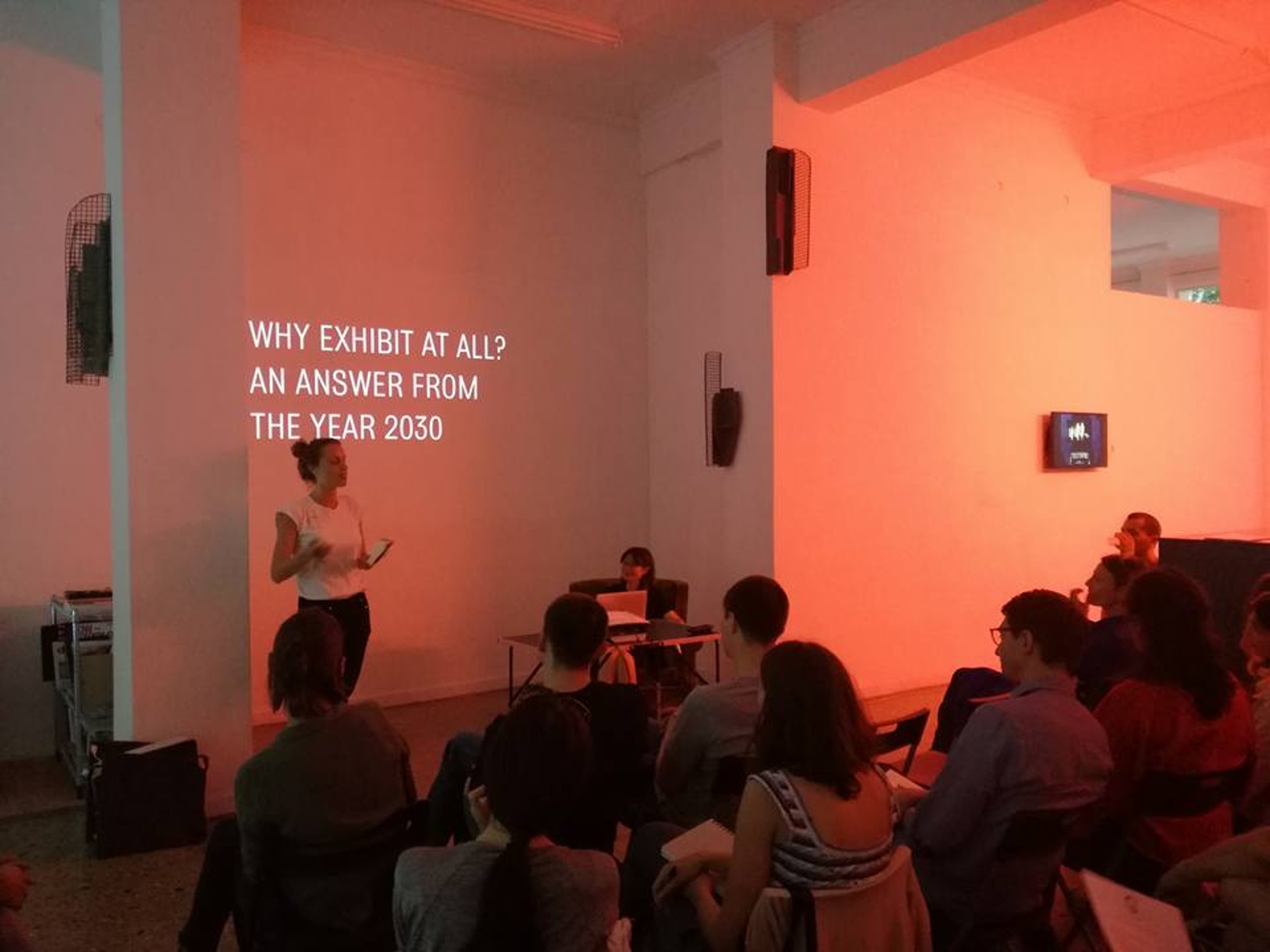
Future Climates at State of Concept Athens, May 2017



Halil Altındere is a prominent figure known for shaping the emerging contemporary art scene in 90s’ Turkey. He is most known for his works inquiring about political, socio-cultural codes, and addressing resistance against the oppressive system of the Turkish government. His most known collaboration Wonderland (2013) is the music video/documentary of Tahribad-ı İsyan (Rebellion of Destruction), a hip-hop group from Sulukule, the historic Roma settlement in Istanbul. The song is in defiance to the redevelopment project which expelled Istanbul’s Romani people. Throughout the video, we see the demolished buildings and graffiti-covered walls of the historic neighborhood under the gentrification and displacement project which was led by TOKI (The Turkish government’s Housing Development Administration). The video has been showcased in prestigious international exhibitions.
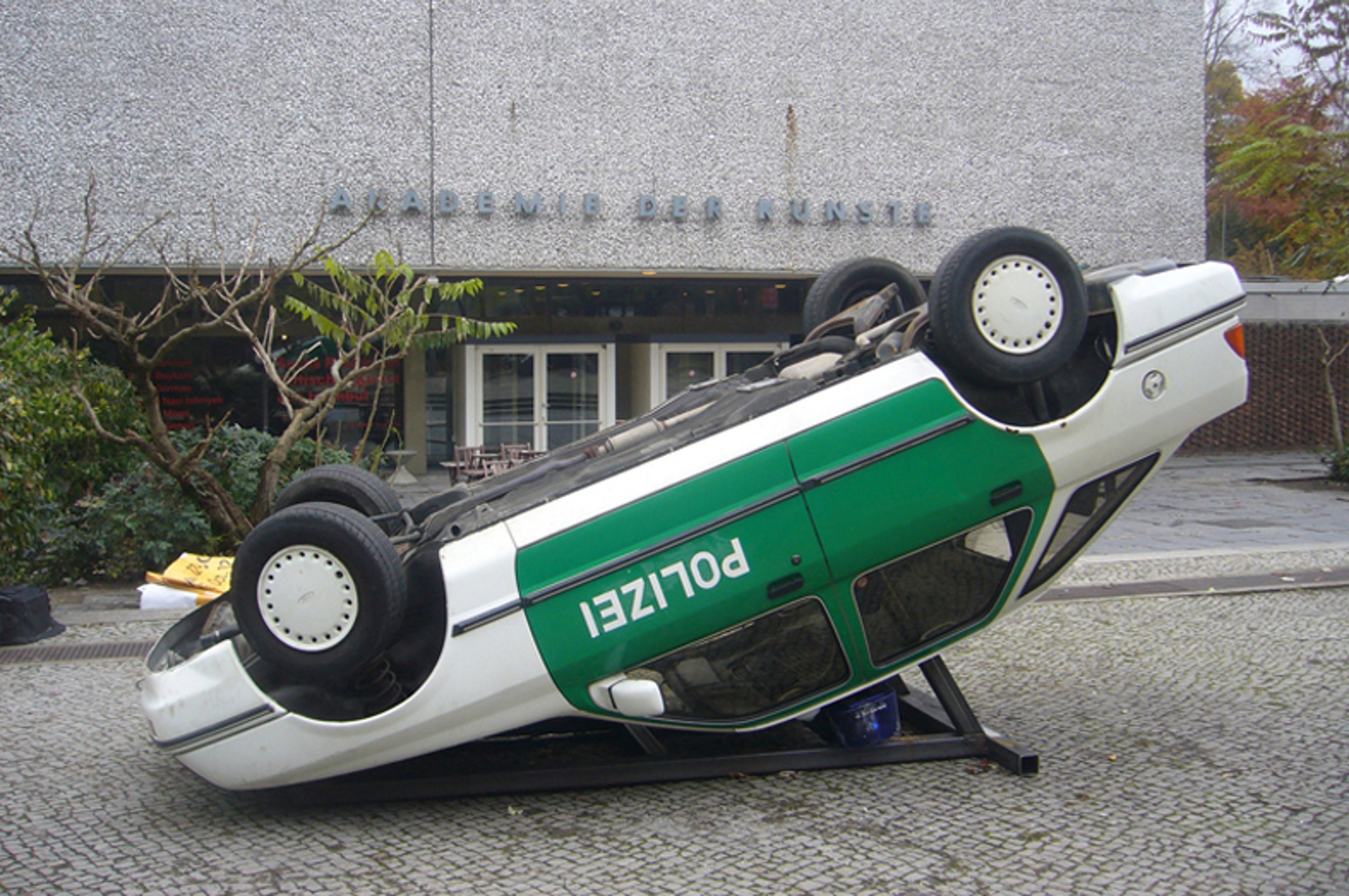
Halil Altindere – The Monument of Direct Democracy, 2009



Based in Manhattan’s Chinatown and Lower East Side, Art Against Displacement (AAD) is a coalition of artists and arts professionals that seeks to amplify the demands of those whose lives and livelihoods are placed at risk by predatory development and resettlement, and to work in solidarity with grassroots organizations toward community-led rezoning. The group affirms that gentrification is not an inevitable effect of urban development, and refuses to let the work of cultural producers be instrumentalized towards the displacement of long-term residents and businesses. Recently, in early 2020, the coalition led a community fueled campaign and won a lawsuit against four proposed luxury towers in New York City’s Lower East Side neighborhood.
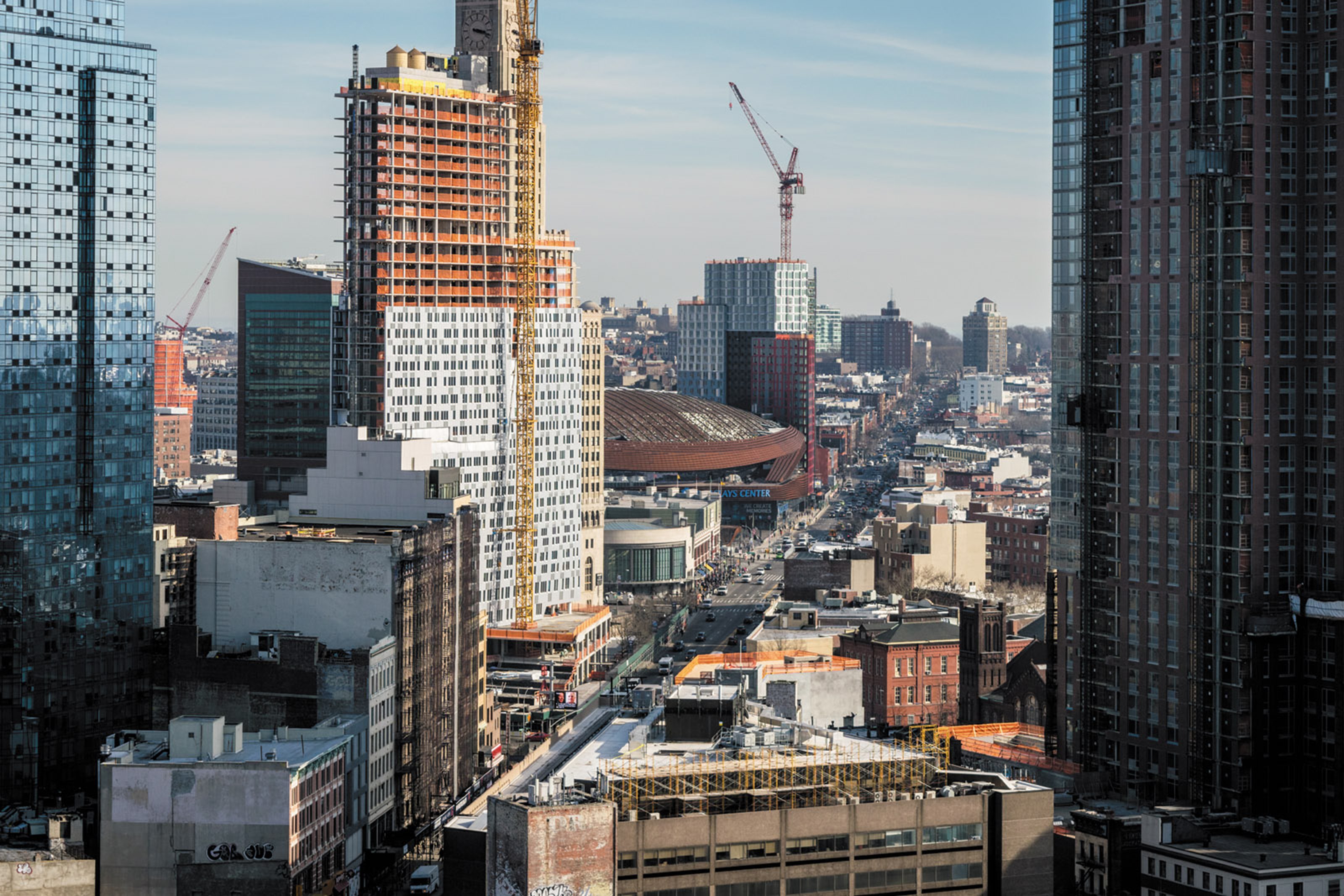
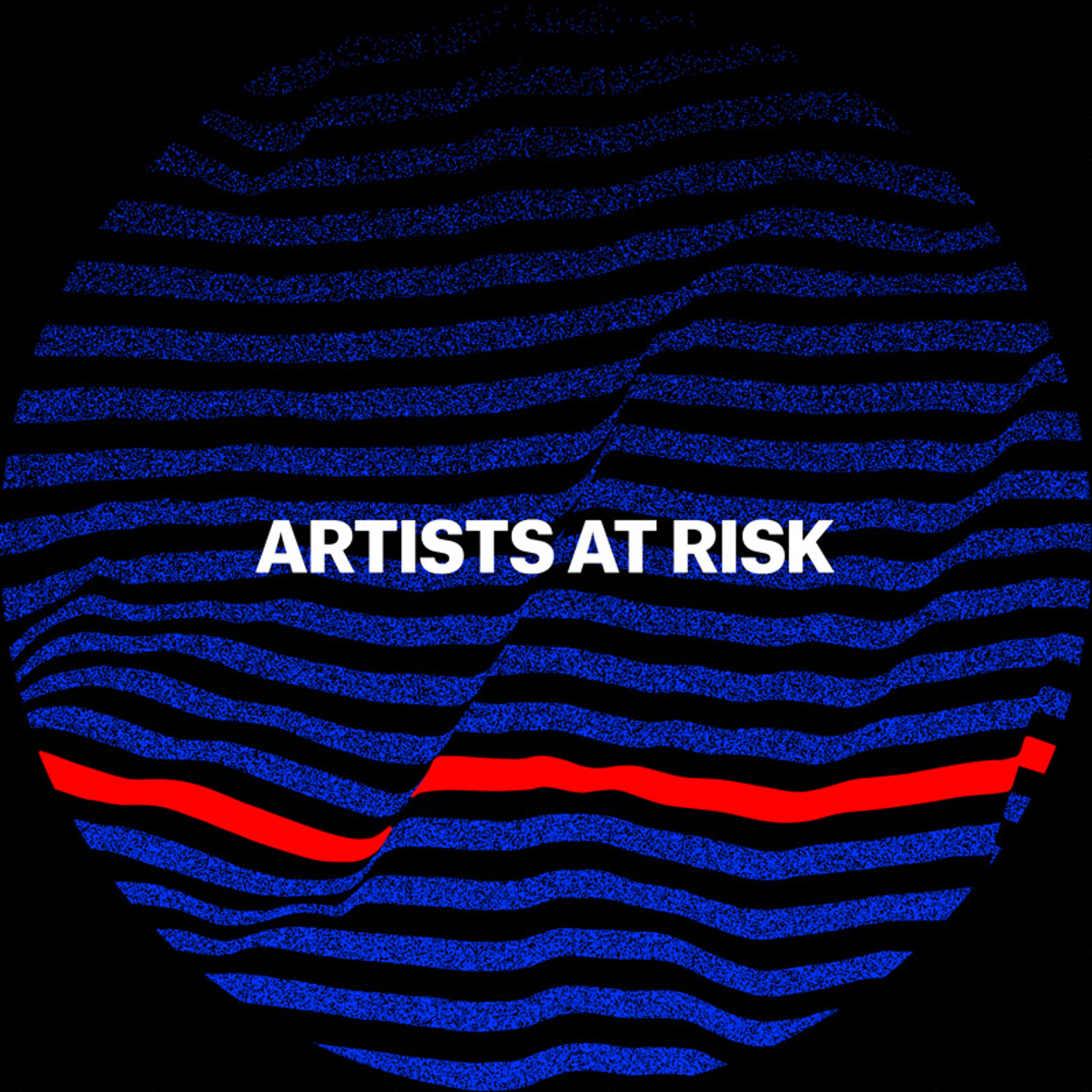


Artists, writers, curators, critics and scholars are targets of politically motivated threats and persecution globally. ARTISTS at RISK (AR) is an institution at the intersection of human rights and the arts. AR is dedicated to mapping the field of persecuted visual art practitioners, facilitating their safe passage from their countries of origin, hosting them at “AR-Residencies” and curating related projects, including the “AR Pavilion”.
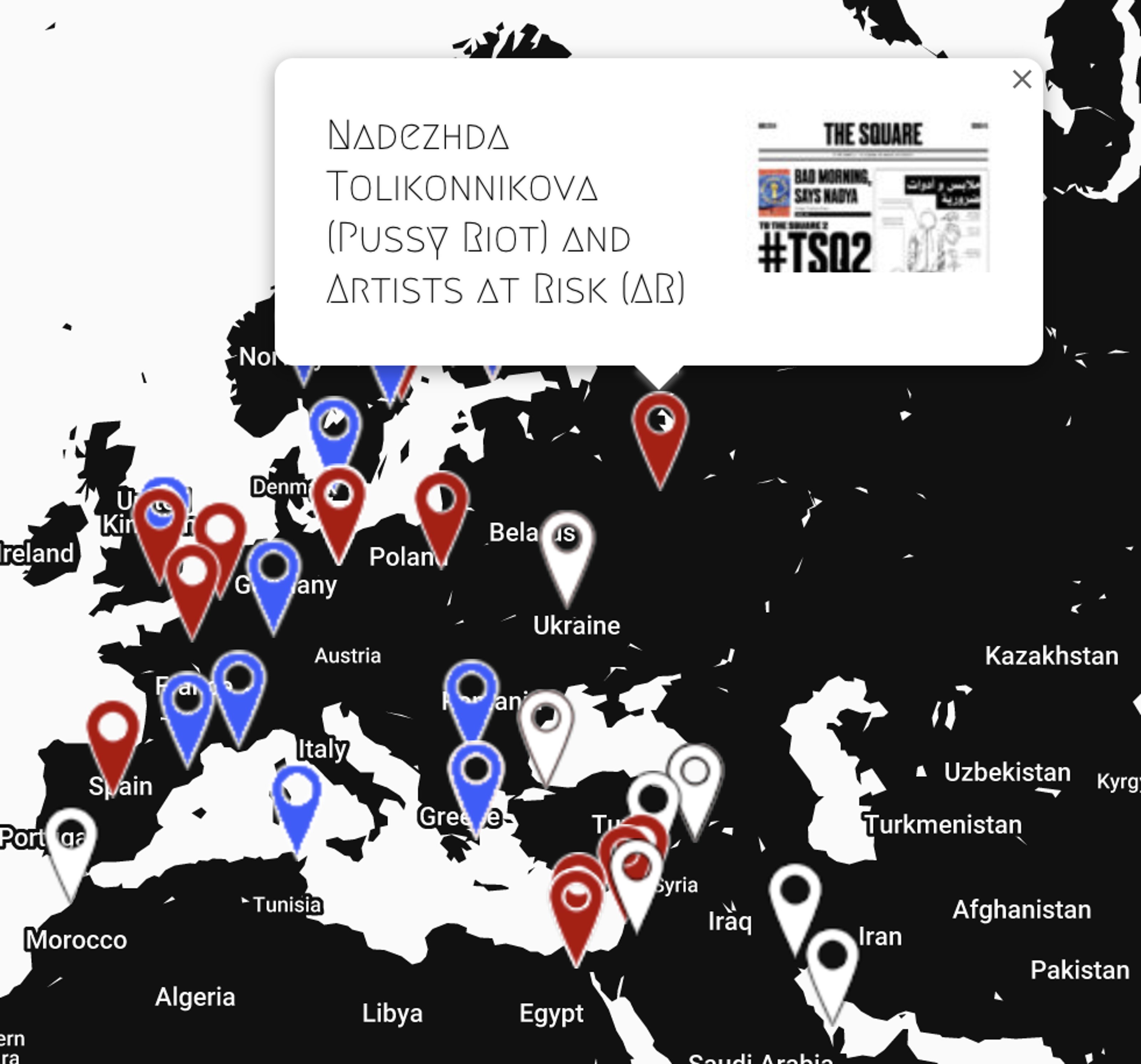
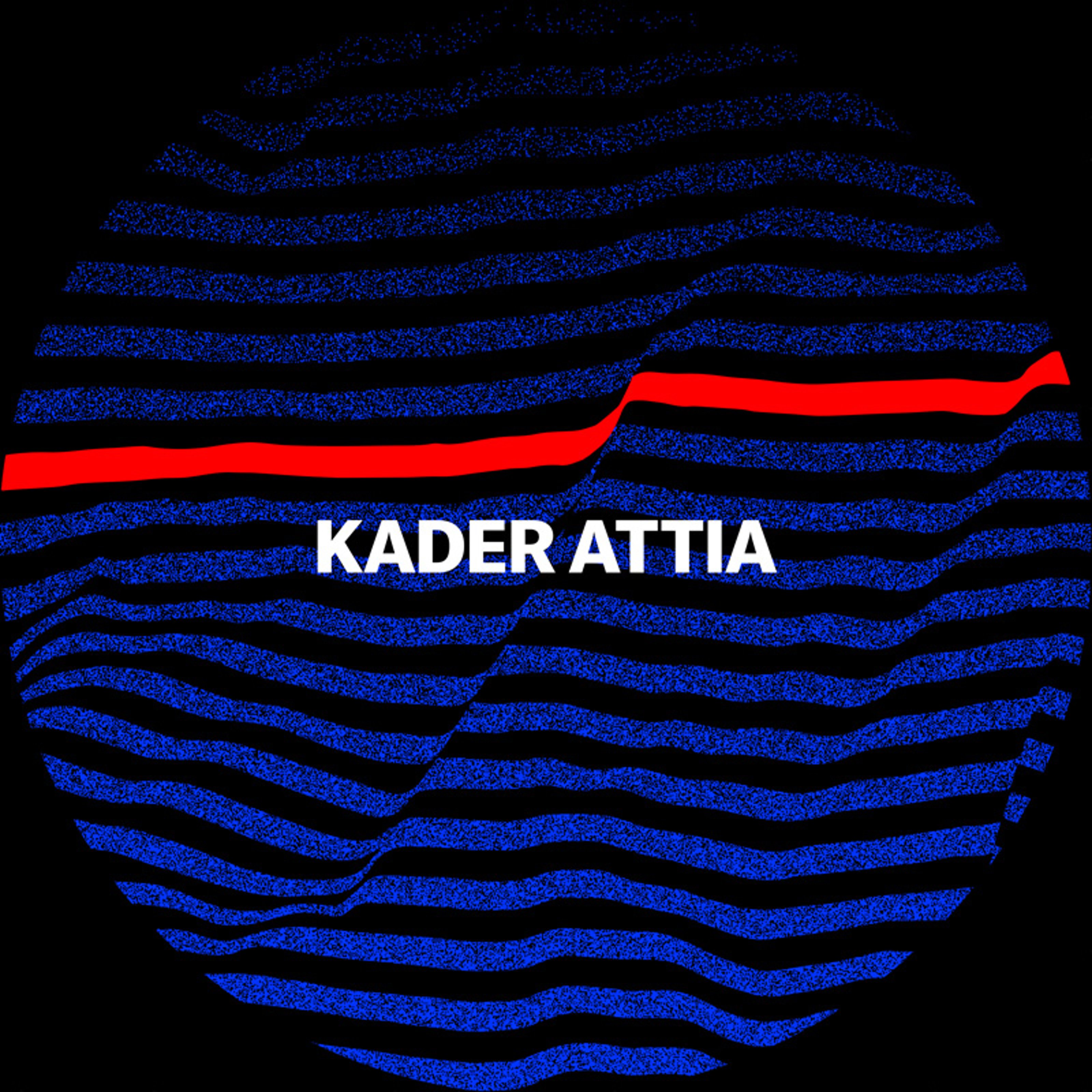


Growing up between France and Algiers, Kader Attia’s art is influenced by this East-West dichotomy, differences between cultures and the effects of globalization and colonialism on youth in the Middle East. Attia’s approach to this contemporary situation is through repair and reparation, concepts which he believes constitute the exchange; the appropriation and the reappropriation between Western and Eastern culture. He examines this exchange through architectural environments and sees architecture and city planning as a symbol of power. Attia states that the dispossession of individuals always leads to them reappropriating their own culture, a culture that has been taken from them through colonial strategies of alienation.
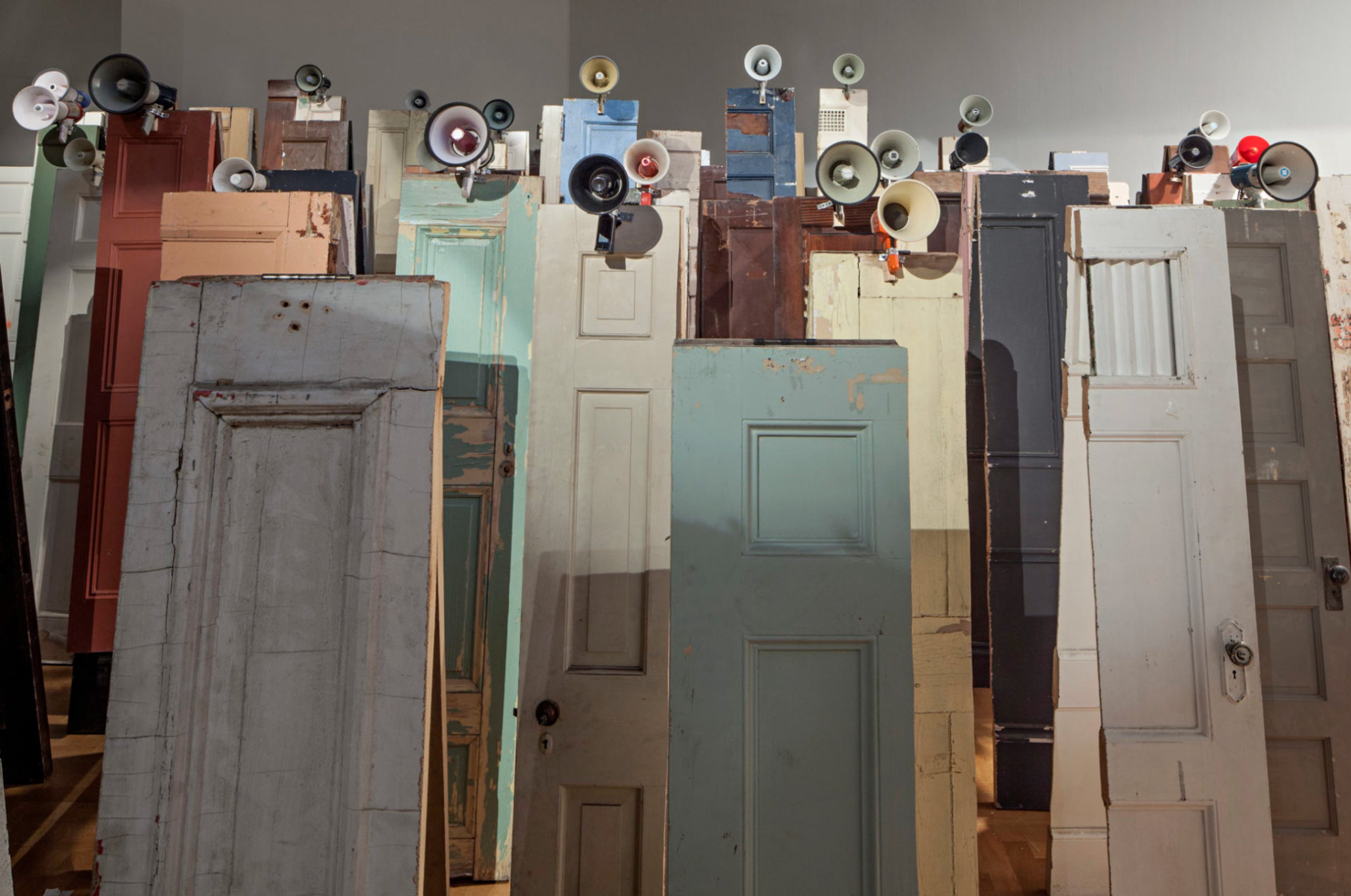
Kader Attia – Asesinos! Asesinos!, 2014. Courtesy: Galerie Nagel Draxler, Berling and Lehmann Maupin, New York.
In his works, Attia uses these ideas of repair and reappropriation as interventions onto objects substituted for a body, or for a crowd. In Asesinos! Asesinos!, 2014, he places over 100 doors with megaphones attached to some to resemble a crowd of protestors. The doors have been sawn in half and the halves are attached to each other so that they stand on their own. Without actual bodies present, and without their voices ringing, Attia succeeds in evoking a protest as if the confrontation is real.



Ariella Aïsha Azoulay is a writer, theorist, curator and filmmaker. As a theorist, her primary focus is on photography and visual culture, looking at the medium of photography (and arts in general) through an anti-colonialist and anti-imperialist lens. Azoulay looks into the production of photographs as imperial commodities, exploiting a complex encounter. She claims photography accelerated the colonial acquisition of wealth, resources and artifacts from Africa, India and the Middle East. Azoulay has also been critical of Western-style museums, claiming their “plundered” artifacts belong with the cultures and people that imperialism has destroyed for centuries.
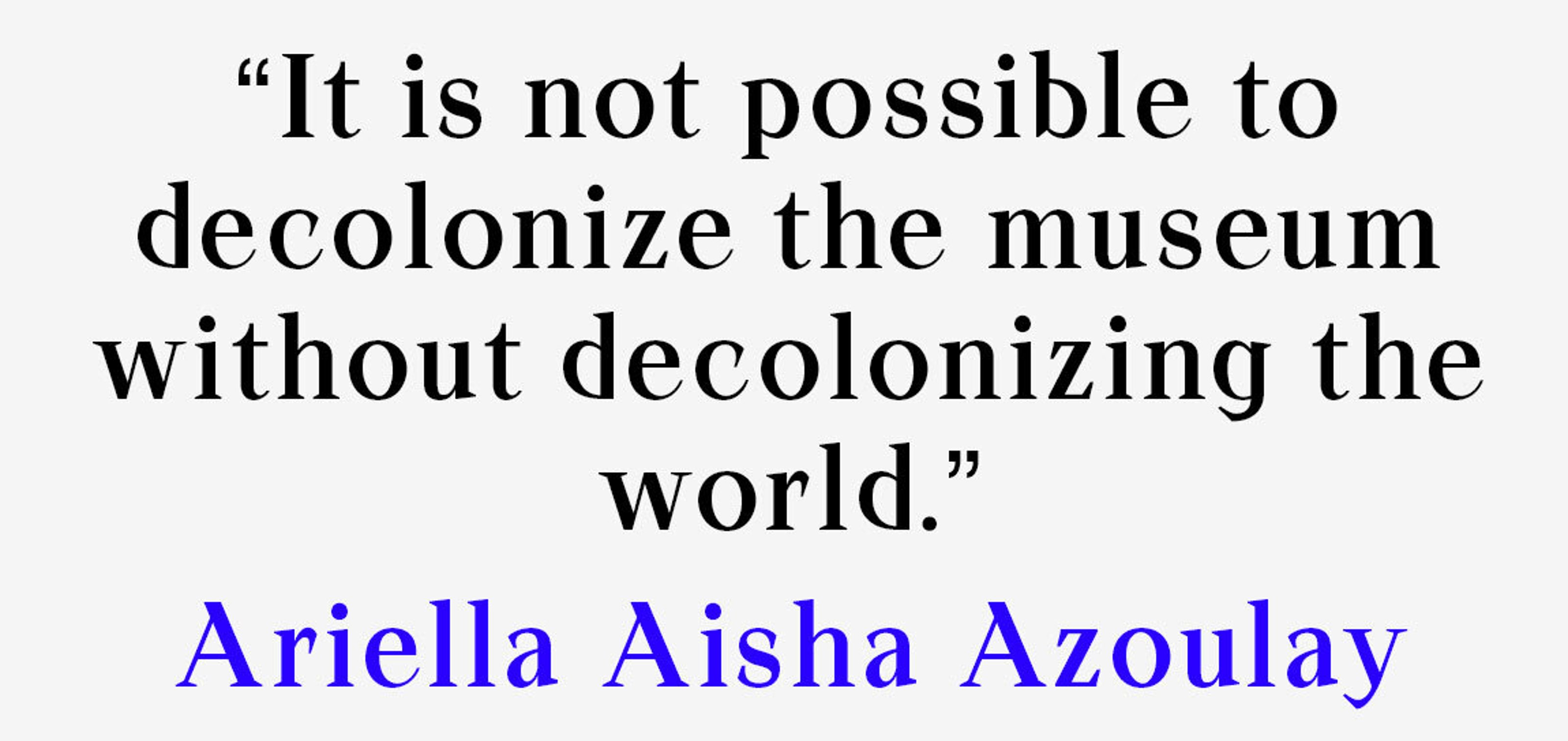
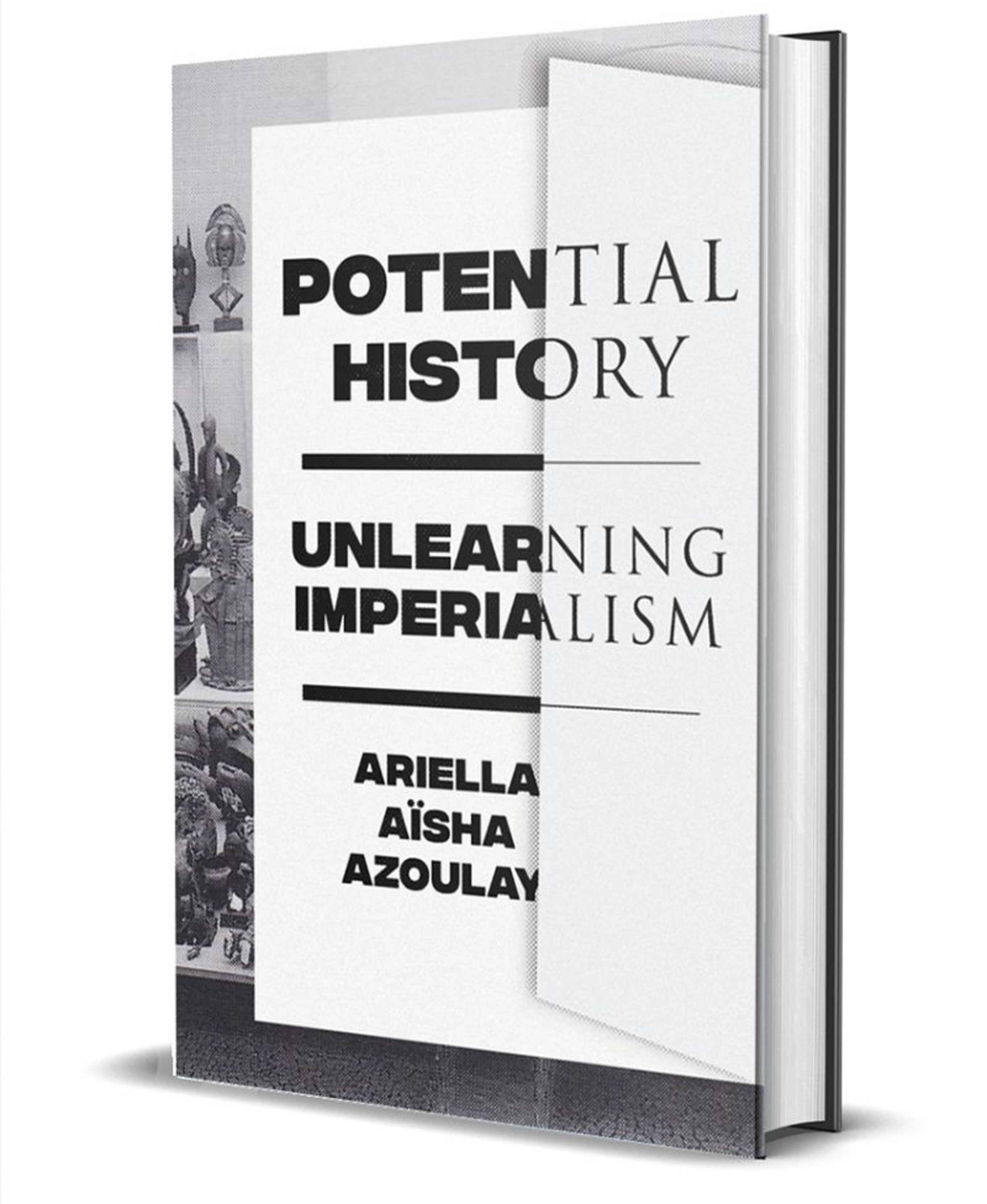
Ariella Aisha Azoulay, “Potential History: Unlearning Imperialism” (Verso, 2019)



Born in 1981 in Manchester, UK, Hannah Black currently lives and works in New York. Her work spans video, text and performance and draws on communist, feminist, and afro-pessimist theory, autobiographical fragments, and pop music. Black’s work has focused on individual and collective experience, as well as the slippage and overlaps between the two. In 2017, Black penned a letter to the curators of the Whitney Biennale, petitioning for the removal of a work by Dana Schutz.
Hannah Black – Beginning, End, None. 2019. Installation at Performance Space, New York
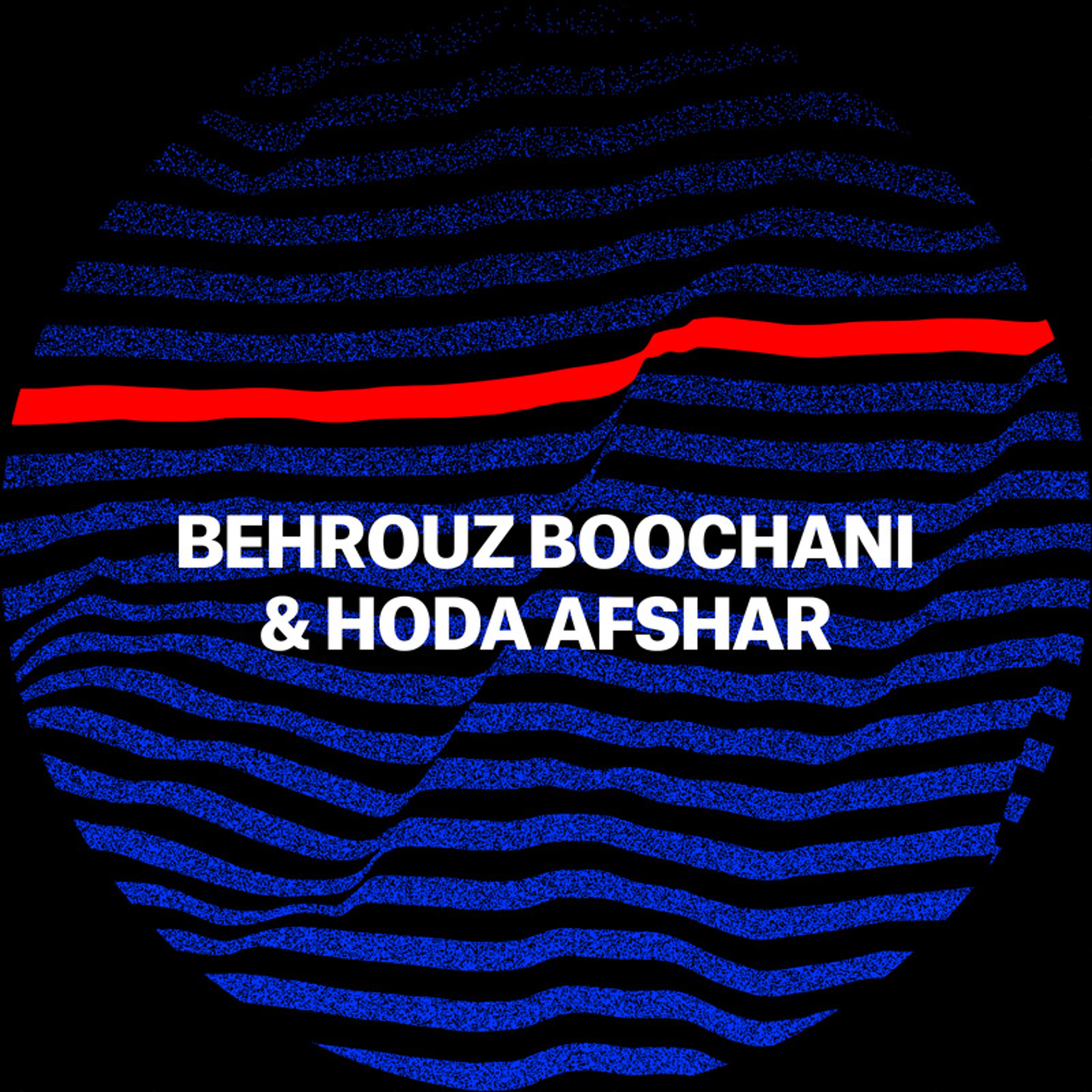


Hoda Afshar’s video work ‘Remain, 2018’ addresses the invisible histories and the human rights of asylum seekers in Australia. Filmed on Manus Island, the work delivers a powerful depiction of the prolonged mistreatment of detainees including Behrouz Boochani. Behrouz Boochani, born in Ilam, Iran (1983) is an Iranian-Kurdish journalist and poet. After seven years of detainment on Manus Island, an island in Papua New Guinea that is used as a de facto prison for asylum-seekers heading to Australia, Boochani recently escaped Manus Island on a visitor visa to New Zealand and the outcome is unknown.. He was originally held in Manus Island Detention Centre but, after it was forced to close in 2017 following a ruling that it violated Papua New Guinea’s constitution, he and 600 other asylum-seekers have been left to languish on the island. His memoir, No Friend But the Mountains: Writing from Manus Prison, won the Victorian Prize for Literature and the Victorian Premier’s Prize for Nonfiction in January 2019. The book was tapped out on a mobile phone in a series of single messages over time and translated from Persian to English.
*Boochani recently escaped Manus Island on a visitor’s visa to New Zealand and the outcome is unknown.

Hoda Afshar – Remain, 2018
Read ‘A Conversation Between Hoda Afshar and Behrouz Boochani’



Border Angels is a non-profit organization that advocates for human rights, humane immigration reform and social justice. Established in 1986, Border Angels first focused on helping migrants living in the canyons of North San Diego County. Since then, they have expanded to conducting humanitarian work along the entire US-Mexico border region. Border Angels’ services include free immigration and employee rights consultation, educational programs and legal assistance to migrants in need. The initiative is also best known for engaging in desert water drops, where volunteers venture out into the desert along the US/Mexico border and distribute plastic bottles containing water in areas that are thought to be migrant pathways.
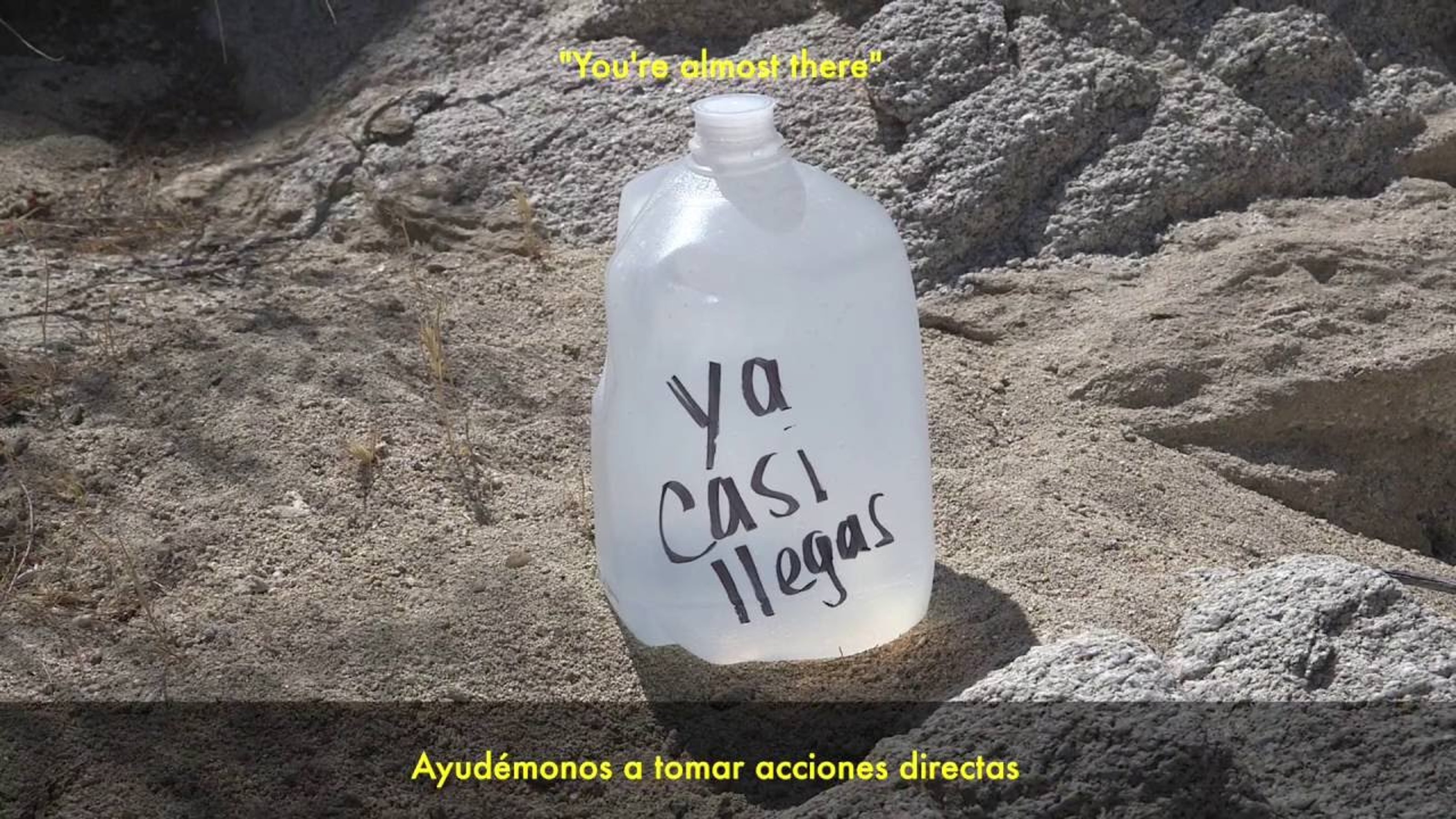
Border Angels, Desert Water Drop



An ex-collector who sold the collection of contemporary art that took him two decades to build while using the proceeds to preserve part of his country’s heritage; a choreographer and performance artist, investigating questions of race and gender through her dance performances; an artist who asks us to dig deeper into cultural production and how we absorb the media that’s presented to us; a feminist collective that works towards diminishing poverty for women; a movement that organizes around Indigenous rights, black liberation, and de-gentrification; an artist that creates work on popular culture and politics through documentaries and public engagement; an art historian who questions how we can cultivate futures of social justice within capitalist ruins; an environmental lawyer who stood up to a massive corporation for Ecuador’s indigenous communities, where the corporation caused land pollution; an institution that connects artists, scholars, and activists to create new avenues for collaboration and action; everyone who stands up against social media censorship.
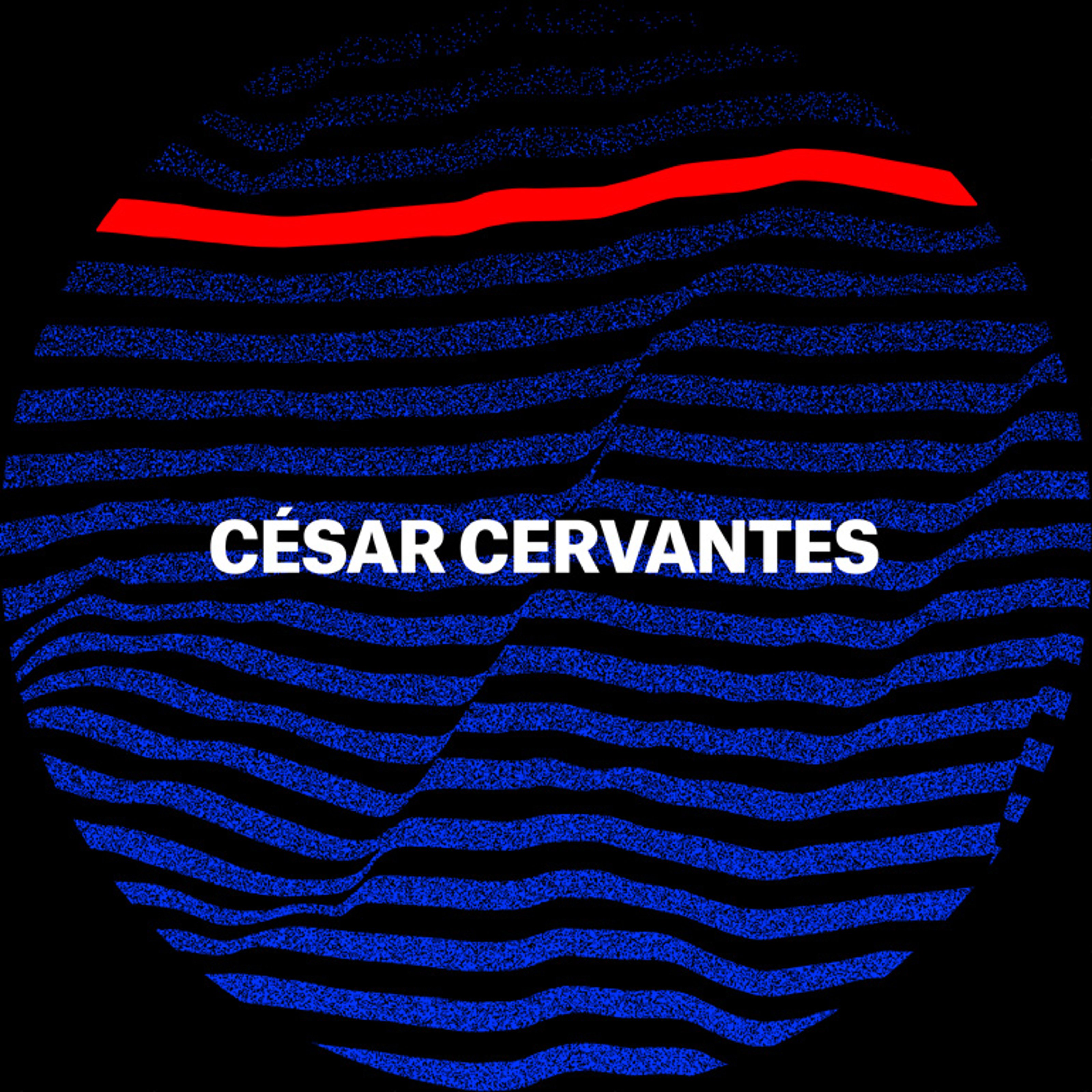


Back in 2013, after three years of non-stop contemplation, César Cervantes decided to sell his collection of contemporary art that took him two decades to build. It was a radical decision by one of Mexico’s most avid art patrons—one that was not taken lightly.
With the proceeds from the sale, the ex-collector bought Luis Barragán’s Casa Prieto-López (now christened Casa Pedregal) with the hopes of preserving part of his country’s heritage.
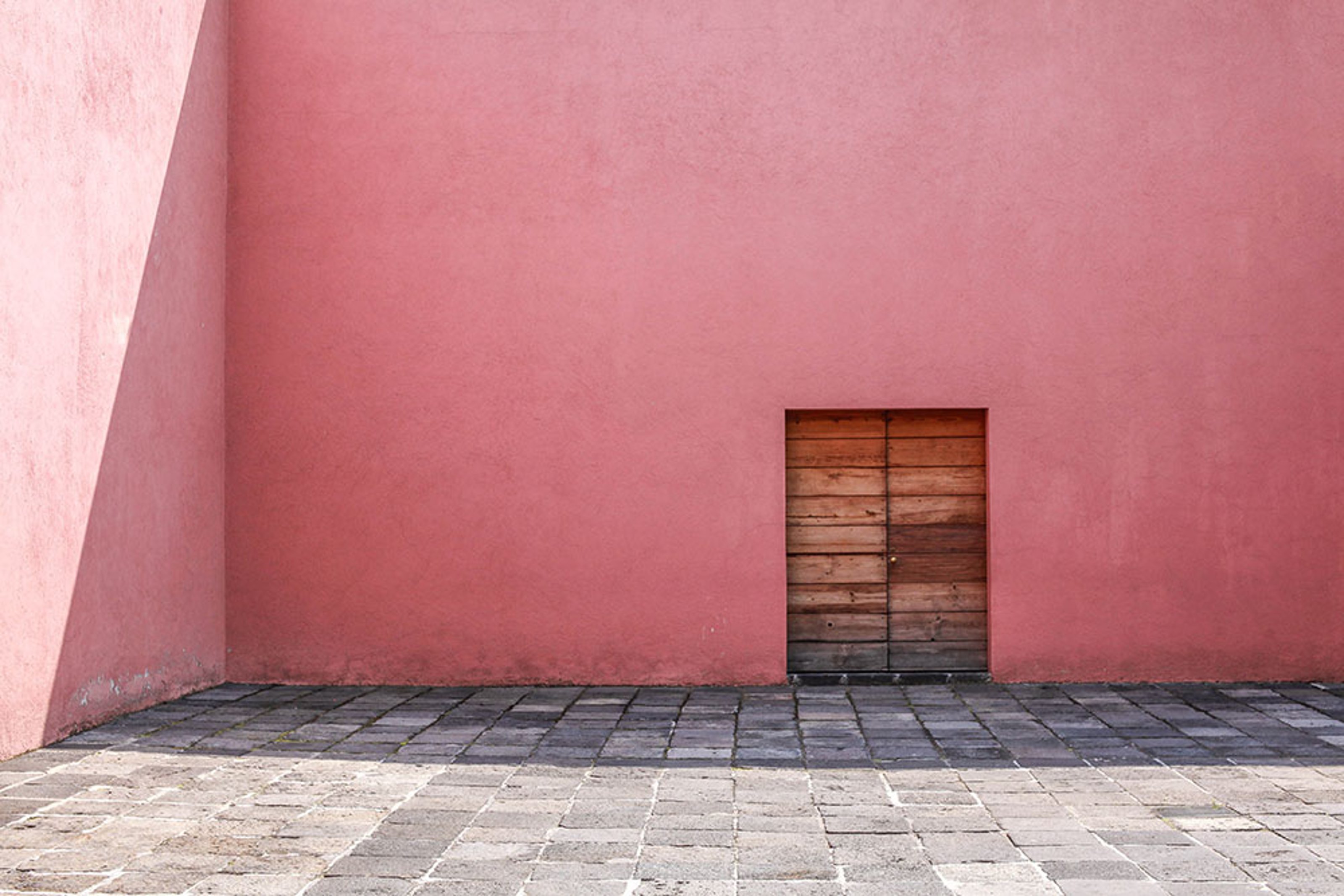
Casa Pedregal
Once in his possession, Cervantes invited his friend Jorge Covarrubias, co-founder of Parque Humano, to convert the house back into Barragán’s original design, and make it habitable for his family. Cervantes has received a continuous wave of criticism from almost everyone in his immediate vicinity. Only a handful of the people he had come to know and appreciate throughout his time as a collector, defended his decision to sell and walk down a different path.
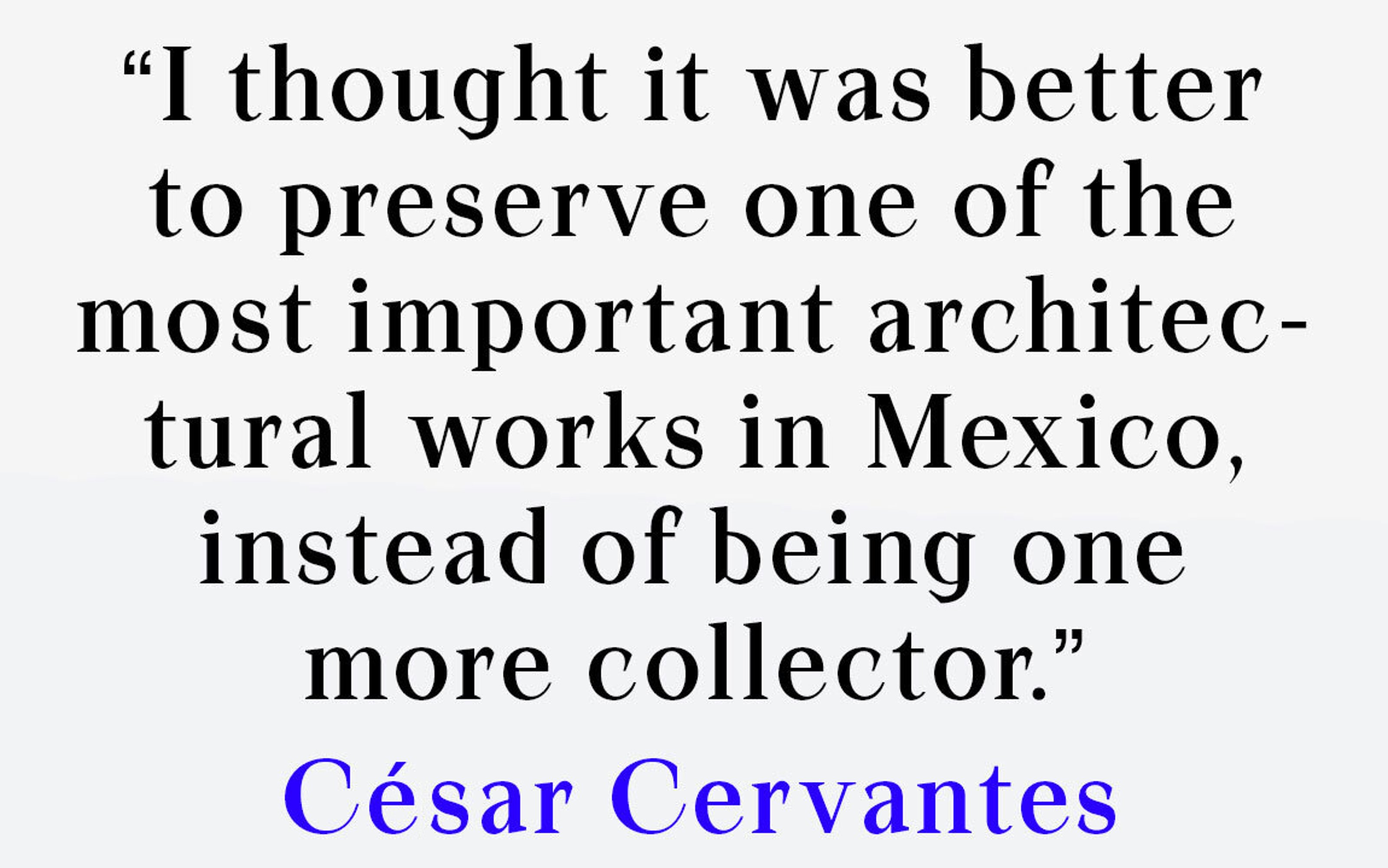
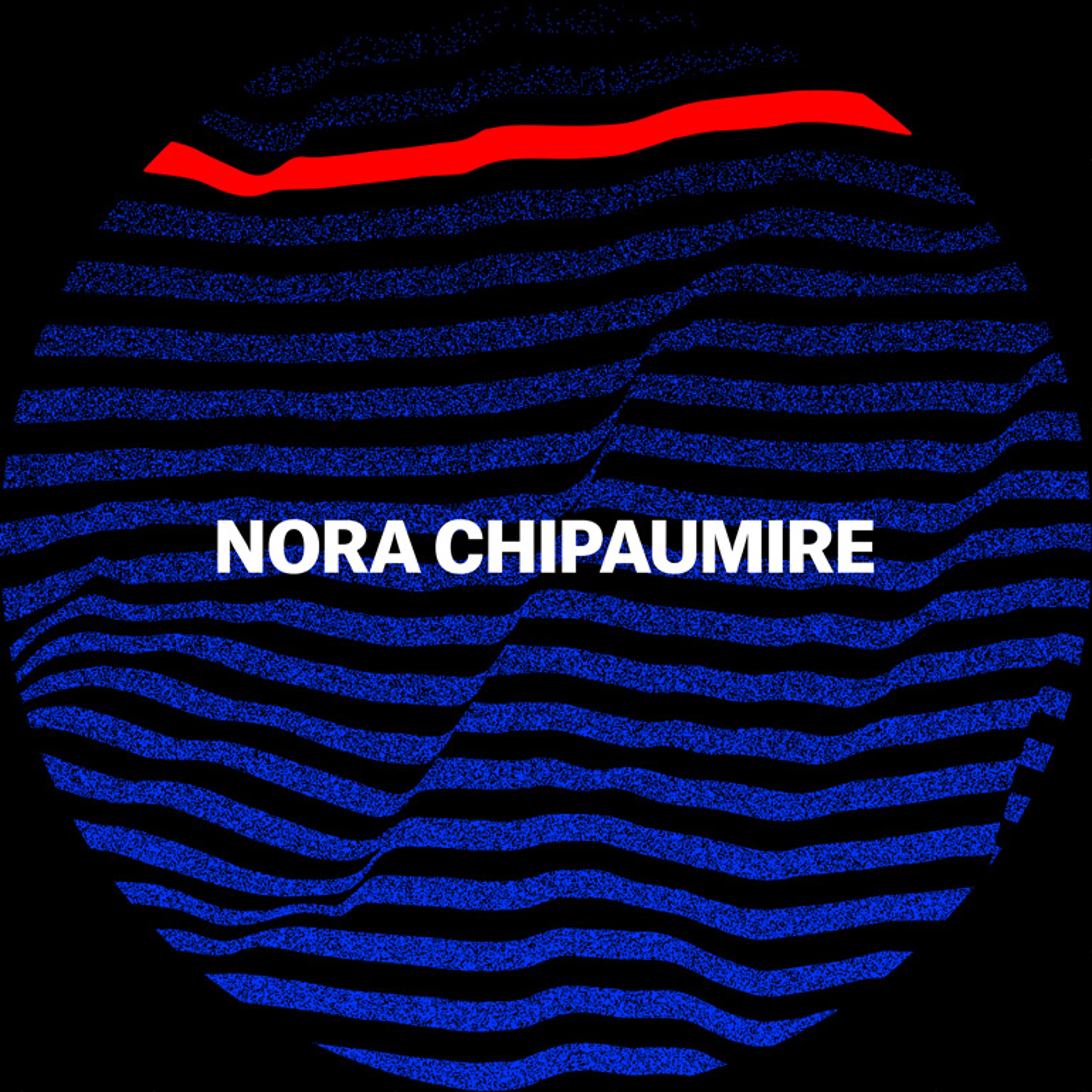


Nora Chipaumire is a choreographer and performance artist, investigating questions of race and gender through her dance performances. Chipaumire bases her choreography on challenging and embracing stereotypes of Africa and the black performing body, art and aesthetics. In creating her performances, she aims to recreate a dynamic language of the body, acknowledging the history of African dance performance while intersecting the history with the avantgarde. In this new language of the body, Chipaumire examines gender and its stereotypes as well, assigning power to both the black male and the black female body and enriching their relationship and exchange with one another.
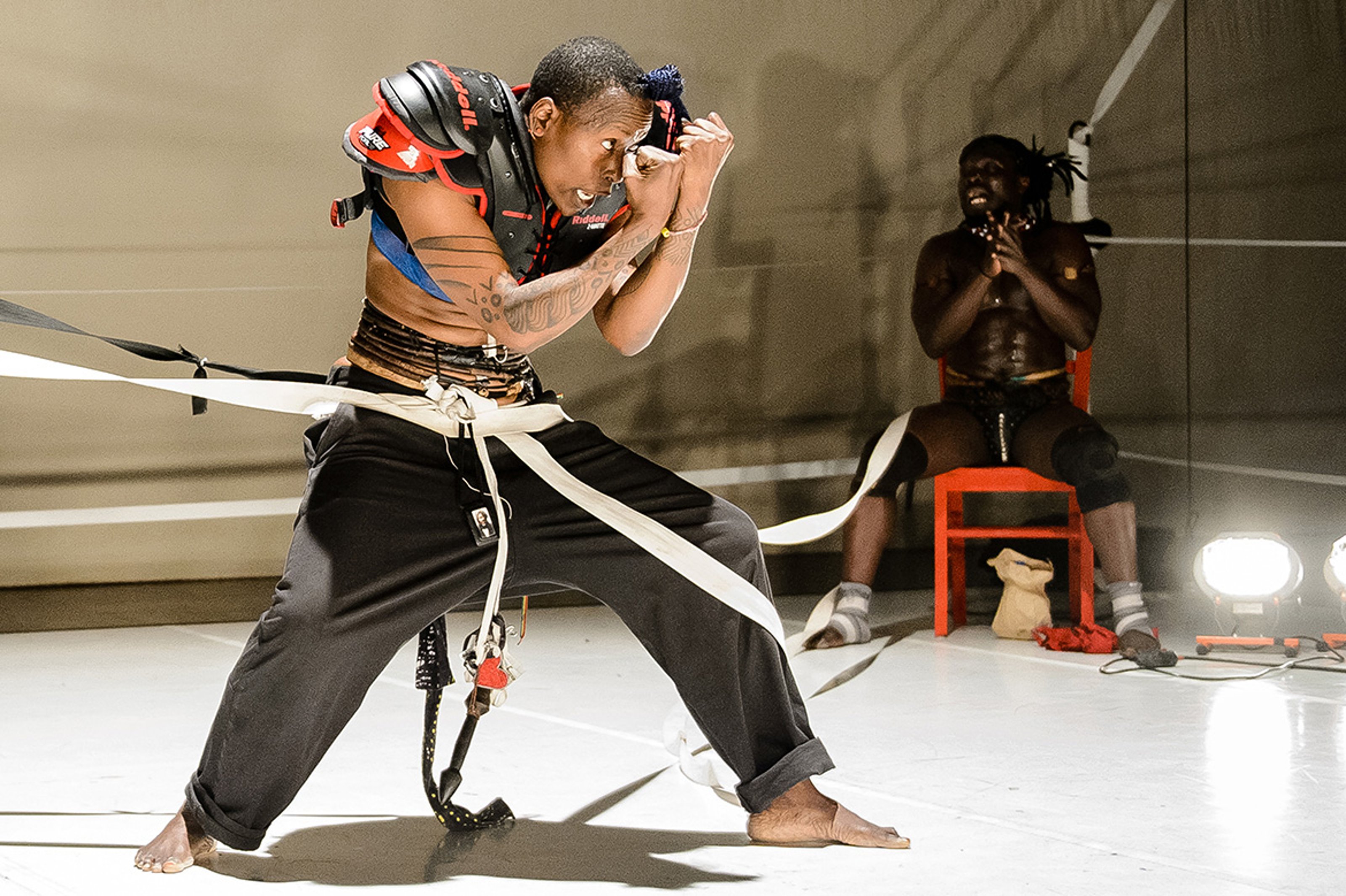
Nora Chipaumire – portrait of myself as my father , 2016. Photo by Gennadi Novash.



Tony Cokes creates text based works through video and sound, recontextualizing found material to criticize capitalist production of the individual. Often incorporating pop and electronic music and interpolating them with texts from critical theorists, like Guy Debord or Alain Badiou, Cokes creates video essays with only text on monochromatic backgrounds, concealing as much as he reveals. Removing the music and the theory from their context, without an imagery to hold on to, Cokes asks us to dig deeper into cultural production and how we absorb the media that’s presented to us.
Tony Cokes – On Non-Visibility, 2018. Exhibited at Greene Naftali Gallery, New York.
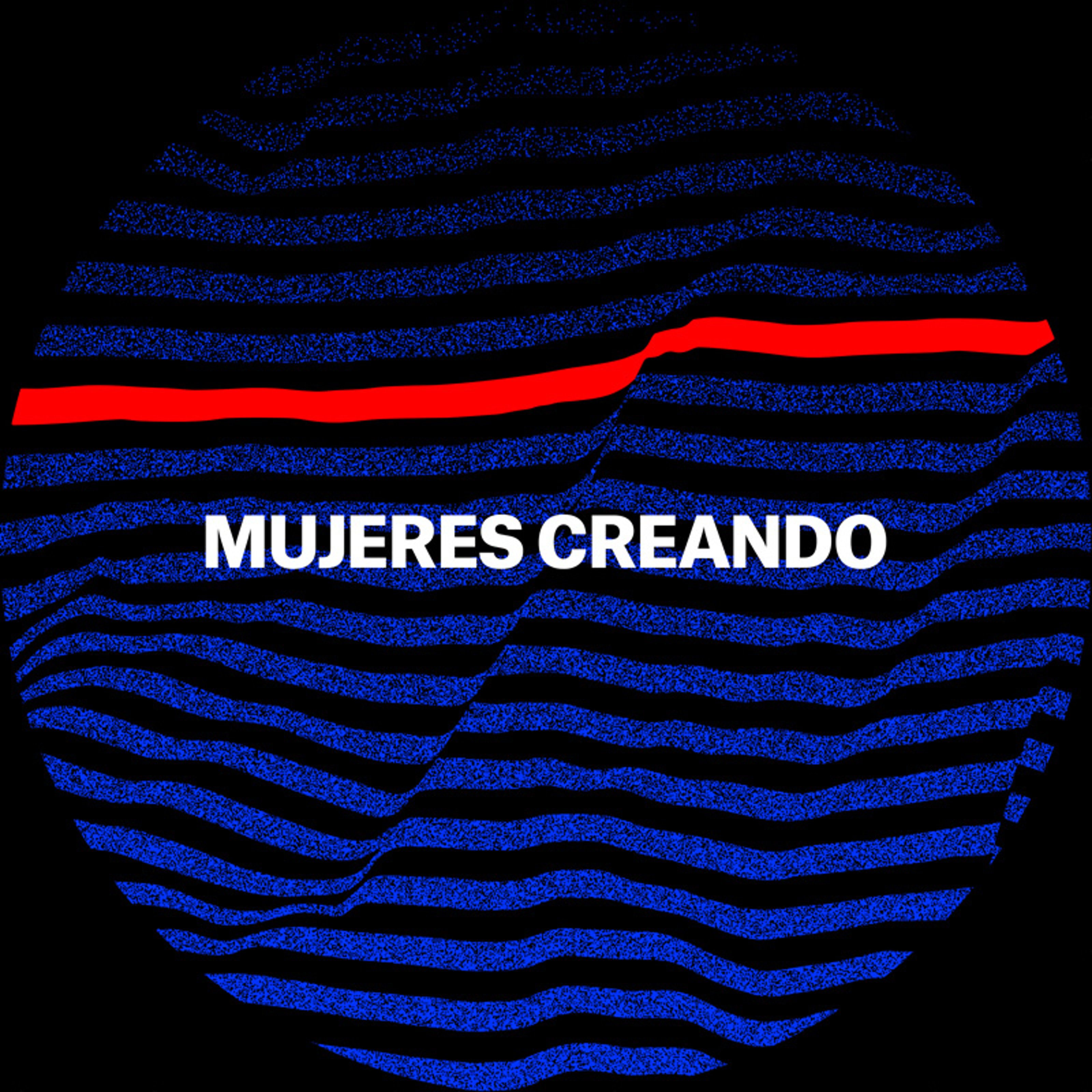


Formed in La Paz, Bolivia in 1990, Mujeres Creando is an anarcho-feminist collective with anti-poverty policies. Taking a stand against traditional Left values of Bolivia at the time, where women were supposed to serve a subservient role according to heteropatriarchal values, activists Maria Galindo, Julieta Paredes, and Monica Mendoza came together to reclaim women’s spaces in activism and art. Two members are also Bolivia’s only openly lesbian activists. Since then, the collective has grown in numbers, including women from different origins, cultural and social backgrounds. Mujeres Creando engage in activism through their newspaper and street art, while also operating a cultural hub.
They helped another organization, Deudora (debtors) made up largely of poor women, protest against crippling interest rates on loans. They helped them carry out the protest and shielded them when the police attacked.
Excerpt from video Mujeres Creando (Women Creating), October 2013 – Directed by Andrés Mardones



Decolonize This Place is a movement based in New York City that organizes around Indigenous rights, black liberation, free Palestine, de-gentrification, and economic inequality. Their actions often take place at museums and cultural institutions and focus on colonialist tendencies within the art world. Decolonize This Place believes “the museum can be made responsive to people rather than to the dictates of capital, that it can foster creativity and memory rather than functioning as a tool to launder the reputations of the ultra-wealthy.”
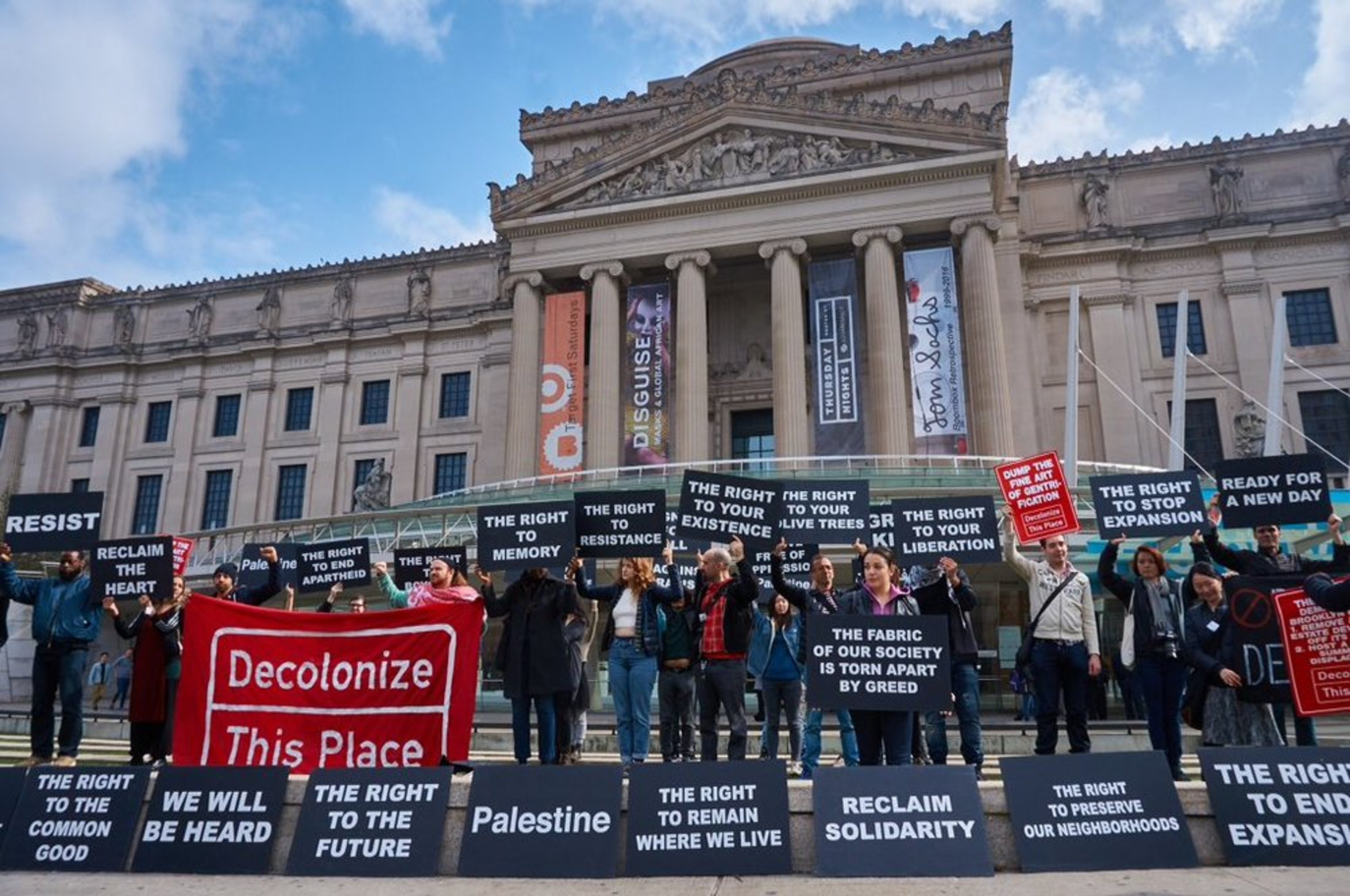



Jeremy Deller is a conceptual artist that creates work on popular culture and politics through documentaries and public engagement. Deller is most famous for his work, The Battle of Orgrave, 2001 a reenactment staged with the participation of veteran coal miners and members of historic societies to recreate a clash between miners and the police in 1984. In 2019, he interviewed pro-Brexit voters in front of the parliament for his video titled “Putin’s Happy.” The video serves as a testament to the rise of right wing populist thought and xenophobia in the UK, with Deller’s own political commentary.
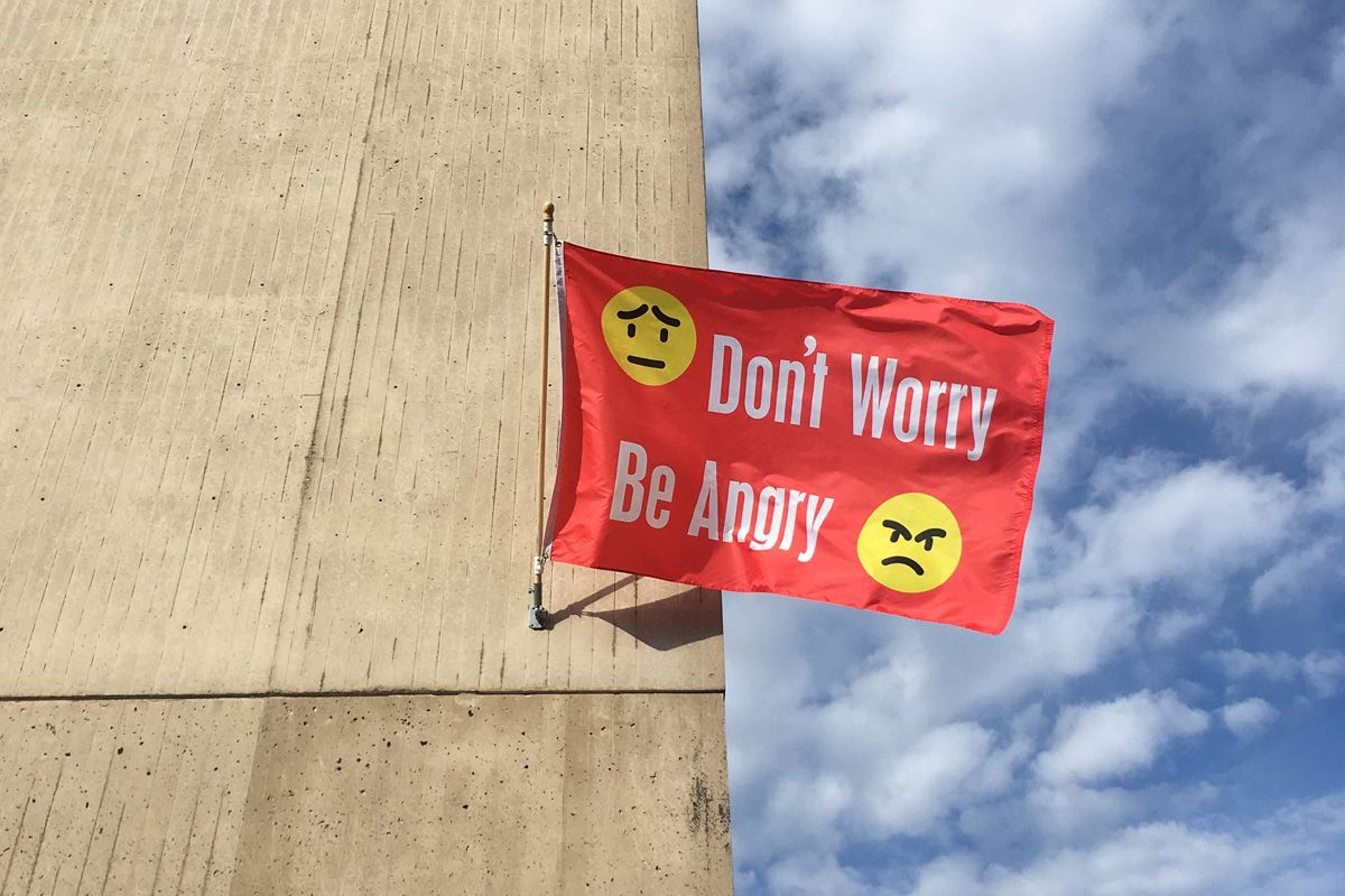
Jeremy Deller – Don’t Worry Be Angry, 2017
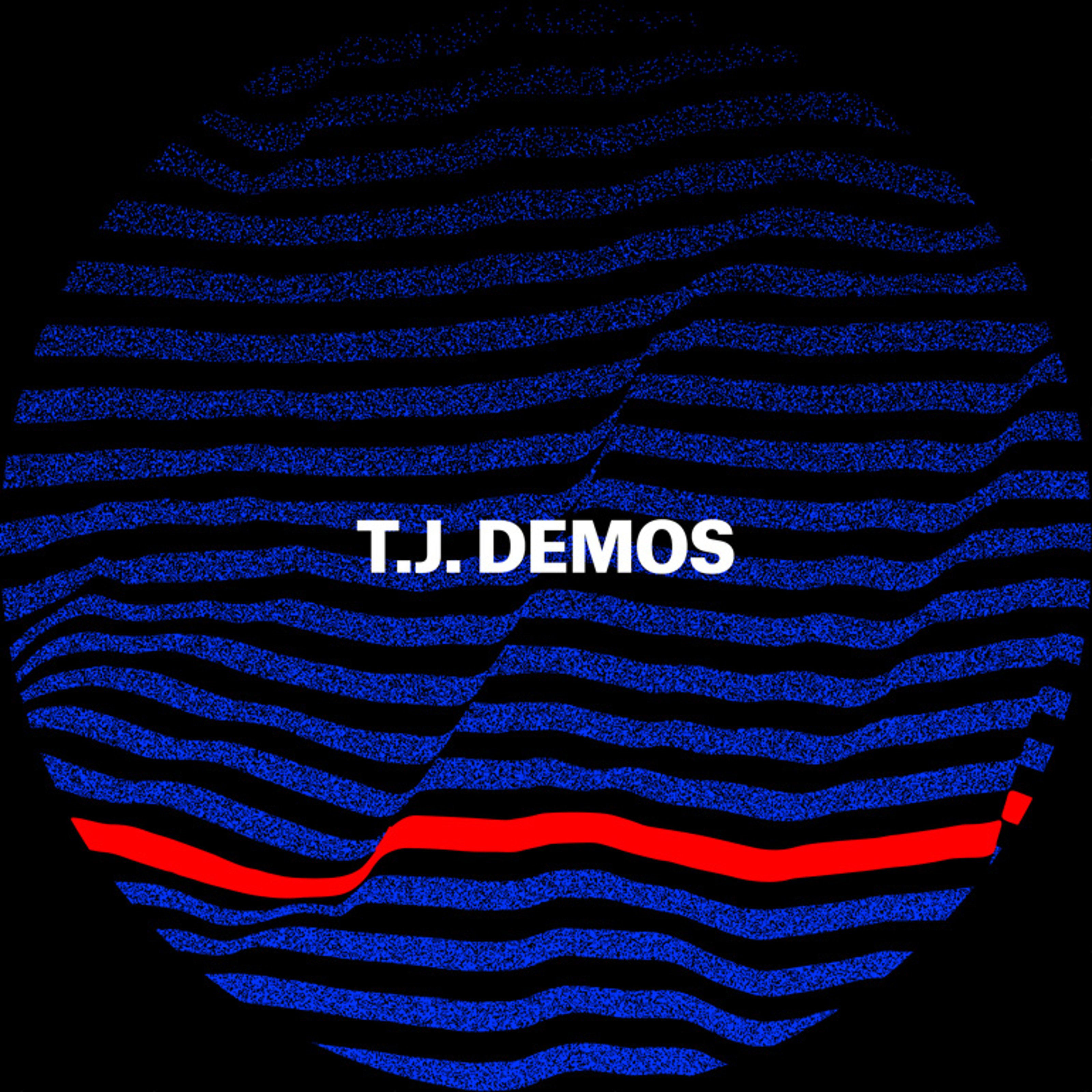


An award-winning writer and Professor of Visual Culture at University of California, Santa Cruz and Director of its Center for Creative Ecologies, T.J. Demos’ work focuses on the intersection of contemporary art, global politics and ecology. During 2018-20, with the Center for Creative Ecologies, Demos has been working on Beyond the End of the World, a Mellon-funded research project, series of art exhibitions, and book project dedicated to the questions: What comes after the end of the world? And how can we cultivate futures of social justice within capitalist ruins?
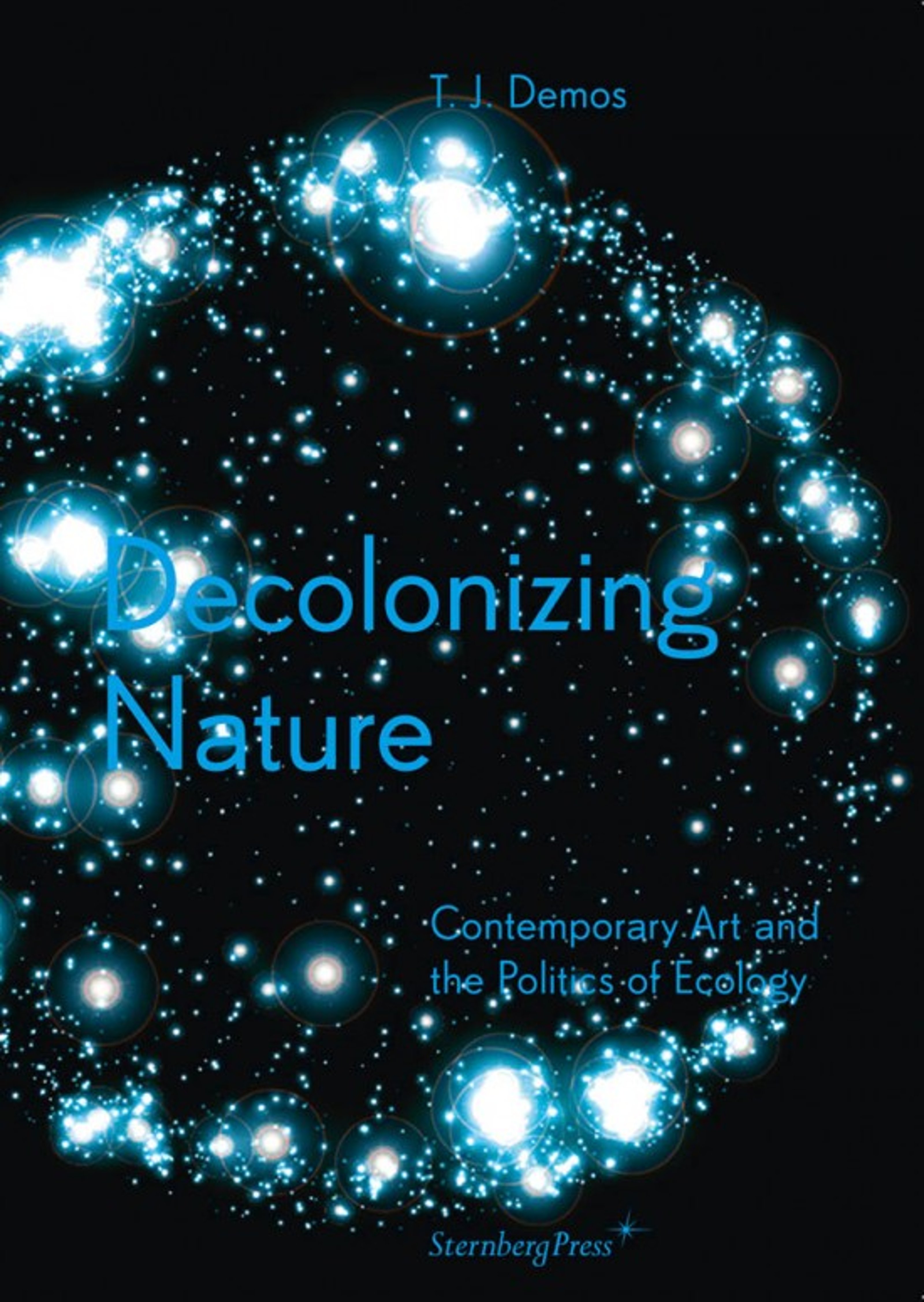
T.J. Demos – Decolonizing Nature: Contemporary Art and the Politics of Ecology. (Sternberg Press, 2016)
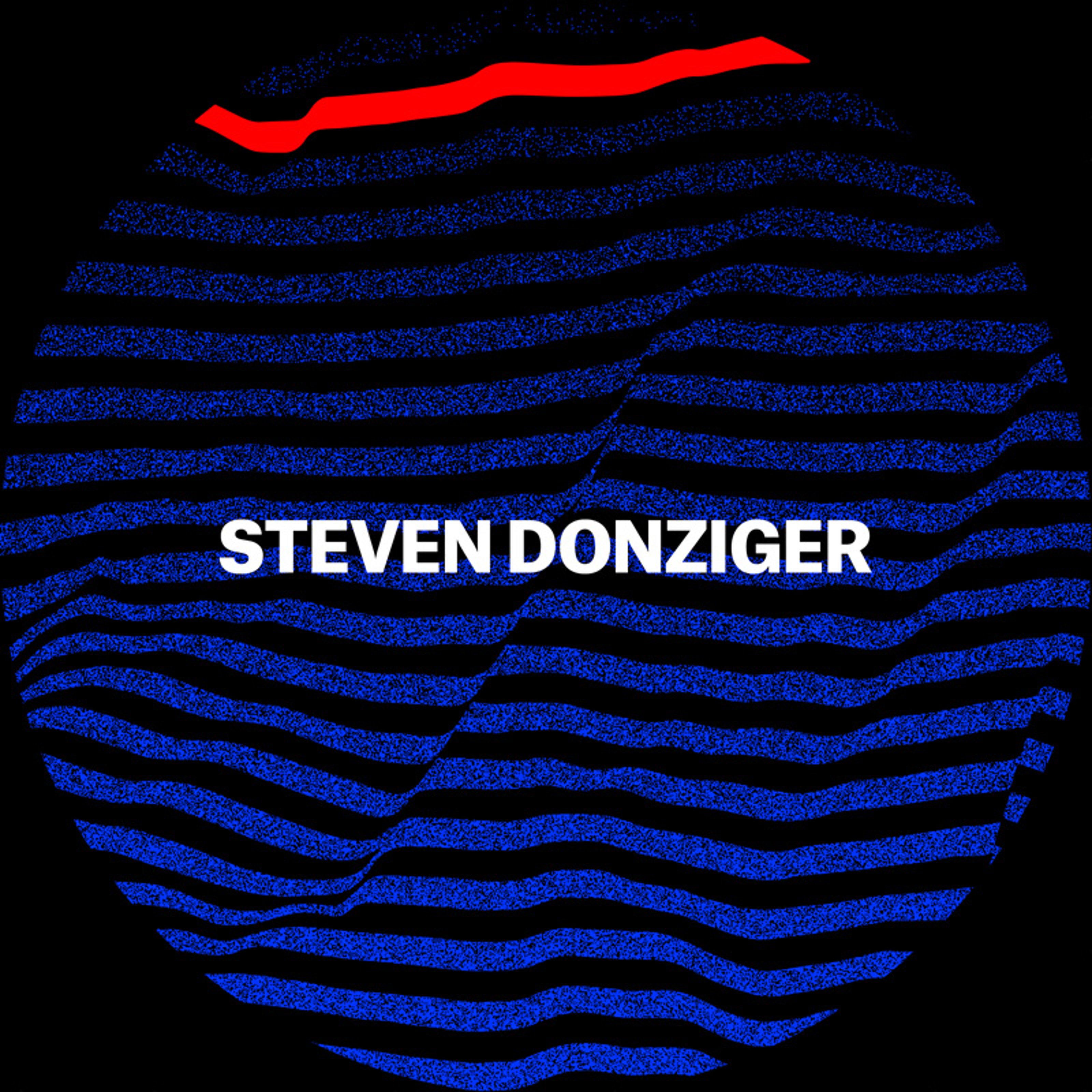


Steven Donziger is an American environmental lawyer who stood up to Chevron Corporation for Ecuador’s indigenous communities and Campesino farmers living in the Amazon Basin, where Chevron caused land pollution. According to reports, Chevron’s waste pits caused an epidemic of cancer and birth defects among the local community, putting their lives and livelihood at incredible risk.

Donziger has been involved in this case since 1993, when he first filed a class-action lawsuit against the company. Finally in 2011, Donziger’s team won the largest court judgement for environmental and human rights violations against Chevron Corporation, a $9.5 billion verdict which Chevron refused to pay, provided no compensation or relief for the community in the Amazon Basin and instead took on Donziger as an adversary. Donziger’s resolve and endurance in this arduous trial to help the community in Ecuador should set a precedent for companies to be penalized for causing environmental disasters around the world.
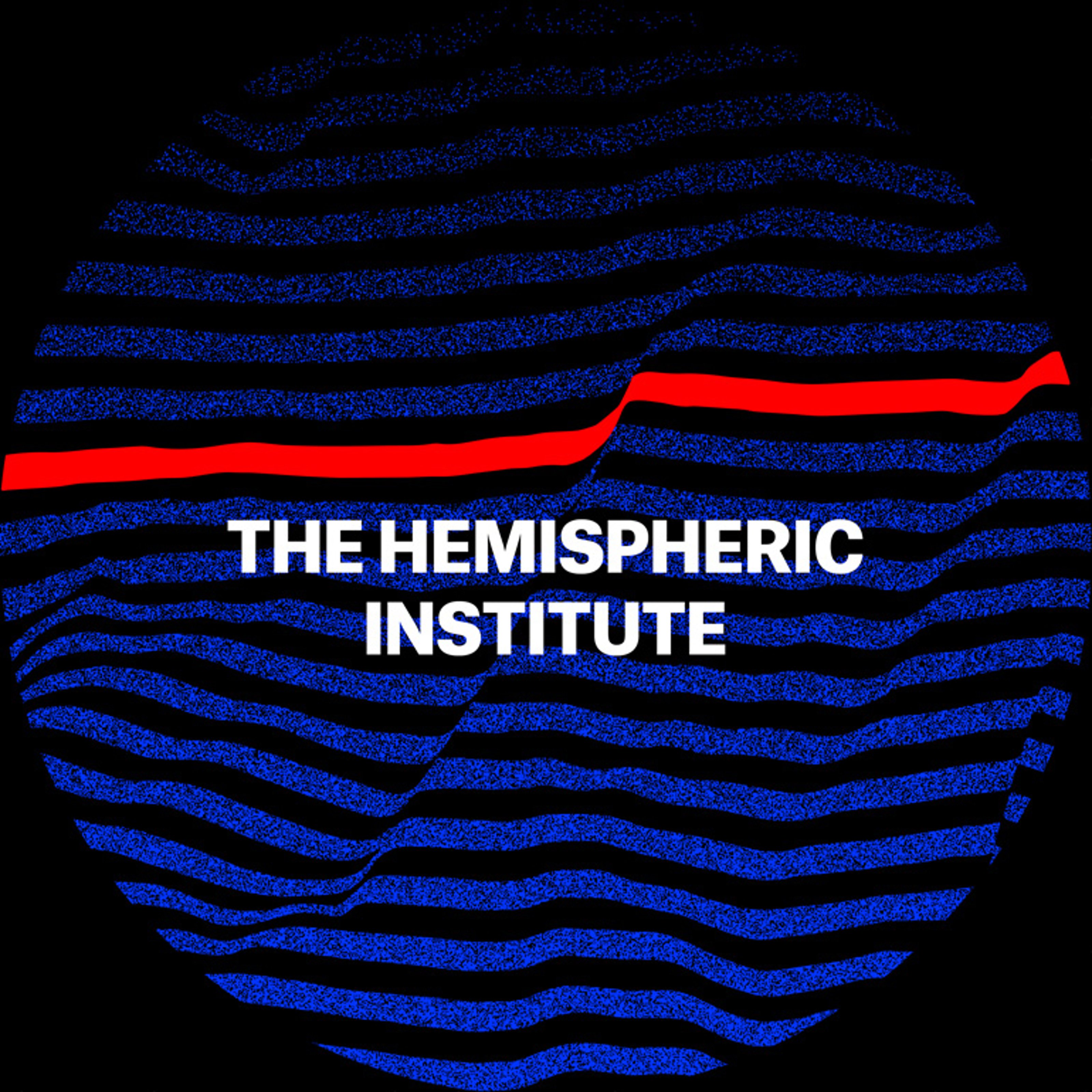


The Hemispheric Institute connects artists, scholars, and activists from across the Americas and creates new avenues for collaboration and action. Focusing on social justice, the Institute researches politically engaged performance, and amplifies it through gatherings, courses, publications, archives, and events. Working at the intersection of scholarship, artistic expression, and politics, the organization explores embodied practice—performance—as a vehicle for the creation of new meaning and the transmission of cultural values, memory, and identity. While its administration is housed at New York University, the Hemispheric Institute comprises over twenty-five member universities and cultural institutions throughout the Americas.
Desvio Coletivo & Coletivo Pi – Blind, 2013 (performance)
Dozens of male and female executives, dressed in business attire, carrying suitcases, bags, cell phones and documents, covered in mud, blindfolded, walk very slowly, blending in with passers-by, destabilizing the daily flow of the São Paolo’s financial and political center. Blind seeks to politically intervene in the city and provoke different readings.
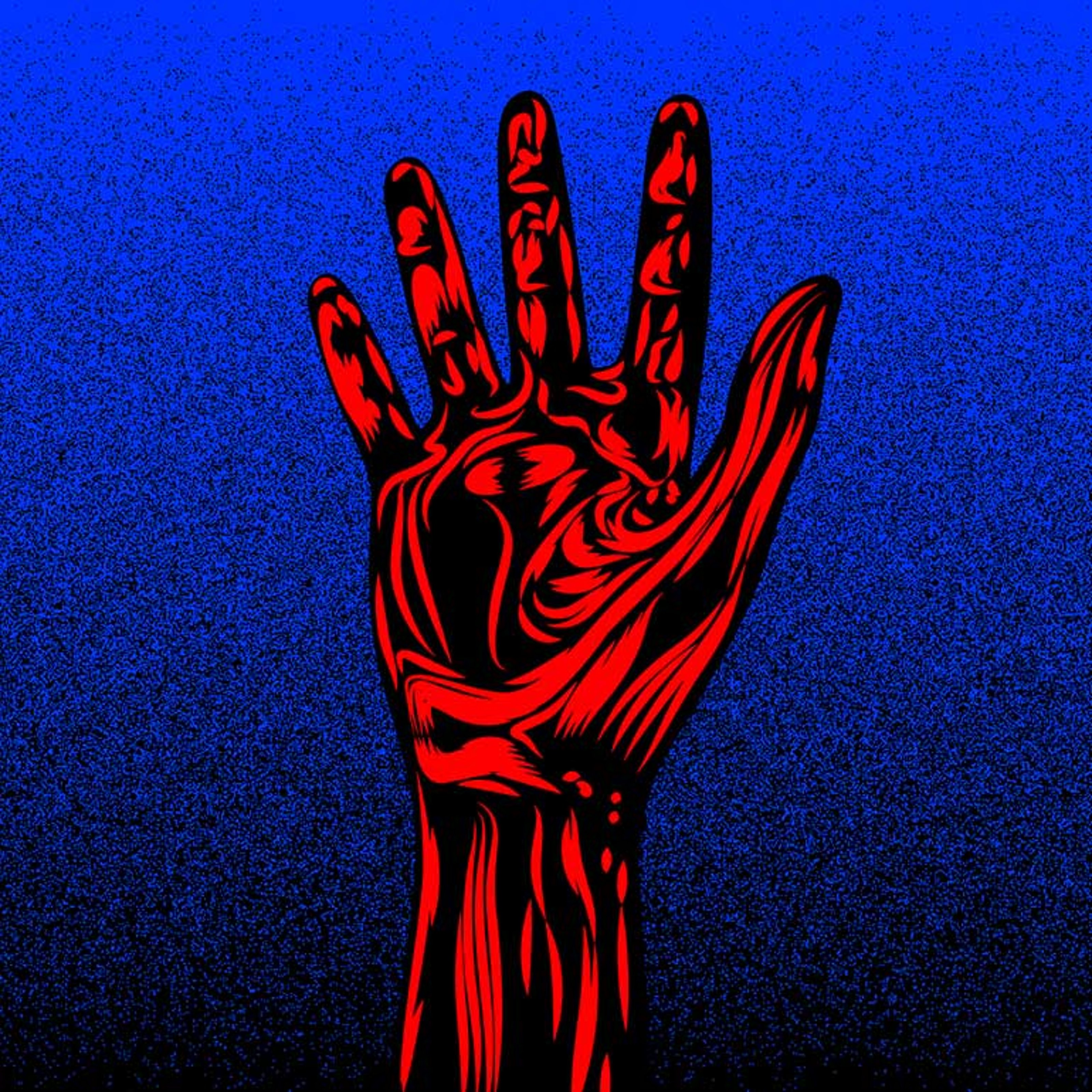


A global movement using nonviolent civil unrest as a method for bringing awareness to climate change and its effects; a curator who circulated a spreadsheet highlighting the vast discrepancies in pay equality, becoming a source of transparency in the arts industry; an artist who criticizes society at large, especially the art market and its institutions; a movement that encourages people to stop taking flights as a means of transport; an artist collective that employs the strategies of the ready-made to criticize the role of artist as a celebrity and artwork as commodity; an artist who pokes fun at the often serious and self-assured attitude of the art world; an artist whose work traces the struggles and turbulent histories of the Chechen people and their conflict with Russia; an artist and documentarian whose work seeks to liberate the distorted histories through which Black life is often viewed; an artist who is committed to the revitalization of poor neighborhoods through combining urban planning and art practices; an artist who is holding arts institutions accountable for where they receive funding.



Extinction Rebellion is a decentralized worldwide movement, using nonviolent civil unrest as a method for bringing awareness on climate change and its effects on health, society and economics. They aim to pressure governments worldwide into declaring a climate emergency and enforce policies to reduce their carbon emissions to zero by 2025. For this, the protest groups gather and occupy the centers of power in big cities to shut them down, to slow down the flow of the city in order to gain attention for their demands.




Michelle Millar Fisher is a curator and an architecture and design historian who formerly worked at MoMA, the Met and the Guggenheim. In 2019, Fisher began circulating a Google Spreadsheet she created, titled Art/Museum Salary Transparency 2019, a shared document on which respondents listed details including the name of their organization, their role, start and end salary and employee benefits. The document, first announced via Fisher’s Instagram account, listed salaries and benefits with gender and race designations. The sheet highlighted the vast discrepancy of pay inequality and became a source of transparency in the arts industry using the data provided by over 1,000 users. Fisher noted that she brainstormed the idea of the spreadsheet with several friends and colleagues and wanted to ensure she is not solely credited.
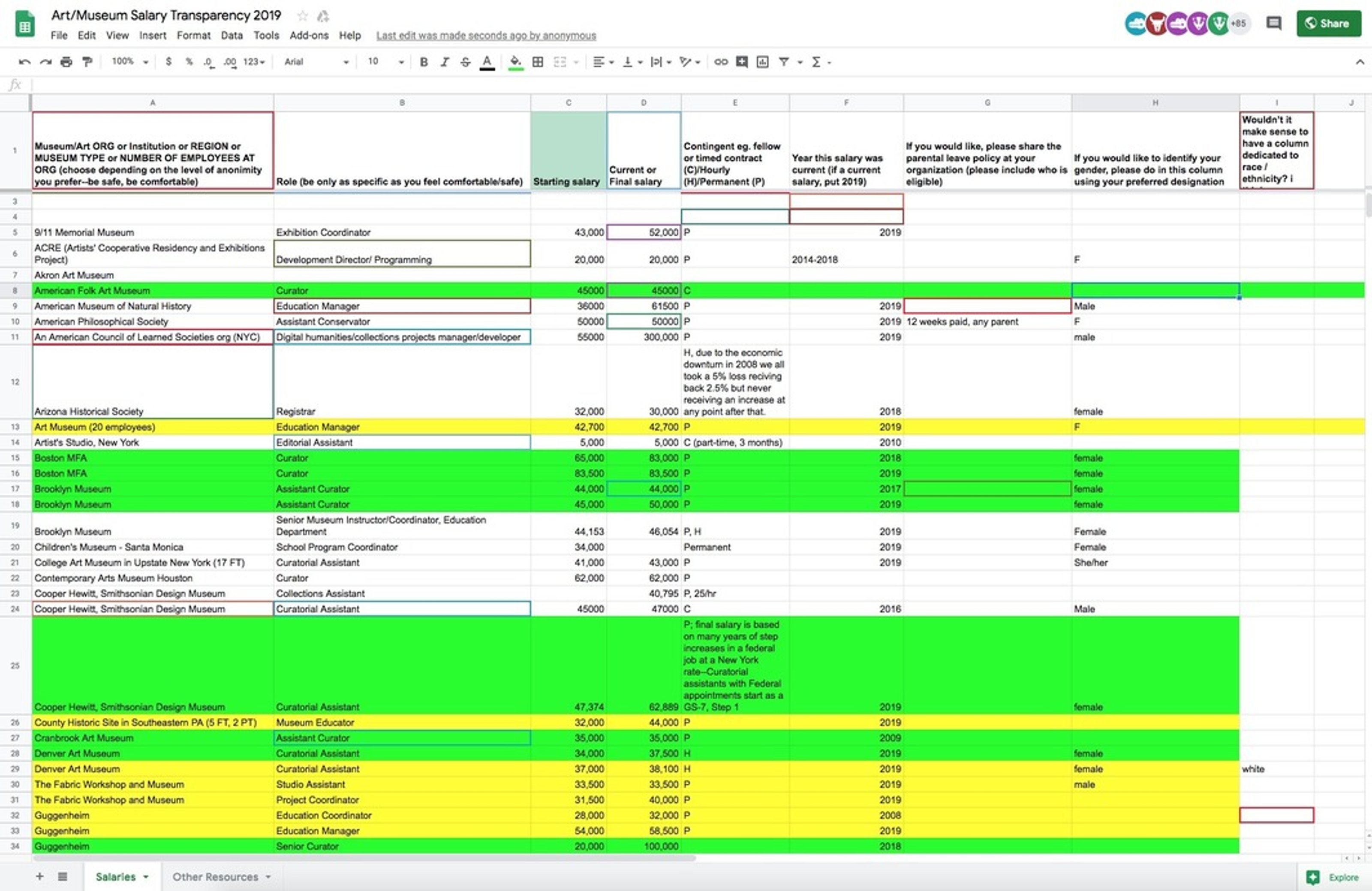



Mark Flood is known for his wry humor on American culture and the contemporary art world. He criticizes society at large, especially the art market and its institutions. While playing in the punk band Culturcide in Houston in his ‘20s, he went to Rice University in Houston and produced art, created posters and flyers. Poster and collage aesthetic can still be seen in his works, especially in his readymade usage. His cultural critiques are sharp, provocative but mature.

Mark Flood – Endless Column, 2012. Courtesy Zach Feuer Gallery.
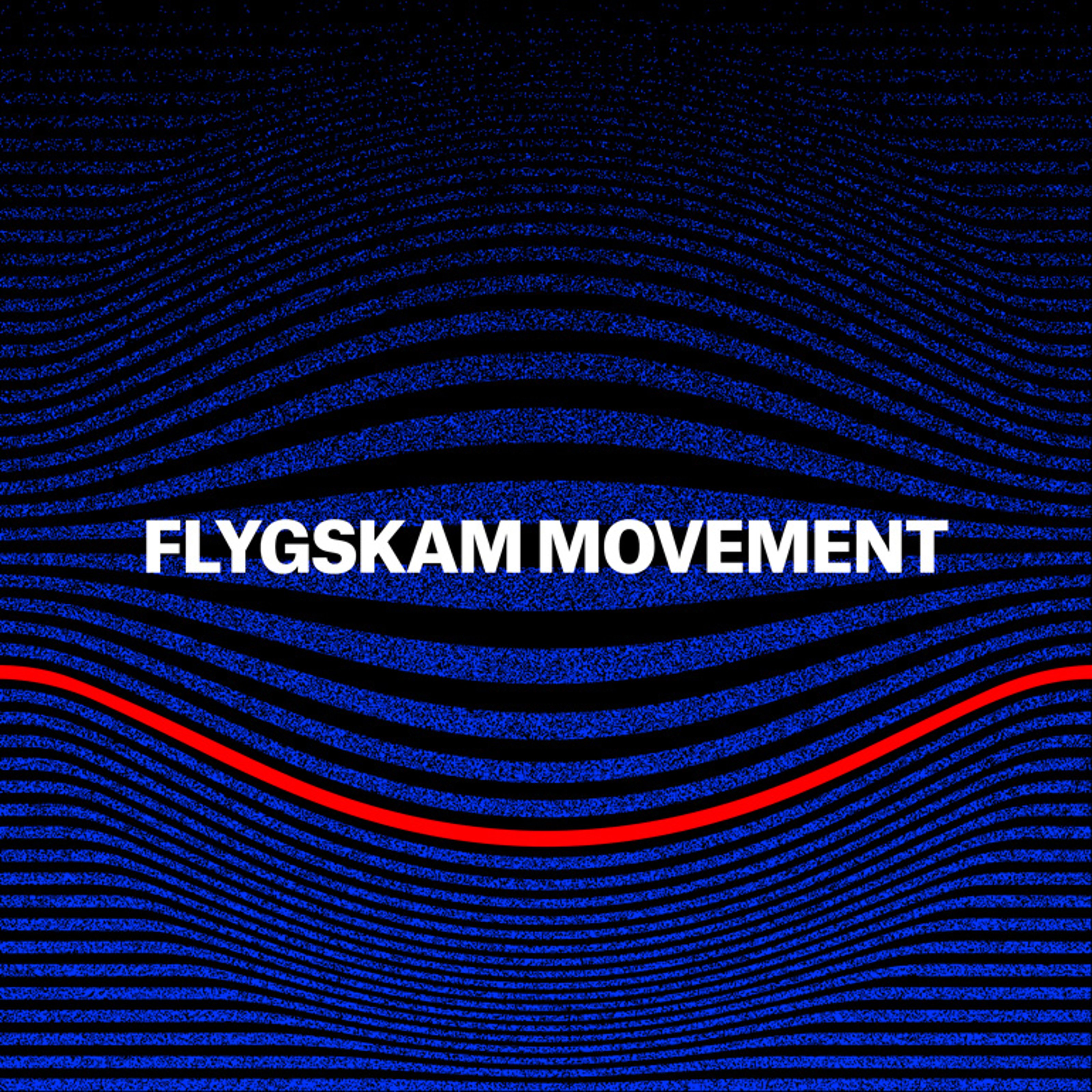


The Swedish word Flygskam is translated as ‘flight-shaming’ and the FLYGSKAM Movement, which originated in Europe, encourages people to stop taking flights as a means of transport—even suggesting that people should feel embarrassed or ashamed because of the negative impact air travel has on the environment. The movement began when five Swedish celebrities including Greta Thunberg’s mother, Malena Ernman, wrote a newspaper article pledging to give up air travel for the sake of the environment. Since then, statistics have shown that the percentage of people who travel by plane has dropped 4% and those who travel by train has increased 5% in the last year. The movement has not only affected air carriers but also people’s overall consumption habits in Sweden.
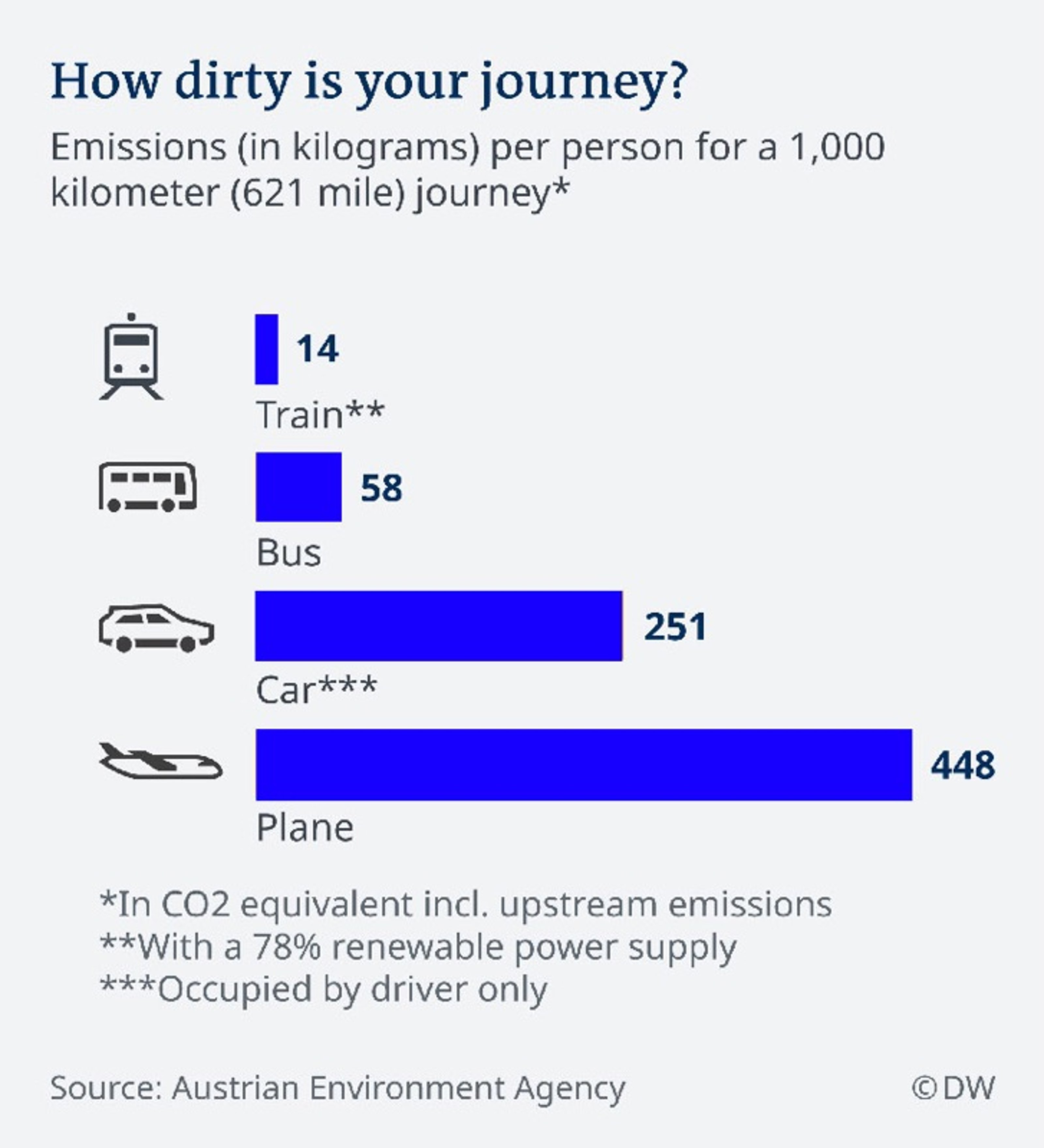
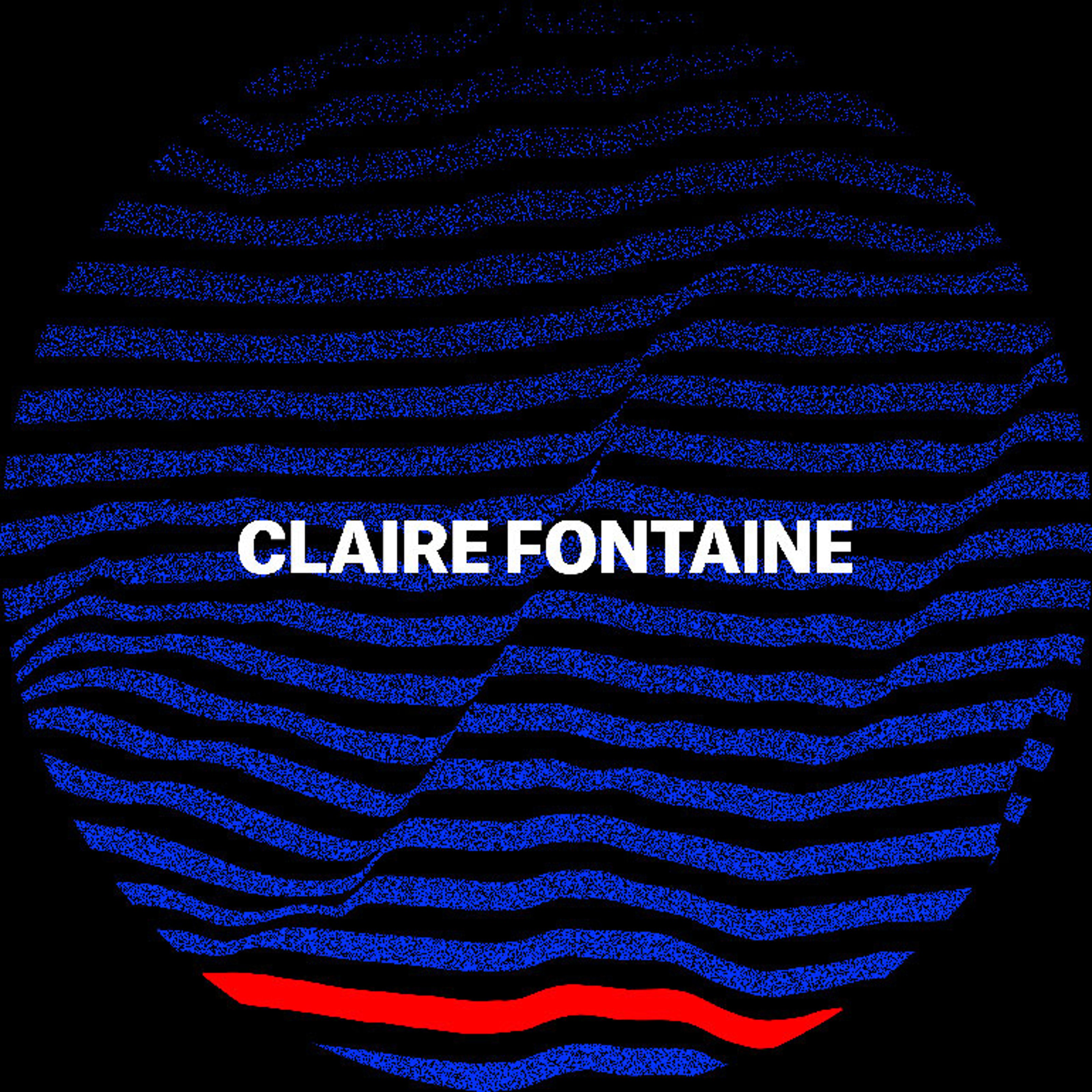


Claire Fontaine is an artist collective, founded in 2004. Her assistants are Fulvia Carnevale and James Thornhill. After lifting her name from a popular brand of school notebooks, Claire Fontaine declared herself a “readymade artist’ and began to elaborate a version of net-conceptual art that often looks like other people’s work. Working in neon, video, sculpture, painting and text, her practice can be described as an ongoing interrogation of the political impotence and the crisis or singularity that seem to define contemporary art today.
Claire Fontaine – Capitalism Kills (Love), 2008
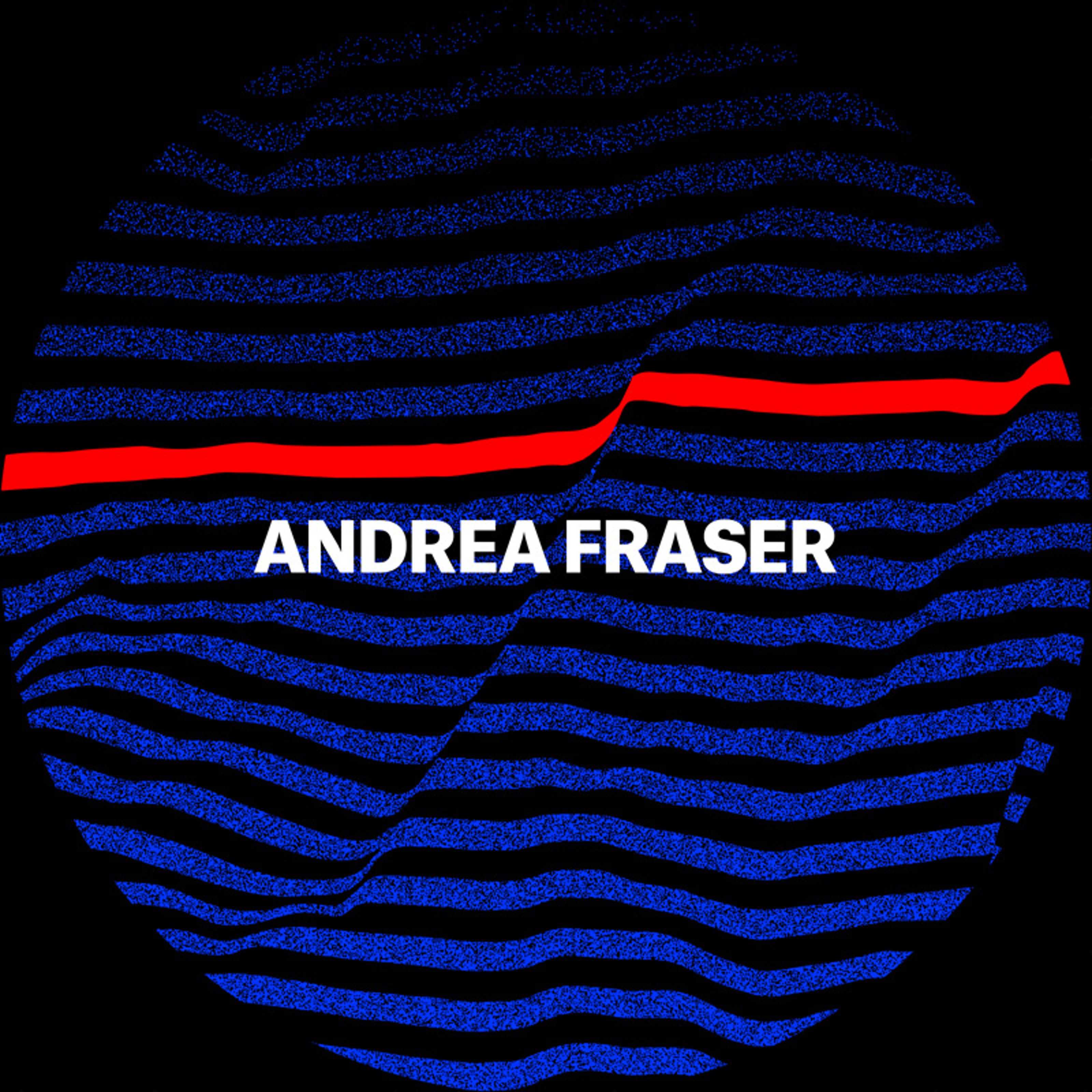


Andrea Fraser’s pioneering work of performances and videos take up the groundwork laid down by a generation of artists before her – Asher, Buren, Knight, Piper included who sought to intervene with the conditions of exhibiting and presenting – to new terrain. Many of her pieces use humor and satire to poke fun at the often serious and self assured attitude of the art world, yet also use those attributes to break it down critically and insightfully in a rigorous and inventive way. While her works have achieved nothing less, her practice also includes writing, with many of her published texts contributing to the intelligent, witty and razor sharp attitude that constitutes her work.
As the Economist noted, ‘Ms. Fraser is well represented in public collections in Britain, France and Germany, but considered too daring for an American retrospective.’
The work shown below, Untitled (2003), is a still from a video piece exhibited at the Friedrich Petzel Gallery in New York City in 2004. In the hour-long video, Fraser has sex on screen with an art collector who paid $20,000 to participate in the artwork. Fraser received a lot of criticism for the work, including “being a whore,” however the artist was able to produce a documentation of the act while critiquing the art world… and for a profit.
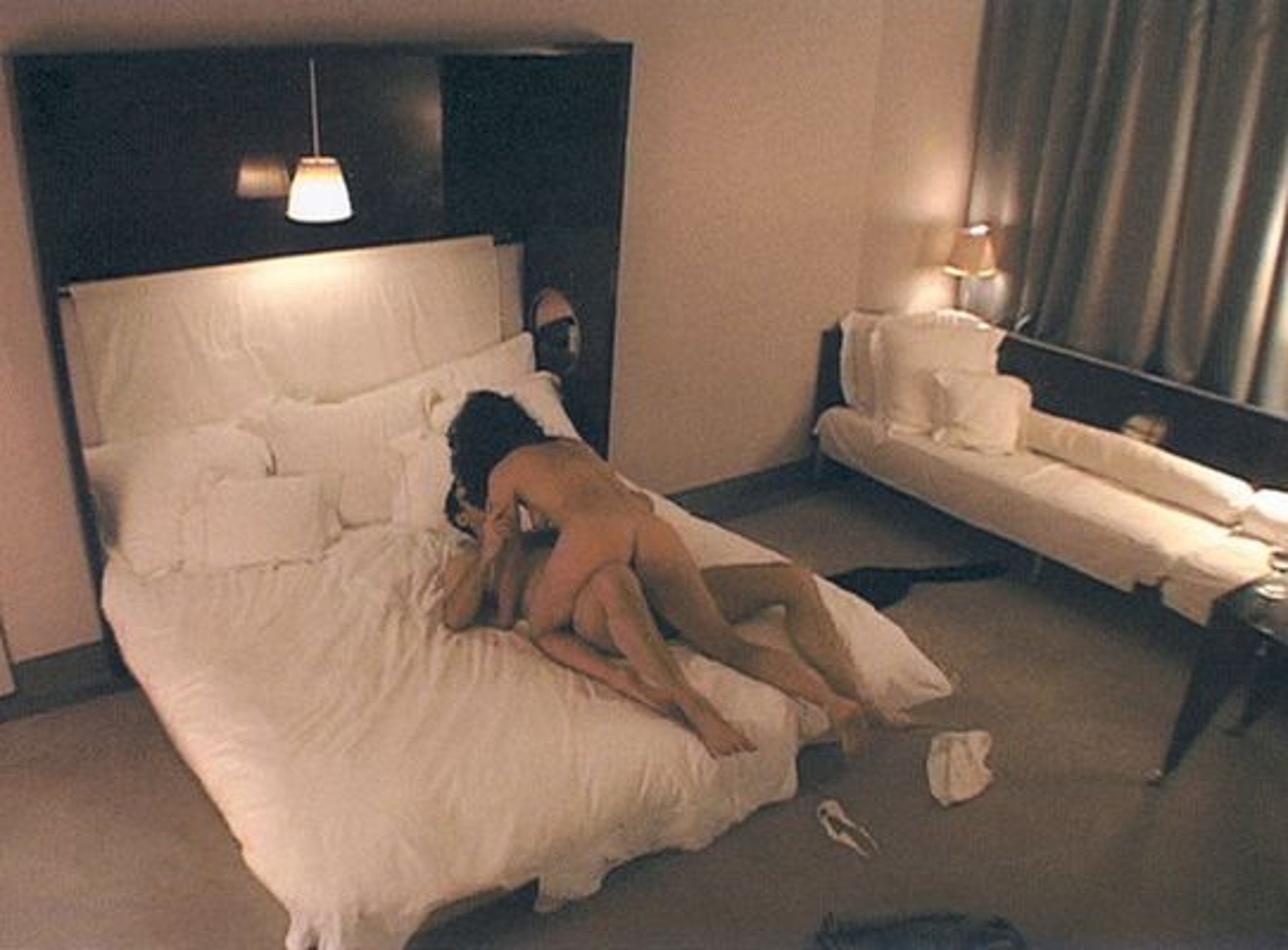
_Andrea Fraser – Untitled, 2003 (still from video)
_



Aslan Gaisumov works primarily with video and installation, with a focus on history and collective memory through personal stories. Gaisumov’s work traces the struggles and turbulent histories of the Chechen people with Russia, one of the world’s longest ongoing conflicts, spanning three centuries. His works are visual stories that are also commentaries on Russia’s erasure of history. In Keicheyuhea (2017), Gaisumov’s grandmother returns to her homeland on the Caucasus mountains 73 years after her family has been forcibly displaced, during the Deportation of Chechens and Ingush people by the Soviet government. She recounts stories about her life on the mountains and her memories of the exile years.
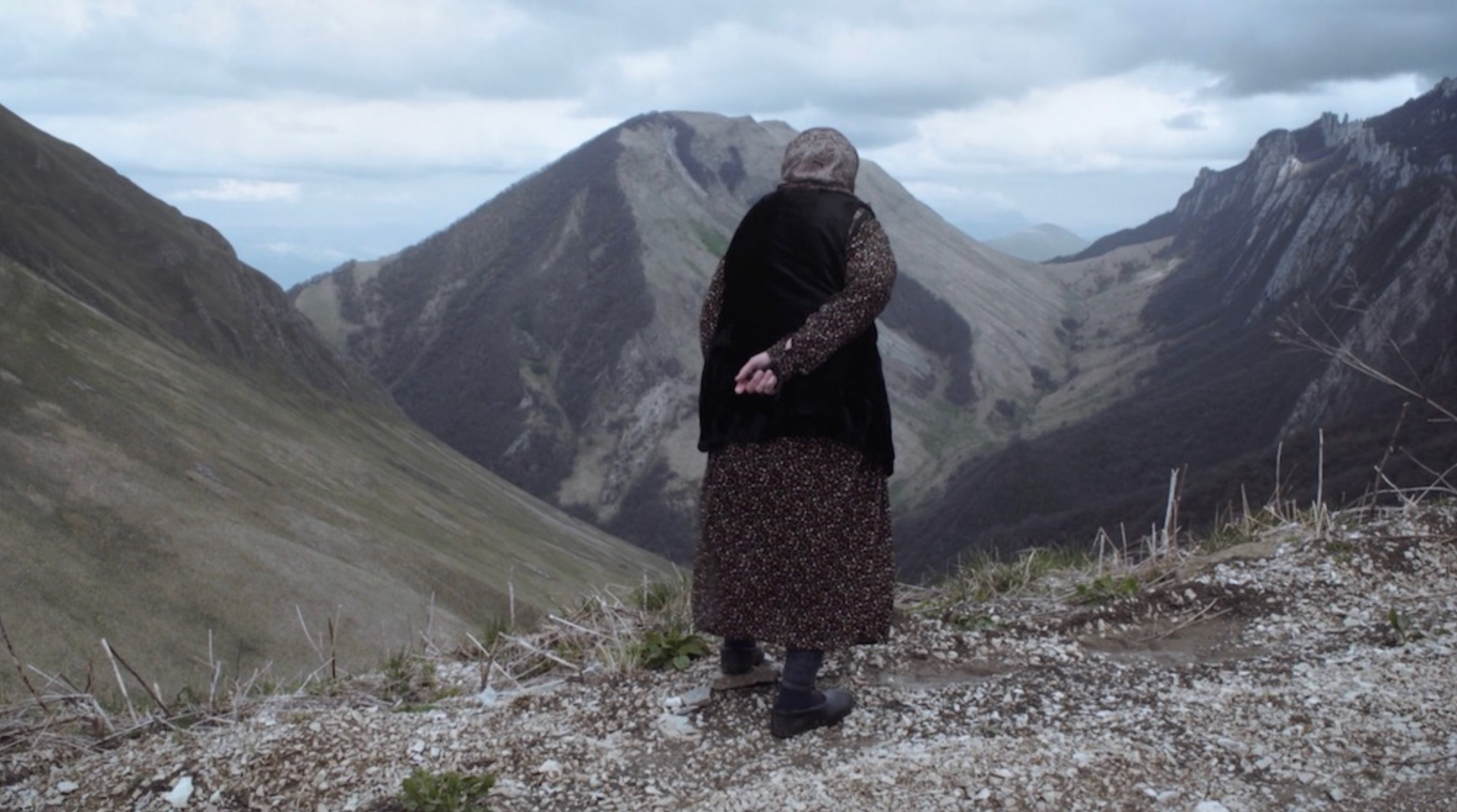
Aslan Gaisumov, Keicheyuhea (video still), 2017. Courtesy the artist.
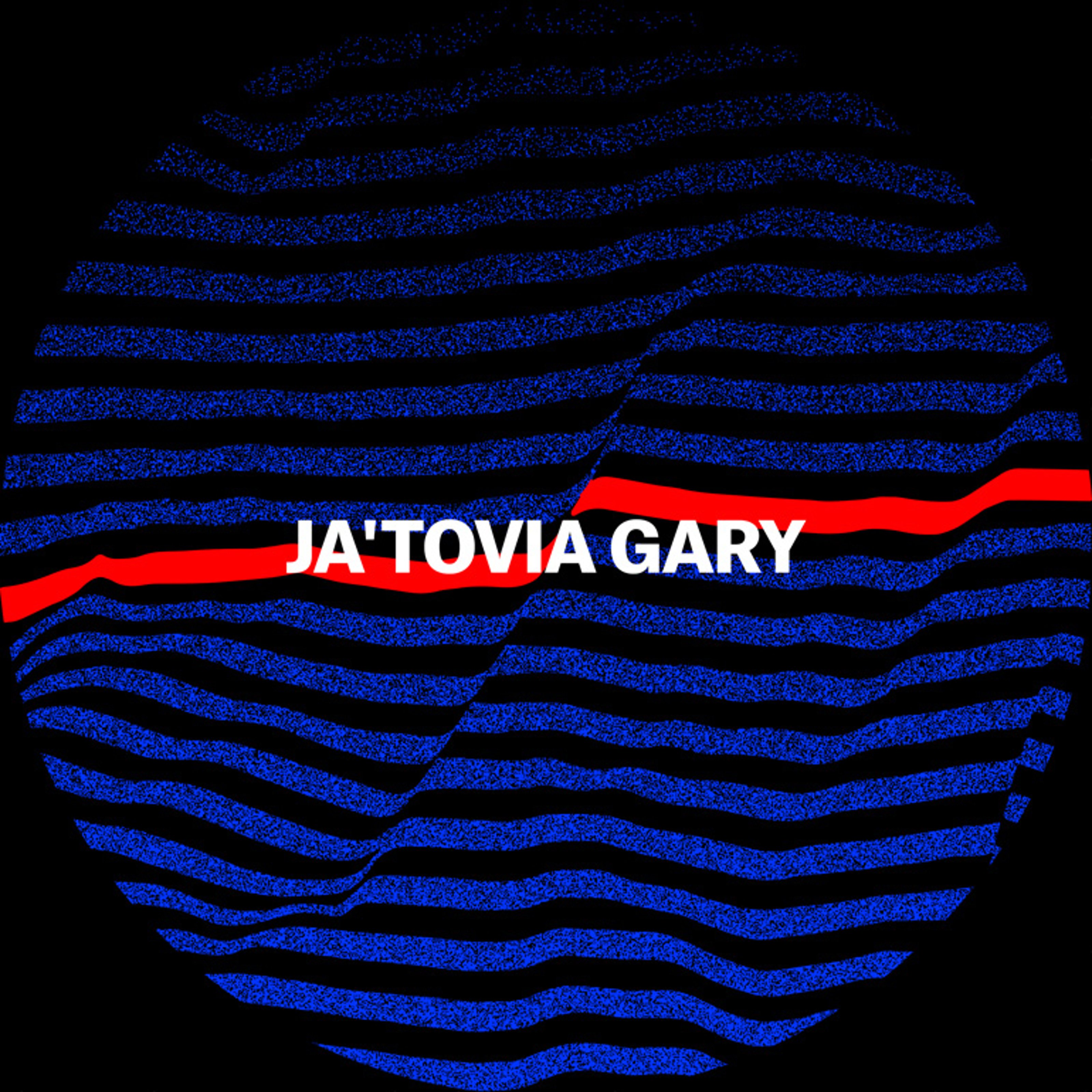


Over the past five years, Ja’Tovia Gary has become one of the most closely-watched documentarians in the art and film worlds alike through her combination of experimental filmmaking and what she describes as a “radical Black femme gaze.” Through documentary film and experimental video art, Gary’s work seeks to liberate the distorted histories through which Black life is often viewed while exploring the ways in which power structures shape our perceptions around representation, race, gender, sexuality, and violence. Gary is a founding member of the New Negress Film Society, a collective of black women filmmakers working to build a community while raising awareness and telling the stories of black female voices in the film industry.
**

**
Ja’Tovia Gary – An Ecstatic Experience, 2015 Courtesy the artist



Theaster Gates is an artist and professor at the University of Chicago in the Department of Visual Arts. He creates work that focuses on space theory, land development, sculpture and performance. Drawing on his interest and training in urban planning and preservation, he redeems spaces that have been left behind. While recirculating art-world capital, he cleverly upturns art values, land values, and human values. He is committed to the revitalization of poor neighborhoods through combining urban planning and art practices.

Theaster Gates – Line Drawing for Shirt and Cloak, 2019 (restitched moving mats, still rack, bronze) Courtesy Regen Projects.
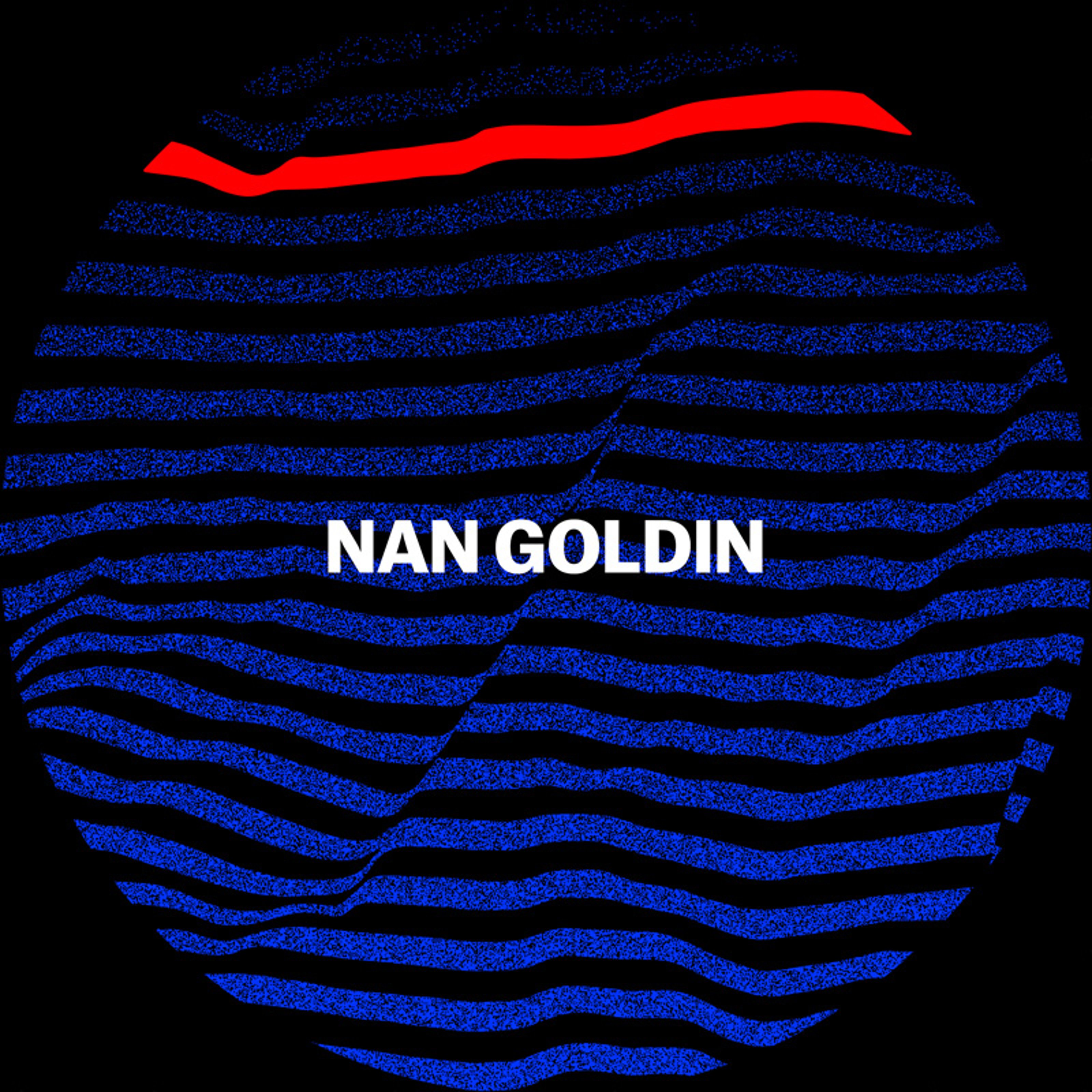


Nan Goldin is an acclaimed photographer, most known for her intimate photos of herself and her close circle, documenting their lives during the 80s while also creating poignant images that tell stories of addiction, of the HIV crisis and sexual violence. Her candidness in presenting these photographs to the viewer influenced many photographers that came after her.
Goldin’s frankness about her personal life and addiction carries onto her activism. Seeing many of her friends die from opioids and being rehabilitated herself for an addiction to Oxycontin, Goldin has taken a firm stance against pharmaceutical companies, namely the Sackler family, who own Purdue Pharma, a company responsible for the opioid crisis in the US. The Sackler family invests heavily in the arts and arts institutions like the Metropolitan, Guggenheim, National Portrait Gallery, Tate Modern and the Louvre. Through her initiative P.A.I.N. Sackler, Goldin has organized protests in front of these institutions, calling for them to divest from the Sackler’s donations. As an accomplished artist, Goldin speaking out against her industry peers and holding arts institutions accountable for where they receive funding and who they promote is a powerful statement.
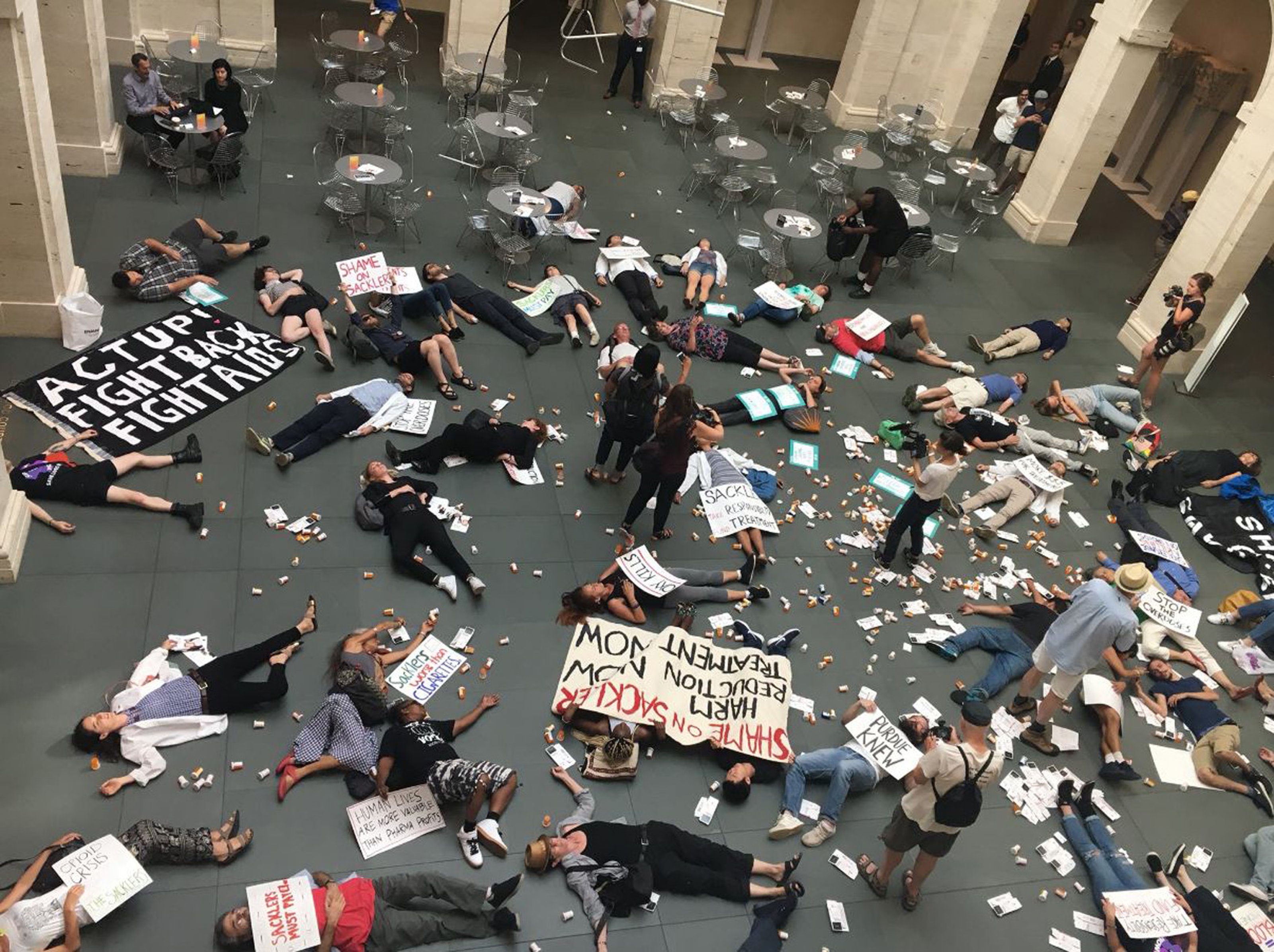
P.A.I.N. Sackler Die-in Protests
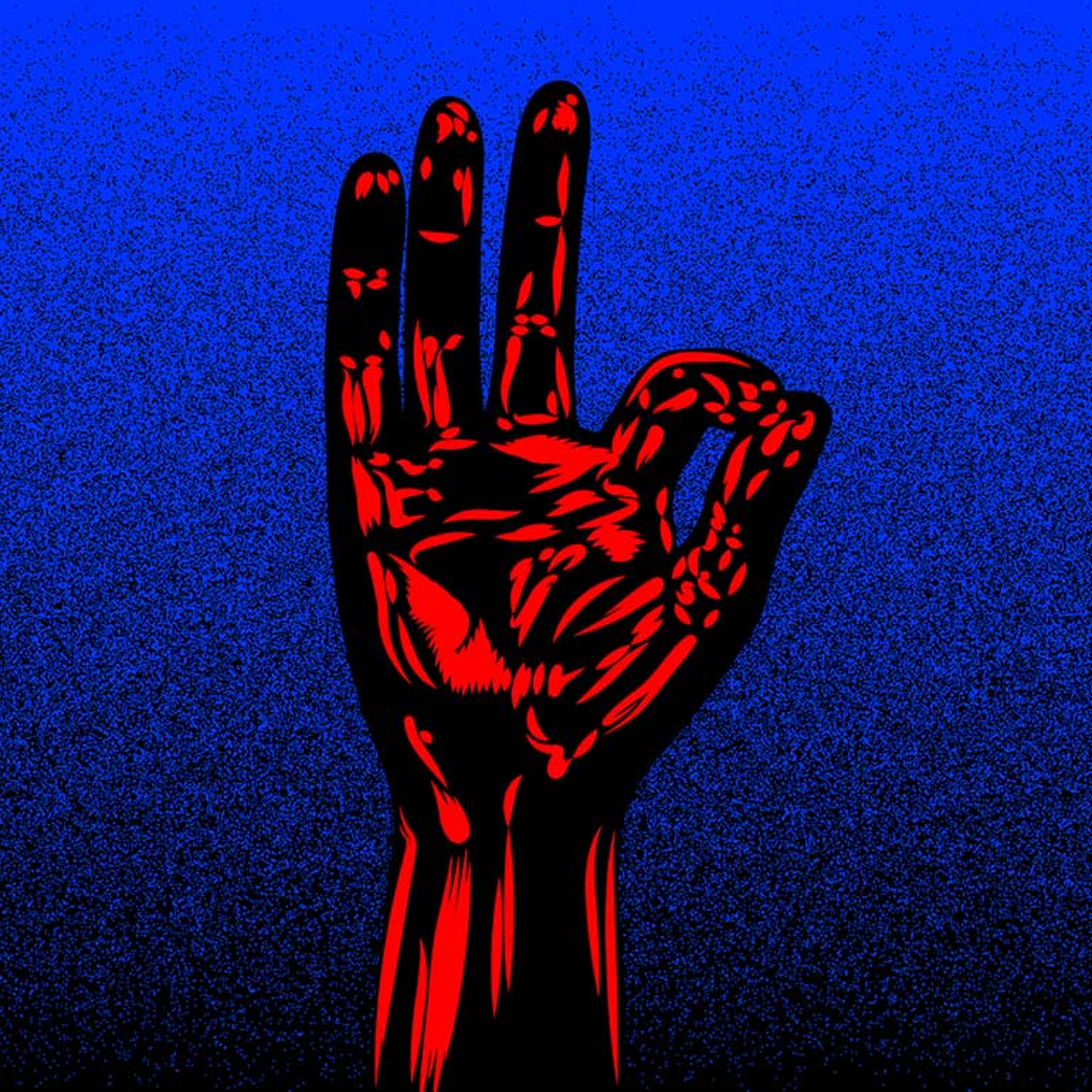


A journalist who reports on how technology and state policies make citizens vulnerable to covert operations run by country officials; a philosopher whose intelligent critique mines previously unchartered territory; a photographer focusing on China’s rapid industrialization and some of the most significant social, health, and environmental issues facing his country today; an anonymous feminist group devoted to fighting sexism and racial inequality in the art world; an artist whose art is based on how information is transmitted between humans and how it shapes their perception; an artist who is a leading exponent of institutional critique, particularly targeting funding and donations given to museums and galleries; global healthcare professionals keeping us safe during the COVID-19 outbreak; an artist who creates works that take a stand against violence towards Native communities in the United States; an artist who became an icon in the art world through her text-based installations; chief of the Wet’suwet’en people who, in order to protect their land, shut down railways across Canada during what came to be known as ‘Shut Down Canada’.
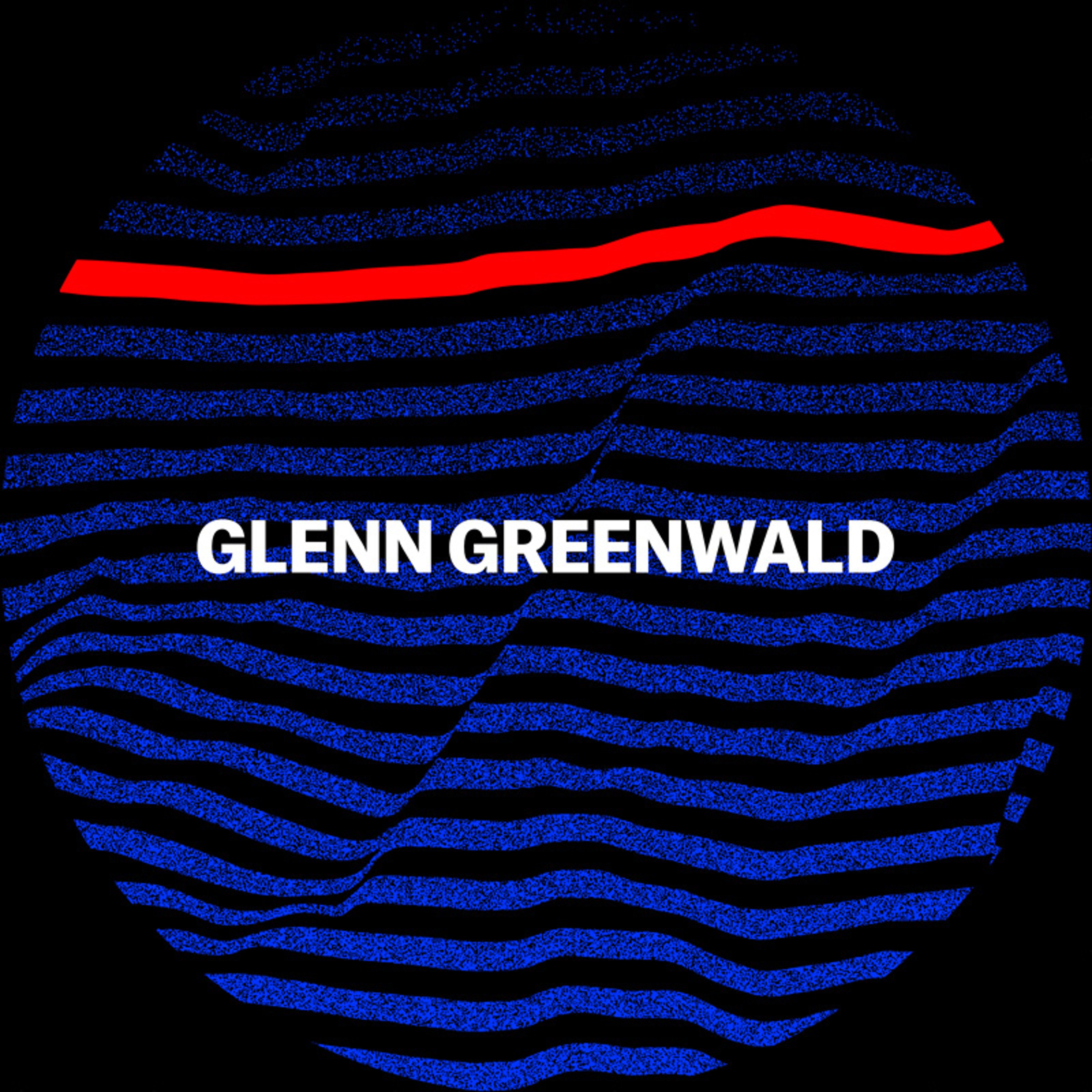


Glenn Greenwald is an attorney, author and journalist most known for publishing Edward Snowden’s findings from the NSA and state surveillance on civilians, winning a Pulitzer Prize for his reporting on this case in 2014. Greenwald’s focus in reporting has been on national security and surveillance; how technology and state policies make citizens vulnerable to these covert operations run by country officials. He has also been outspoken about Jair Bolsanaro’s policies in Brazil, where he currently resides, and has revealed important documents and correspondences, shedding light on a current government controversy in Brazil, Operation Car Wash.
Excerpt from the documentary Citizenfour, 2014. Directed by Laura Poitras



Boris Groys is the author of a wide number of books including I__n the Flow (2016); Introduction to Antiphilosophy (2012); Going Public (2011); History Becomes Form: Moscow Conceptualism (2010); The Total Art of Stalinism (1992); and The Total Enlightenment: Conceptual Art in Moscow 1960-1990 (2008). His intelligent critique mines previously unchartered territory and when it does not, it creates new empirical findings in already broken ground. Art, Groys writes, is produced and brought before the public in two ways—as a commodity and as a tool of political propaganda. In the contemporary art scene, very little attention is paid to the latter function. Groys’ forthcoming book, published by MIT, is another pertinent book for Collecteurs – titled Logic of the Collection, it examines the logic of collecting and storing works of art.
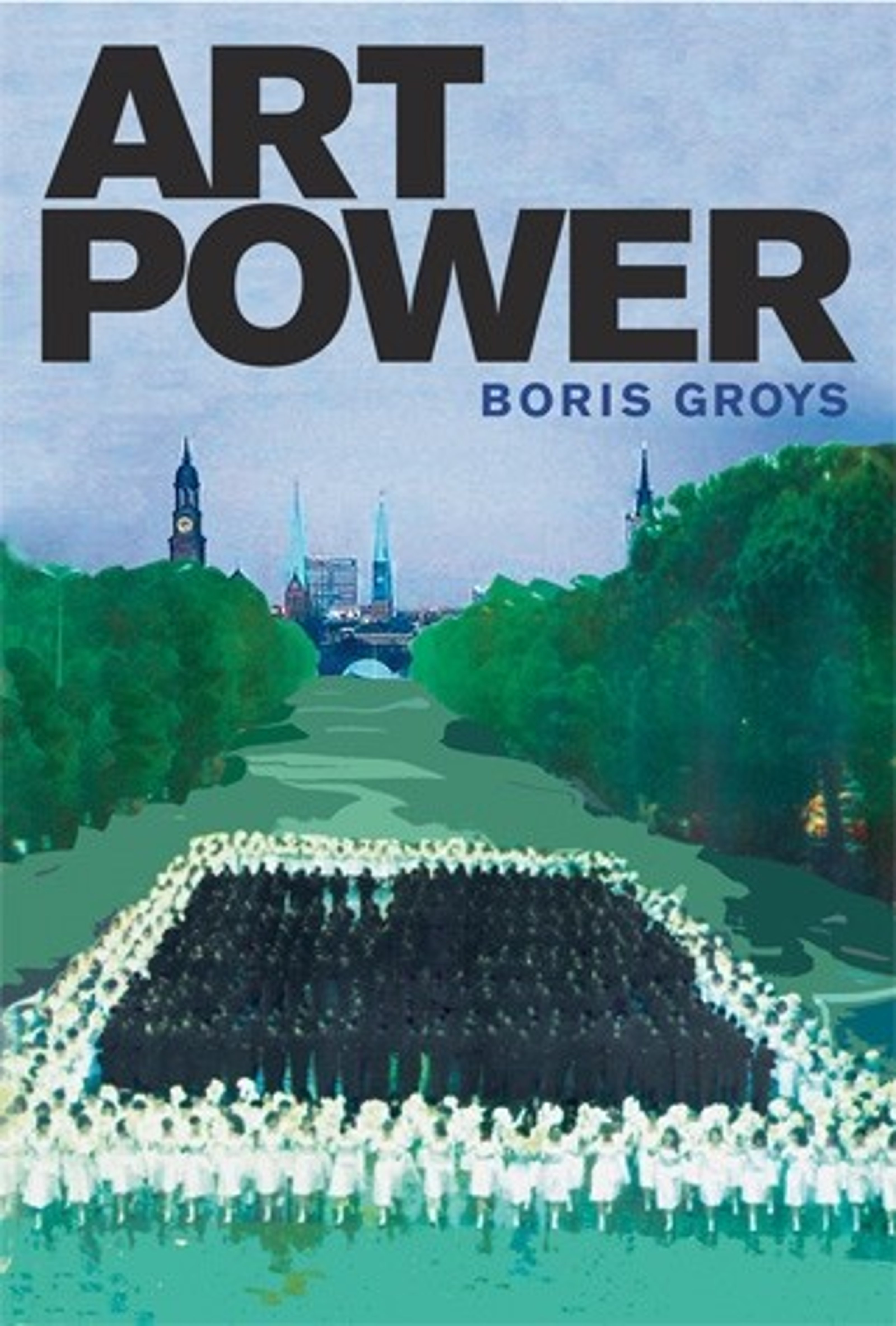
Boris Groys, Art Power (MIT Press, Cambridge, 2008)



A freelance photographer since 1993, Lu Guang has developed major documentary projects in China, all at his own initiative, focusing on China’s rapid industrialization and some of the most significant social, health, and environmental issues facing his country today. His photographic work includes stories on local coal miners, the SARS epidemic, cross border drug trafficking, AIDS epidemic in the Henan Province and the environmental impact of the Qinghai-Tibet railway.
During the Prince Claus Awards ceremony in The Netherlands in 2013 he explained to the audience why he became a photographer; “Since 1980, I realized that I can use my camera to help a lot of people, even solve some problems. I keep on finding those problems and hope to play some roles with my photos.” Lu’s photographs have been published in the National Geographic, The Guardian and by Greenpeace. Because of reporting on social issues, Lu has had attempts to stop his work. In November 2018, Lu was detained for a year by Chinese state agents whilst meeting with local Uyghur photographers in Xinjiang, where several rights groups say the Chinese government has detained hundreds of thousands of Uighurs and other Muslim minorities without trial.

Lu Guang – Development and Pollution, 2005. Courtesy: World Press Photo Foundation



The anonymous feminist group, Guerilla Girls was founded in 1985 in New York and is still one of the most prominent icons of feminist art. Their members range in numbers, and all wear gorilla masks and use pseudonyms. They are devoted to fighting sexism and racial inequality in the art world, to reveal the discrimination in public spaces through billboards, posters, stickers and flyers. Their iconic billboard from 1989; “Do women have to be naked to get into the Met. Museum?” with a gorilla head attached to a classical female nude figure from Jean Auguste Dominique’s Ingres painting La Grande Odalisque, is a trailblazer in feminist art history.
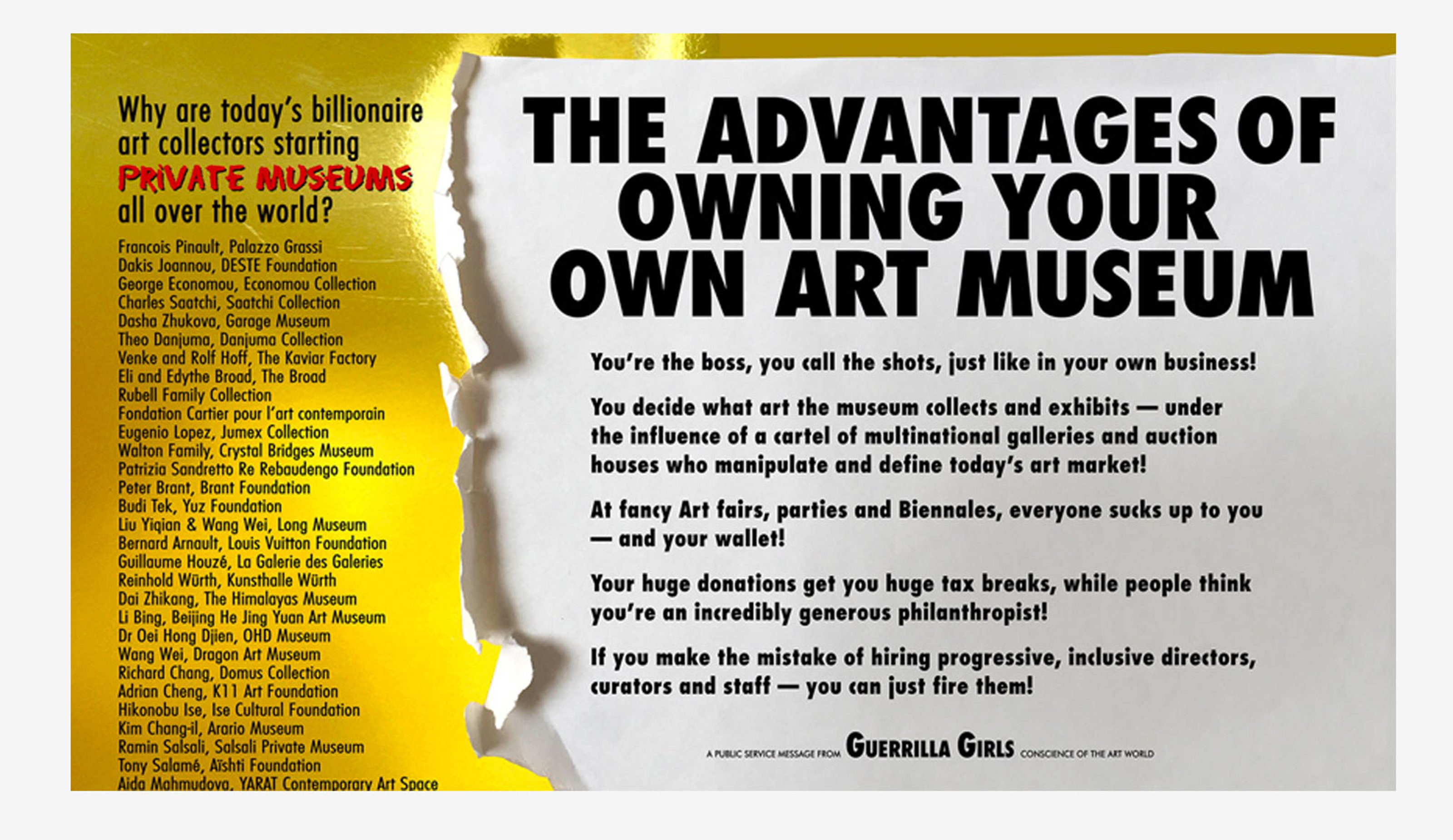
Guerrilla Girls – ADVANTAGES OF OWNING YOUR OWN ART MUSEUM, 2016 (English version of a project the collective made at Museum Ludwig, Cologne, Germany



Shilpa Gupta is a multidisciplinary artist, creating works that resound with contemporary socio-political situations. Using a wide range of materials, Gupta investigates boundaries; linguistic, ideological, physical and in between state powers. Gupta’s art is based on how information is transmitted between humans and how it shapes their perception. Her work is often participatory, pushing the viewer towards active participation.
In her piece, “For, In Your Tongue, I Cannot Fit” (2018), she collected poems from 100 writers who have been jailed through history for political reasons as a multi-channel sound installation. It’s a strong statement for freedom of expression against authoritarian regimes.
Shilpa Gupta – For, In Your Tongue, I Cannot Fit, 2018 (video courtesy of MM – ArtLike
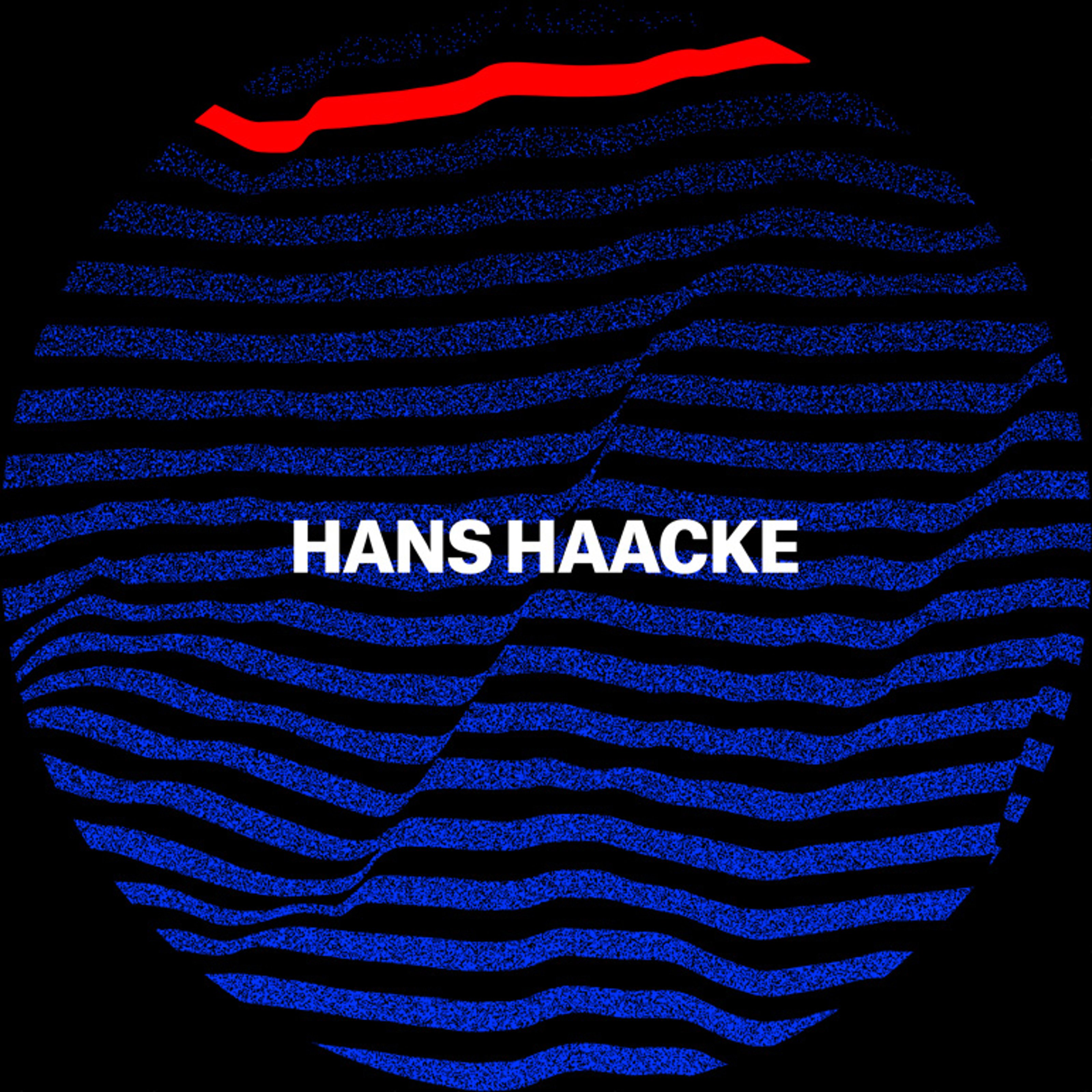


Hans Haacke is a leading exponent of institutional critique, particularly targeting funding and donations given to museums and galleries. Haacke’s interest in real-time systems propelled him into his criticism of social and political systems. In most of his work, Haacke focuses on the art world and the system of exchange between museums and corporations and corporate leaders.
Haacke has been outspoken throughout his career about demystifying the relationship between museums and businesses and their individual practices. He writes, “what we have here is a real exchange of capital: financial capital on the part of the sponsors and symbolic capital on the part of the sponsored”. Haacke has underlined the idea that corporate sponsorship of art enhances the sponsoring corporations’ public reputation, which is of material use to them. Haacke believes, moreover, that both parties are aware of this exchange, and as an artist, Haacke is intent on making this relationship clear to viewers. His recent survey exhibition at the New Museum, NY is a testament to his practice’s longevity and resilience, and its ability to remain at the edge of criticality – both politically outspoken and socially conscious.

Hans Haacke – MetroMobiltan, 1985 Courtesy: Hans Haacke / Artists Rights Society (ARS), New York and Paula Cooper Gallery, New York – Photograph: Fred Scruton



With over 1 million people infected worldwide with COVID-19 and half the planet told to stay on lockdown, health-care workers are doing the exact opposite. Oftentimes lacking sufficient protective equipment, each day, they go to their clinics and hospitals, putting themselves on the frontline for our collective safety.
In China, more than 3,300 health-care workers have been infected as of early March and, according to China’s National Health Commission, dozens have died. In Italy, 20% of responding health-care workers were infected, and some have died. In addition to the risk of infection, medical staff endure physical and mental exhaustion, the torment of life-and-death decisions, and the pain of losing patients and colleagues.

In the global response, it is imperative that the safety of health-care workers be prioritized. Governments must see workers as humans, and not simply as pawns to be deployed. Alongside concerns for their personal safety, these are women and men who have children and families that they are trying to keep safe, just like the rest of us. We owe so much to them.
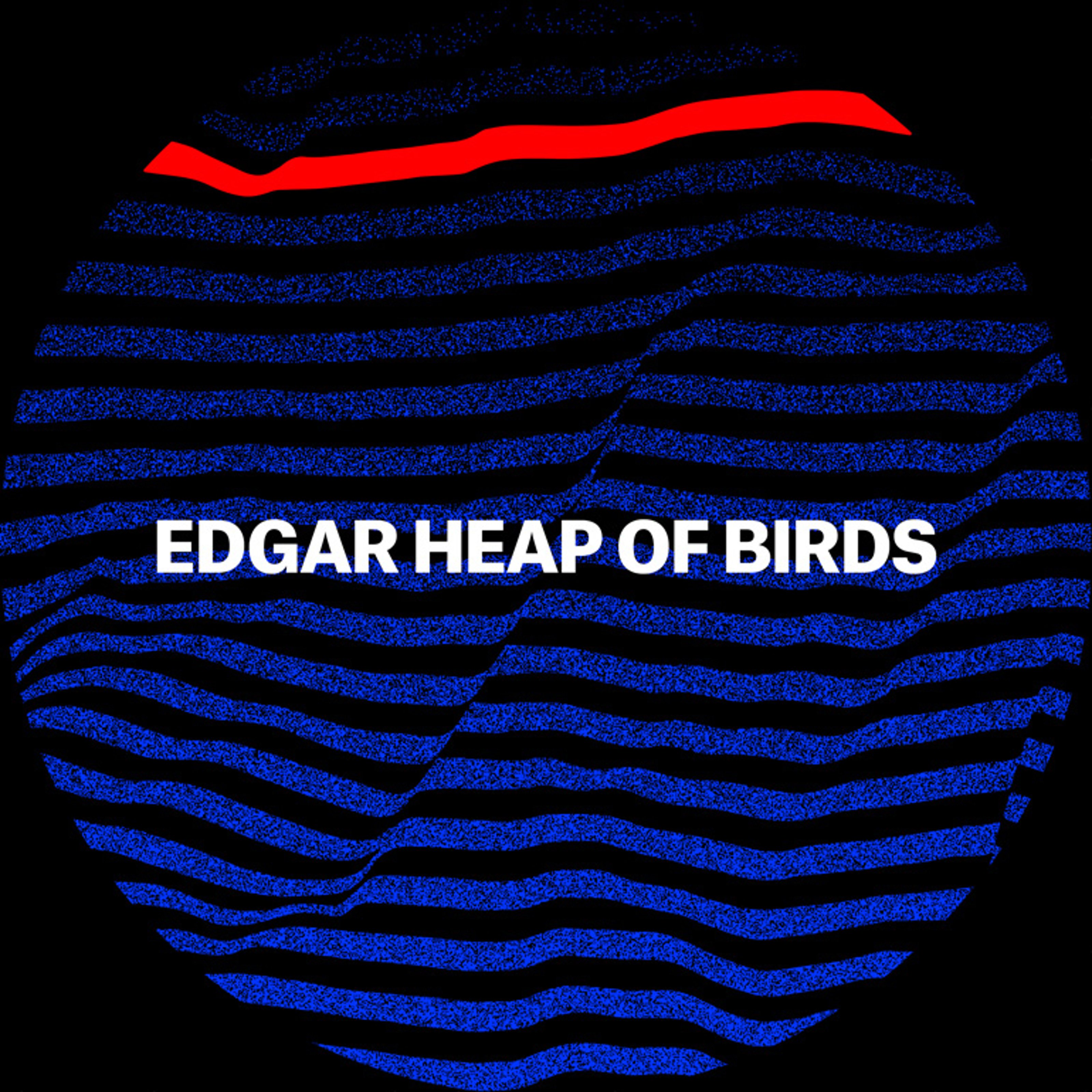


The multidisciplinary artist and professor Edgar Heap of Birds’ (Cheyenne name: Hock E Aye VI) art focuses on social justice. He creates works that take a stand against violence towards Native communities in the United States. His public installation series, Native Hosts began in the 1980s, when Edgar Heap of Birds placed signs to commemorate native tribes in the spots sacred to them, naming these tribes as “hosts” while writing the current name in reverse.
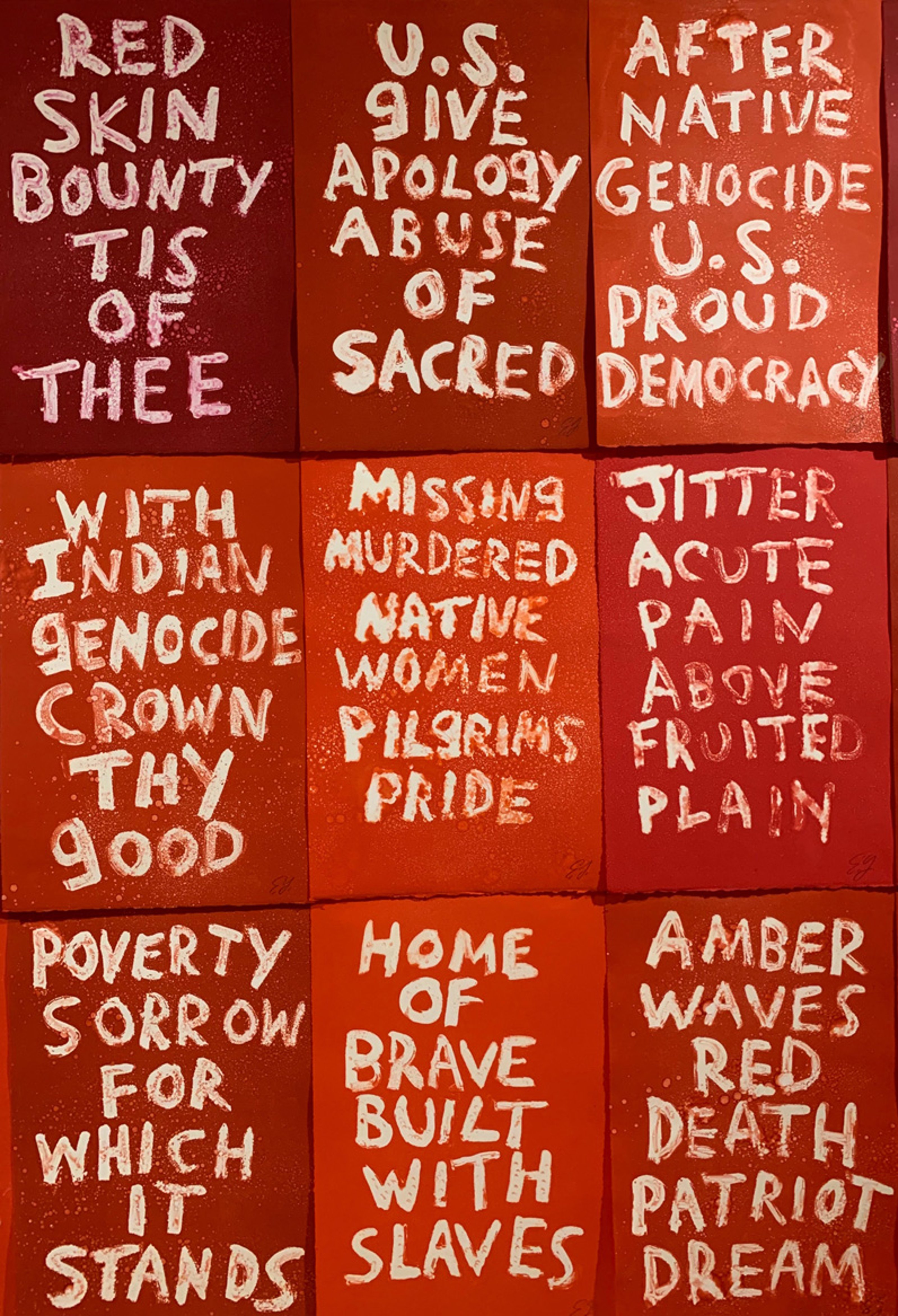
Edgar Heap of Birds Installation view of “Surviving Active Shooter Custer” at MoMA PS1
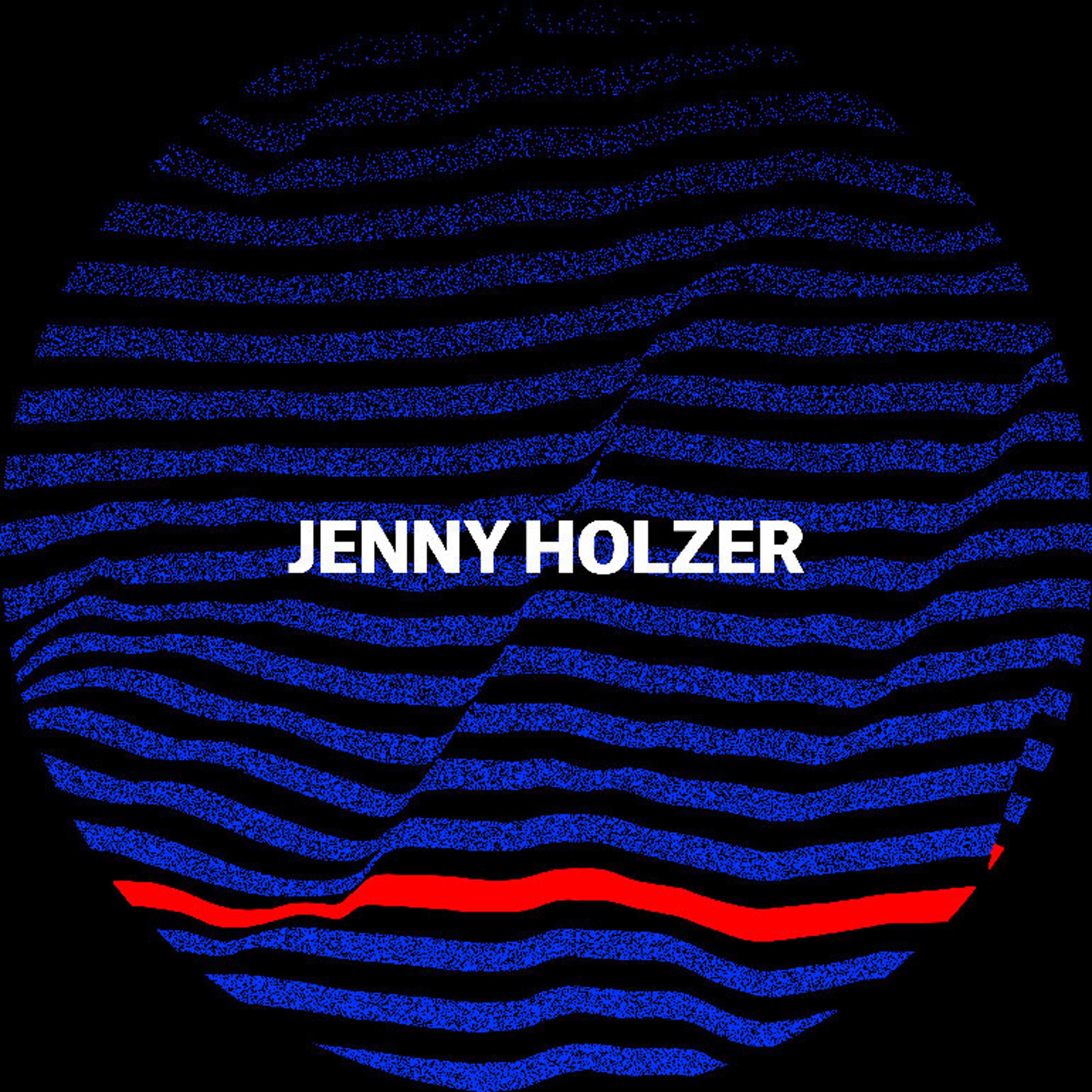


Jenny Holzer has become an icon in the art world through her text-based installations, called Truisms, aphoristic sayings that relate to power, feminism and consumerism, as powerful yet mysterious statements. Rather than dealing with specifics of a circumstance, Truisms hang in the air as strong, complete statements on their own.
These Truisms were presented on various objects, like marble benches or projected onto buildings, providing a relationship between language and the object. Truisms seem to borrow the tactics of advertising; intrigue and deceit, to use it for revolutionary thought.
Her work from the 70s is now even more relevant today with internet culture and the dissemination of text through online mediums, such as Twitter. Most famous of her Truisms, “Abuse of Power Comes as No Surprise”, a statement against masculinity and capitalism, was adopted by the #MeToo movement, with the blessing of Holzer, to be used as one of the slogans for the movement.
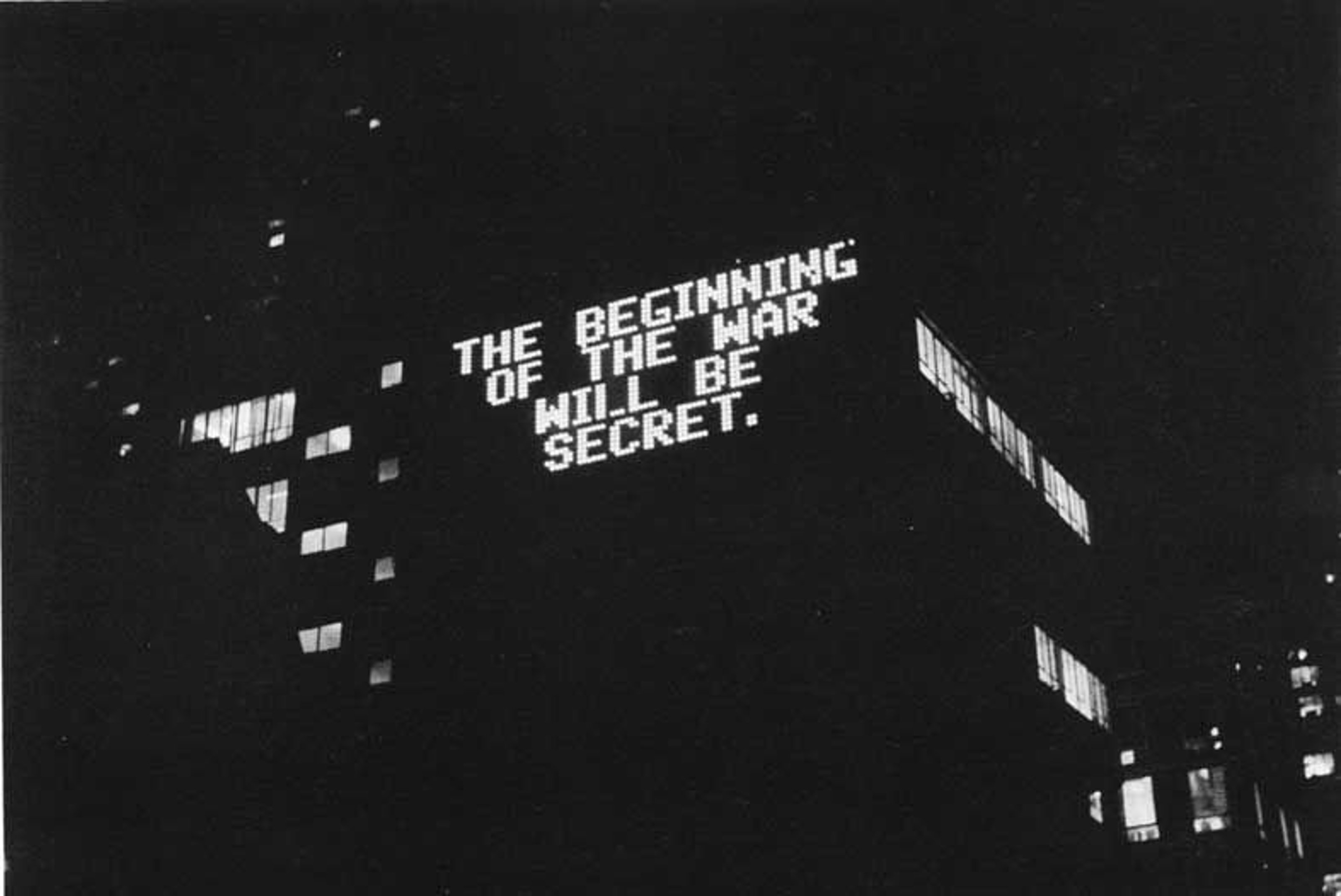
Jenny Holzer – The Beginning of the War Will Be Secret, 1984
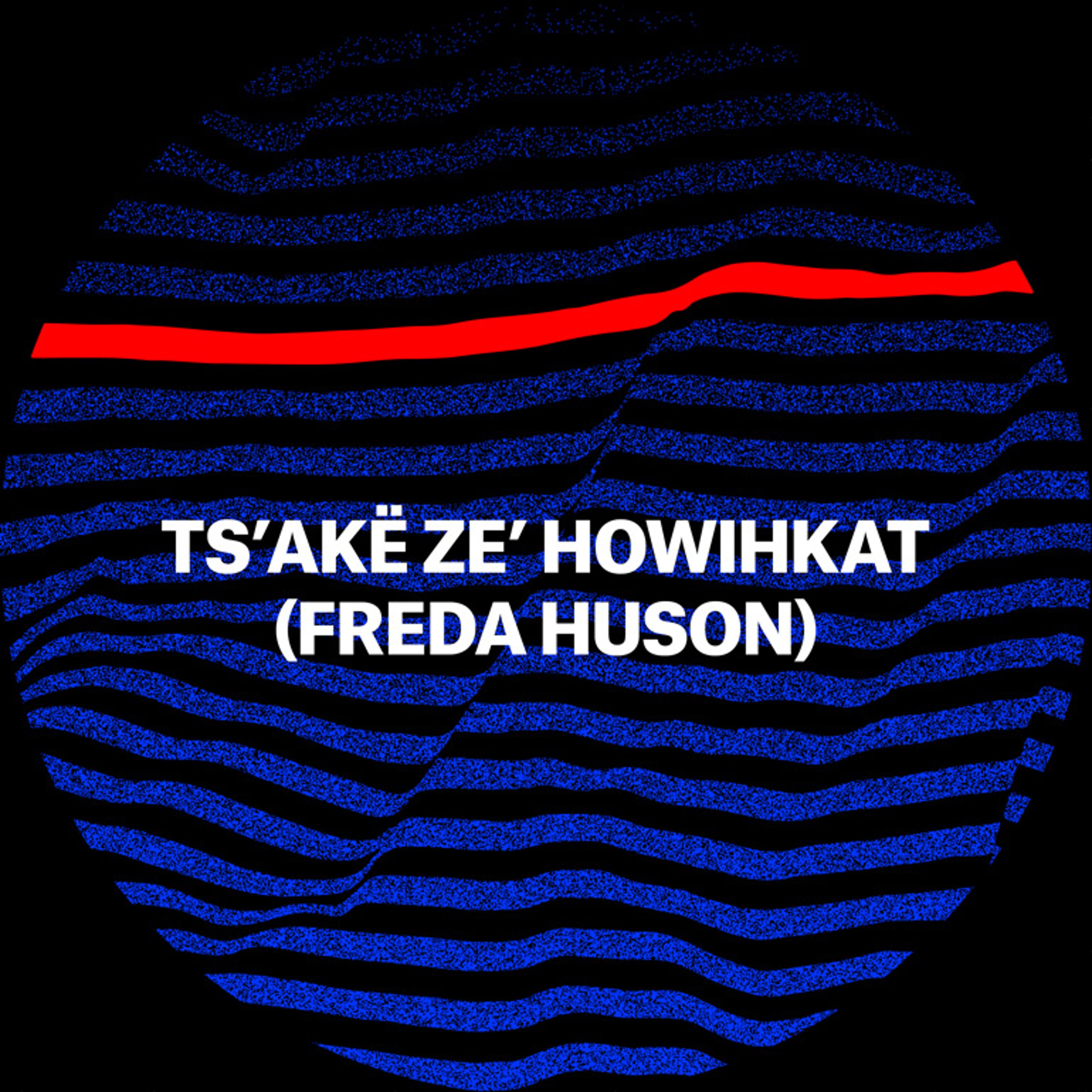


Freda Huson, also known as Chief Howihkat of the Wet’suwet’en people, was at the forefront of a campaign to prevent Coastal GasLink’s $6.6-billion pipeline from being built in territory claimed by the Wet’suwet’en, enforcing a British Columbia court injunction. After the police began to enforce the construction of the gas pipeline over Indigenous lands, the protesters shut down railways across Canada during what came to be known as ‘Shut Down Canada’. The protest that resulted in Freda Huson’s arrest used an installation of red dresses as she waited for police to enforce Coastal GasLink’s injunction. The red dresses symbolize the thousands of missing and murdered Indigenous women and girls. After the arrests, the group released the following statement:
“Canada invades. Invades on behalf of industry. Invades during ceremony. Canada tears us from our land. Tears us from our families, from our homes. Takes our drums away. Takes our women away. Jails us for protecting the land, for being in ceremony, for honouring our ancestors. We have had enough. Enough dialogue, discussion, negotiation at the barrel of a gun. Canada comes to colonize. Reconciliation is dead. It is time to fight for our land, our lives, our children, our future. Revolution lives.”
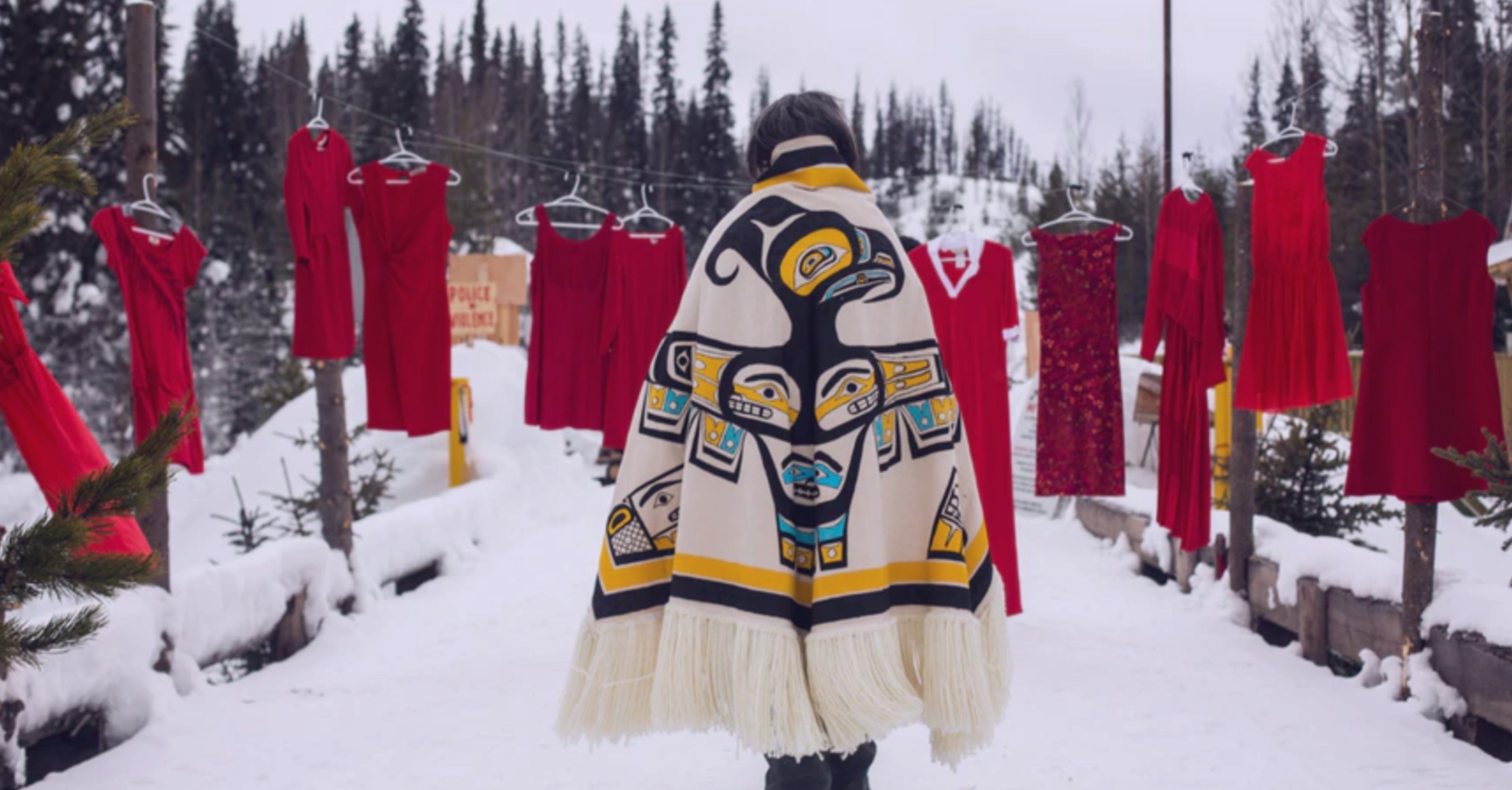
Photography by Amber Bracken



An artist whose work meditates on the history of the Civil Rights movement and contemporary African American culture; a collector duo who believes that collectors should be creative social agents within the art world to inspire change and create new possibilities; an artist whose work concentrates on forced immigration and international solidarity; an artist who takes memory and trauma as a starting point to look into decolonization, race and gender within the realm of knowledge; an artist who has been deaf since birth, exploring the materiality of sound; a director and chief curator of a major museum whose practice focuses on community and institution building as Curatorial Practice and activism; an artist who seeks to reconstruct existing methods in artistic practice, while questioning established histories, values and systems; an artist whose work is concerned with the marginalization of women of color; a artist whose works reveal the history of slavery, the civil rights movement, and sexual politics; an artist and educator helping artists to create a sustainable practice.
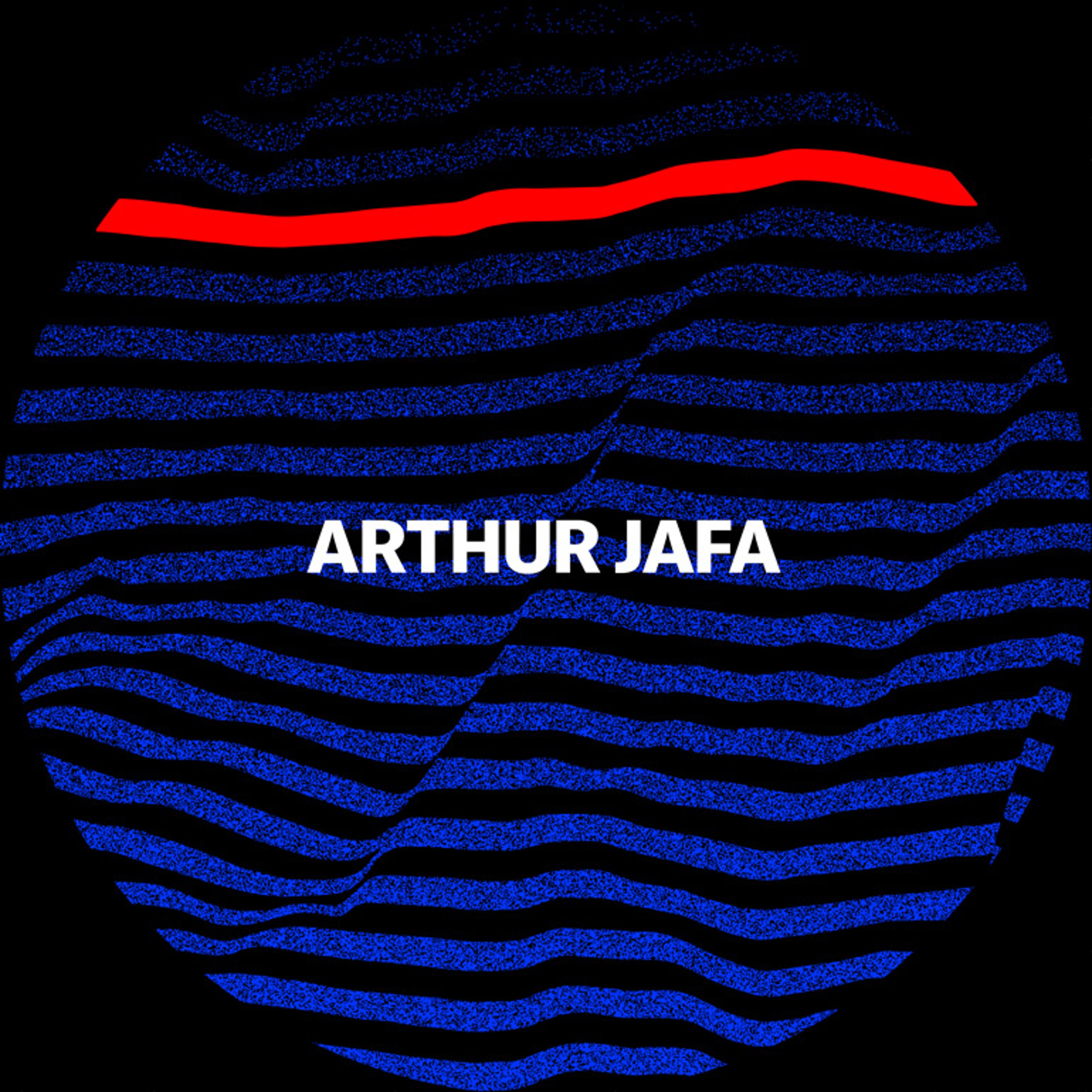


Arthur Jafa is an artist, filmmaker and cinematographer who has had a versatile and prodigious career. As a cinematographer, Jafa worked with Stanley Kubrick, Julie Dash and Spike Lee; as well as working on several documentary films. In 2013, he began making film essays, compilations of images and interviews, meditating on the history of the Civil Rights movement and contemporary African American culture. Released in 2016, his widely-acclaimed short film, Love Is the Message, the Message Is Death ties together a large collection of found footage, recent and old, as an exploration of joy, grief, violence and success in the history of the African American experience. Since then, Jafa has released another film, titled The White Album, 2018, which focuses on the fragility of whiteness as a constructed identity.
_Arthur Jafa – APEX, 2013
(excerpt from video, courtesy Gavin Brown)
_
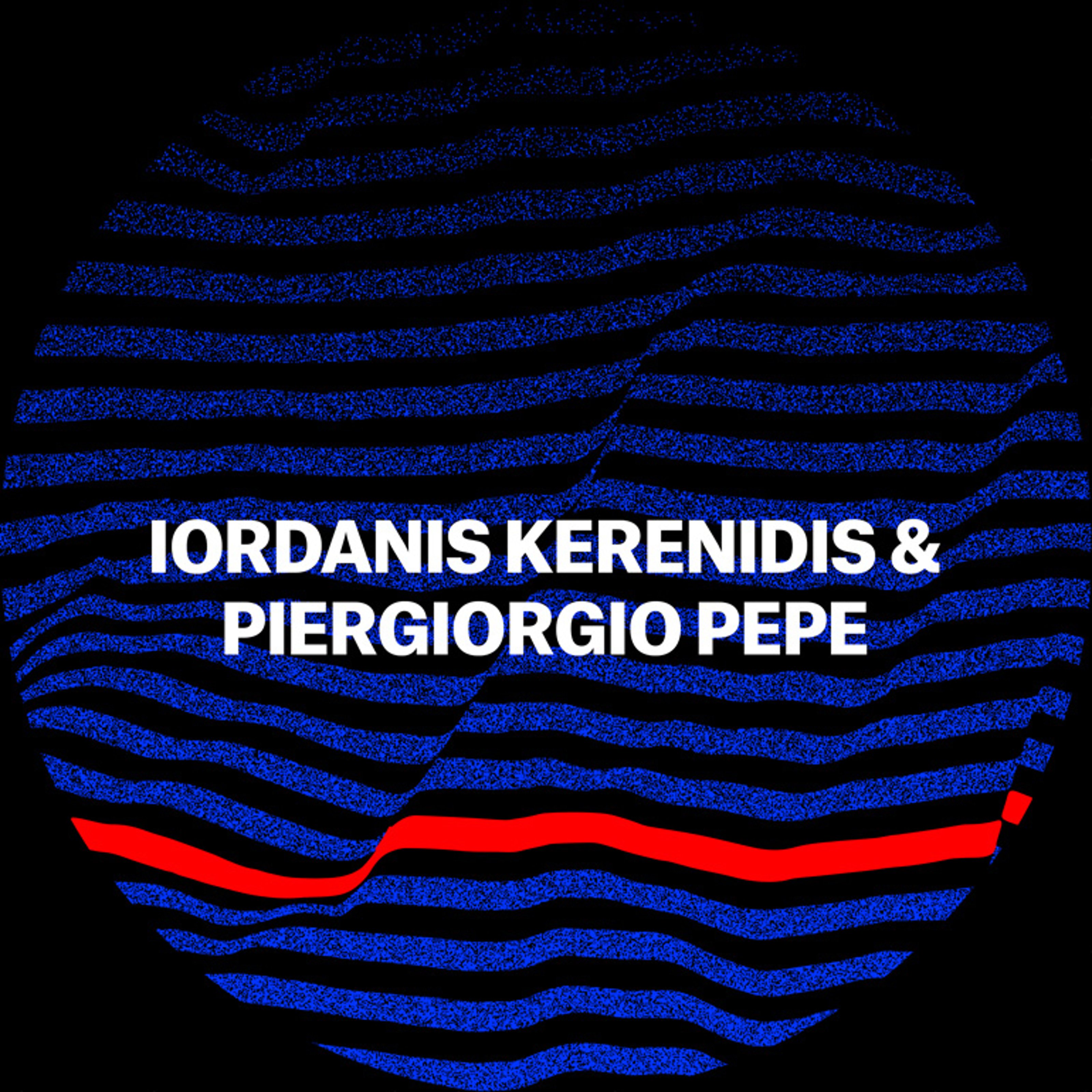


Iordanis Kerenidis and Piergiorgio Pepe are art collectors who believe that collectors should be creative social agents within the art world to inspire change and create new possibilities. Their collection is focused on artworks that question normativity and privilege, supporting artists that are focused on the unusual and the unheard. They have organized a biennial project, Phenomenon, since 2015 on the Anafi island in Greece, with a focus on history and recreating narratives. Their initiative with Phenomenon also includes the inhabitants of Anafi, involving them in the exhibitions process and installing public works around the island to bring art closer to the public.

Iordanis Kerenidis and Piergiorgio Pepe at Anafi. Photography by Theo Prodromidis for Collecteurs



Bouchra Khalili’s work concentrates on forced immigration and international solidarity, through video, installation, photography and prints. In her installation, “The Mapping Journey Project (2008-2011),” the Moroccan-French artist travels through the Middle East, North Africa and Europe to gather first-person stories from the refugee crisis; of migration, belonging and community forming. Each of the 8 individuals that she features in the videos tell their story by drawing their route with a marker on a map. With this video installation, Khalili also offers an alternative spatial understanding of the world and the pressures the current system puts on people living in precarity, revealing methods of state surveillance and media portrayal of refugees and the dangers it posits. Khalili’s work encourages the public to rethink ideas of citizenship and power structures in Western society.
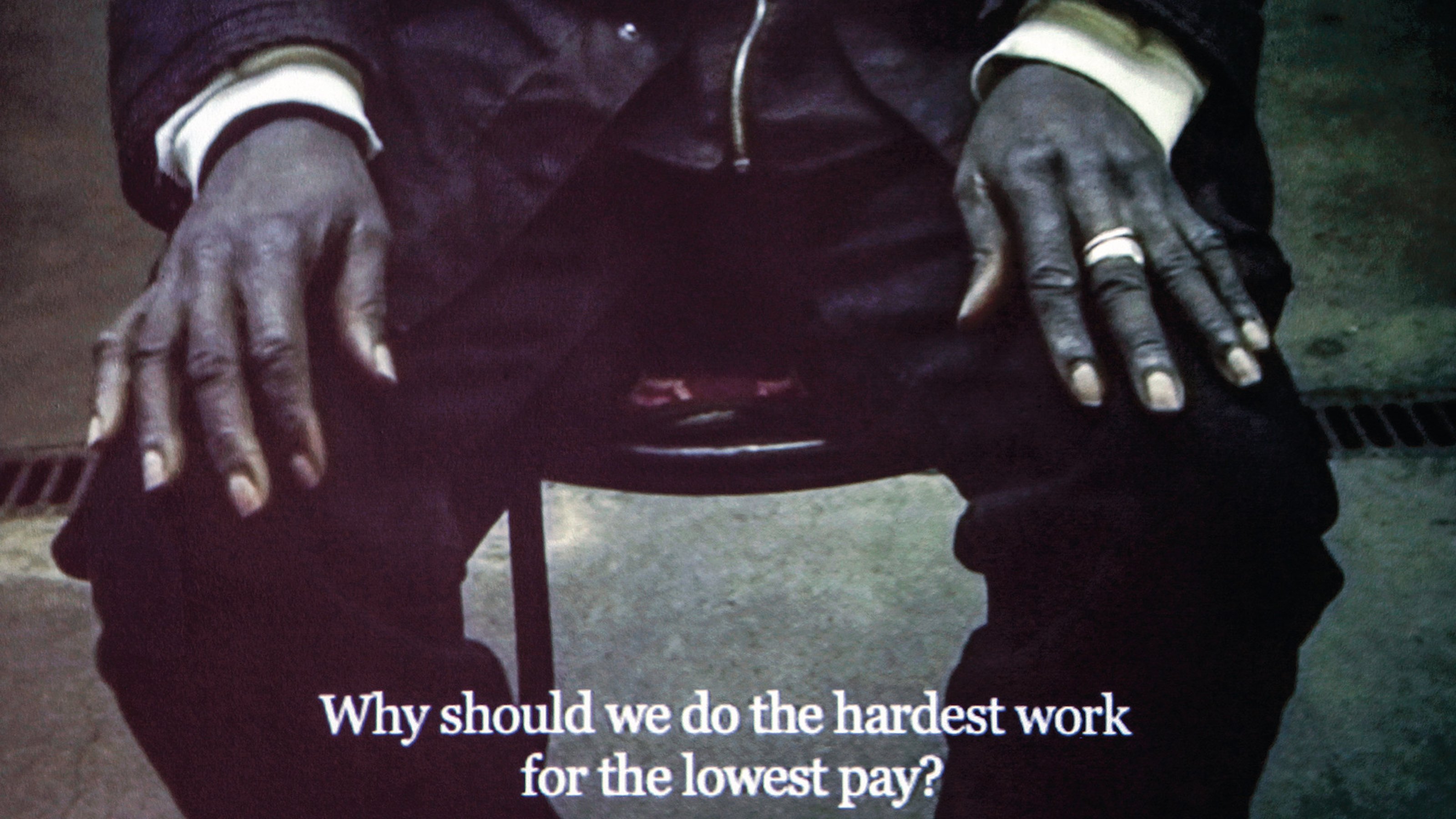
Bouchra Khalili – The Speeches Series, Chapter 1: Mother Tongue, 2012. (video still)
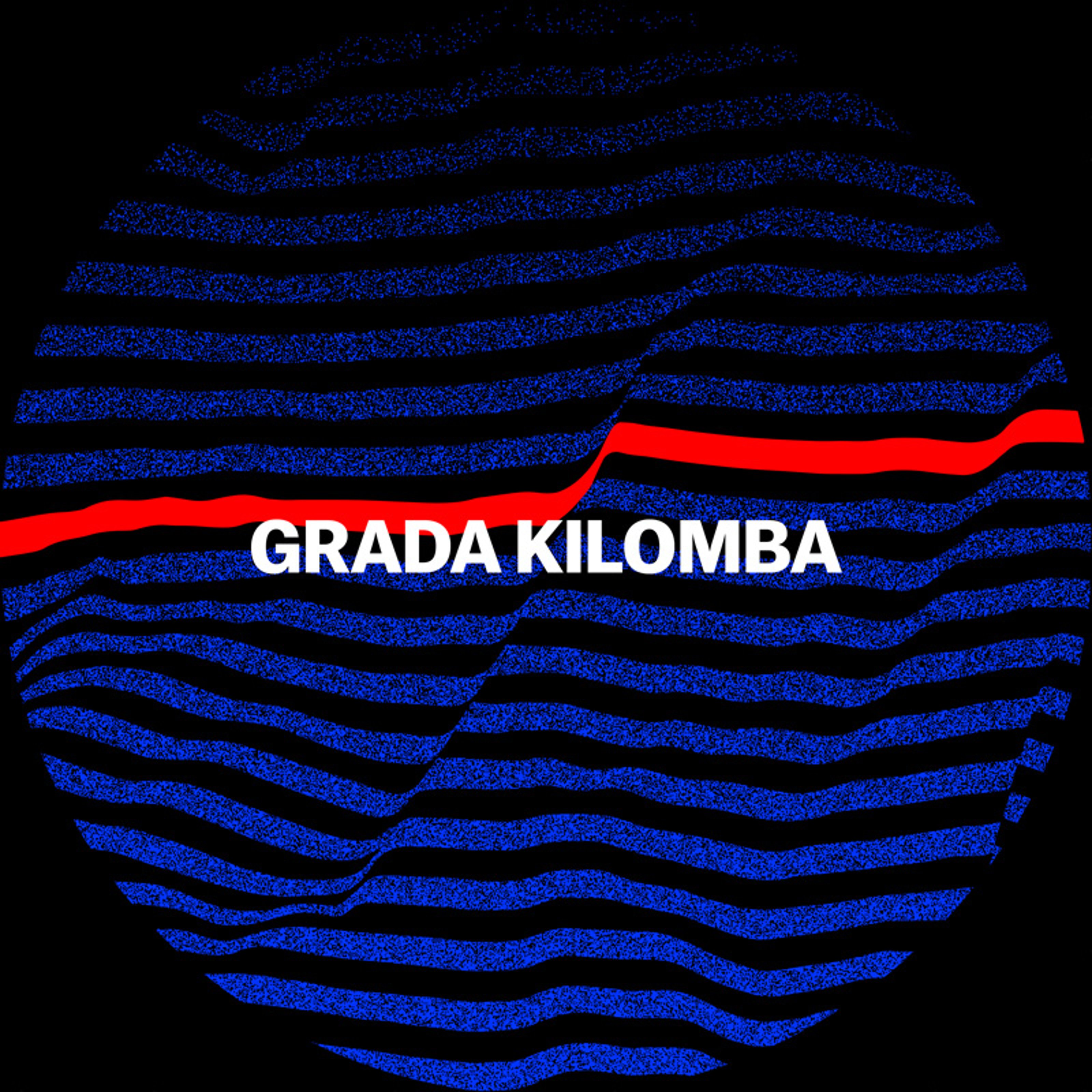


Grada Kilomba is an interdisciplinary artist and writer. She studied clinical psychology and psychoanalysis in Lisbon, developing projects on memory and trauma. Her artistic practice also takes memory and trauma as a starting point to look into decolonisation, race and gender within the realm of knowledge and accessibility. Kilomba focuses on three questions when looking into existing structures of storytelling: “Who can speak?” “What can we speak about?” and “What happens when we speak?” She describes her method of art-making as “Performing Knowledge”; an assemblage of publication, performance, staged reading, installation, text, video and sound. In her Illusions series (2016-2019), Kilomba deconstructs classical Greek narratives and symbolisms to uncover power structures and stories of oppression.
She is also the author of Plantation Memories (2008) a compilation of “episodes of everyday racism written in the form of short psychoanalytical stories.”
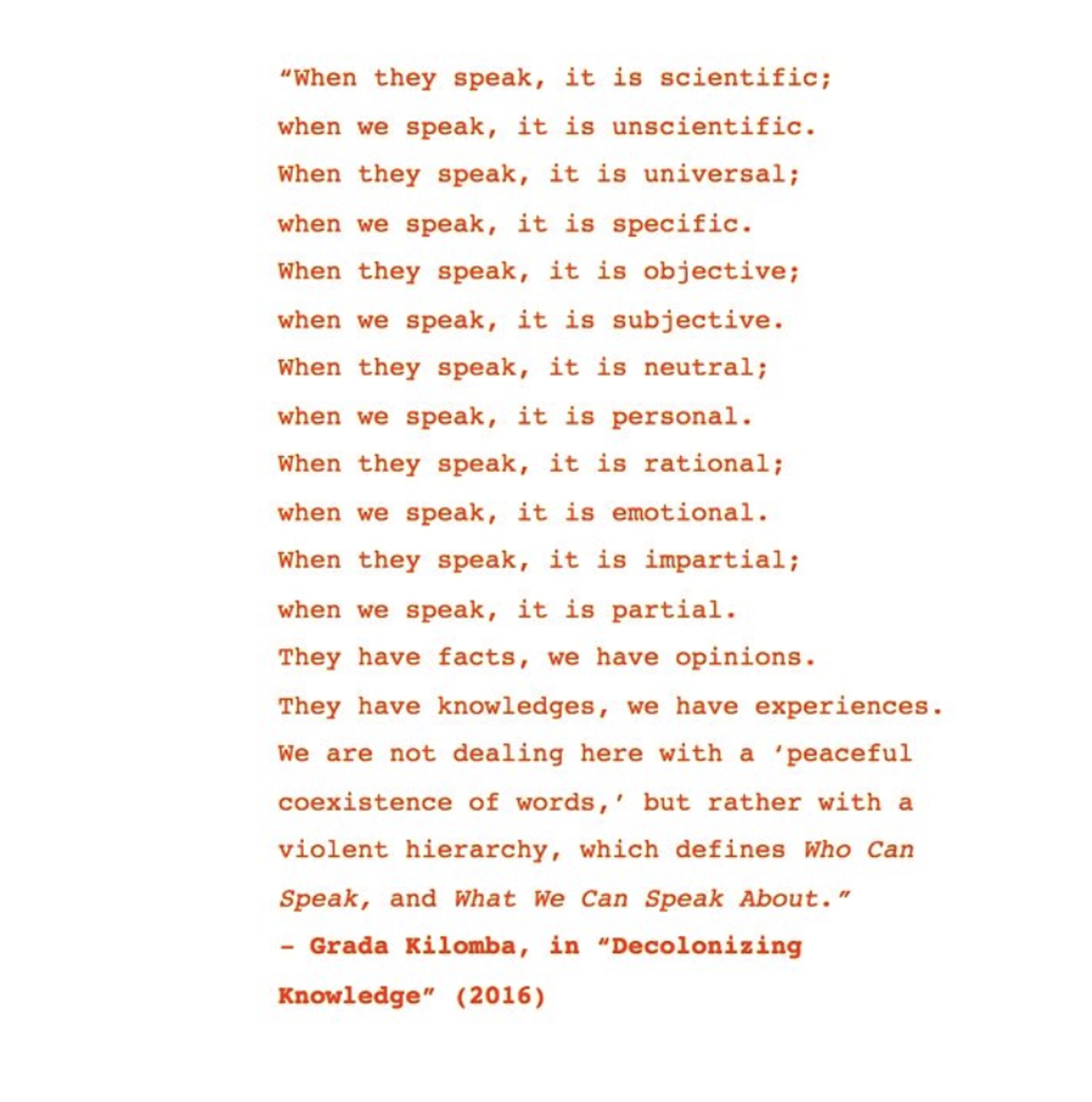



Christine Sun Kim, who has been deaf since birth, explores the materiality of sound in work that connects sound to drawing, painting, and performance. Musical notation, written language, American Sign Language, and the use of the body are all recurring elements in her work. Her sound works take the vibration of sound pieces and its sensory effects on the body as a starting point. While working on the sounds emitted by different objects and facial expressions, Kim found the correlation between music and the rhythmic structure of ASL, a similarity she investigates with her work. Kim also creates charts and drawings in charcoal, illustrating the experience of a deaf person navigating the world, combining text, visuals and sign language symbols. Her works create a new universe of languages, independent from the hearing world and its experiences, a new visual and sensory way of experiencing one’s environment.

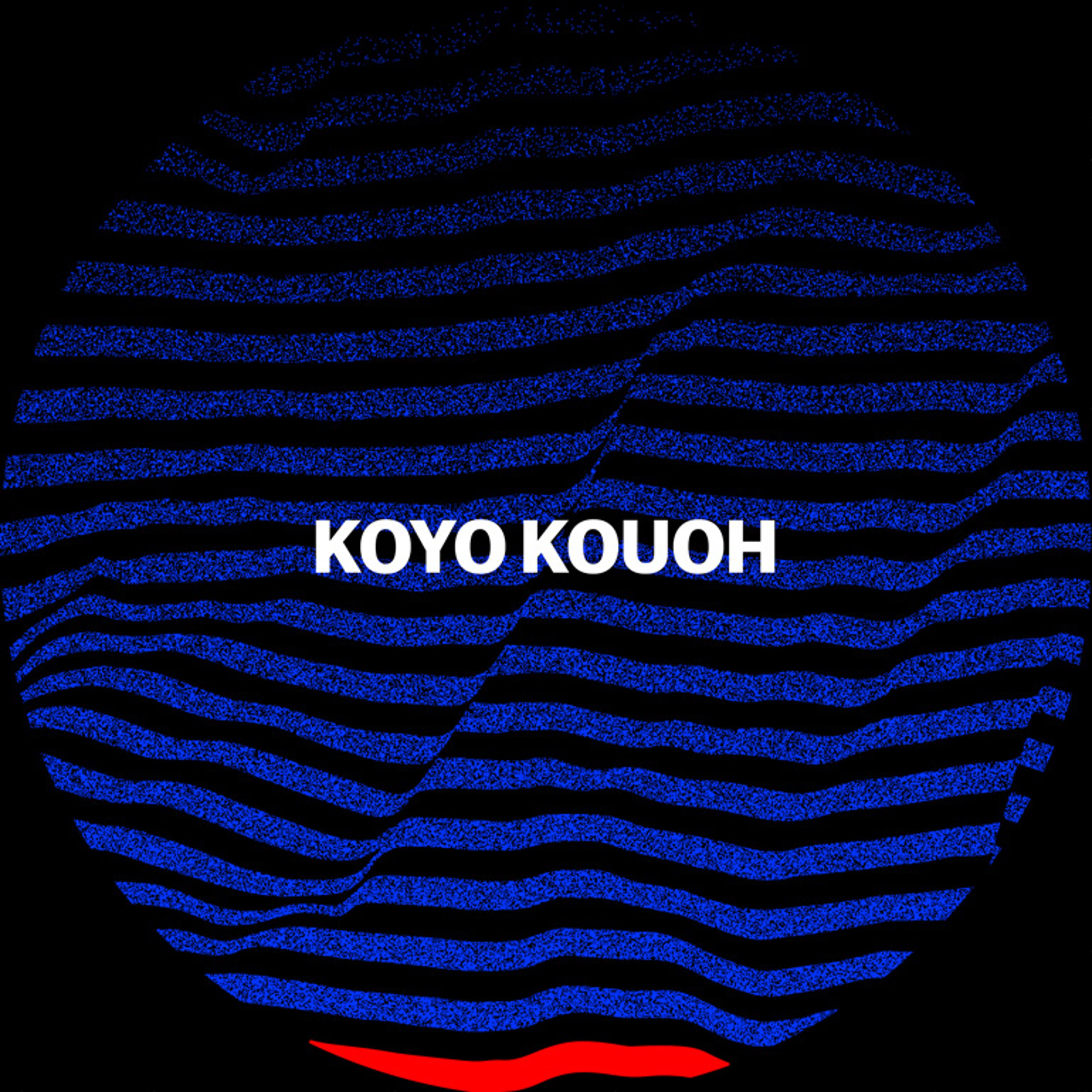


Koyo Kouoh is the Executive Director and Chief Curator of the Zeitz Museum of Contemporary Art Africa. Her practice focuses on community and institution building as Curatorial Practice and activism, wanting to ensure longevity and an accumulation of knowledge within the arts community. Kouoh founded and successfully managed RAW Material Company in Dakar, Senegal to promote African art. This space was staffed and run entirely by women.
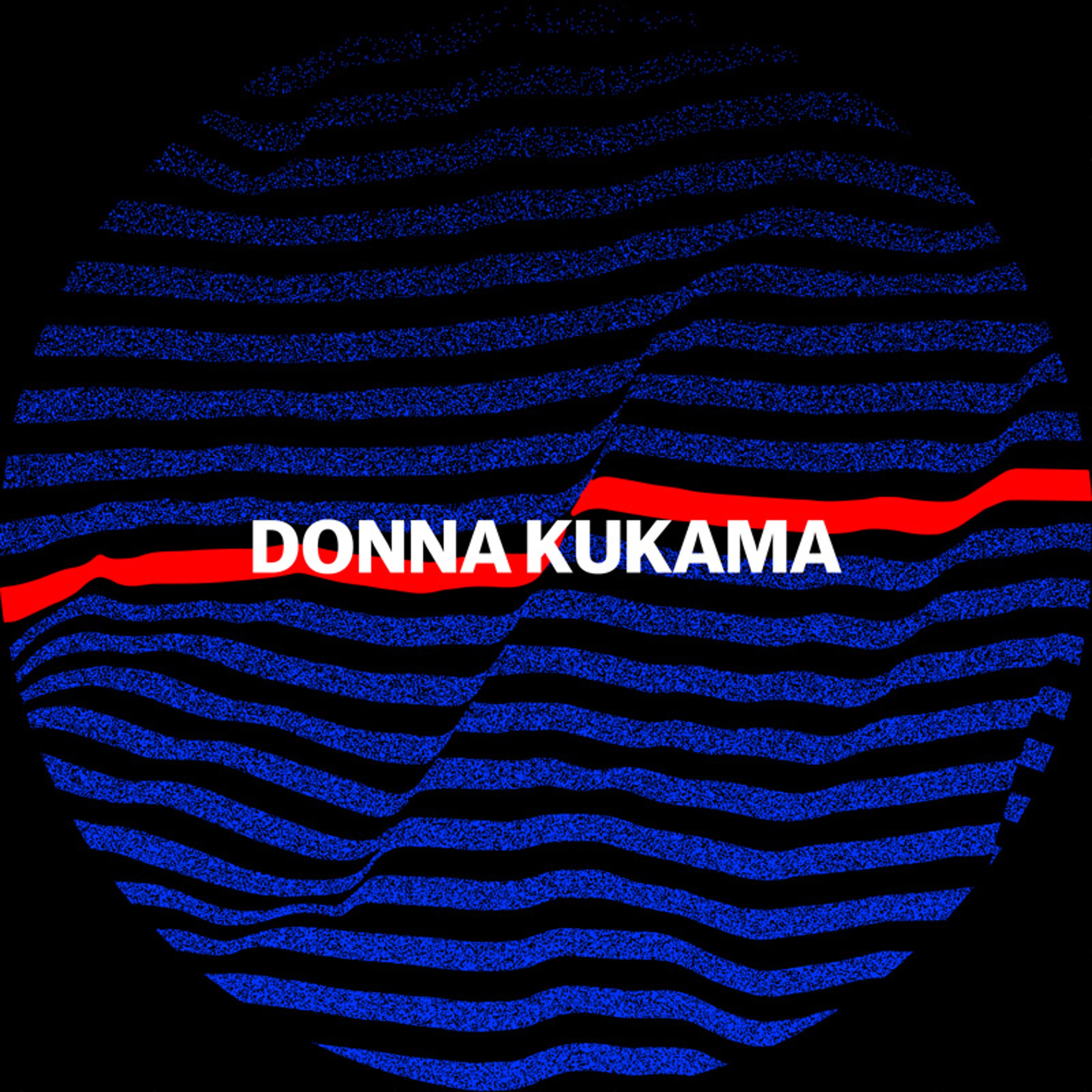


Donna Kukama is a multimedia artist, primarily working with performances that seek to reconstruct existing methods in artistic practice, while questioning established histories, values and systems. Her performances often involve audience participation, inviting them in during a strange moment, where reality and fiction blends. For her performances, Kukama prefers spaces outside of formal arts institutions, she sometimes will carry them out to the streets, to shops or on bridges, which brings them closer to everyday life rather than a staged performance. Kukama has also been constructing a book since 2015, titled We the Not-Not People!, not necessarily limited to a physical book but a compilation of performances, text, images, objects, drawings and more. The book serves as a tool for rethinking memorials and national monuments in South Africa, through an exploration of the country’s history and memories of its marginalized citizens.
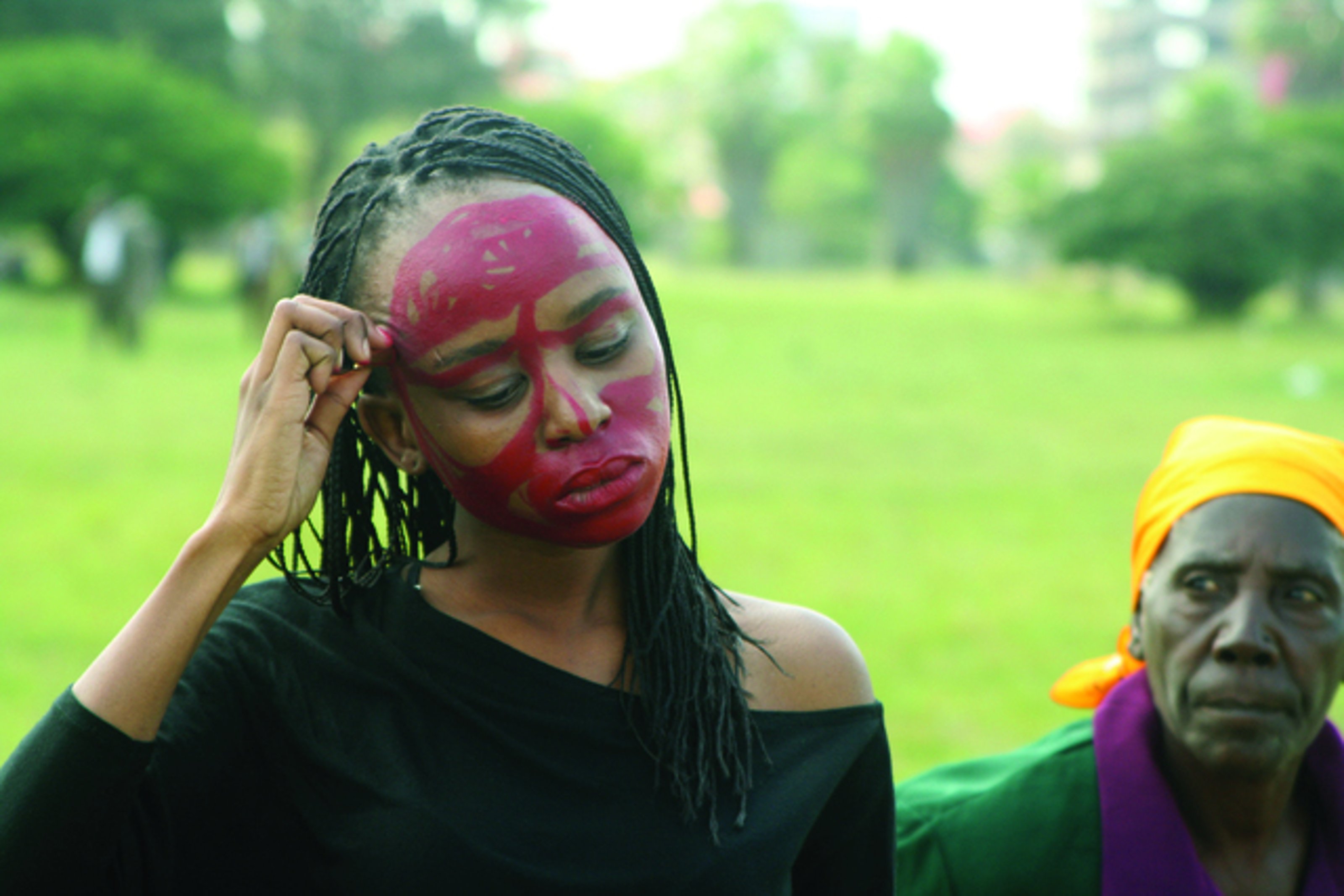
Donna Kukama – NOT YET (AND NOBODY KNOWS WHY NOT), 2008



Simone Leigh’s artistic practice is shaped via the study of philosophy, cultural studies, and a strong interest in African and African American art. Her object and performance-based works are imbued with a concern for the ethnographic, especially the way it records and describes objects. Leigh works primarily with sculpture, installation, and video, as well as with Social Practice, to foreground black female experience. She has described her work as auto-ethnographic, and her work is concerned with the marginalization of women of color and reframes their experience as central to the society. Her work has since been featured in the New Museum, the Hammer Museum in Los Angeles, The Studio Museum in Harlem, and the 2019 Whitney Biennial, among others. She is also the recipient of numerous honors and awards, notably including the 2018 Hugo Boss Prize.

Simone Leigh – Sentinel, 2019. Courtesy the artist and Luhring Augustine, New York
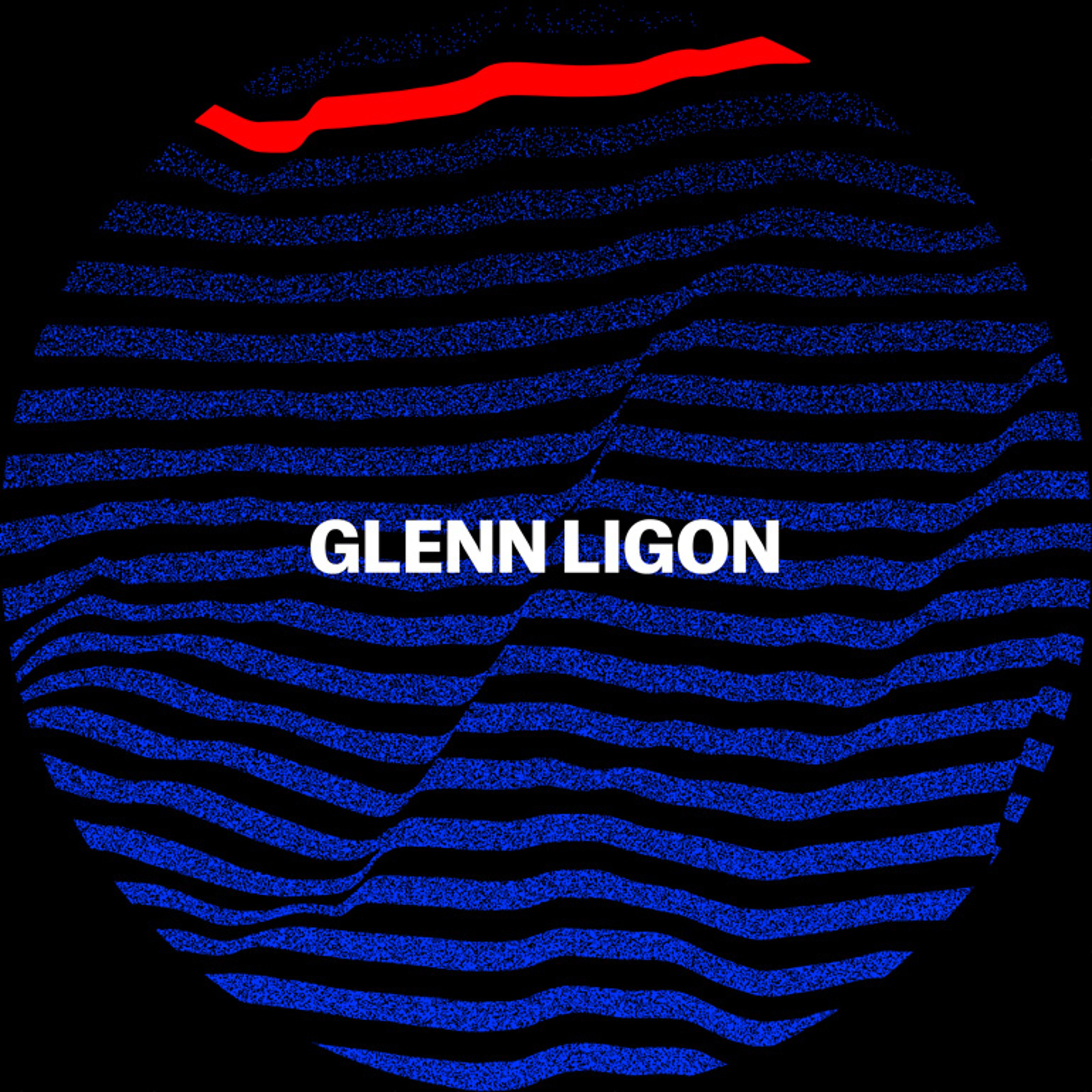


As a conceptual artist, Glenn Ligon is known for his intertextual works which reveal the history of slavery, the civil rights movement, and sexual politics made since the late 1980s.
He is one of the originators of the term “Post-Blackness” which is a philosophical movement with origins in the art world that attempts to reconcile the American understanding of race with the lived experiences of African Americans in the late 20th and early 21st centuries. Ligon works in multiple media for his work Annotations and they are greatly informed by his experiences as an African American and as a gay man living in the United States. The texts he incorporates into his paintings, in the form of literary fragments, jokes, and evocative quotes from a selection of authors, are stenciled directly onto the canvas by hand. His source materials concern issues of the lives of black Americans throughout history, often alluding to other prominent black figures.
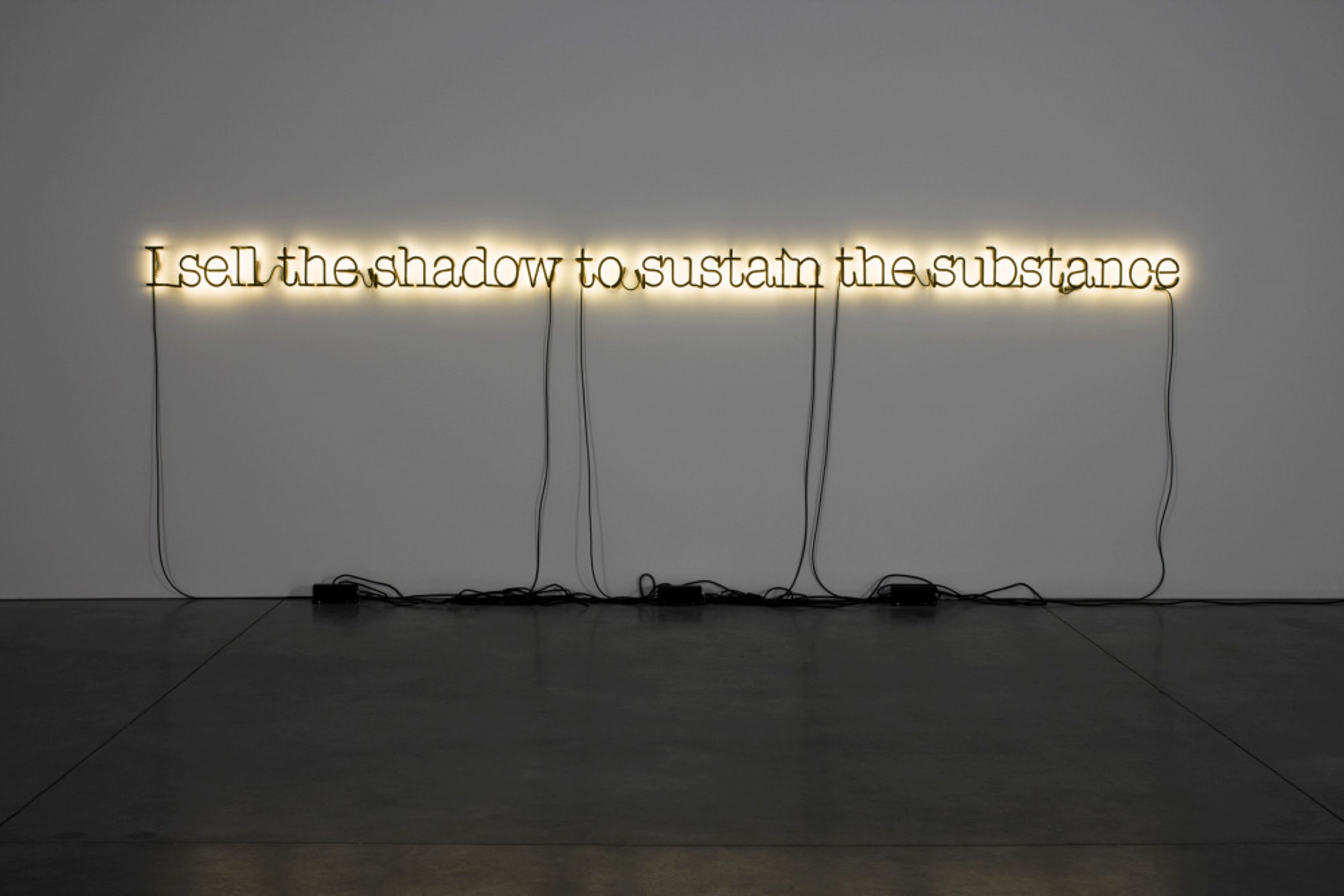
Glenn Ligon – Untitled (I Sell the Shadow to Support the Substance), 2006 – Courtesy Luhring Augustine



A Brazilian artist whose work from 1975 suggests that creative individuals will always find a way to reclaim what censorship takes away; an artist whose most recent documentary project is a critique of corporate control over art and accessibility; an artist whose work has presented audiences with events forgotten and erased from public consciousness; an iconic band whose live shows are known for visuals that refer to political issues, adapted to each country that they perform in; a philosopher whose main goal is to change the perception of Africa and move beyond post-colonialism to a new, all-encompassing cultural change; an indigenous leader who fights to protect nature and the rights of indigenous people; an artist who has researched and documented the stories of hate crimes against the LGBTQI community in order to bring rape and assault cases to public attention; an artist with a focus on narratives of post-colonialism in the Caribbean; an artist who traveled from a favela in Brazil all the way to New York, mostly by foot, washed his feet in the Hudson River, and set his course back to the favela by foot again, documenting his journey along the way; a museum workers union that collectively bargained to improve their conditions of employment.



During the 1970s, the military dictatorship in Brazil created an environment of tighter controls against the opponents of the regime. This tightening especially targeted cultural production and led to a period of exhibition closures and extreme censorship. It is during this period, Gastão de Magalhães expressed with his 1975 work ‘This is a poem,’ that censorship couldn’t stop artists. The work further suggests that creative individuals will always find a way to reclaim what censorship takes away. In ‘This is a poem’ Magalhães holds the individual letters of the word “poem” in his mouth, defining poetry as a space for expressing opinions and criticism when other means of visual expression are targeted.
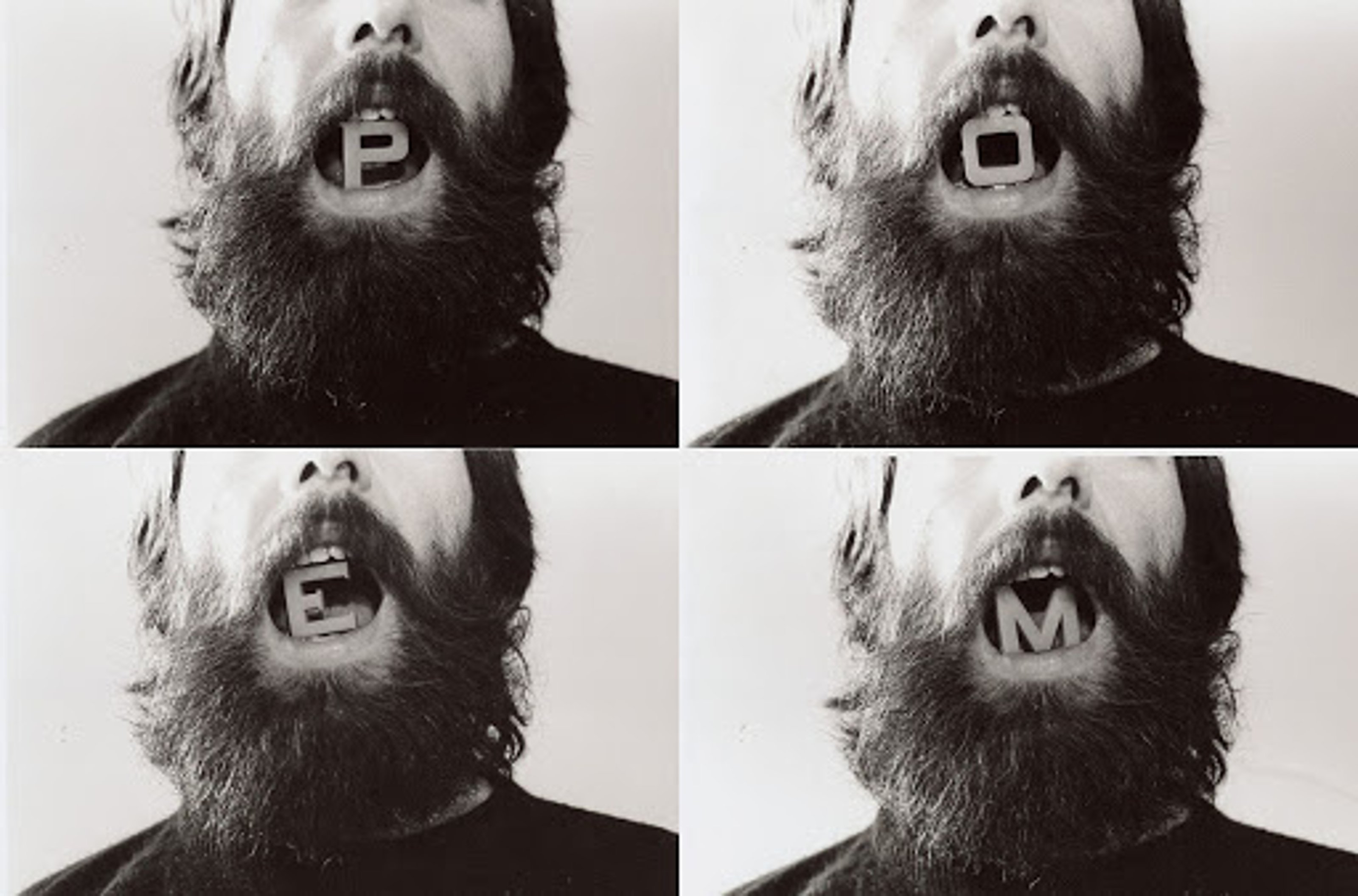
Gastão de Magalhães – This is a poem, 1975
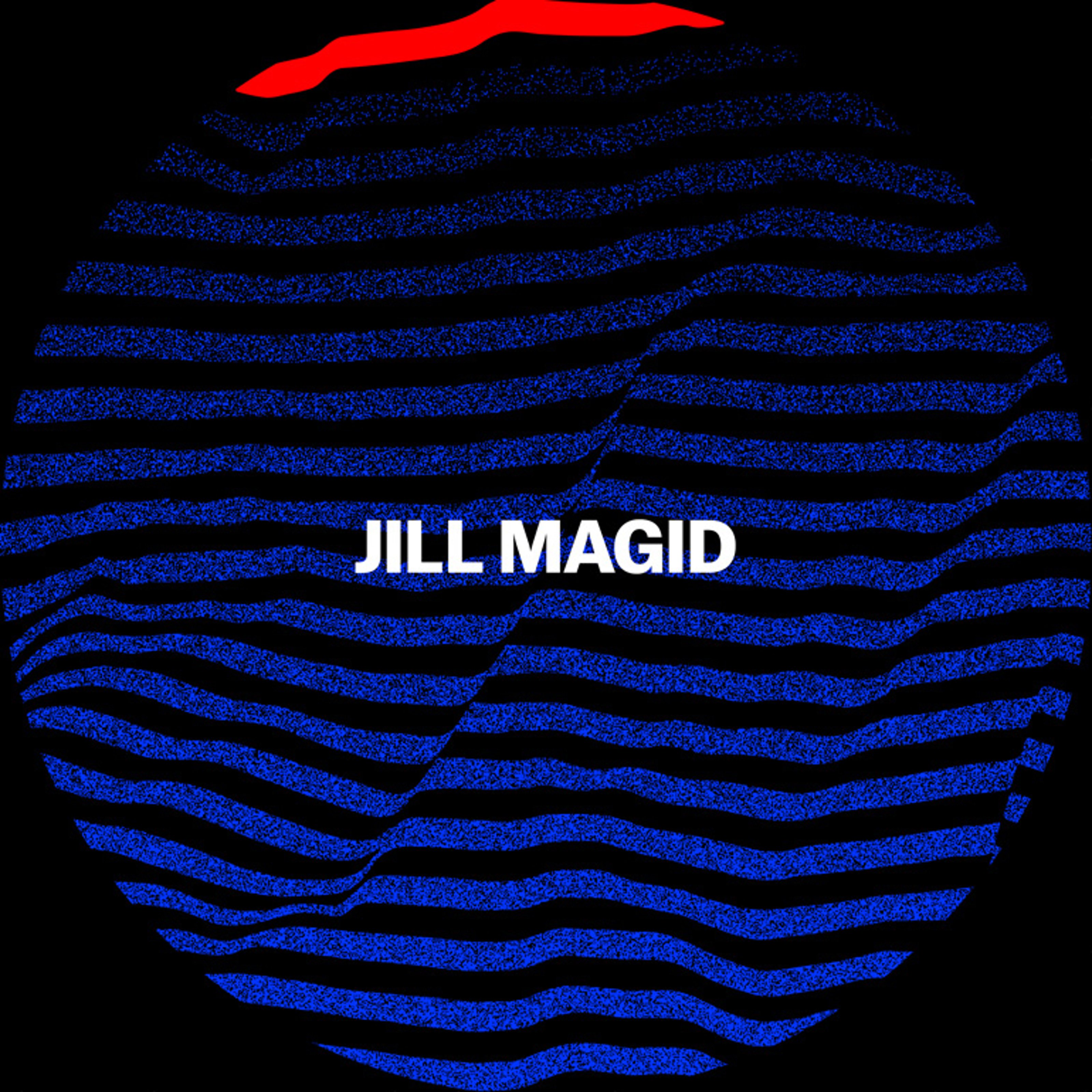


Jill Magid is an artist working to examine power structures between individuals and institutions through the dynamics of personal relationships, almost forming intimate bonds with the institutions that she chooses to engage with. Her work examines policing and surveillance, intelligence agencies and most recently has created controversy through her involvement with the Mexican architect, Luis Barragán’s, archives. Upon learning that the head of the Swiss corporation, Vitra, purchased Barragán’s entire archive as an engagement gift for his then girlfriend, Federica Zanco, and removed it from public access, Magid worked with Barragán’s estate, turning the architect’s remains into a diamond ring, and offering it to Zanco in return for bringing the archive back to Mexico. The project is a critique of corporate control over art and accessibility.
Jill Magid – Barragan®, 2016 Neon and transformers
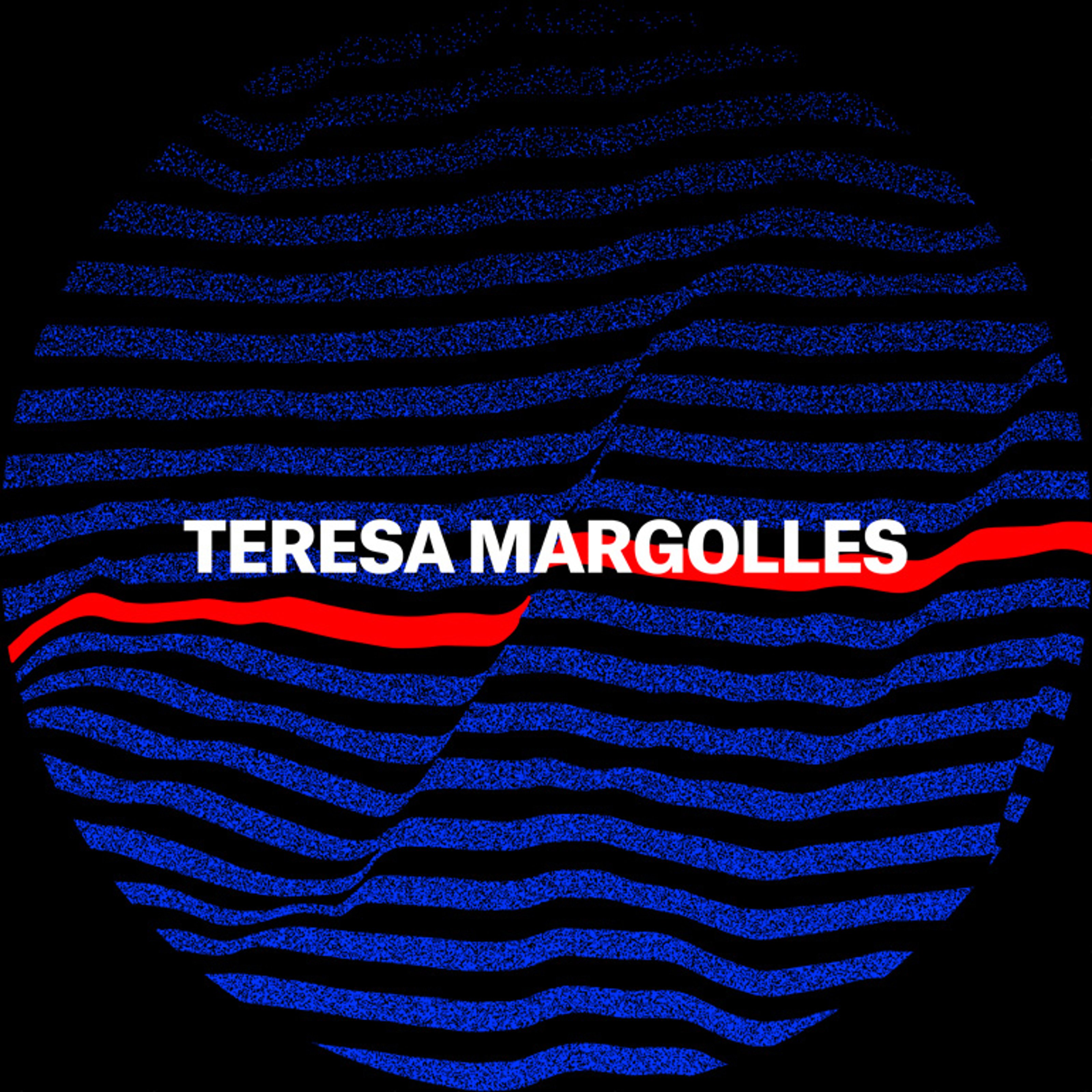


For over 25 years, Teresa Margolles has questioned issues of conflict, corruption and exclusion. With a background as a forensic pathologist, Margolles’ work in a subtle yet poignant way has presented audiences with events forgotten and erased from public consciousness, or events not fully broadcasted in the first place. Often using the language of conceptualism and minimalism, as well as the framework of exhibition-making, Margolles tests political and social accountability and responsibility.
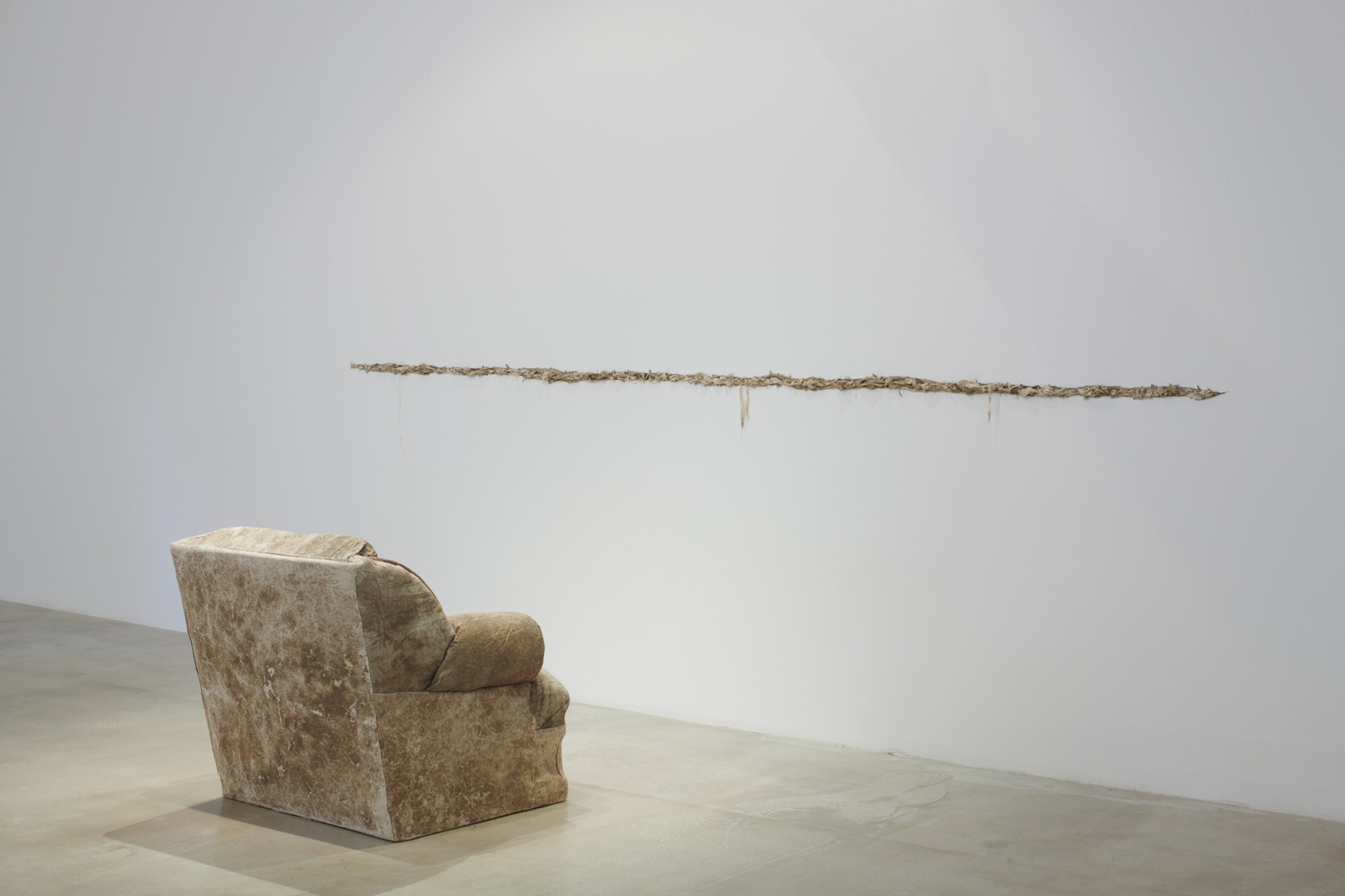
Teresa Margolles – Sillón tapizado frente a línea fronteriza / Upholstered armchair facing a borderline, 2019 (courtesy James Cohan Gallery)
Armchair recovered from the ruins of the Hotel Rex, a building in the historic center of Ciudad Juárez. The piece has been upholstered with fabric that previously absorbed fluids from a violent event that happened in the area. The cloth embedded inside the wall was dragged in that same location.



Massive Attack is a British group formed in Bristol that has been producing popular records since the late 1980s as part of the Trip-hop bands that became popular during that era.
Putting politics and activism at the center of their music and live shows, Massive Attack have been very active within political causes like the Occupy movement, Campaign for Nuclear Disarmament and Extinction Rebellion. One of the founding members, Robert Del Naja (3D), was a graffiti artist prior to his musical career and still participates in collaborations with visual artists. Since 2003, Massive Attack has been collaborating with UVA with their live show visuals. Their live shows are known for visuals that refer to political issues, adapted to each country that they perform in, appearing in the country’s native language as well as English. Del Naja has also collaborated with Adam Curtis and UVA on a joint project on deep fakes and power relationships between authorities and the public.

Set design from a Massive Attack performance
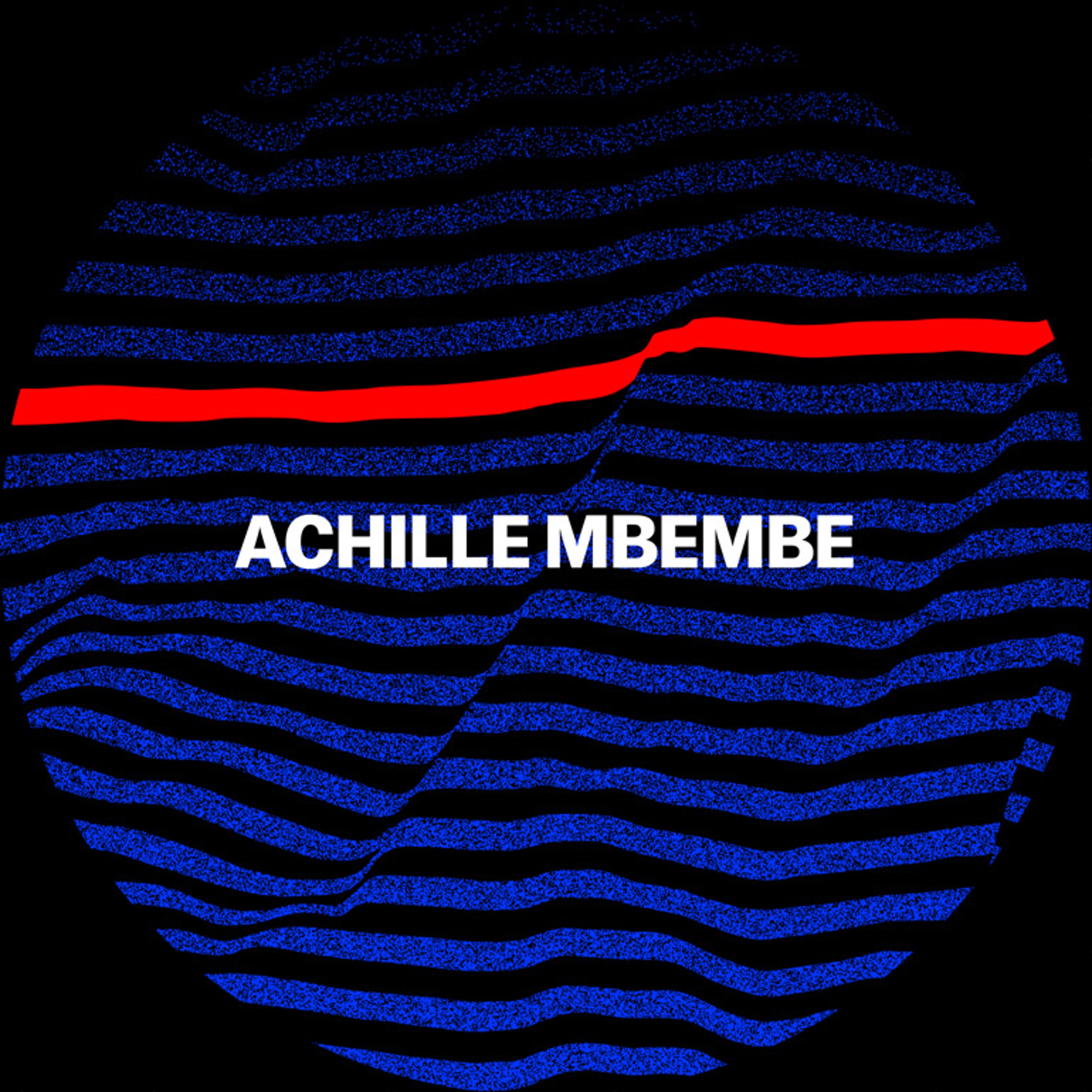


Achille Mbembe is a philosopher, political scientist and public intellectual and one of the world’s most profound critics of colonialism. His main interest is African history and politics, especially the idea of a “postcolony” that comes after decolonization; when a culture separates from colonial politics and the violence that it endures. Mbembe’s writing explores Afro-cosmopolitan culture and the artistic practices developed by the new culture; and Johannesburg as a metropolitan. His main goal is to change the perception of Africa and move beyond postcolonialism to a new, all encompassing cultural change.
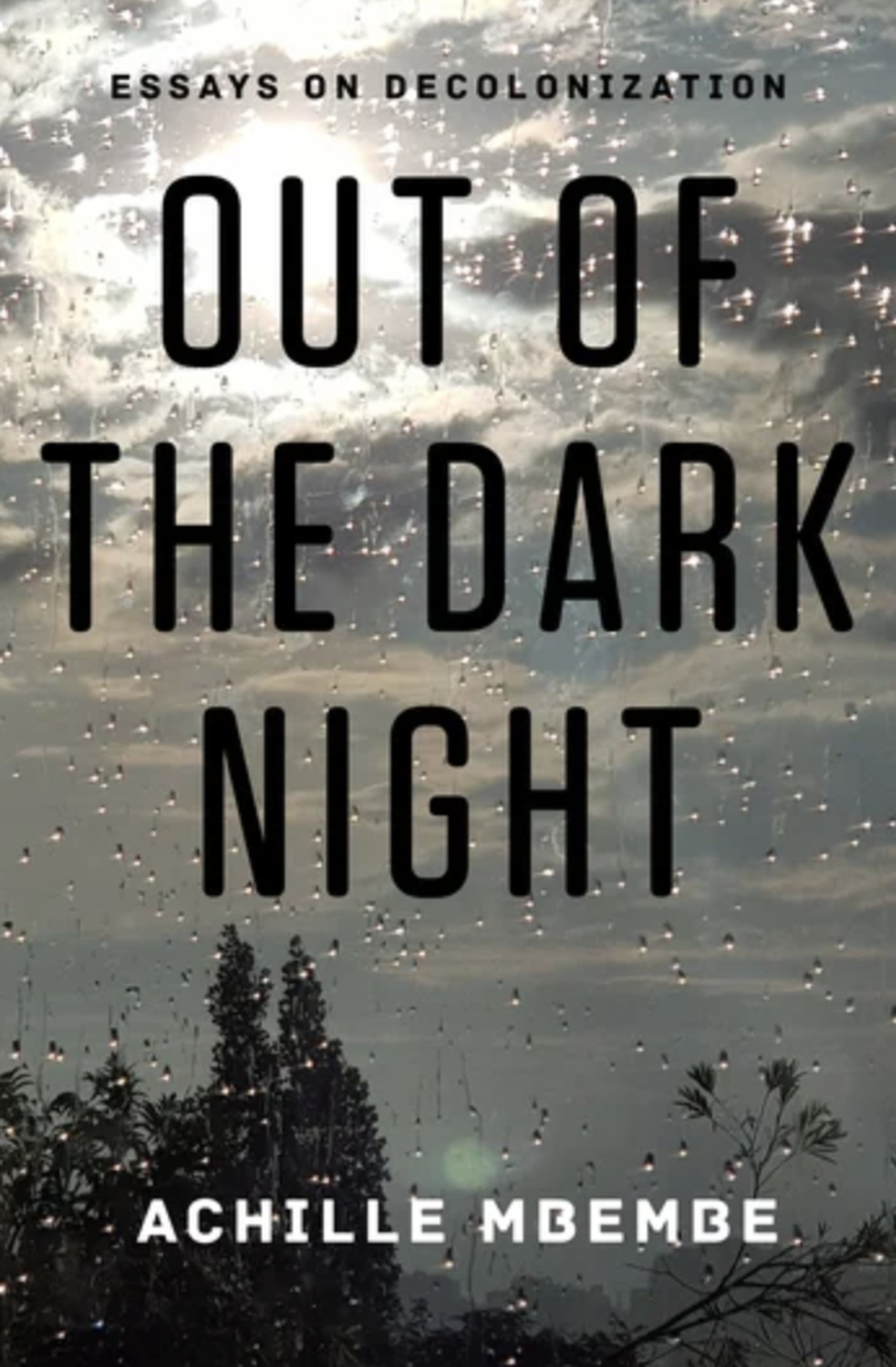
Achille Mbembe – Out of the Dark Night Essays on Decolonization (Columbia University Press)
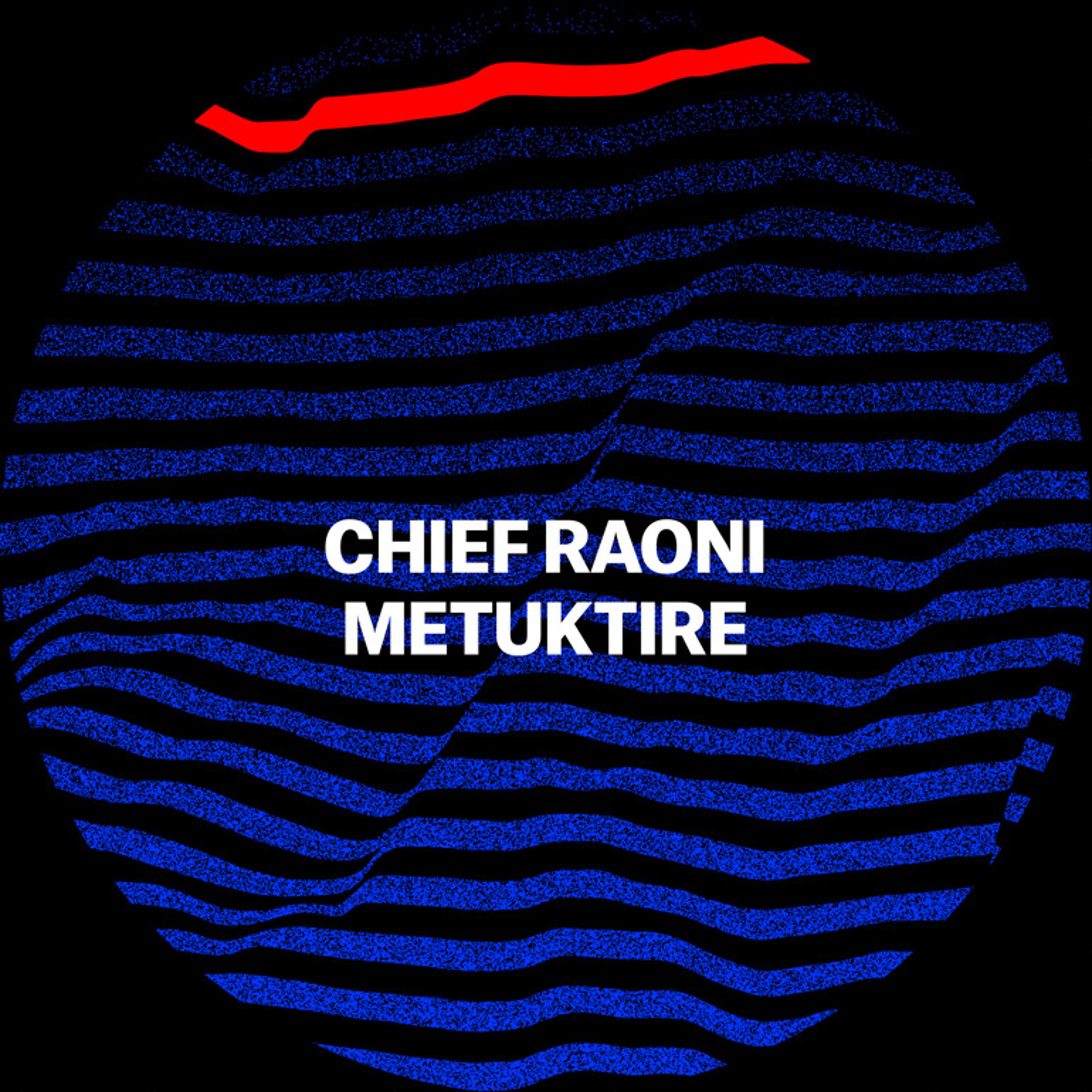


Brazil’s most venerated indigenous leader, the Kayapó chief and internationally known environmental campaigner, Raoni Metukire, is considered as a living symbol of the fight to protect nature and the rights of indigenous people. In the 1970s and ‘80s, Raoni was among the leaders of the fight against the BR-080 road, cattle ranchers and the Belo Monte hydroelectric dam complex. Isolated from the rest of the world until the twentieth century, the indigenous people of the Xingu region have fought to orally preserve their traditions for countless generations. With numerous international travels, meetings with world leaders and media appearances, Raoni found ways to connect these cultures with the world, while keeping appropriate stoicism, distance and dignity.

G0N1EE Brazilian indigenous chief Raoni Metuktire of the Kayapo ethnic group during the 1st World Congress on Environmental Law April 29, 2016 in Rio de Janerio, Brazil.
Raoni now seeks to help stop a surge in fires destroying the forest, which he has blamed on the government’s plans to develop the Amazon economically and assimilate its indigenous people. In 2019, his name was put forward as a candidate for the 2020 Nobel Peace Prize for his lifetime defense of the forest.



A visual activist working mostly with photography and video, Zanele Muholi is dedicated to increasing the visibility of black lesbian, gay, transgender, and intersex people. They researched and documented the stories of hate crimes against the LGBTQI community in order to bring rape and assault cases to public attention. They recorded more than 50 cases of rape involving black lesbians in South Africa. In 2012, Muholi’s flat was robbed resulting in five years’ worth of photos and video being stolen. Still a traumatic event for Muholi, the robbery only targeted the photographs and videos documenting the rape cases.
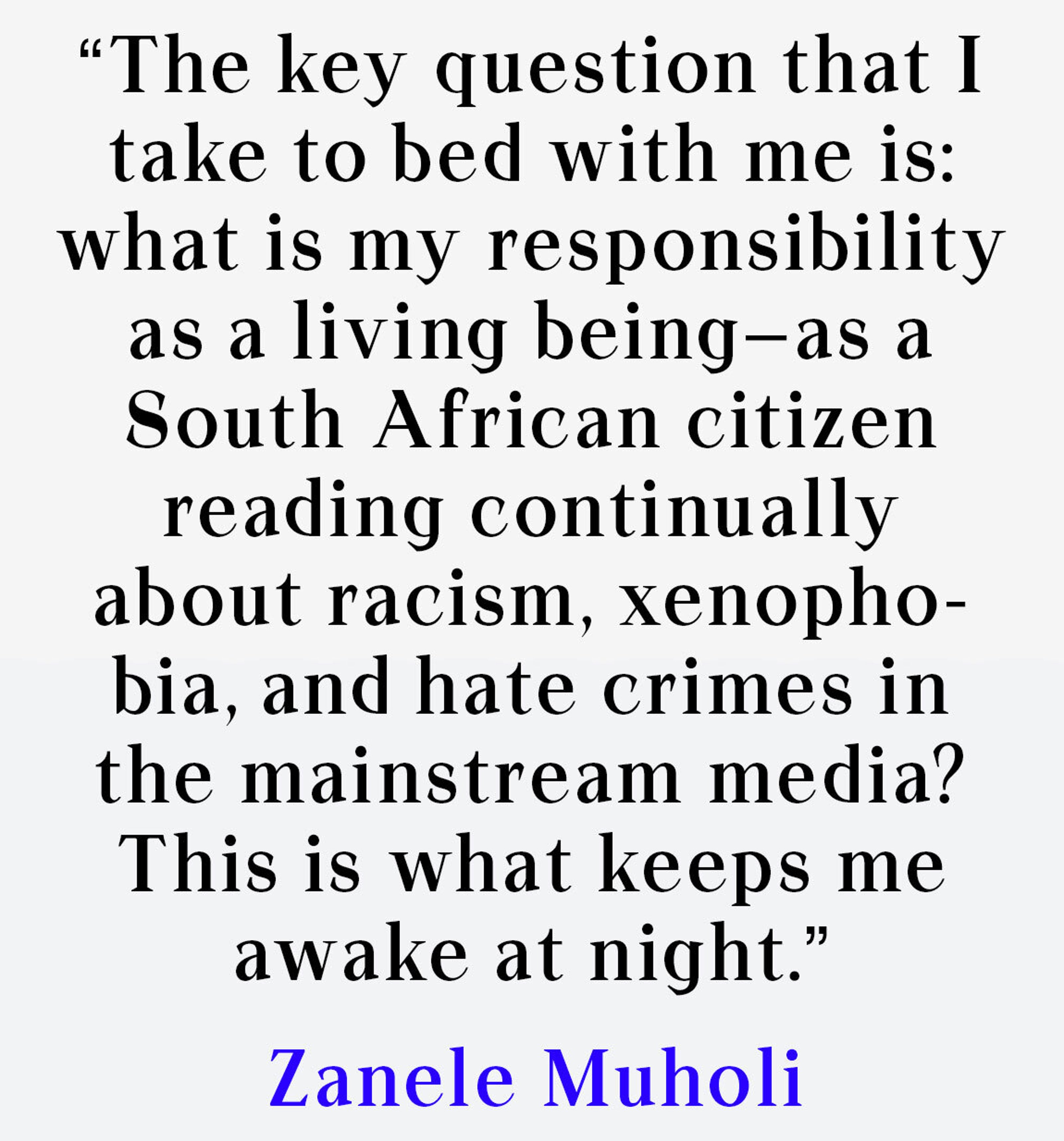
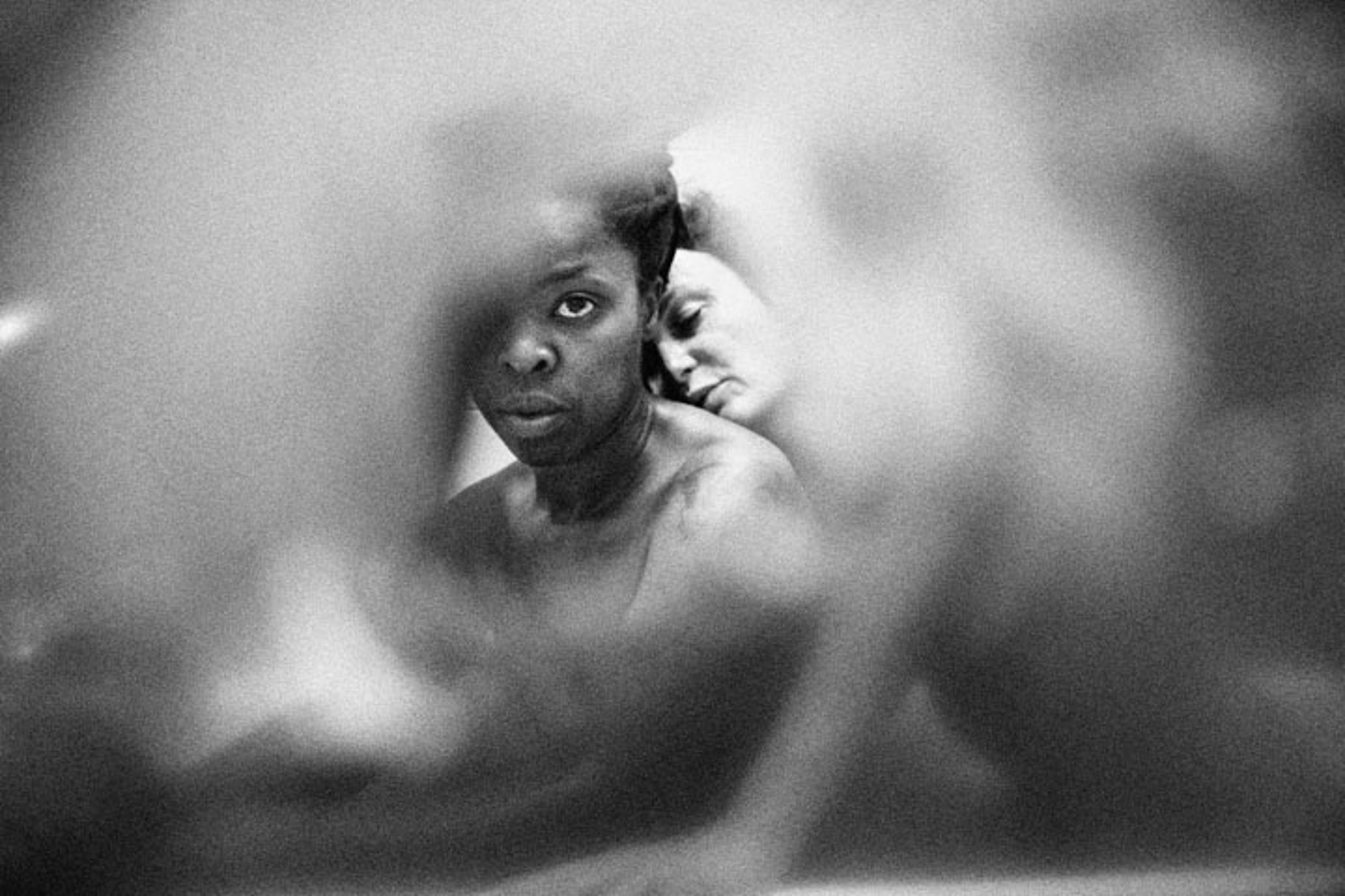
Zanele Muholi – ZaVa I. Paris, 2013 (courtesy STEVENSON
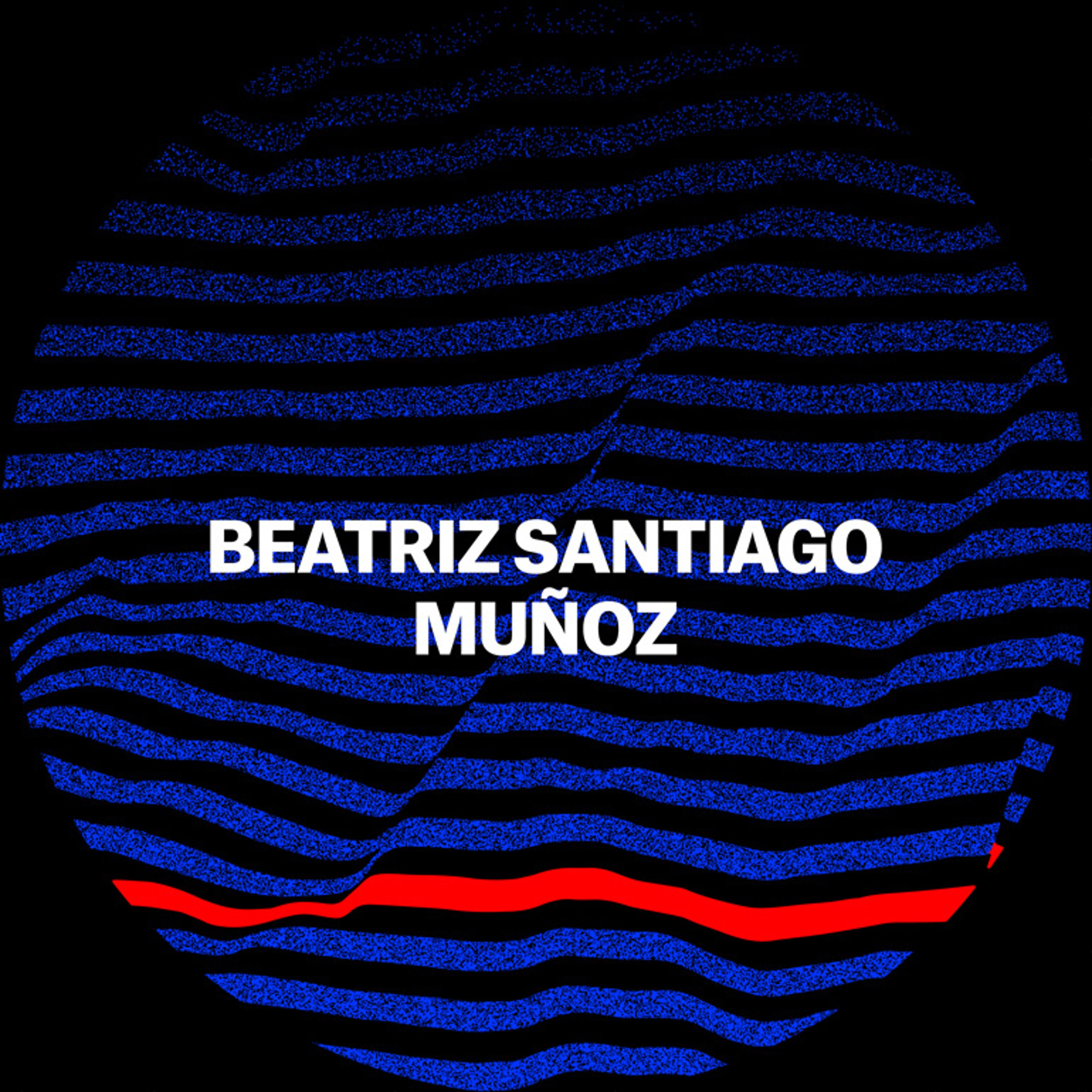


Beatriz Santiago Muñoz is a Puerto Rican filmmaker, with a focus on narratives of post-colonialism in the Caribbean. Her films are results of long periods of observation, documentation and research; she puts deliberate attention to political and social structures within the community and culture she sets out to film. Her documentary style also contemplates the aesthetic implications of documentation, where the artist’s intervention into daily life straddles the line between reality and fiction. Muñoz works with non-actors and reenactments, the performances she gets from the participants are improvisatory stories about cultural events, mythologies and histories.
Excerpt from Beatriz Santiago Muñoz – Matrulla 2014
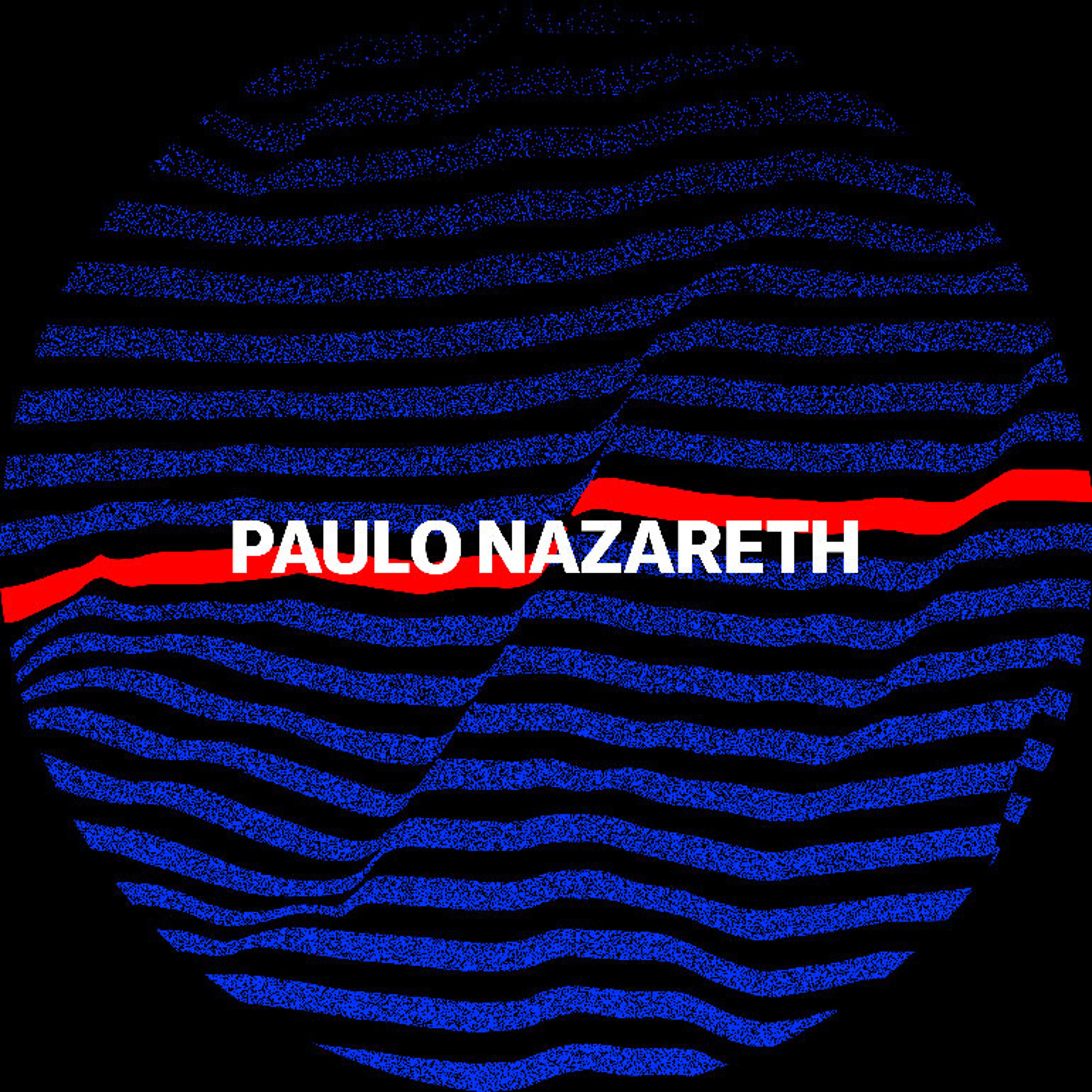


Paulo Nazareth is a Brazilian artist of African and indigenous descent, creating works that relate to the individual and their surroundings, body and culture; with performances where he takes the role of a flaneur to extremes. For his project Notícias de América (News from the Americas) (2011-12) Nazareth traveled from a favela in Belo Horizonte, Brazil–where he grew up–through Central America all the way to New York, mostly by foot, sometimes by bus or train. He arrived in New York, only to wash his feet in the Hudson River and set his course back to Belo Horizonte by foot again. He spent 10 months on the road, documenting his journey through videos, photographs and documents, which he posted on a blog that he updated daily while traveling. Another path that he has set for his project Cadernos de Africa (Notebooks of Africa) (2013-ongoing) is multiple roads between Johannesburg and Lyon, tracing back old slave routes. As Nazareth reveals problematic histories, economic disparities, state violence and racial tensions that he encounters along the way with his travels, his approach is very casual and relaxed, even humorous; an aloof traveler in a strict world, showing how boundaries and borders can afford to be flexible.

Paulo Nazareth – Untitled, from the series “Noticias de America” (Notes from America), 2011 – Courtesy Mendes Wood
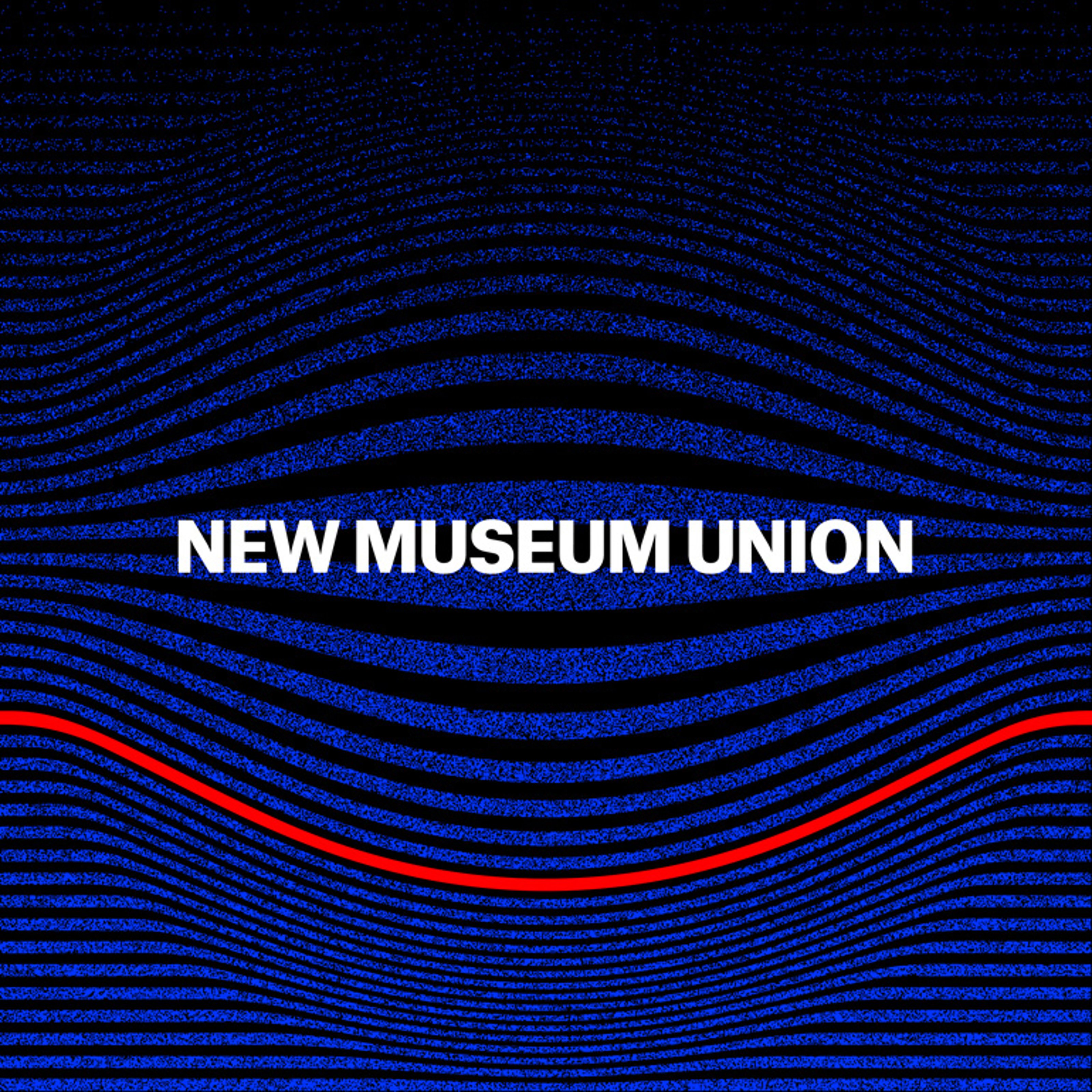


“By unionizing, we establish the legal right as a group of employees, to collectively bargain for a union contract to cover our terms and conditions of employment. Without a union, management makes all of the decisions about our employment and our role is advisory at best. In organizing, we join thousands of other unionized administrative, technical and professional workers throughout New York City who have also organized. Unsurprisingly, when employees unionize, their jobs generally pay more than non-union jobs and they get better healthcare and other benefits. Unionized staff at the Museum of Modern Art and at other cultural and educational institutions have been able to address their wages, benefits, and rights at the workplace effectively through collective bargaining.”
– From newmuseumunion.org
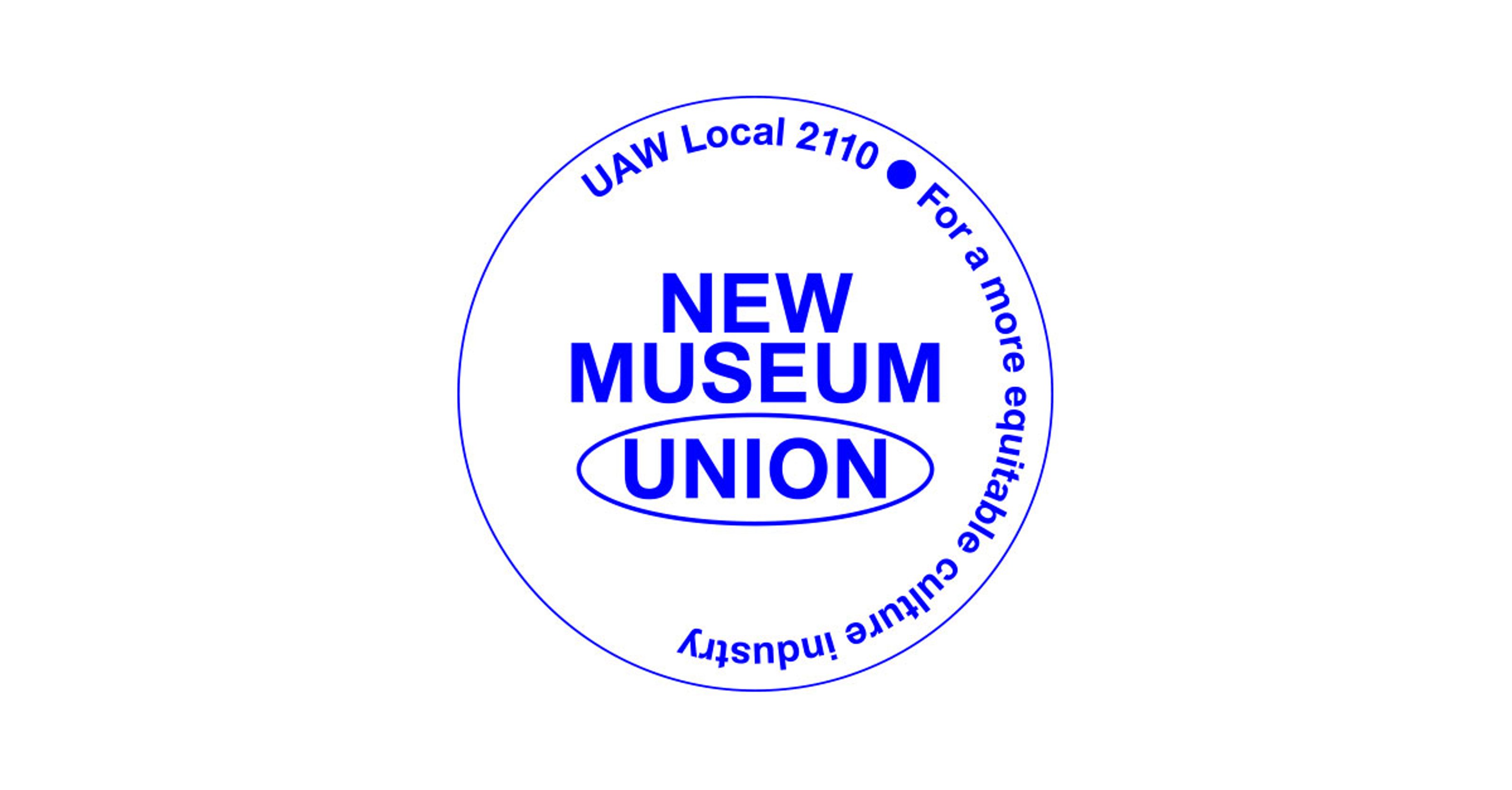



An artist who explores the notion of land as a place of non-belonging and provides an alternative meaning to the social ideas of identity; an iconic artist who decided to step away from exhibiting or selling new work, a decision seen as a stand against the current state of the art world itself; a self-organized space for squatters and refugees, providing shelter to anyone that seeks it, a radical act in the current landscape of Greece; an artist who received threats and had to flee his country after his work criticized the Catholic Church for its perpetuation of racism and poverty; a politician whose progressive policies have gathered attention from both sides of the political spectrum, with Republican politicians vilifying her and her working-class roots; a platform that exposes good and bad practices of art institutions and galleries; an artistic collective whose work explores the demand for a space of safety that exists outside of disagreement; an artist who investigates the secret political geography of bases off the map, the NSA and the Pentagon; an artist whose practice has laid out a poignant, poetic and everlasting articulation of otherness, racism and additional forms of ostracism; an artist whose performances remove boundaries between the arts and the public.



Artist Otobong Nkanga’s practice includes drawing, photography, installation, video and performance. She explores the notion of land as a place of non-belonging and provides an alternative meaning to the social ideas of identity. Paradoxically, she brings to light the memories and historical impacts provoked by humans and nature. The artist’s research unites all of the various components that make up our environment, observing the inherent complexities of resources like soil and earth and their potential values in order to provoke narratives and stories about the land. Her work has been included in institutional group exhibitions such as 58th International Art Exhibition – La Biennale di Venezia, Venice (2019); Sharjah Biennial 14: Leaving the Echo Chamber, Sharjah (2019) and many more.
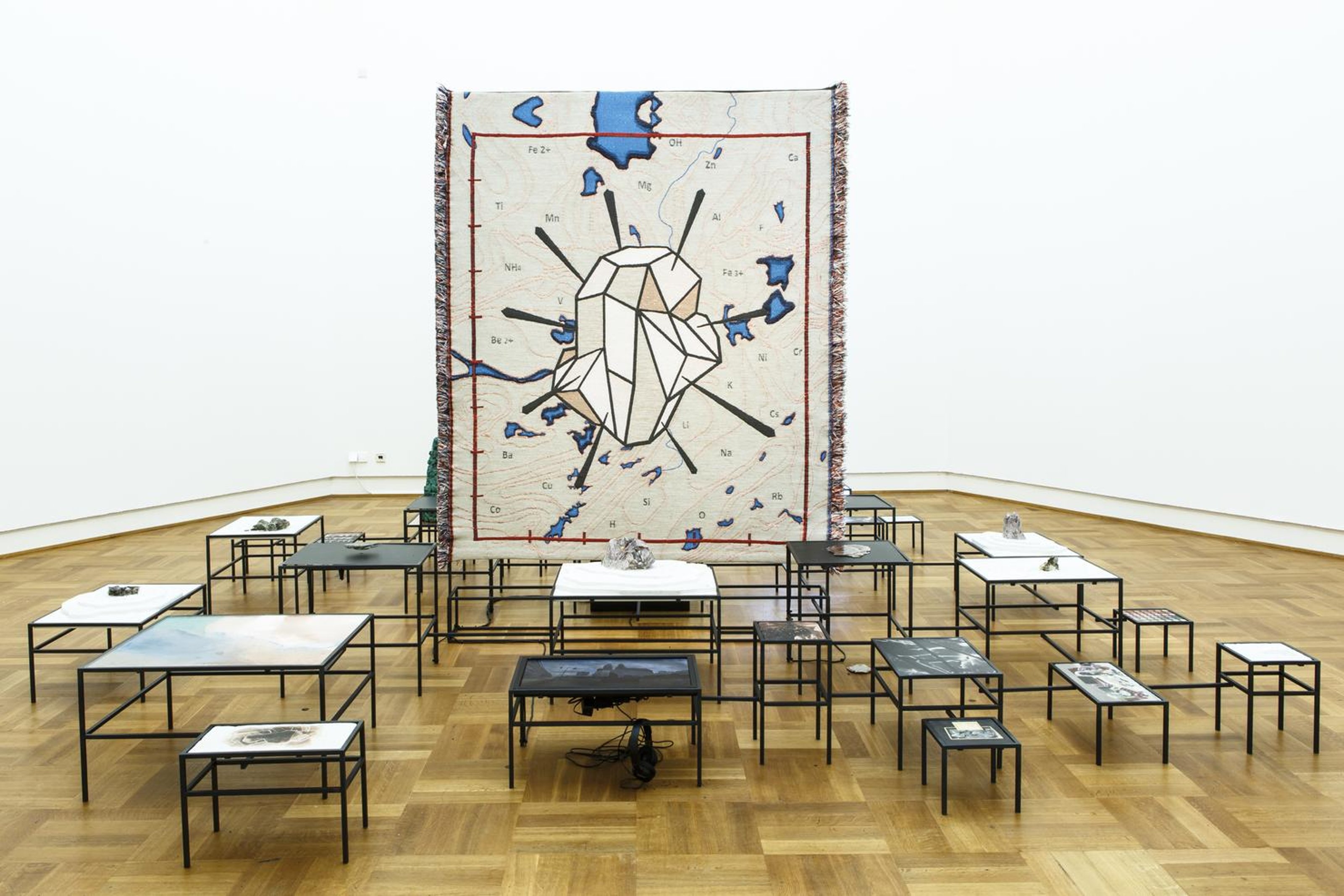
Otobong Nkanga – In Pursuit of Bling, 2014 (ink-jet prints, lightbox, metal modulated structure, minerals, objects, texts, videos with sound, and woven textile pieces) Courtesy of the Stedelijk Museum, Amsterdam and the Museum Arnhem



Cady Noland is a conceptual artist working with installation and sculpture, using symbols of American culture; flags, Budweiser cans, celebrity tabloid stories, juxtaposed with objects like guns, handcuffs and chains that denote violence. Lee Harvey Oswald, the Manson family and Richard Nixon are some of the figures that appear in her works. Noland looks into what she calls “the American Nightmare,” where public scandals and deteriorating economic circumstances push the country into more of the darker corners of their collective cultural psyche.
Noland is also very controlled with the authorship of her work, she has prevented the sale of some of her works, disrupting the sale by claiming her works aren’t authentic or damaged. She has also professed discomfort at how her installations are misrepresented and has decided to step away from exhibiting or selling new work, a decision met with surprise in the art world. Her decision can be seen as a stand against the current state of the art world itself.
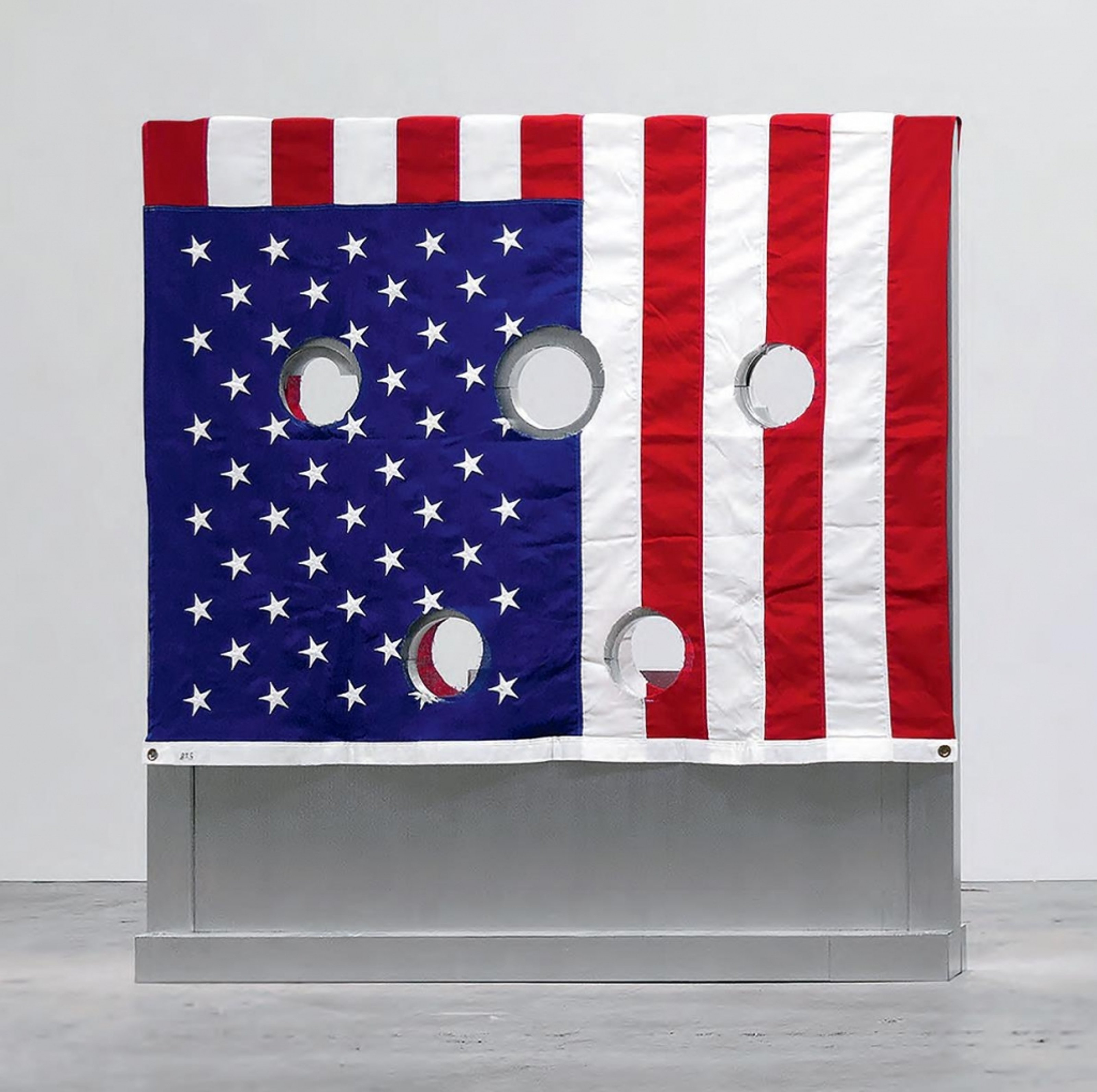
Cady Noland – Gibbet, 1993-1994 (aluminum, wood, fabric) Courtesy MMK Frankfurt
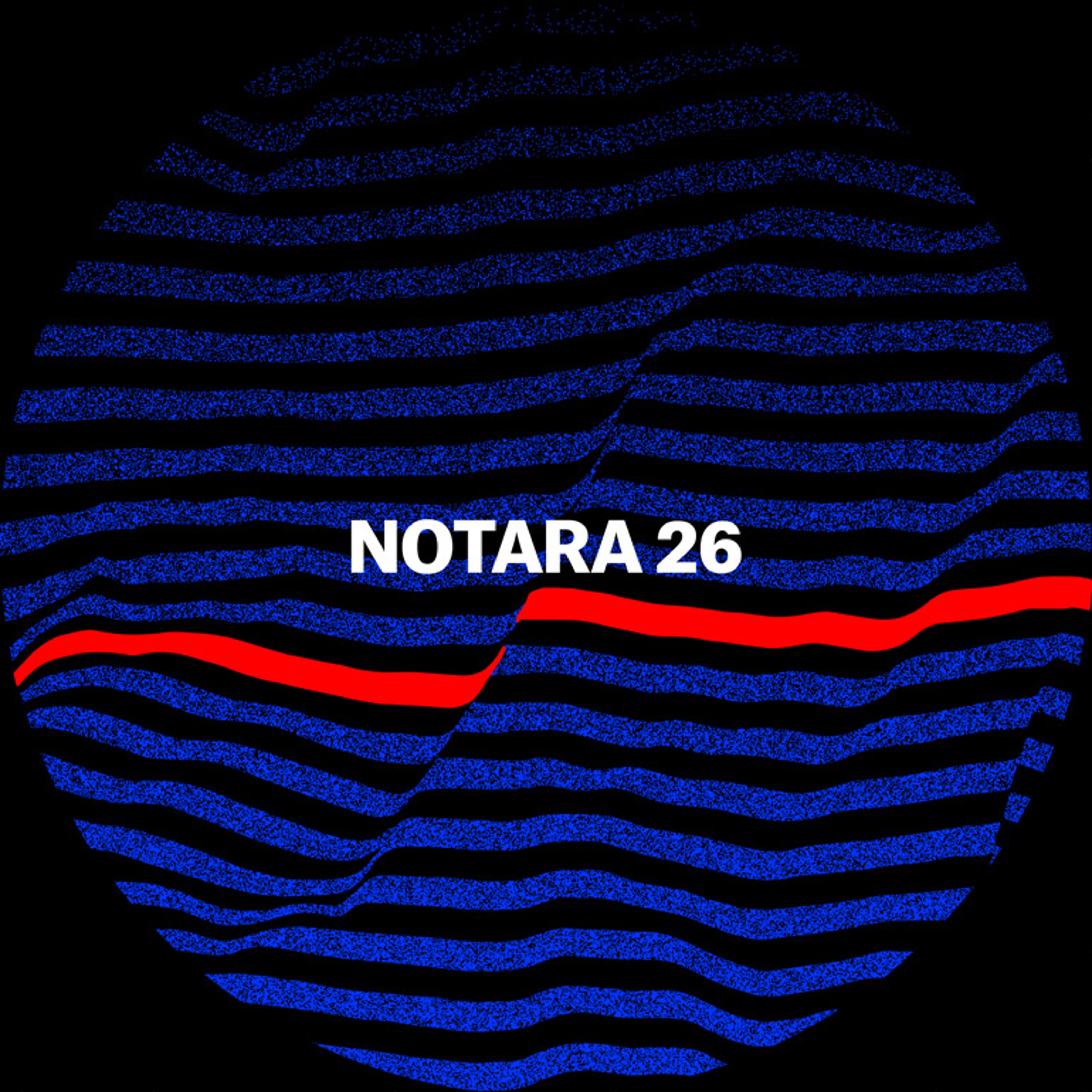


Notara 26 is a self-organized space for squatters and refugees, providing shelter to anyone that seeks it, a radical act in the current landscape of Greece. Notara 26 was the first squatting location in Athens’ Exarcheia neighborhood, where leftist communities started settling in to protect the rights of refugees against police raids and state interventions. Until 2019, Notara 26 had provided shelter to more than 9000 people from 15 different countries. As Notara 26 puts it, they provide solidarity not charity.
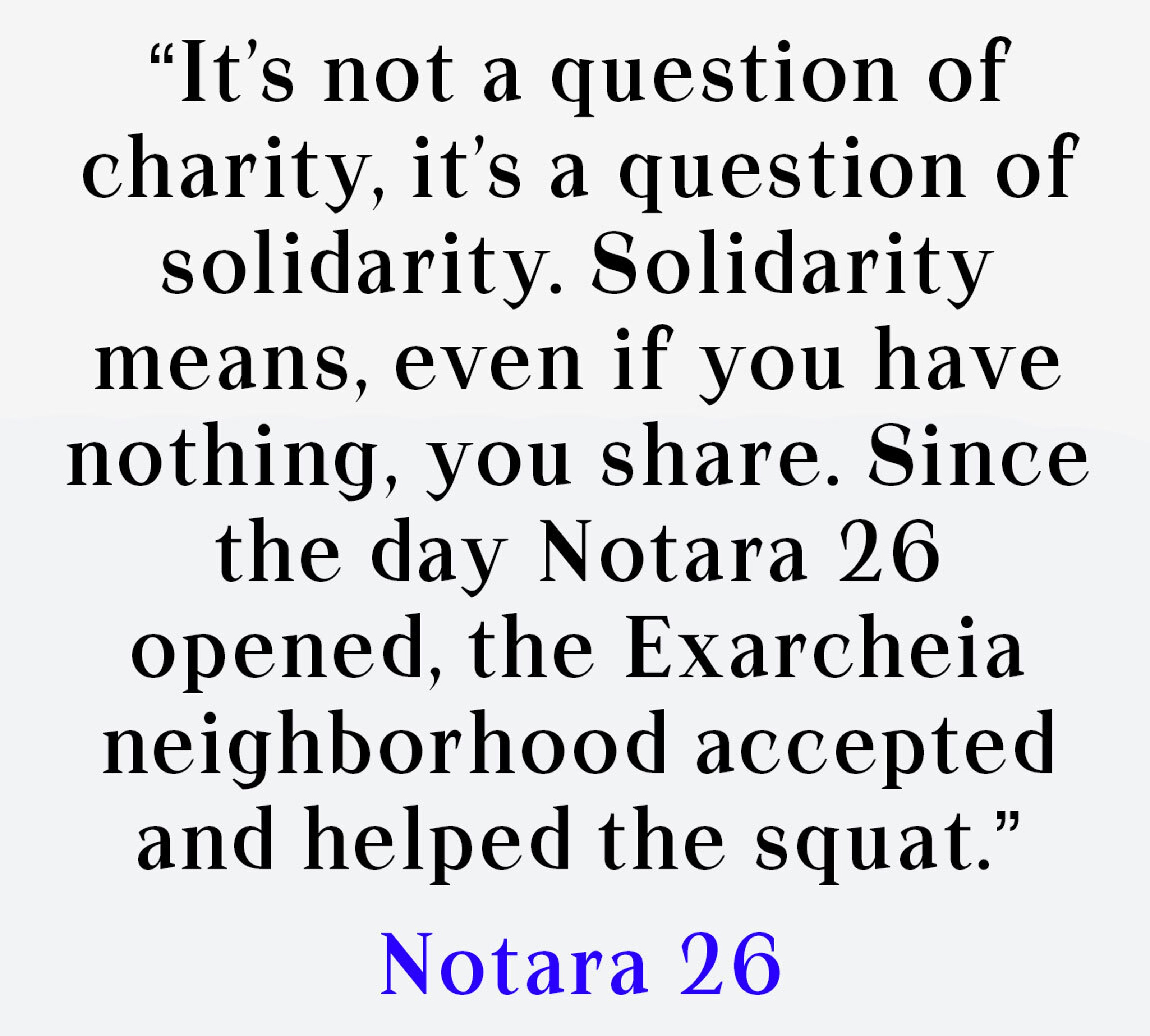
The Hellenic (Greek) Coastguard attempting to capsize a boat full of refugees before shooting at them and attacking them with sticks in March 2020.
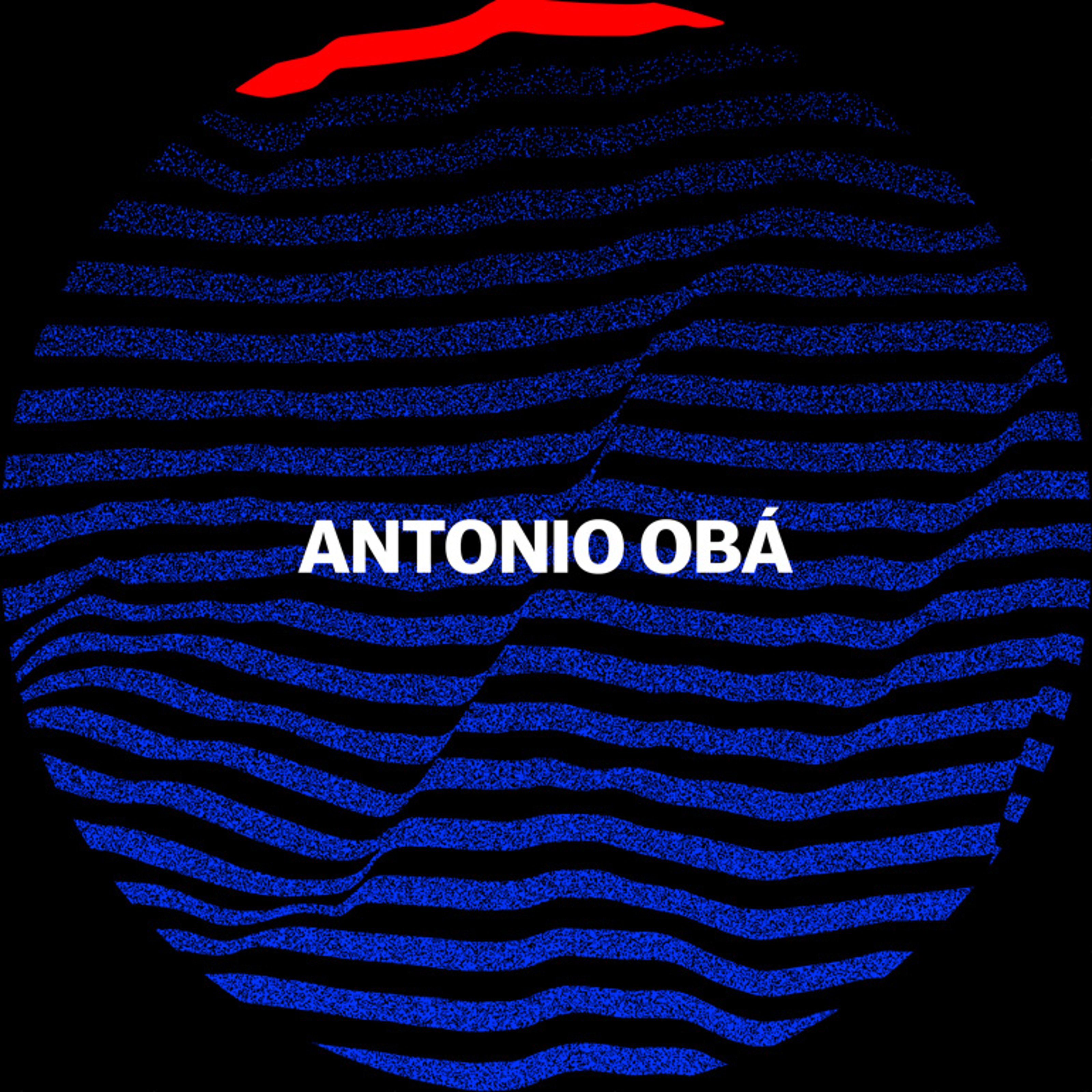


Antônio Obá’s artistic practice involves a variety of media, from performance to installation, sculpture and painting. Obá’s work aims to investigate the cultural composition of Brazil, with its contradictions and influences that make up the national identity; which Obá puts under scrutiny. He utilizes religious and cultural icons in his illustrations to explore Brazilian racial and political identity and the erasure of the black element in Brazil’s identity and history. Obá also takes his own body as a medium, with ritualistic performances, questioning the marginalization and erotization of the black male body in Brazilian culture.
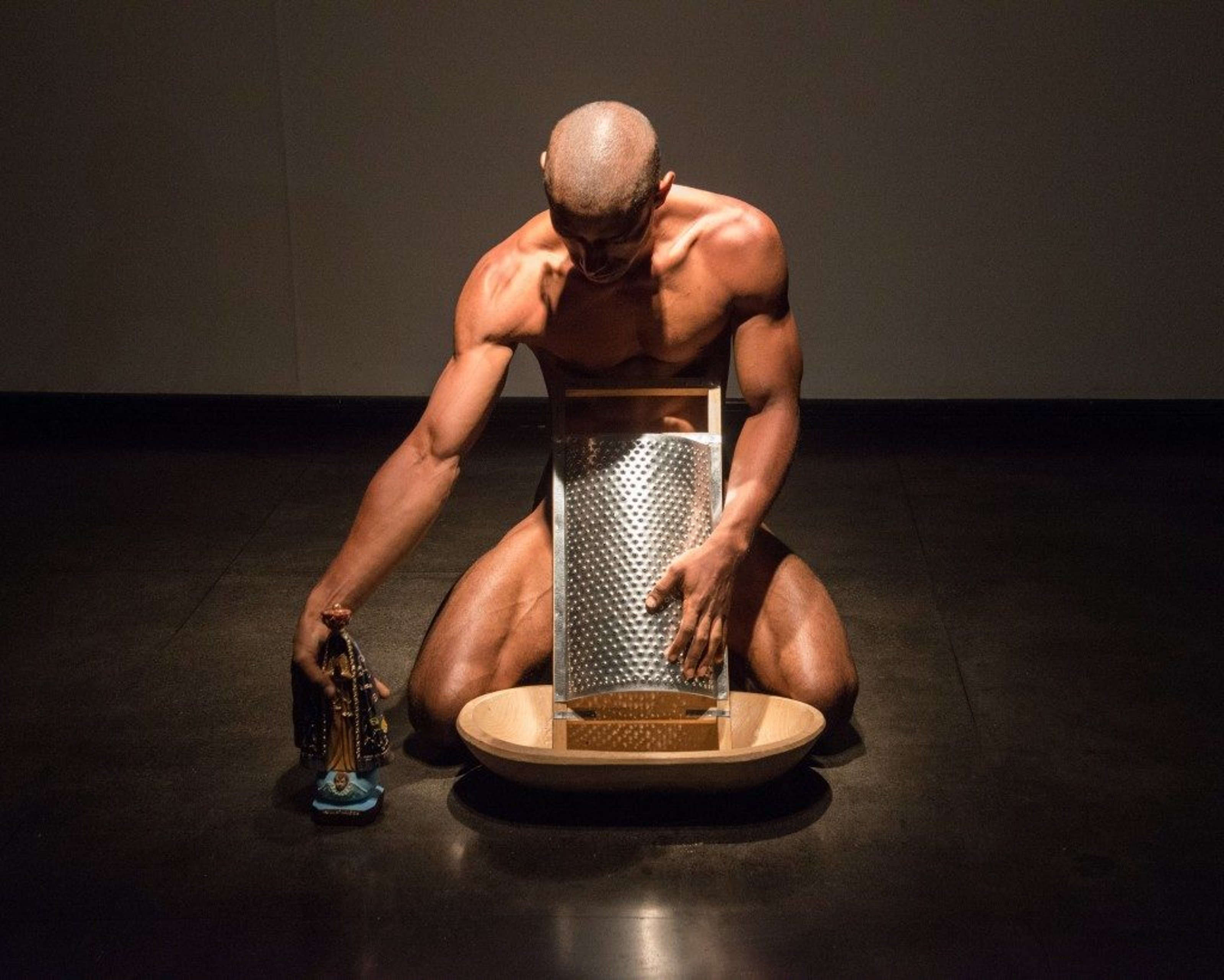
Antonio Obá – “Acts of Transfiguration: Disappearance of a Recipe for a Saint” (2015) During the performance, Brazilian artist, Oba grinds a Virgin Mary statue into powder and pours it over his body—a criticism of the Catholic Church for its perpetuation of racism and poverty. (courtesy PIPA Prize)



Alexandria Ocasio-Cortez is the Representative for New York’s 14th Congressional District. In 2018, she won the title with a grassroots campaign and became the youngest woman ever to serve in the U.S. Congress. Her progressive policies, including the Green New Dealand Medicare for All, have gathered attention from both sides of the political spectrum, with Republican politicians vilifying her and her working-class roots.

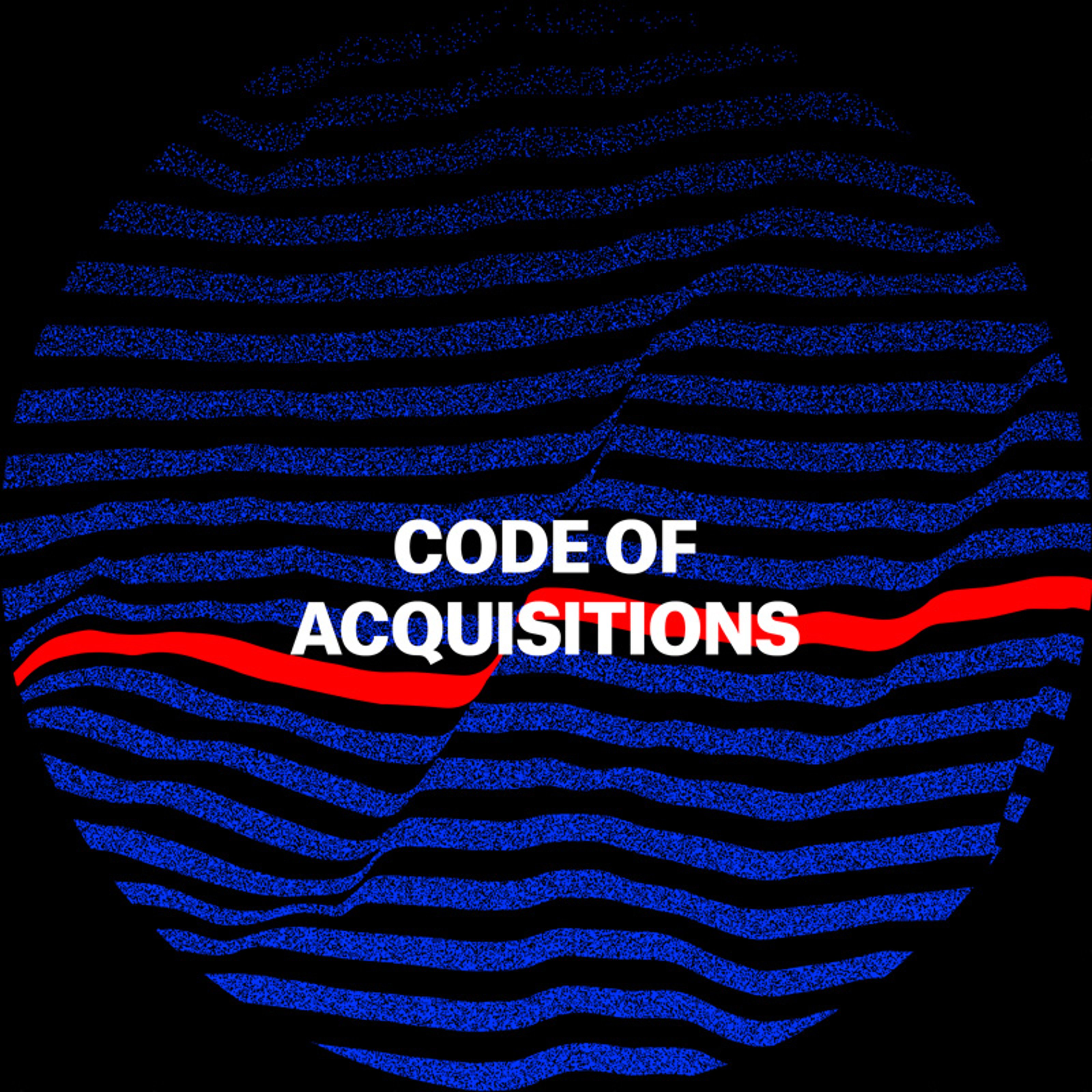


Ahmet Ogut and Burak Arikan hold practices in their own right. Joining forces, they initiated the platform Code of Acquisitions, an ever timely project where no institution and gallery is out of sight. As their manifesto states: Code of Acquisitions is a platform that exposes good and bad practices of art institutions and galleries based on published policies as well as cases of misconduct and abuse, where artists are not paid, not told the truth after sales, or did not get back their works. Often a legal action is not possible to solve the conflict because of the precarious conditions of artists, and particularly because of a lack of establishing an individual juristic act overseas.
The Code of Acquisitions platform allows anyone to submit their cases anonymously or openly. Cases could range from gender and race discrimination to misconduct of payments. These submissions contribute to a database of conflicts, codes, and interactive visualizations that will increase awareness about the issues and hold organizations accountable through their reputation.
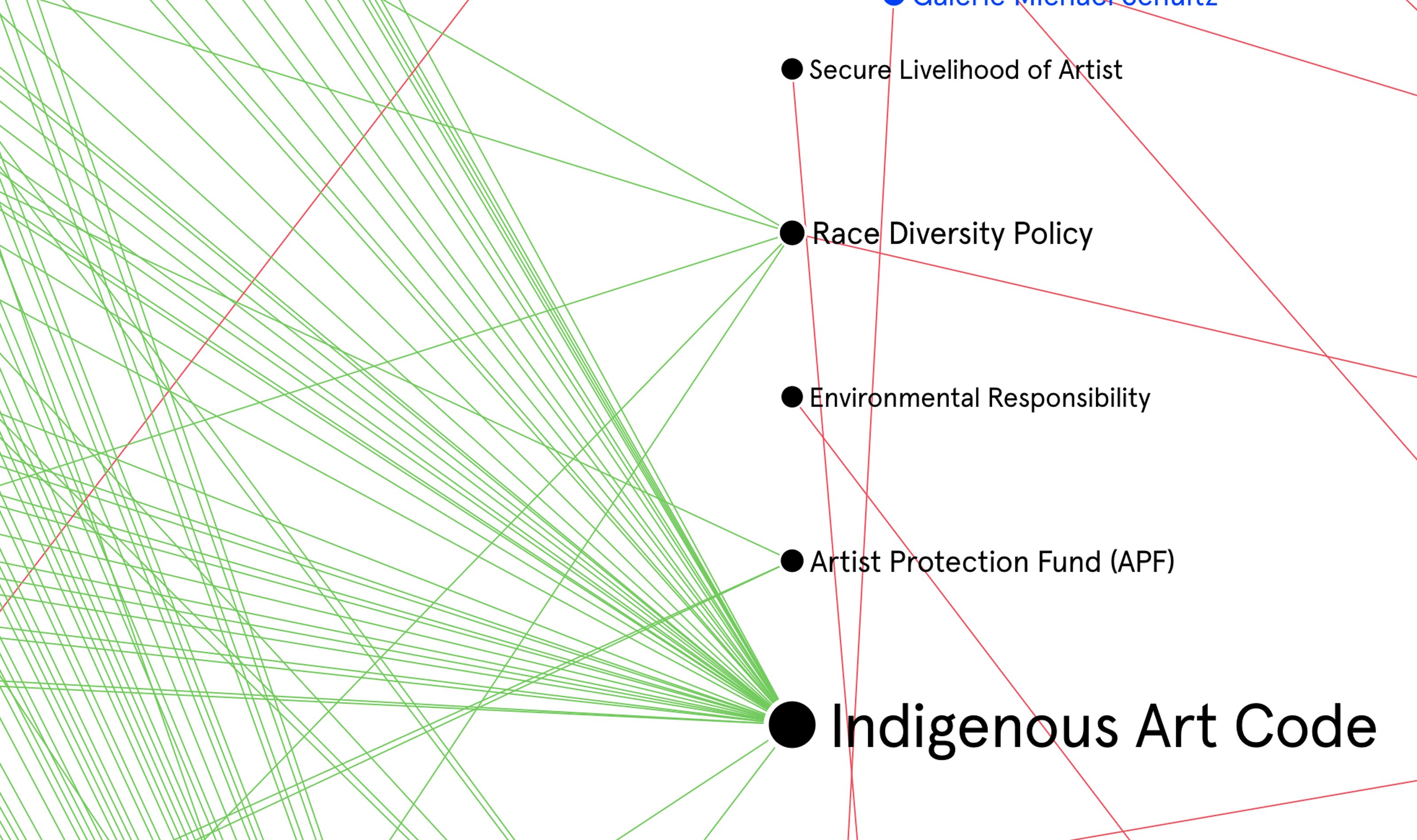
Screenshot from Code of Acquisitions website



The Otolith Group was founded in 2002 and consists of Anjalika Sagar and Kodwo Eshun who live and work in London. During their long standing collaboration The Group have drawn from a wide range of resources and materials. Their work is research based and spans the moving image, audio, performance, installation, and curation. They incorporate film making and post-lens-based essayistic aesthetics that explore the temporal anomalies, anthropic inversions, and synthetic alienation of the posthuman, the inhuman, the non-human, and the complexity of the environmental conditions of life we all face. In their 2006 work “Be Silent, For The Ears Of God Are Everywhere” the collective explores the demand for a space of safety that exists outside of disagreement. This space understands itself to be post-political; irreducible to nationalism, fundamentalism, liberalism and New Ageism.

Otolith Group – Be Silent, For The Ears Of God Are Everywhere, 2006



Trevor Paglen’s practice is focused on state surveillance and data collection. With a training in photography and a PhD in geography, Paglen investigates the secret political geography of bases off the map; like military bases, the NSA and the Pentagon. Paglen travels to the edges of legal zones, before it’s illegal to trespass into military territory, to take pictures of these symbols of secrecy and control. In order to photograph them he uses a special astro-telescopic lens, using similar surveillance techniques, watching these institutions from afar. His photographs reveal the elusiveness of these institutions and alludes to their inner workings, how they conceal and reveal information to the public.
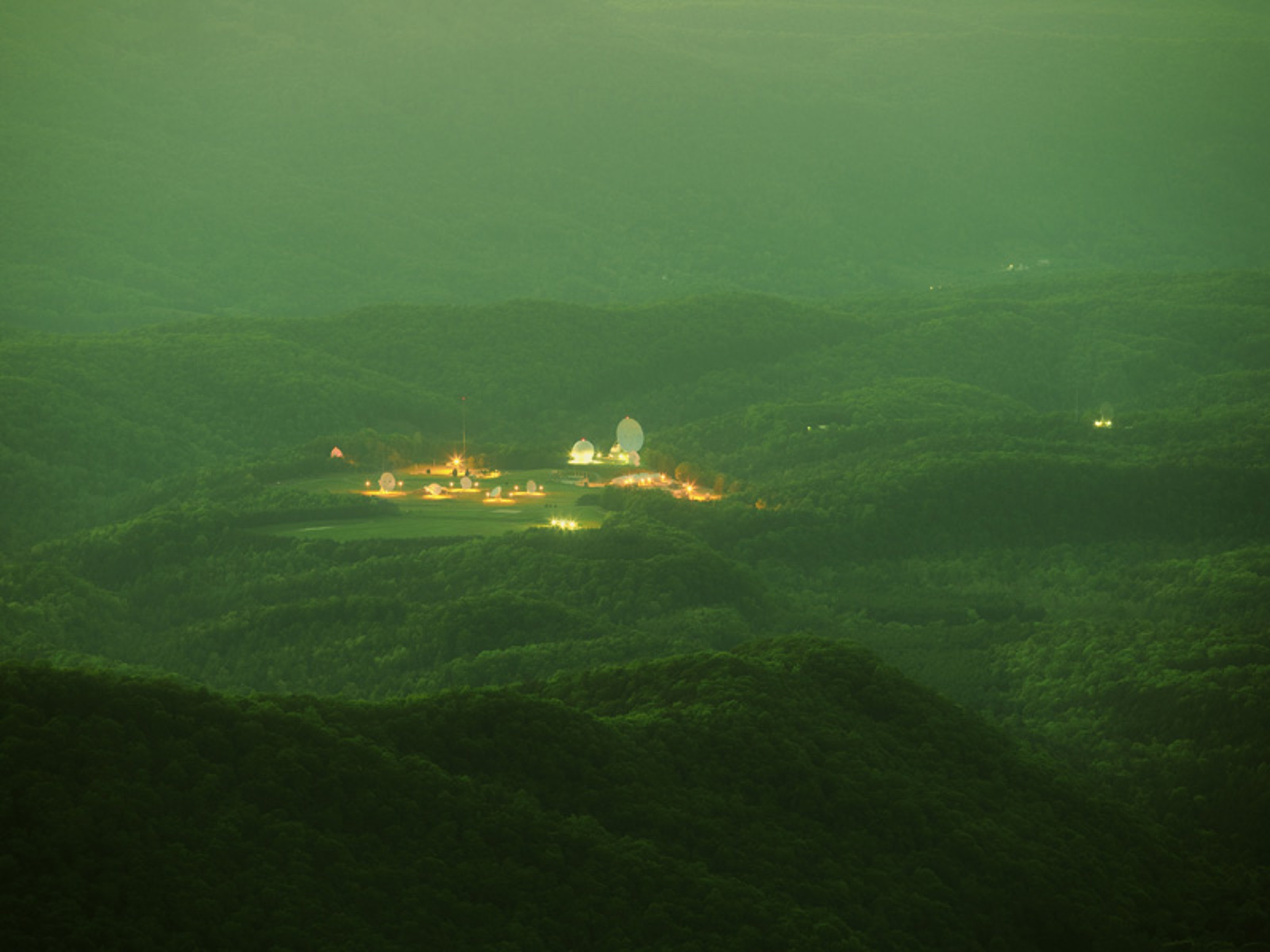
Trevor Paglen They Watch the Moon, 2010 (c-print) Courtesy Metro Pictures
This photograph depicts a classified “listening station” deep in the forests of West Virginia. The station is located at the center of the “National Radio Quiet Zone,” a region of approximately 34,000 square kilometers in West Virginia and parts of Maryland. Within the Quiet Zone, radio transmissions are severely restricted: omnidirectional and high-powered transmissions (such as wireless internet devices and FM radio stations) are not permitted. The listening station, which forms part of the global ECHELON system, was designed in part to take advantage of a phenomenon called “moonbounce.” Moonbounce involves capturing communications and telemetry signals from around the world as they escape into space, hit the moon, and are reflected back towards Earth. The photograph is a long exposure under the full moon light.



Born in 1948 in New York, Adrian Piper is an artist and philosopher. Her practice has laid out a poignant, poetic and everlasting articulation of otherness, racism and additional forms of ostracism. In the 1970s, Piper began a series of performances presented in the public realm, often using the street as a forum for exhibition. Seeing her paint her clothes white and holding a sign ‘Wet Paint’; going to department stores to shop for gloves and sunglasses; and visiting a museum while chewing gum and holding a purse full of ketchup – most of these performances remained unnoticed but resulted in challenges to the order of the day. Her practice extends to writing and many of her published texts see issues running throughout her other work forwarded in a more philosophical yet pointed way.
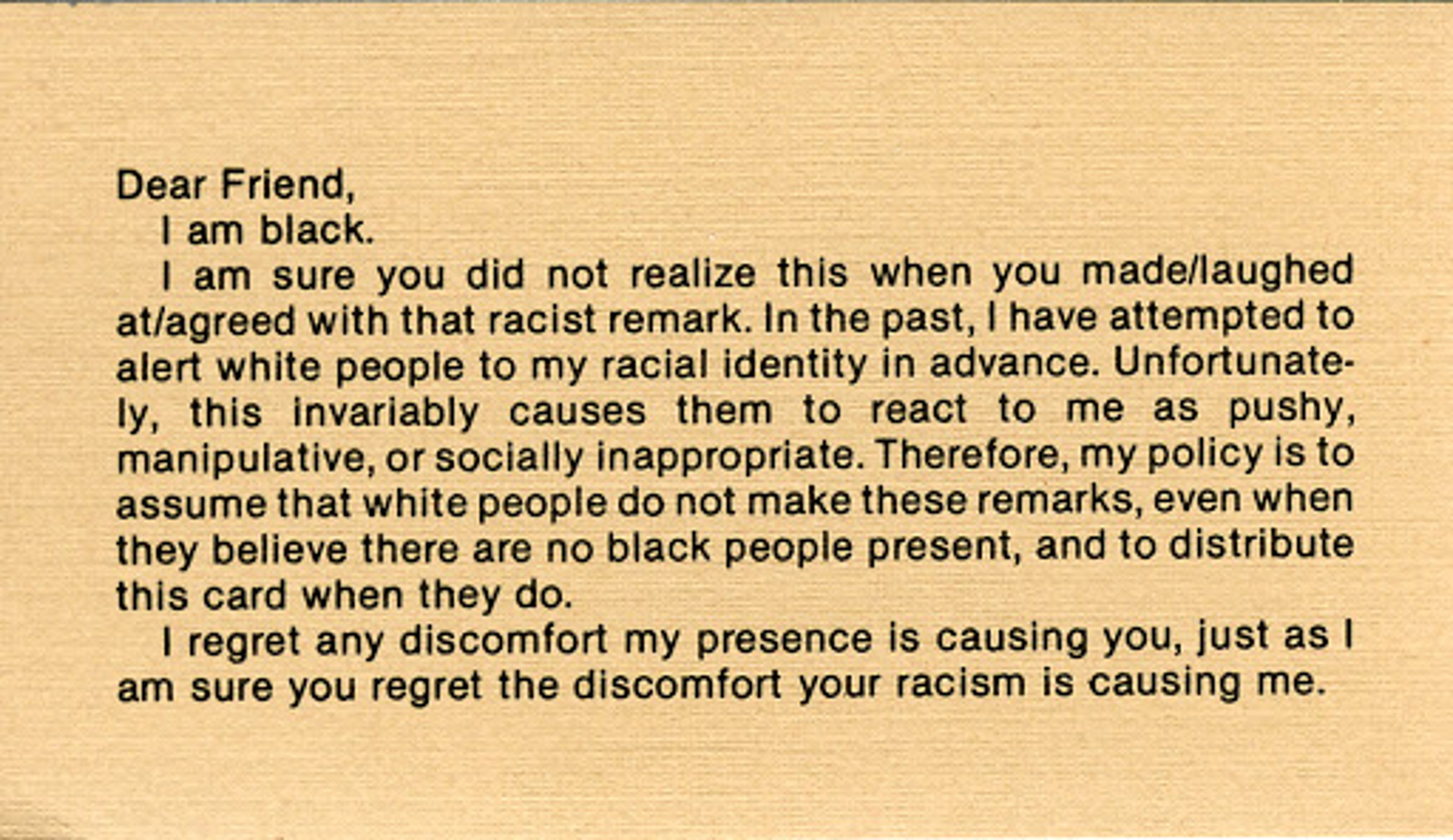
Adrian Piper – My Calling (Card) #1 (for Dinners and Cocktail Parties), 1986-1990 Performance prop: business card with printed text on cardboard



William Pope.L is known for his provocative public interventions and performances. His performances often happen in the streets, removing boundaries between the arts and the public, as well as the boundaries of performance art. He is most famous for his “crawls,”endurance tests that reveal disparities within a society, of race, class and power imbalances. He started his series of crawls in 1978, crawling through Times Square by himself, wearing a business suit. Since then he has conducted 30 international crawls, some alone and some with participants. His latest crawl occurred in 2019, where volunteering participants crawled through Greenwich Village wearing blindfolds handed by Pope.L. This was the largest group participating in his crawls in the last four decades that he’s performed them.
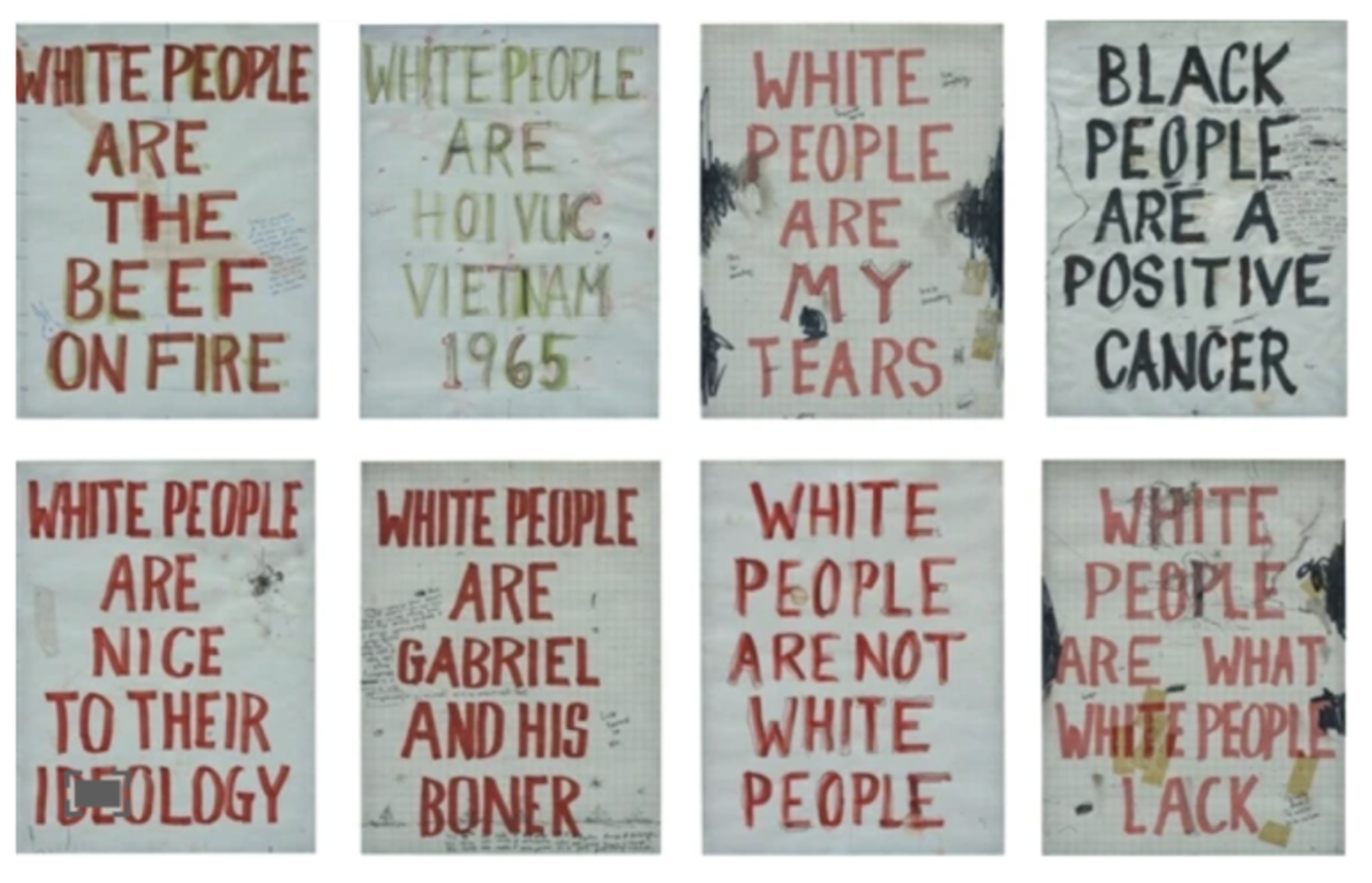
William Pope.L – Eight works: White People are the Beef of the Fire; White People are Hoi Vuc Vietnam 1965; White People are my Tears; Black People are a positive cancer; White People are nice to their Ideology; White People are Gabriel and his Boner; White People are not White People; White People are what White People lack, 2001
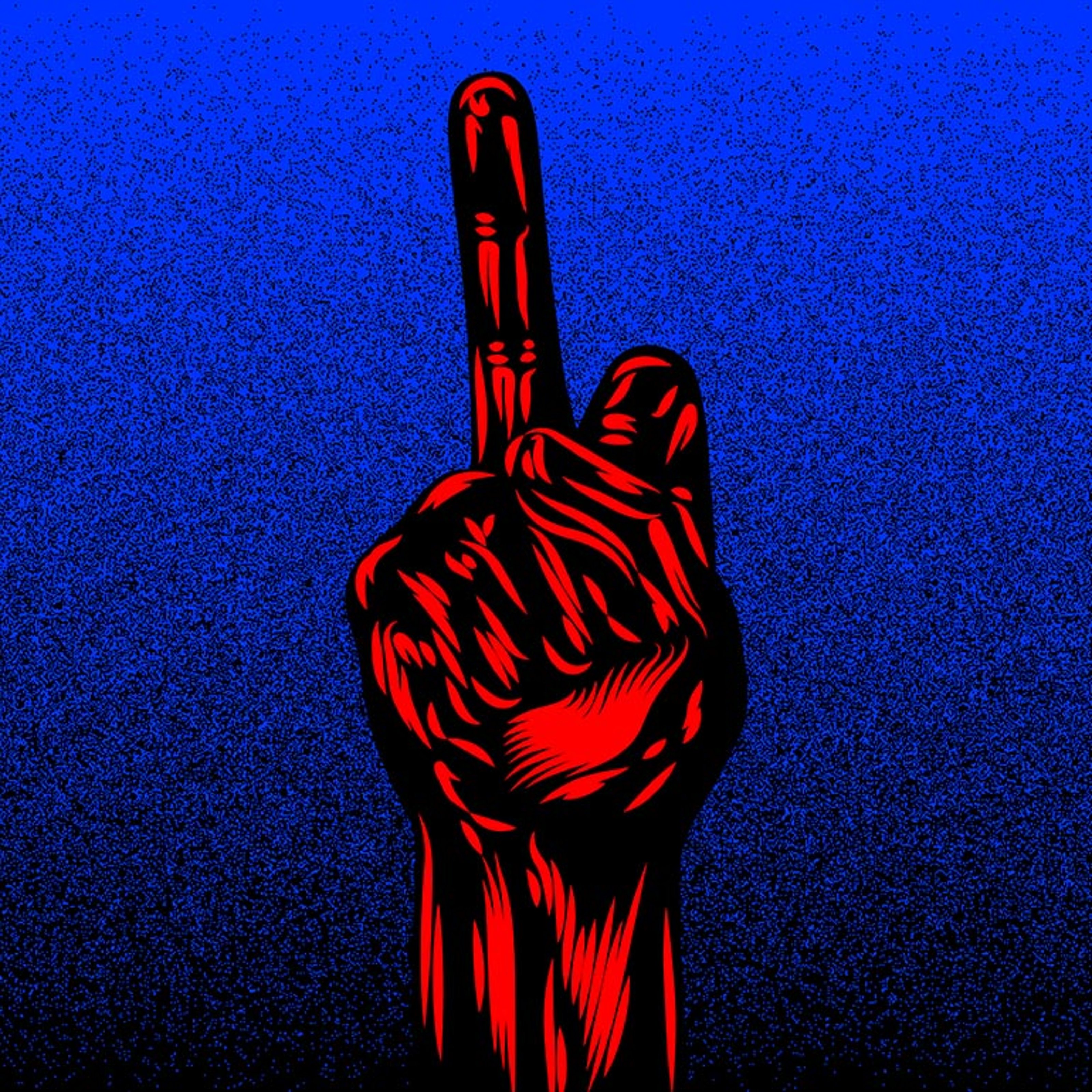


A feminist punk band whose performance grabbed worldwide attention after their protest against Putin in an Orthodox church; an artist whose exploration of conflict within the Arab world pertaining to forces of dictatorship as well as the social construct of history and education is presented in universal messages; a captain whose decision to disobey authorities and put human life above political agendas is a beam of hope within this humanitarian crisis; a New Delhi based collective whose practice and research focuses on globalization, forced migration, urban redevelopment and their socio-economic effects; an organization that created a virtual hub on the popular game Minecraft, housing a collection of otherwise inaccessible journalism from all over the world, with specific sections devoted to Russia, Egypt, Mexico, Saudi Arabia, and Vietnam; an artist whose landmark work parodies cooking programs as a foil for pressing issues of inequality, particularly the position of the female subject within patriarchy; an artist whose work draws from autobiographical details of her life in Colombia—the Civil War and disappearances of political dissidents—visualizing them through themes of trauma, loss and mourning; an organization investigating the colonial history of Germany, including its ongoing impacts upon the present; an activist and lawyer who became one of the public faces in the global fight for privacy with his campaigns against Facebook and the first artist of Algerian descent to represent France at the Venice Biennale.
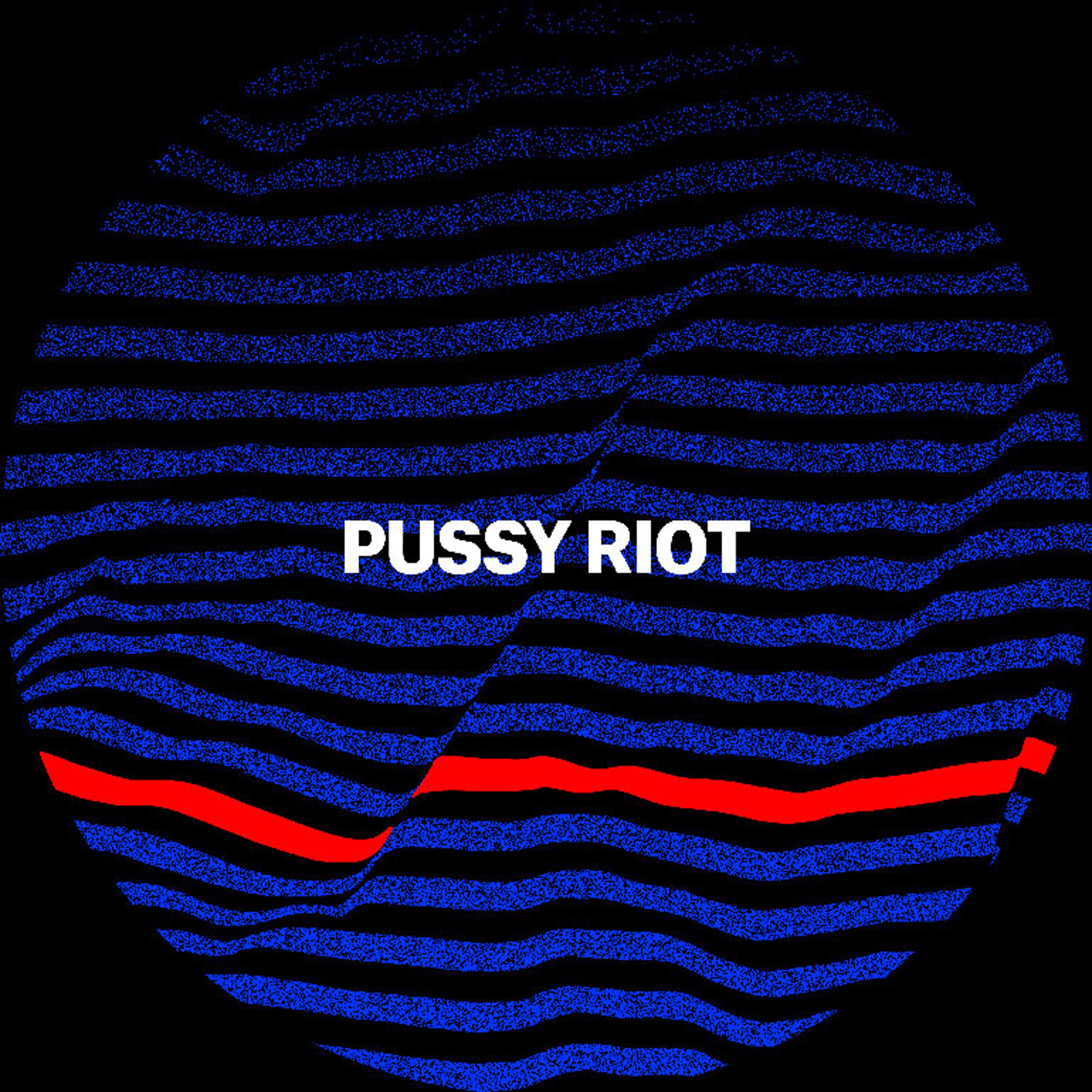


Pussy Riot grabbed worldwide public attention in 2012, after their protest against Putin in an Orthodox church, Cathedral of Christ the Savior in Moscow. The image of them screaming lyrics in a church while wearing neon balaclavas became instantly iconic. Their arrest stirred controversy, receiving international support from artists and various political feminist groups that claimed this was censorship against freedom of speech. Since then, the anarchist feminist punk band has been collaborating with artists, releasing more music and causing more controversy; the members have been arrested and released a few times since their first protest. Their latest protest was at the FIFA World Cup final, where a member dressed as a policeman entered the court and high-fived one of the players, while making demands to the Russian government to release all political prisoners, stop political arrests, allow multiplicity of political parties and to stop fabricating criminal cases for anyone that stands against the regime.
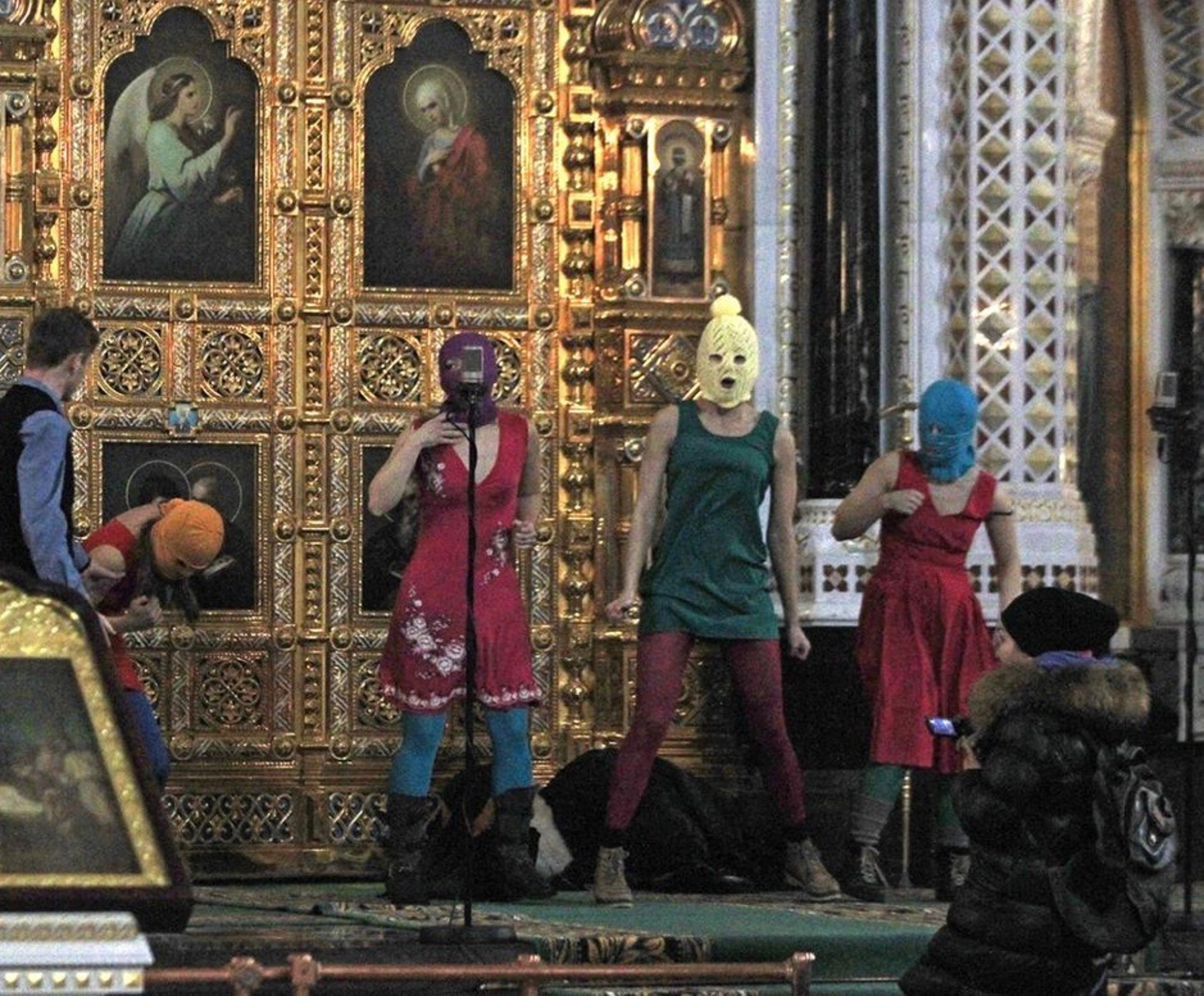
Pussy Riot Still from a performance inside Moscow’s Cathedral of Christ the Savior on February 21, 2012



Walid Raad has been a leading Lebanese artist for over 25 years. Although his practice oscillates between a wide and varied amount of media, it is his examination of the role play of photography and video, and their political and social consequences, for which his work has become most celebrated. His upbringing in Lebanon during the civil war has had a pervading impact on this work. Yet, while his work has been positioned within an exploration of conflict within the Arab world, many of his pieces hold universal messages that pertain to forces of dictatorship as well as the social construct of history and education pervasively. Raad created work under his fictional collective, the Atlas Group between 1989 and 2004. His installations and performances based on archival research reflect on contemporary Lebanese history, specifically the Civil War, investigating historical memory and collective trauma.
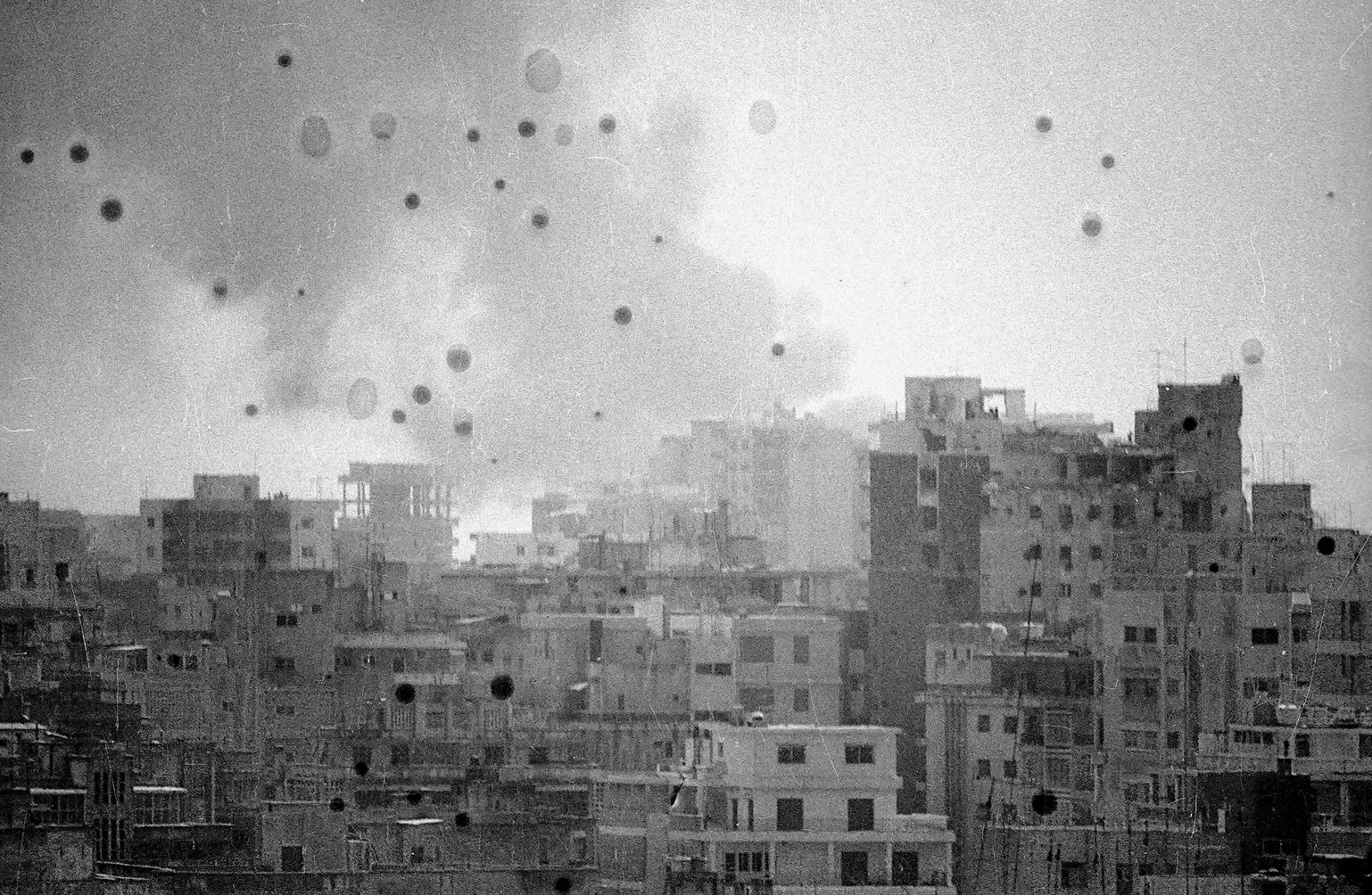
The Atlas Group – We decided to let them say “We are convinced” twice. Attributed date: 2002
“In the summer of 1982, I stood along with others in a parking lot across from my mother’s apartment in East Beirut, and watched the Israeli land, air and sea assault on West Beirut. The PLO along with their Lebanese and Syrian allies retaliated, as best they could. East Beirut welcomed the invasion, or so it seemed and that much is certain. West Beirut resisted it, or so it seemed, and that much is certain.
One day, my mother even accompanied me to the hills around Beirut to photograph the invading Israeli army stationed there. Soldiers rested their bodies and their weapons as they waited for their next orders to attack or retreat. I was fifteen in 1982, and wanted to get as close as possible to the events, or as close as my newly acquired camera and lens permitted me. Clearly not close enough. This past year, I came upon the carefully preserved negatives from that time. I decided to look again.”
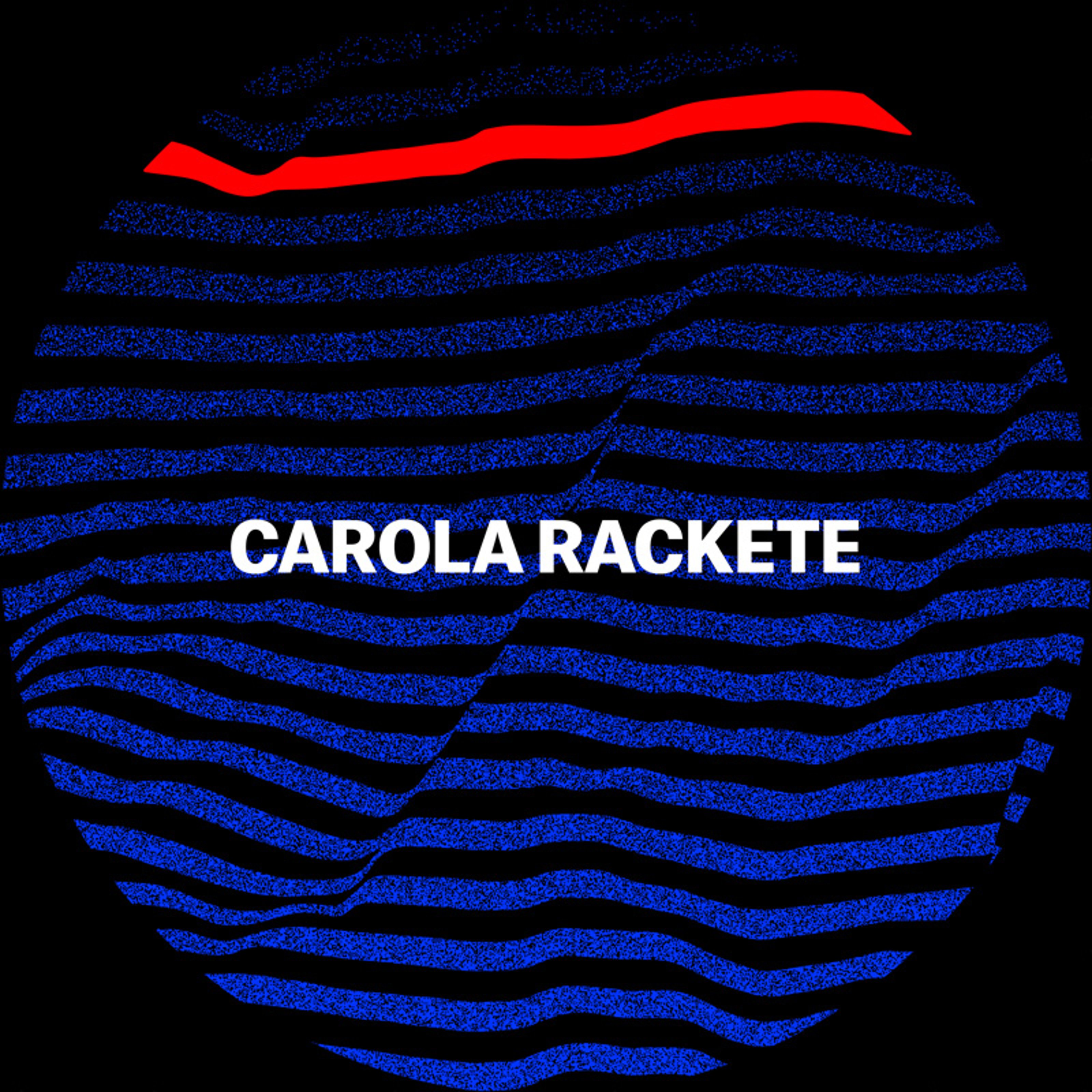


Carola Rackete is a German ship captain working for Sea-Watch who was arrested in 2018 for disobeying the Italian officers’ commands and rescuing the passengers on a migrant ship sailing from Libya towards the Italian coast. When the passengers boarded Rackete’s ship, instead of turning them over to Libyan coastguards, Rackete, in a controversial move, took initiative and ensured that they reached Italy safely. Rackete’s decision to disobey authorities and put human life above political agendas is a beam of hope within this humanitarian crisis.

Sea-Watch’s Sea-Watch 3
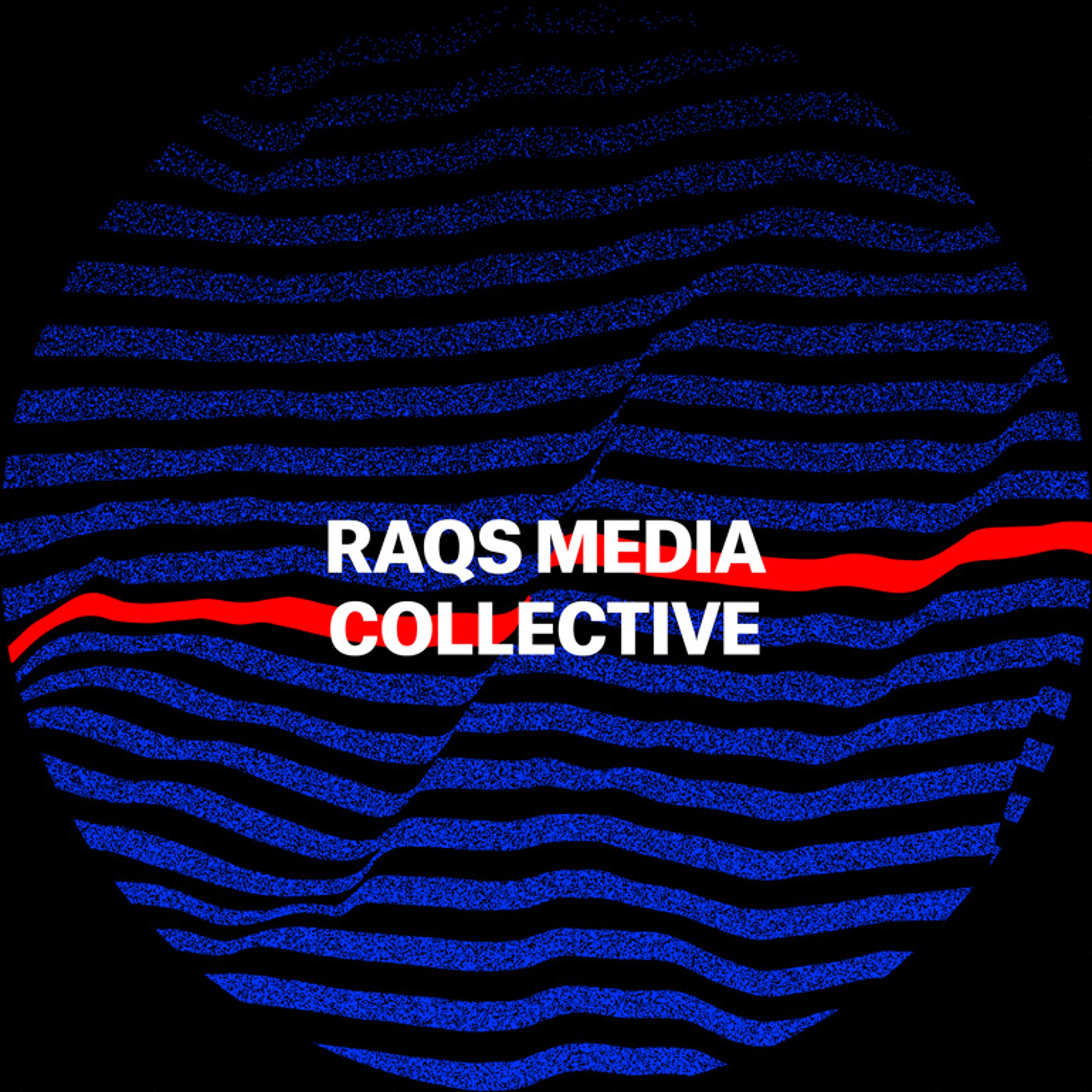


New Delhi-based collective, Raqs Media Collective, formed by artists Jeebesh Bagchi, Monica Narula and Shuddhabrata Sengupta. Their collective practice involves documentary filmmaking, installation, theory and new media. As a group, they orchestrate talks, curate shows and participate in running a research program, Sarai program at CSDS (Center for the Study of Developing Societies). Their artistic practice and research focuses on globalization, forced migration and urban redevelopment and their socio-economic effects.
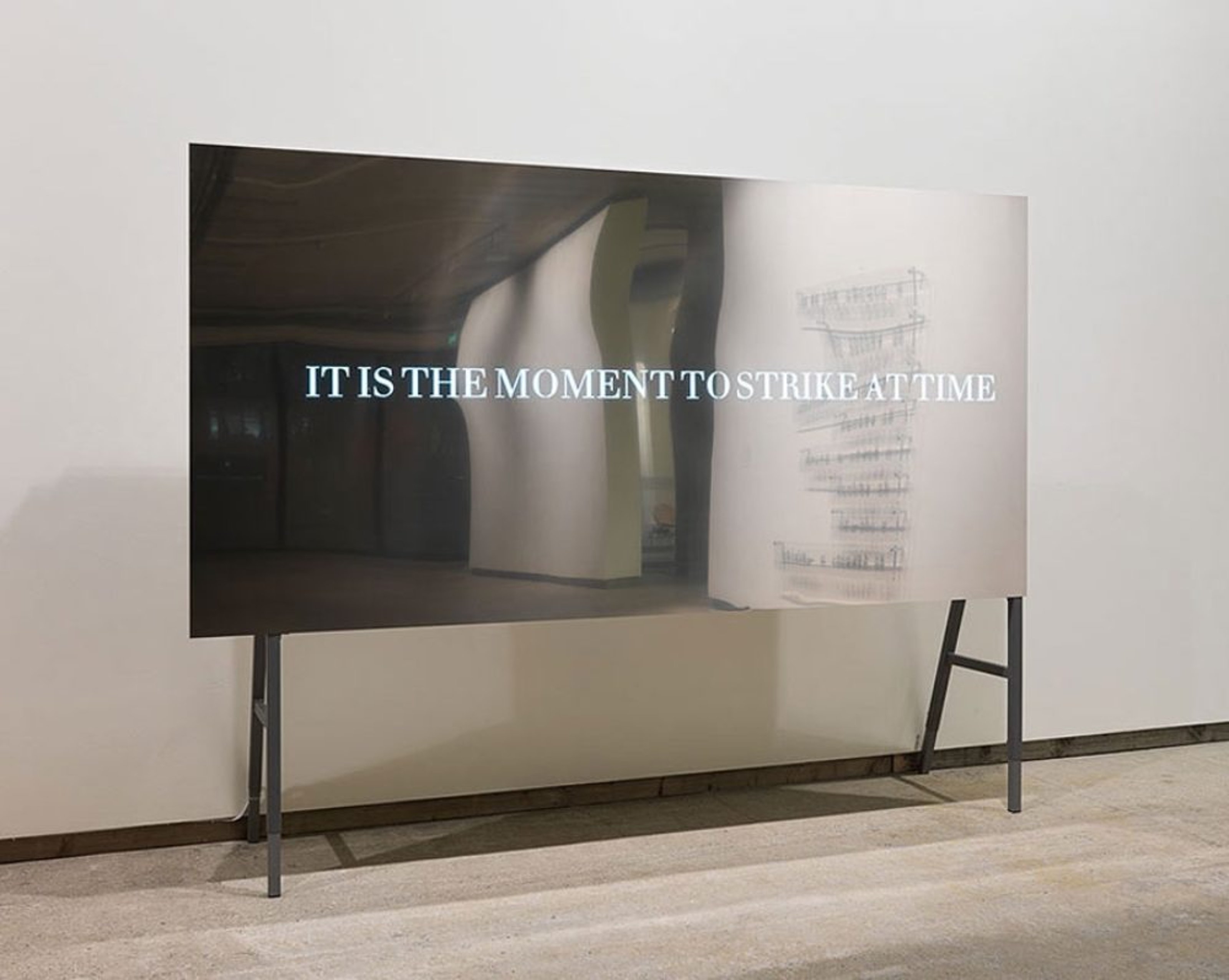
Raqs Media Collective – Strike, 2011 (metallic sheet, vinyl, MDF, acrylic, LED bulbs, electrical wires)
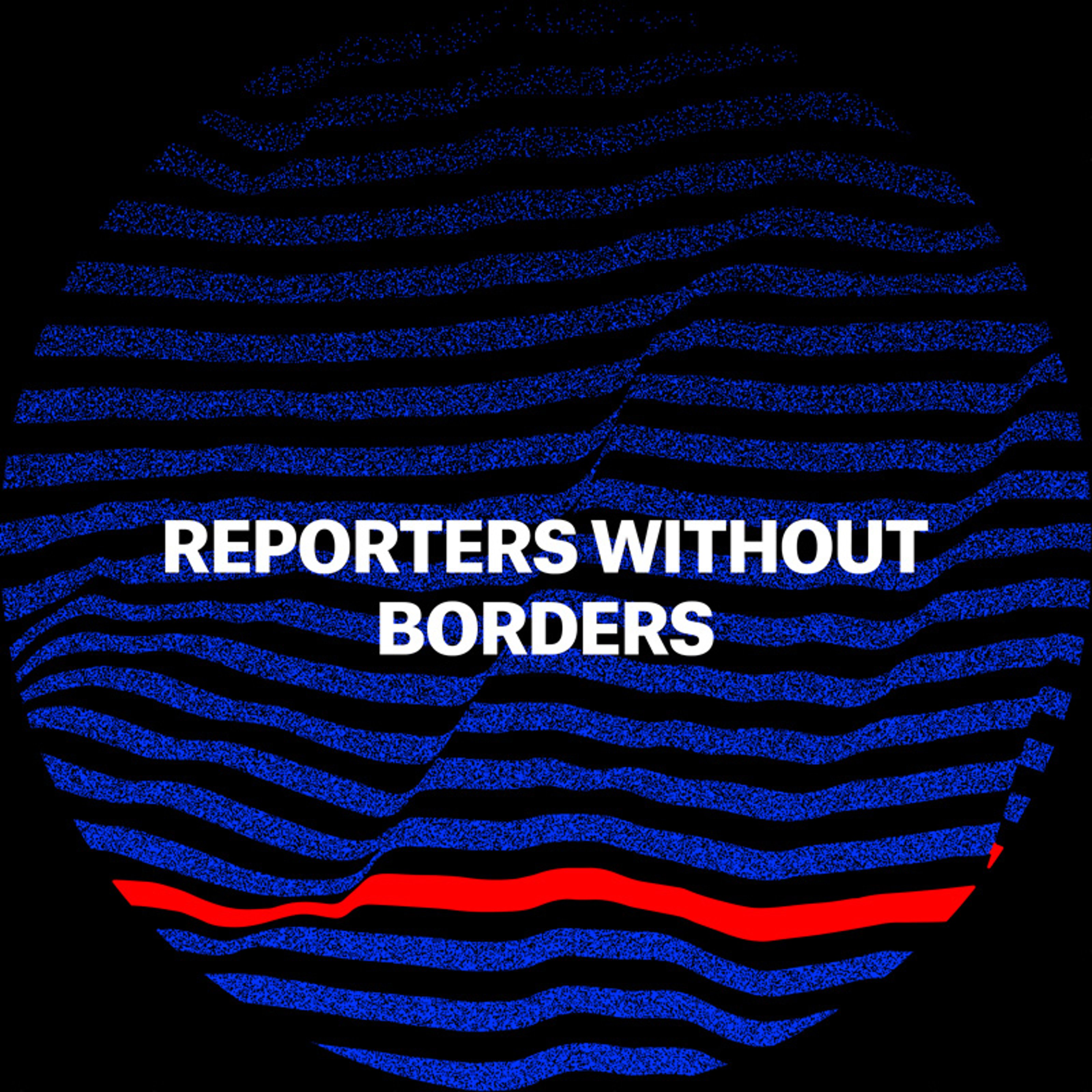


Reporters Without Borders, also known as Reporters sans frontières (RSF), is the world’s largest NGO working to defend media freedoms and safeguard the right to freedom of information. RSF was founded on the belief that everyone requires access to news and information and that it is a basic human right to be informed and to inform others. With involvement ranging from representation of individual at-risk journalists, to the highest levels of government and international forums, RSF provides daily briefings on threats to media freedom in seven languages and publishes an annual report titled the World Press Freedom Index, that measures the state of media freedom in 180 countries.

Reporters Without Borders’ Uncensored Library, a virtual hub on the popular game Minecraft, housing a collection of otherwise inaccessible journalism from all over the world, with specific sections devoted to Russia, Egypt, Mexico, Saudi Arabia, and Vietnam.
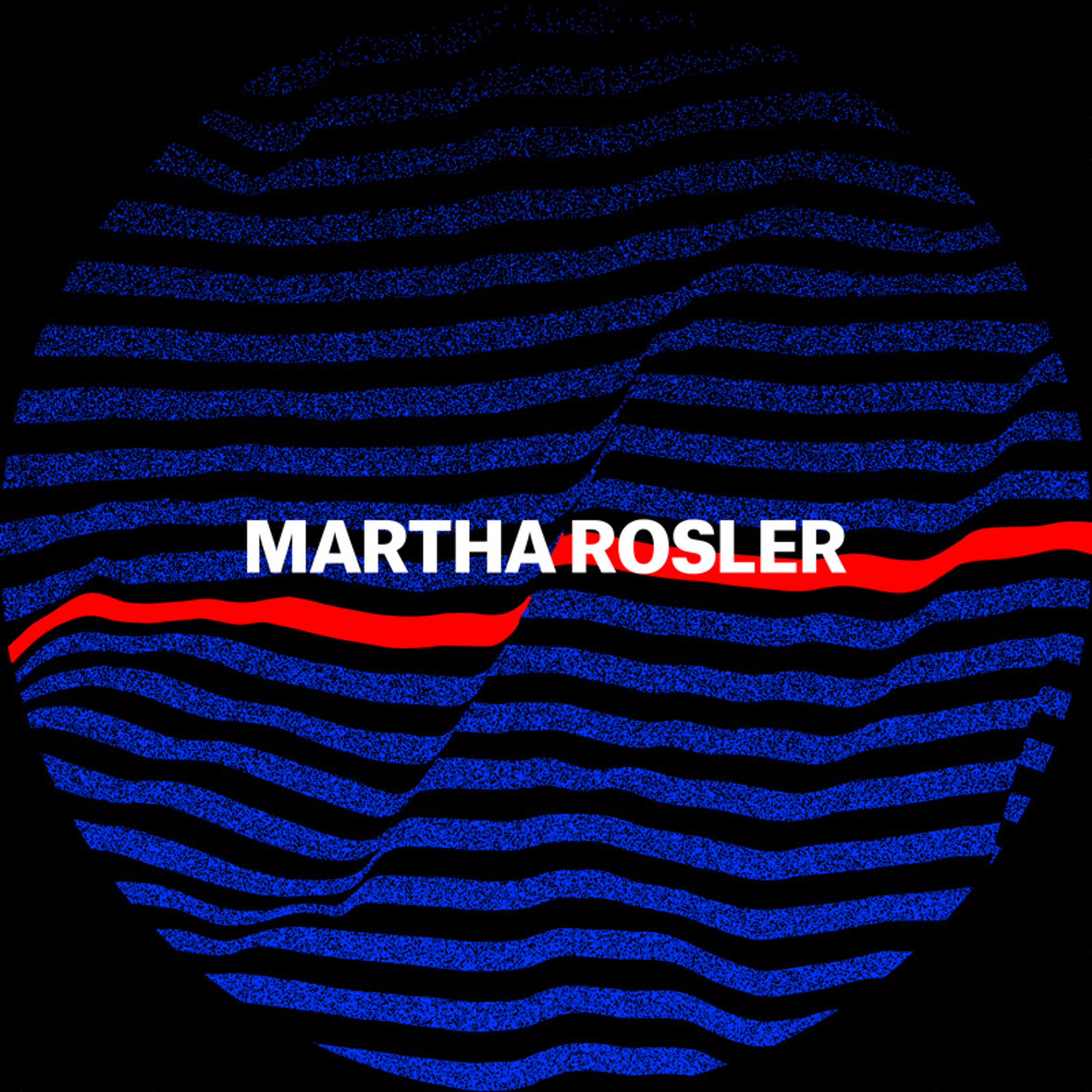


Born in Brooklyn, where she currently lives and works, Martha Rosler is one of the most innovative artists in the field of contemporary visual arts. Her pioneering practice spawned Semiotics of the Kitchen which she made one year after her MFA studies in 1975 and for which she is perhaps best known. This landmark work features Rosler as the main subject parodying cooking programs as a foil for pressing issues of inequality, particularly the position of the female subject within patriarchy. The sharp wit and special brand of critique that runs throughout exemplifies much of her work that came later, which remains timeless, urgent and necessary.

Martha Rosler, Housing Is a Human Right, Time Square Spectacolor animation detail, 1989
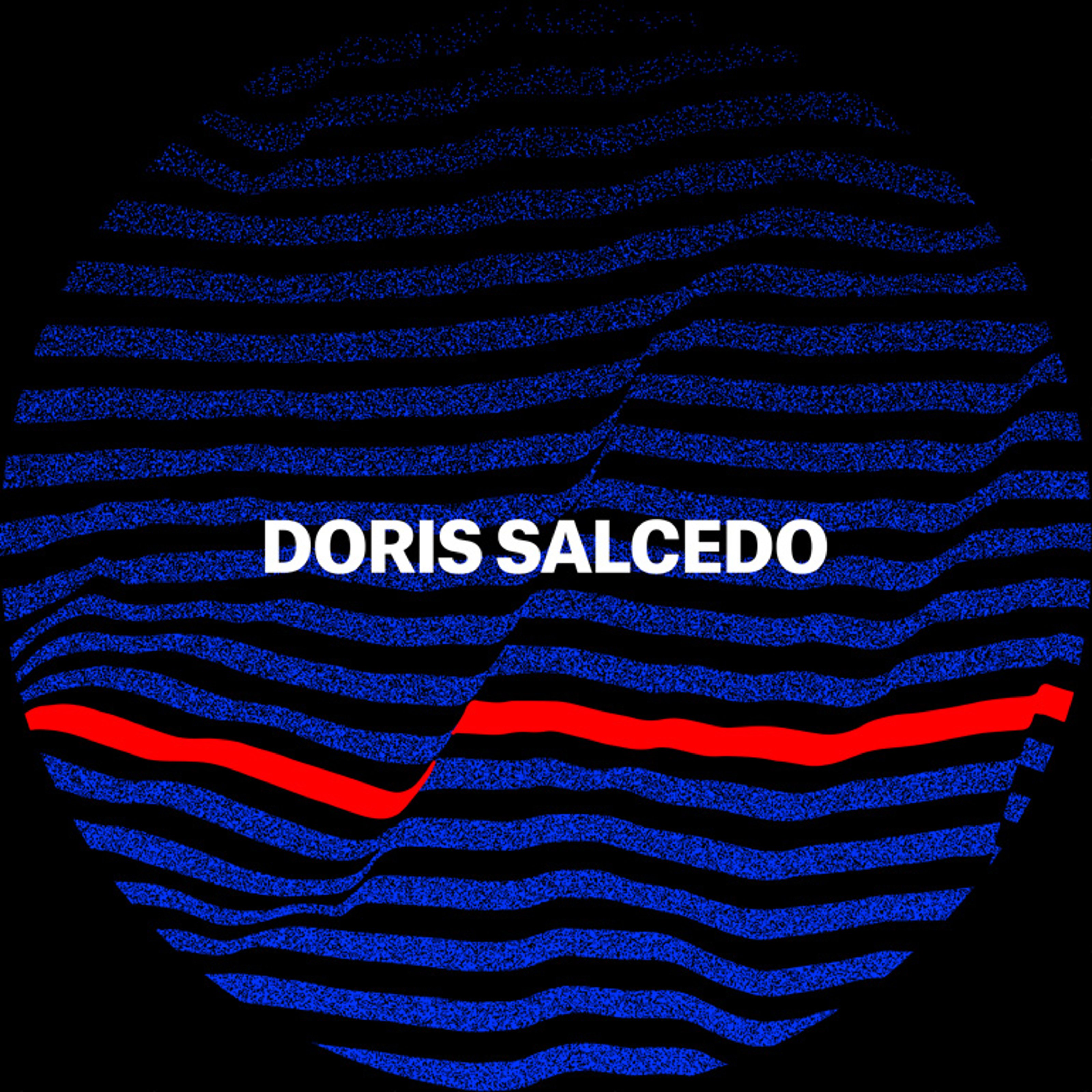


Artist Doris Salcedo works primarily with sculpture and installation, through the use of ordinary, household objects such as wooden furniture, clothing, concrete and natural items like grass and rose petals. Salcedo’s art draws from autobiographical details of her life in Colombia—the Civil War and disappearances of political dissidents—visualizing them through themes of trauma, loss and mourning. Her series of installations, ongoing since 1999, called Acts of Mourning, have dealt with the losses suffered during the Civil War, creating remembrances in their name in public spaces.

Doris Salcedo Untitled, 2008 (wooden armoire, wooden cabinet, concrete, and steel)



Austrian activist, lawyer and author, Max Schrems, is known for his campaigns against Facebook’s privacy violations. Schrems started his fight against Facebook to protect user data in 2011 when he was a law student in Austria. He complained to the Irish Data Commissioner that Facebook Ireland was illegally sharing his personal data with the U.S. government. He has become one of the public faces in the global fight for privacy. He founded NOYB (“None of your business”), a privacy enforcement platform that brings data protection cases to the courts under the General Data Protection Regulation. The case against Facebook which is known as “The Schrems case” or “Schrems I” caused the invalidation of the Safe Harbor data-transfer agreement between the EU and U.S.
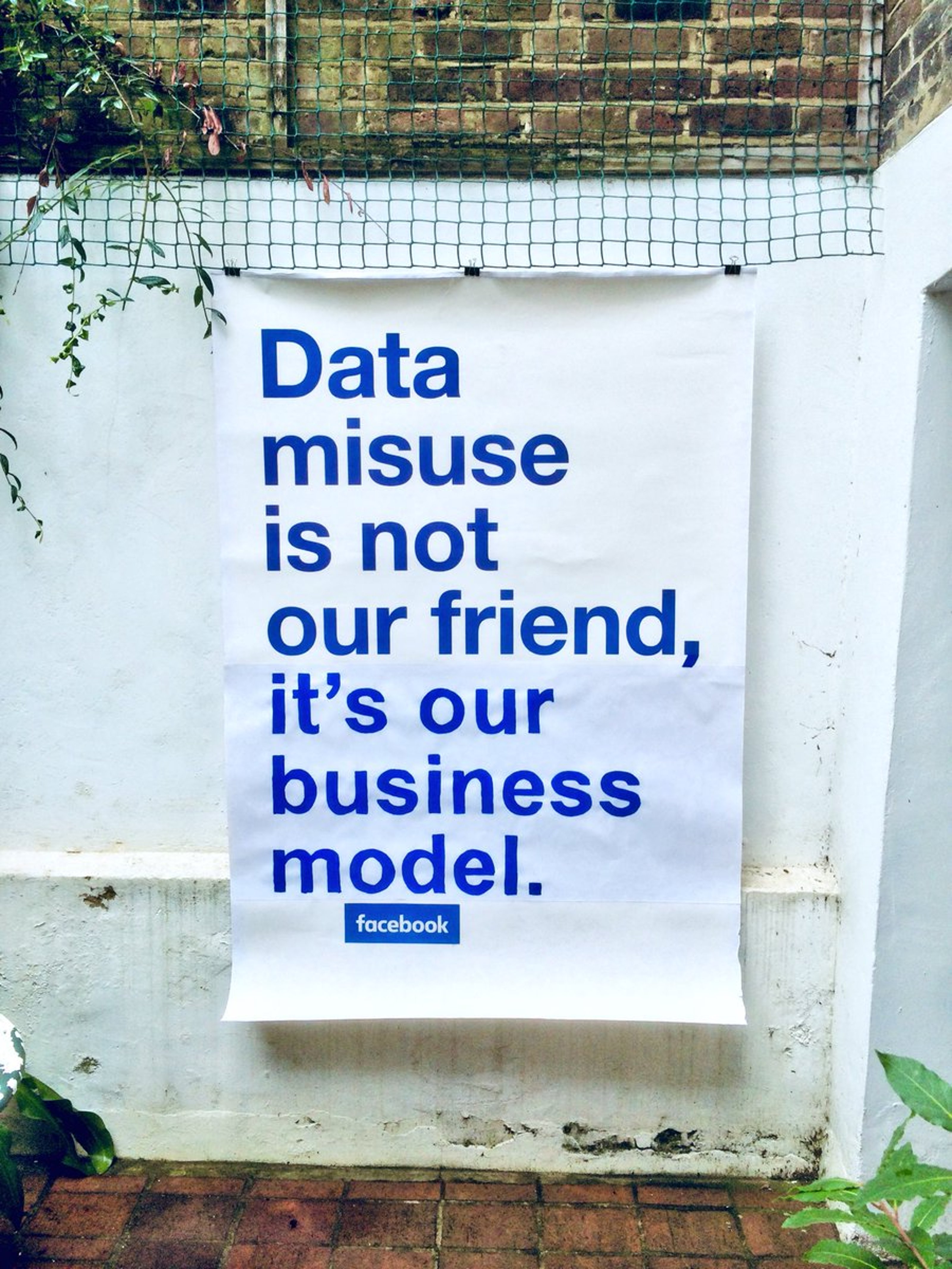
Altered Facebook advertisement



Through her work, which often incorporates the use of photography and film making, Zineb Sedira has staked out a rich, intelligent and poetic critique of the roles identity, geography, colonialism and history. In an archetypal work, Mother Tongue (2002), we see three generations of the artist’s family attempting to converse in English, Arabic and French. Saphir (2006) is a body of work that explores the metaphors of the sea and its relationship to the human condition. Sedira was selected to represent France at the Venice Biennale 2021, the first of Algerian descent.
“I have decided to not renounce representing France at the next Venice Biennale, despite this attempt to silence me and infringe on my freedom of expression. I am, hereby, reaffirming my beliefs for a more inclusive, interrelated and decolonized art world and art histories.”
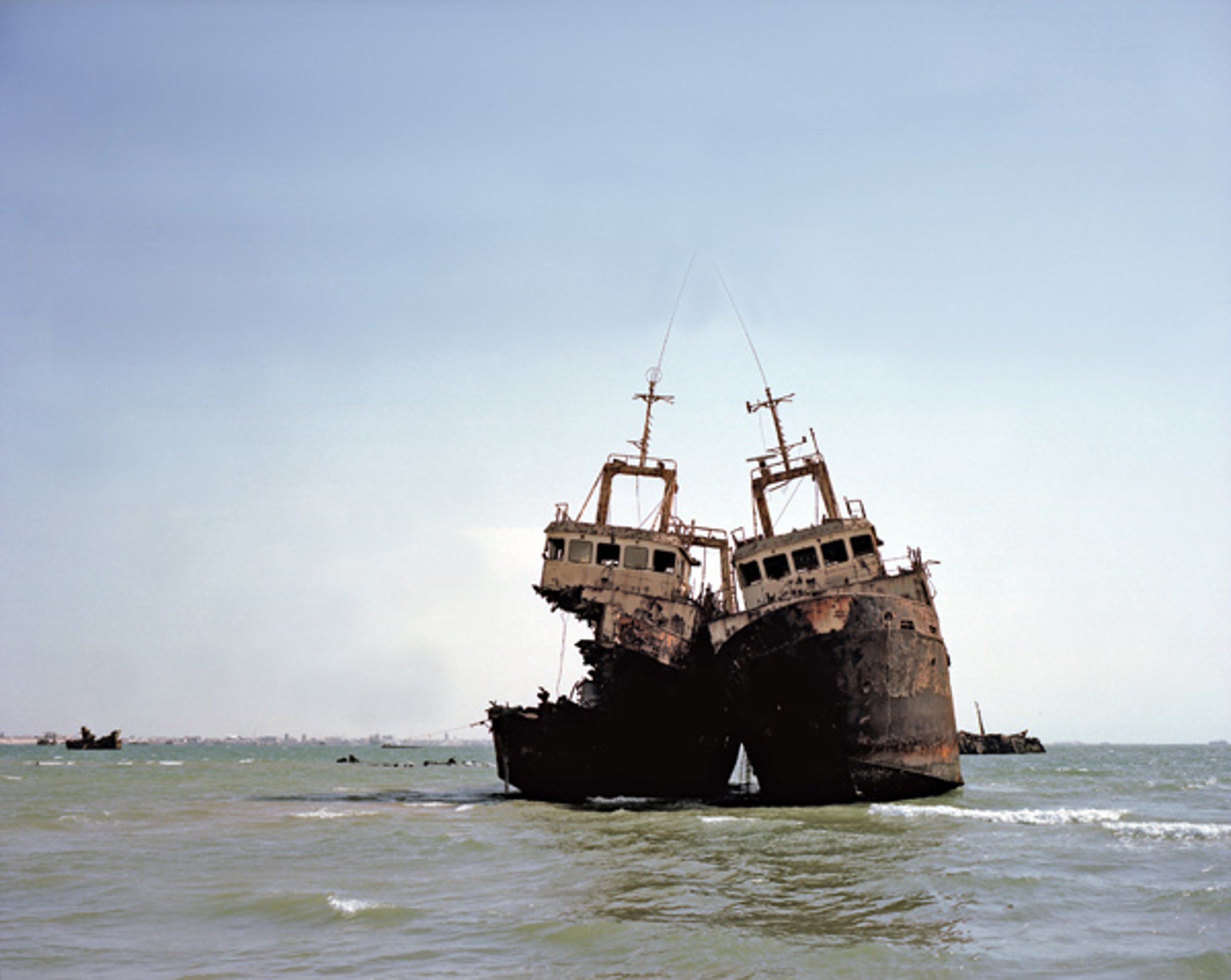
Zineb Sedira – The Lovers, 2008 (courtesy Kamel Mennour, Paris/London)
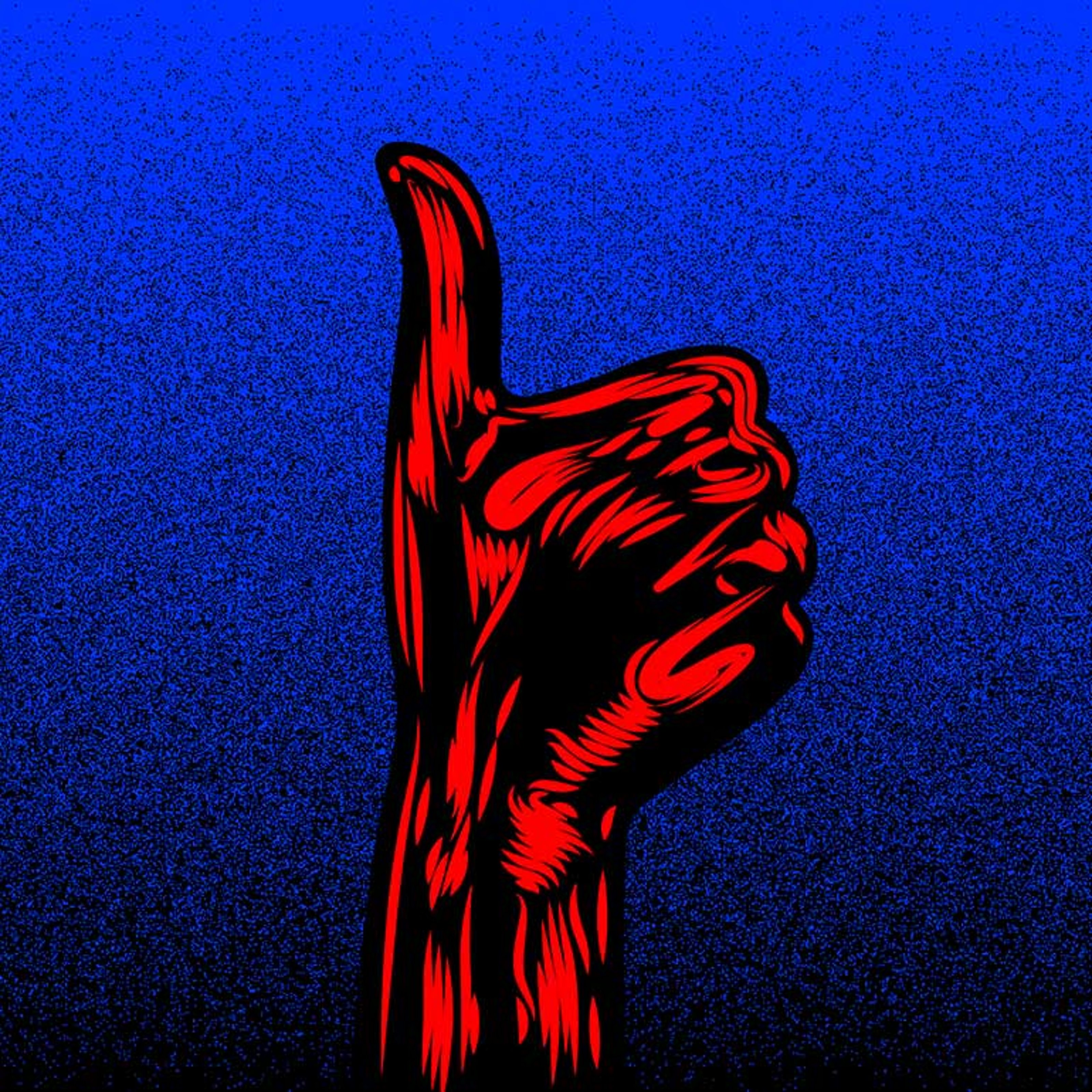


A museum director who began a very strong anti-colonial program supporting the Caribbean and Latin American heritage at an up-and-coming museum; a collective that refers to itself as “archeologists of the everyday” as they draw upon layers of meaning exemplified by tradition, custom, performance, language, anthropology and politics; a collective that has made visible the art world’s insistent racism, and sexism through a series of co-authored letters and manifestos; an artist and filmmaker who poses the question “what is the function of art in the era of digital globalization?”; a cult film director who is a vocal opponent of nationalism in its various manifestations, and of the prime minister of Hungary Viktor Orbán’s government legislation against migrants; an artist whose works and political action organization criticize the commodification of African American identity in mass media to deepen the discussion on freedom in the US; a 17 year-old climate activist, that we all came to love, who started a global movement for political action against the rapid advancement of climate change; an incredible movement that aims to be an alternative currency to the US dollar, letting people exchange their time and skills with others and a news organization dedicated to holding those in power accountable through fearless journalism; an artist and theorist whose influential Instagram account exposes the decaying aspects of the art world and corrupt institutions in an extremely efficient manner.
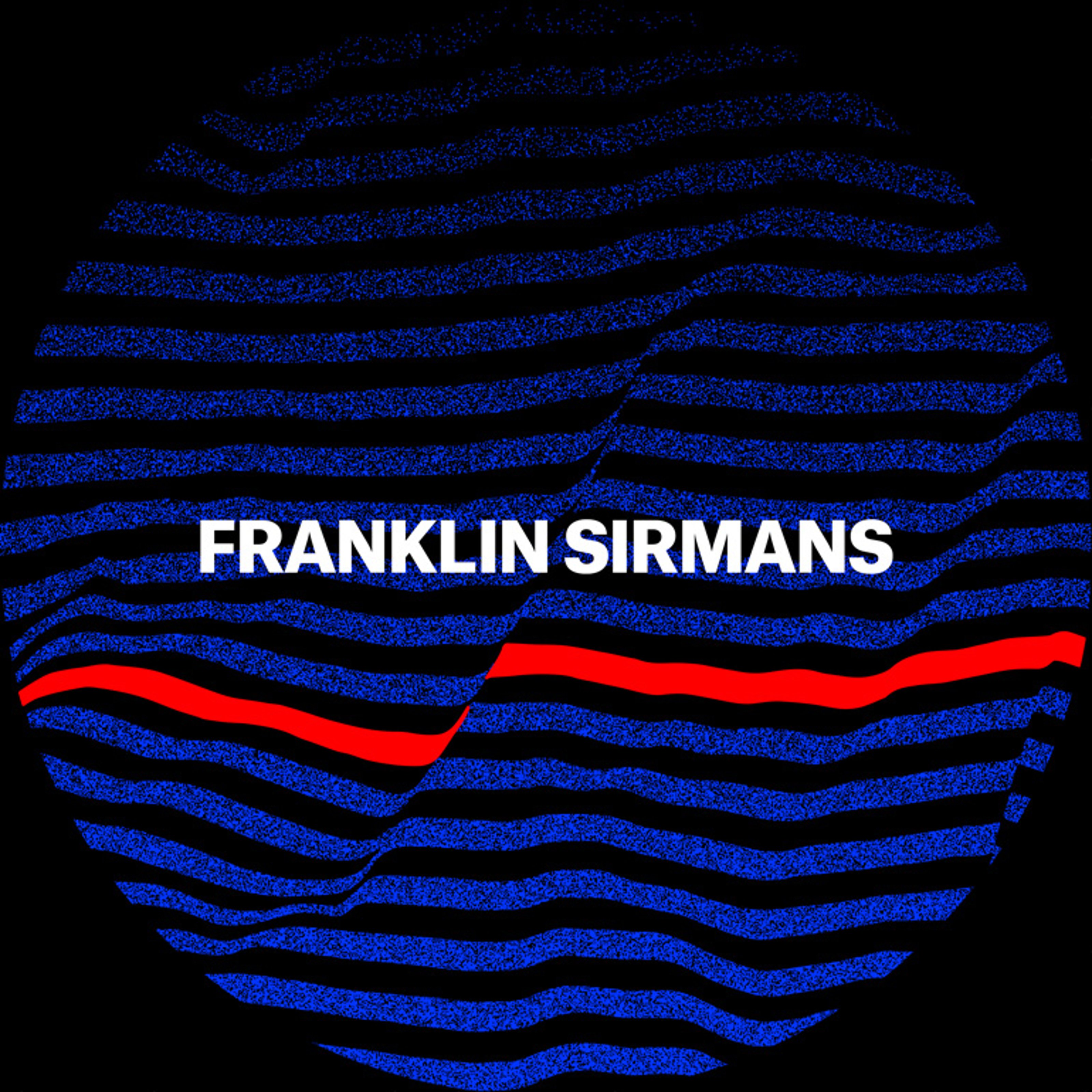


Franklin Sirmans has been the director of Pérez Art Museum Miami (PAMM) since 2015. As a director, he started a very strong anti-colonial program supporting the Caribbean and Latin American heritage at the up-and-coming museum.
He has overseen the acquisition of more than 1,000 works of art, strengthened existing affiliate groups such as the PAMM Fund for African American Art, and was co-curator of the 2018 exhibit, The World’s Game: Futbol and Contemporary Art. Previously, Sirmans was Department Head and Curator of Contemporary Art at Los Angeles County Museum of Art (LACMA) and Curator of Modern and Contemporary Art at The Menil Collection in Houston. He has been a curatorial advisory committee member at MoMA/PS1 and artistic director of Prospect.3 New Orleans.
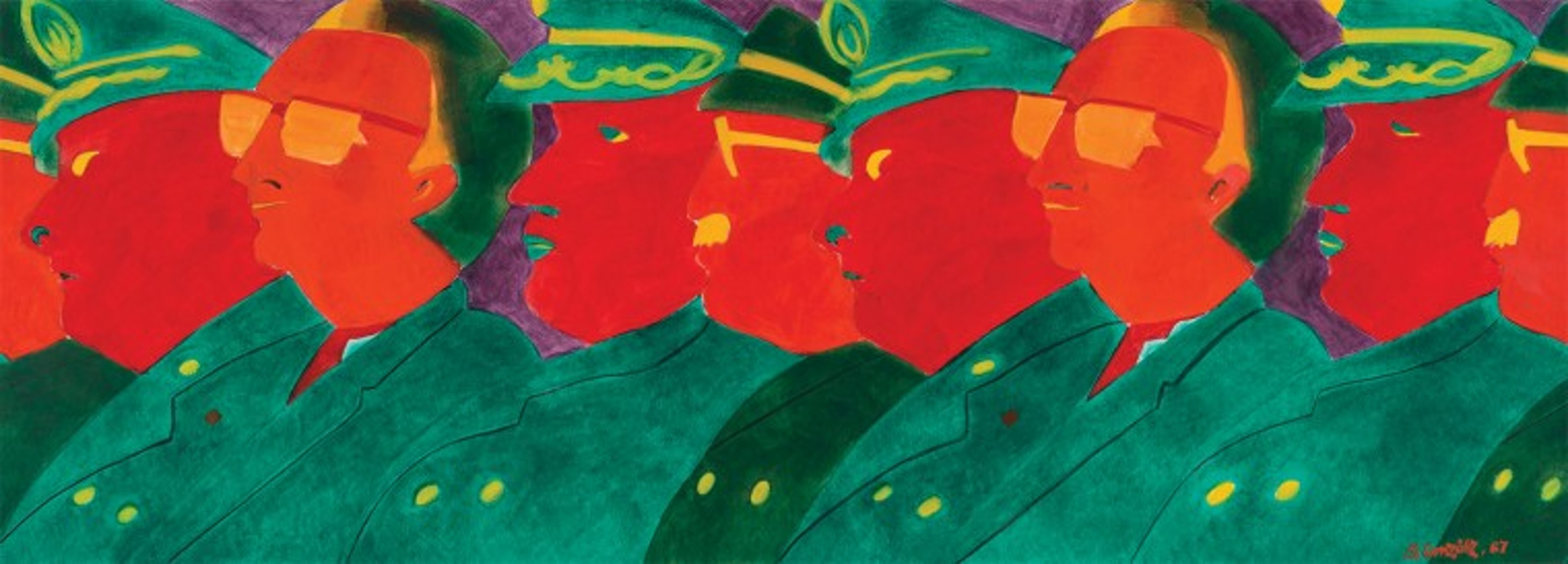
Beatriz González – Los Papagayos, 1987 Oil on paper.



Founded in 2006 by a Polish-Iranian duo, Slavs and Tatars is an international collective wishing to remain largely anonymous as a collective of unnamed artists. The collective refers to themselves “archeologists of the everyday” as they draw upon layers of meaning exemplified by tradition, custom, performance, language, anthropology and politics. First organized as a reading group in 2006, Slavs and Tatars focuses on “the area east of the former Berlin Wall and west of the Great Wall of China.” The collective explores the area’s expansive historical narratives and transnational relationships which have been realigning themselves since the collapse of Soviet Communism and has experienced escalating tensions between Eastern and Western identities. As a predominant component of their practice, they use humor and its potential to offer a seductive form of critique.
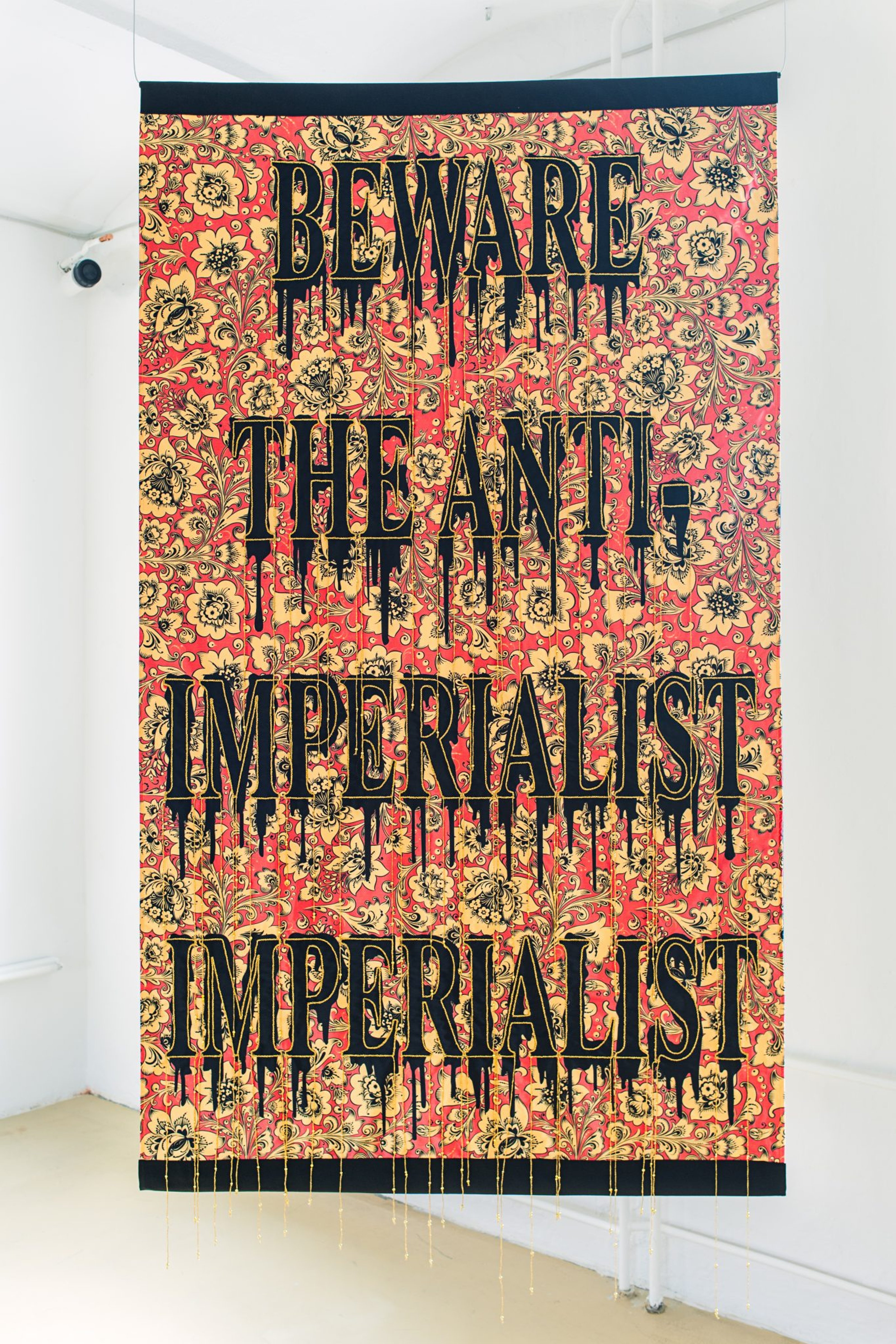
SLAVS AND TATARS – Beware the Anti-Imperialist Imperialist, 2011. Photo: Wolfgang Stah
_
‘Beware the Anti-imperialist Imperialists’ addresses the similarities between the Iranian Revolution of 1979 and the Russian Revolution of 1917. Both revolutions advocated getting rid of foreign influence/interference – in Russia’s case, England, France, and Germany and in Iran’s, the West – only to then export their ideology: Russia to the rest of the globe via revolutionary communism and Iran to its neighboring countries, from Lebanon (via Hezbollah) to Syria (via Hamas) and Iraq (via influence in the Shi’ite block)_
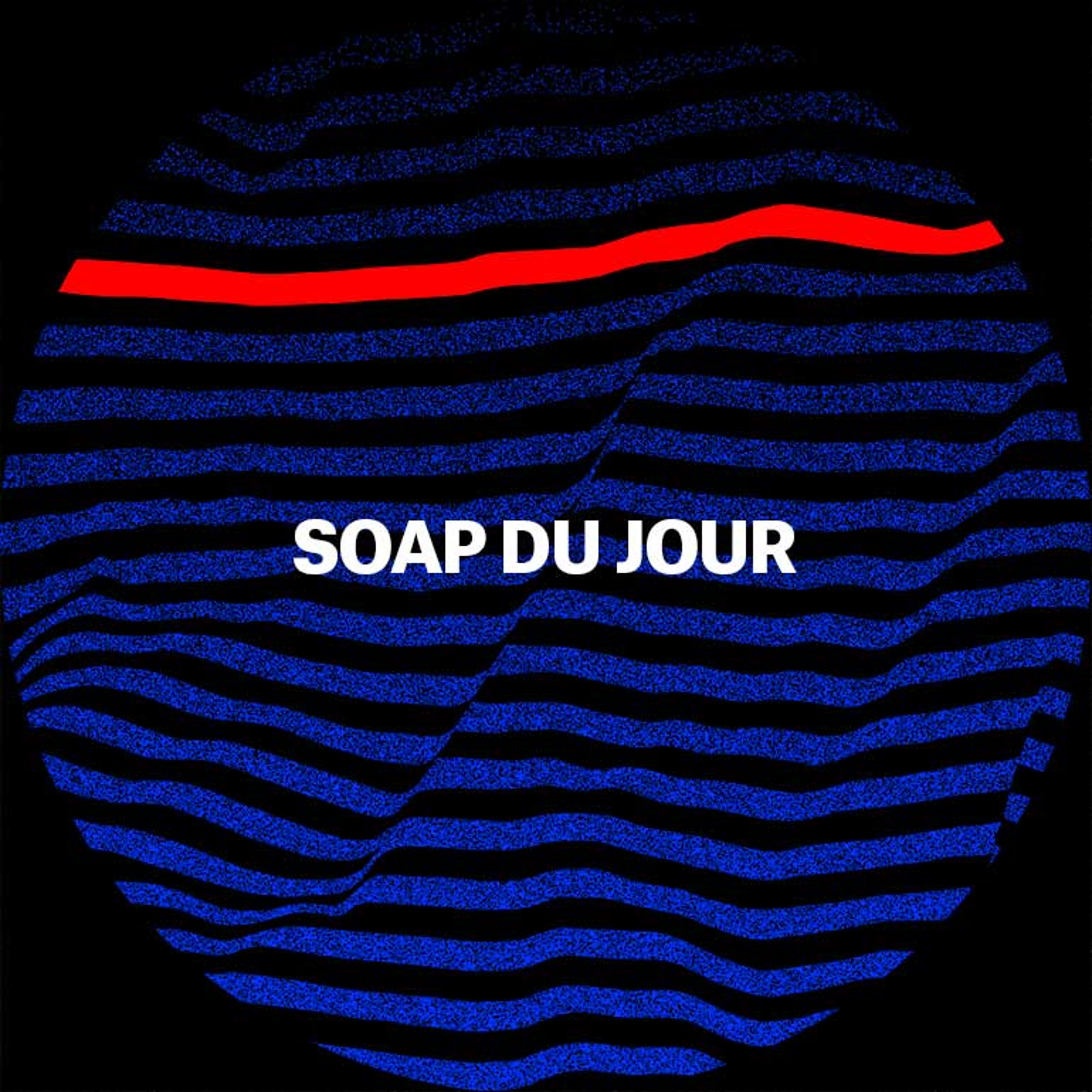


Soap du Jour is a Berlin-based collective that has made visible the art world’s insistent racism, and sexism through a series of co-authored letters and manifestos. Recently they focused on the persistent inequality in large German art exhibitions, such as Berlin Gallery Week, that still mainly feature white male artists. By addressing the curators and institutions publicly they seek to vocalize and challenge this status-quo that is still bewilderingly common and accepted. Members of Soap du Jour choose to stay anonymous to prevent activists within the art community from being exposed to backlash and exclusion from institutions and communities.

Soap du Jour’s Twitter Post about Künstlerhaus Bethanien’s Afrofuturism exhibition which did not feature any African artists
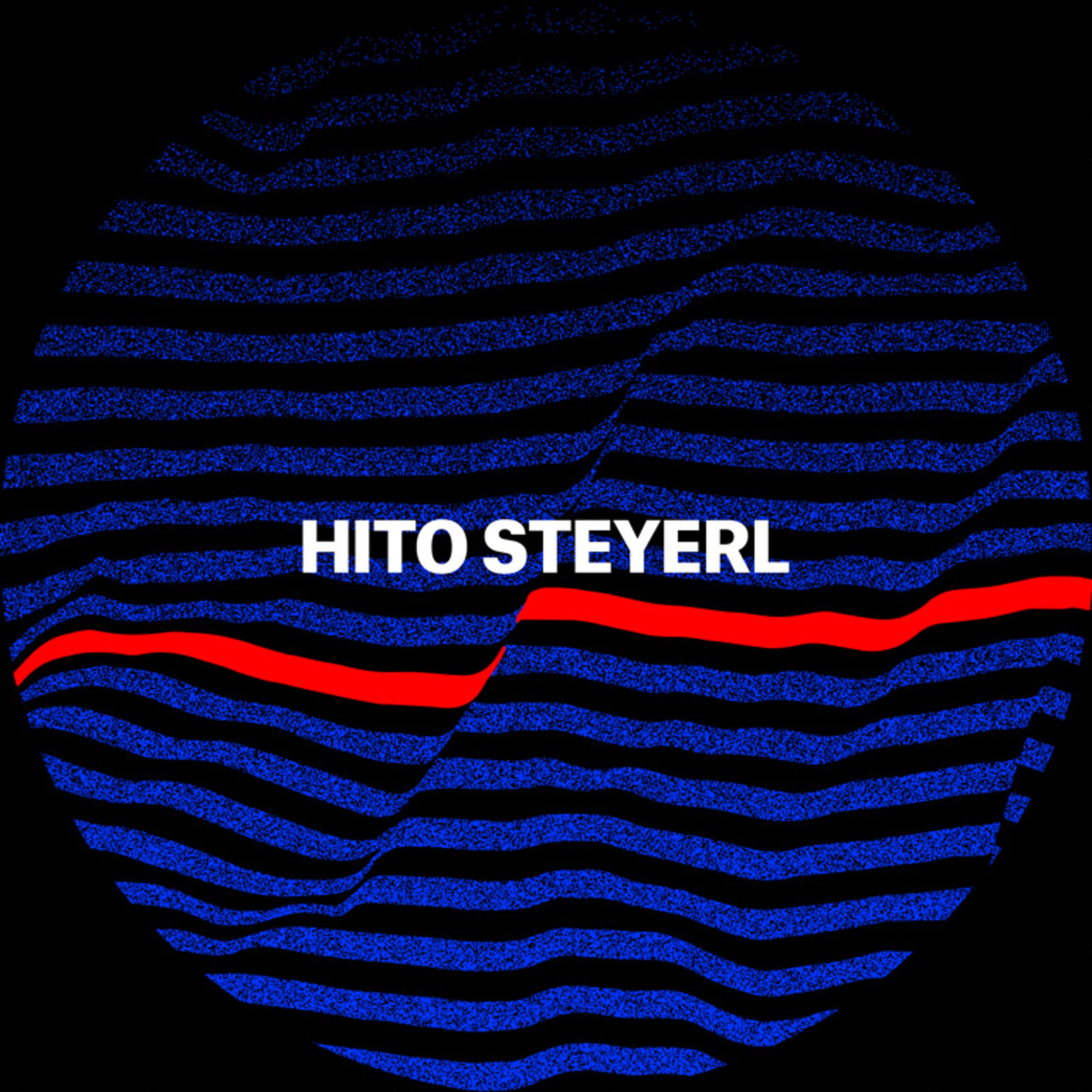


Hito Steyerl is a German filmmaker, moving image artist, writer, and innovator of the essay documentary. Her principal topics of interest are media, technology, and the global circulation of images. Steyerl holds a PhD in Philosophy from the Academy of Fine Arts Vienna. She is currently a professor of New Media Art at the Berlin University of the Arts, where she co-founded the Research Center for Proxy Politics, together with Vera Tollmann and Boaz Levin. Steyerl’s book ‘Duty Free Art’ poses the question: “What is the function of art in the era of digital globalization?”
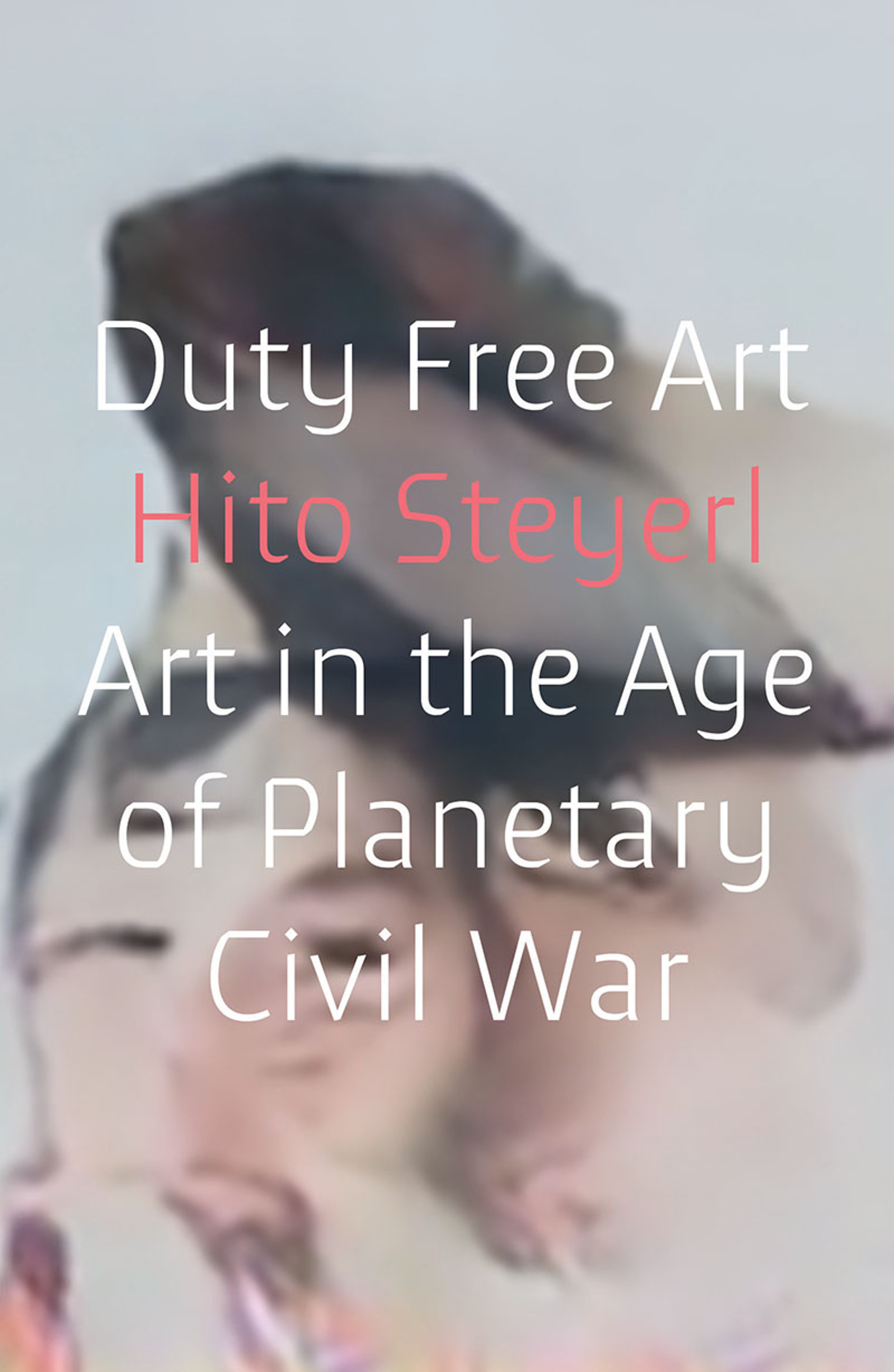
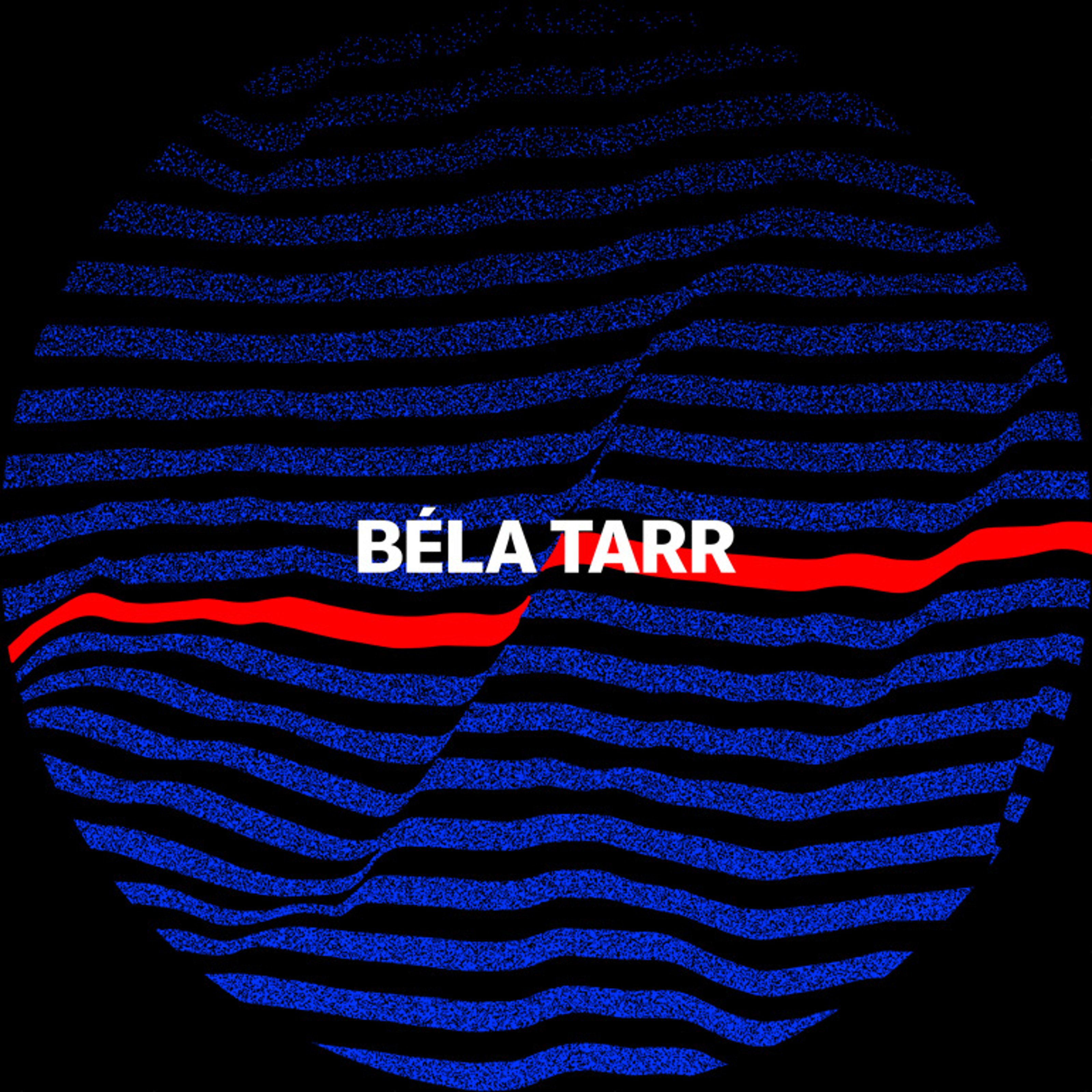


Established Hungarian director Béla Tarr was influenced by the political Budapest school which was active roughly from 1972 to 1984. Although his style has changed over the course of the time, the social endeavours his characters fall into remained the same. Tarr is a vocal opponent of nationalism in its various manifestations, and of the prime minister of Hungary Viktor Orbán’s government legislation against migrants. In 2016, Béla Tarr’s open letter for the violence against refugees was read out by activist theatre director Árpád Schilling at a pro-migration demonstration and the text hung next to the entrance of the exhibition in front of the Hungarian Parliament.
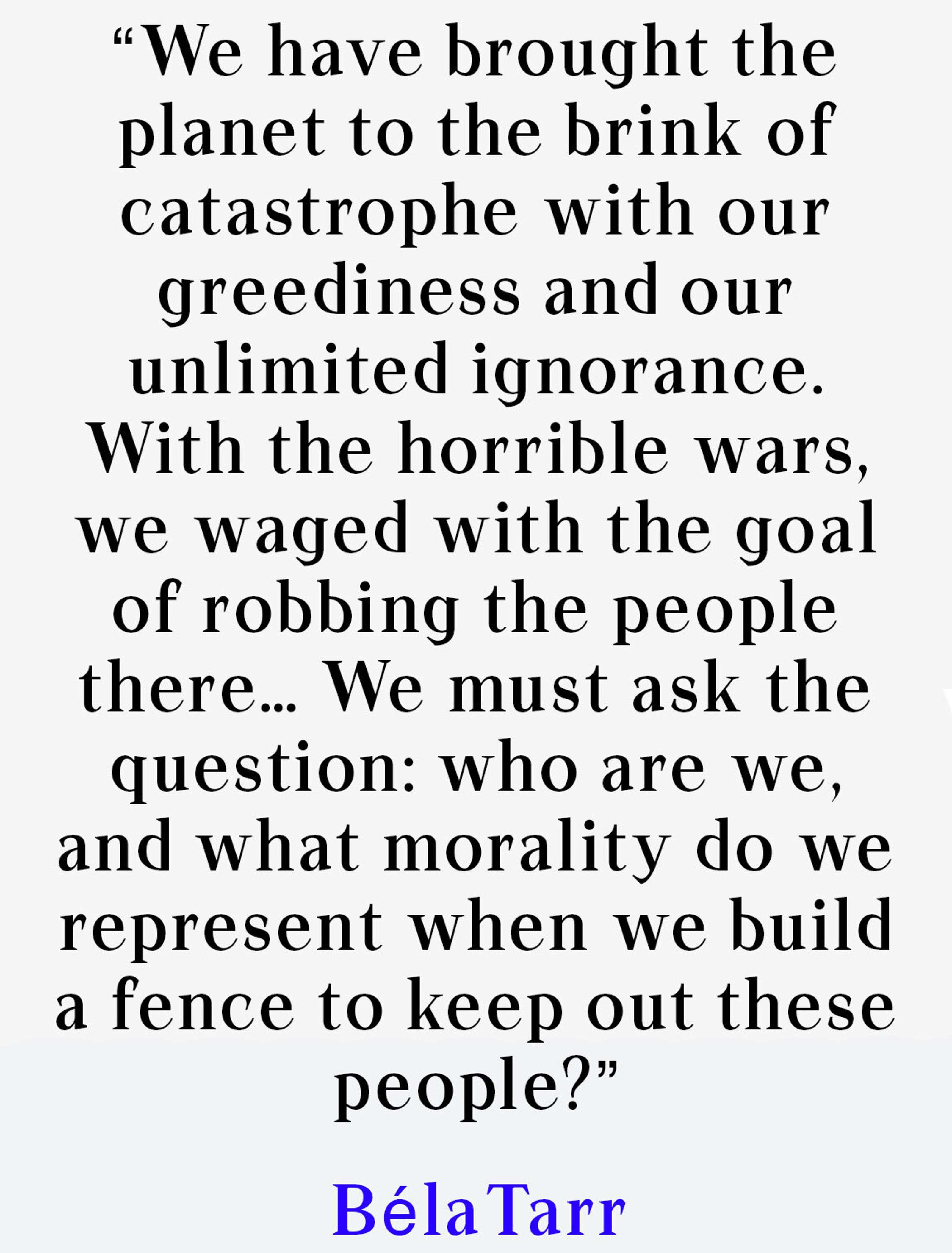
Béla Tarr’ – Sátántangó, 1994 (excerpt from movie)



Hank Willis Thomas has been producing art for over 20 years. His works criticize the commodification of African American identity in mass media to deepen the discussion on freedom in the US. In 2016, Willis Thomas co-founded For Freedoms; a collaborative, artist-run platform for political action, which became the “largest ever public art project in the US.” For this platform, Thomas, with other artists, recreated Norman Rockwell’s famous paintings Four Freedoms (1943), for a new, more diverse look at American culture and freedom today. His explorations through conceptual art, public spaces, representations in the media expose problematic issues on identity, migration, perspective and popular culture to the audience.
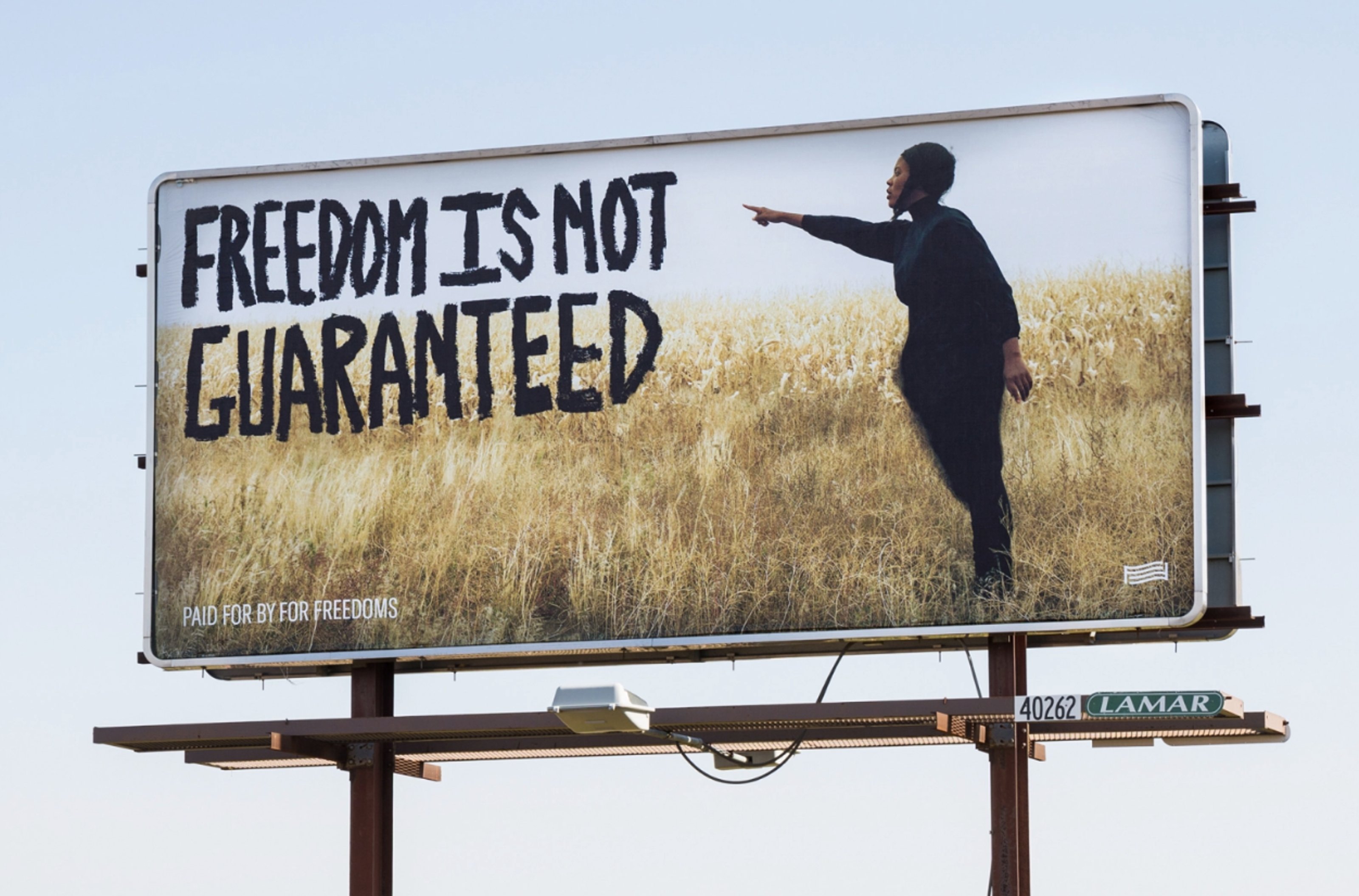
Xaviera Simmons’s 2018 billboard for For Freedoms
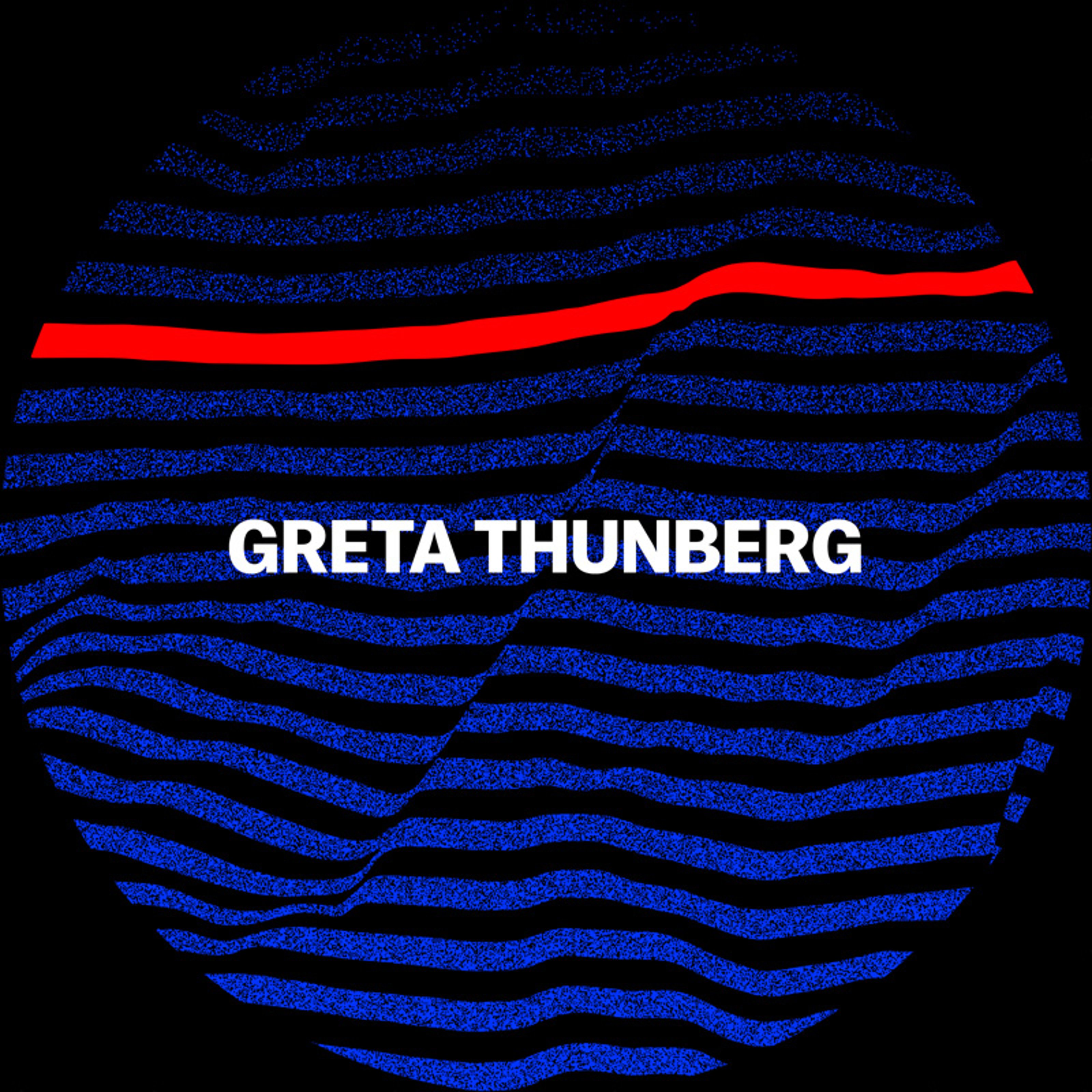


17 year-old climate activist, Greta Thunberg, started a worldwide movement for political action against the rapid advancement of climate change. Thunberg appeared in public eye in 2018 when she started to spend days in front of the Swedish parliament to urge them to adopt a stronger policy against the climate crisis; holding a sign that read “School strike for climate”. Since then, she has encouraged other students around the world to skip Fridays in school to stand against current climate policies, a protest titled Fridays for Future, which many students participate in today. Her outspokenness and urgent tone against this crisis made her an influential leader at a very young age; she has given many speeches on the issue, namely at the 2019 UN Climate Summit, urging politicians and the public to take the issue of climate change seriously and to take action now, to consider the future of the younger generation.

NEW YORK – SEPTEMBER 20: Students walk out of school to take part in a march to demand action on the global climate crisis on September 20, 2019 in New York City. In what could be the largest climate protest in history and inspired by the teenage Swedish activist Greta Thunberg, people around the world are taking to the streets to demand action to combat climate change. (Photo by Spencer Platt/Getty Images)
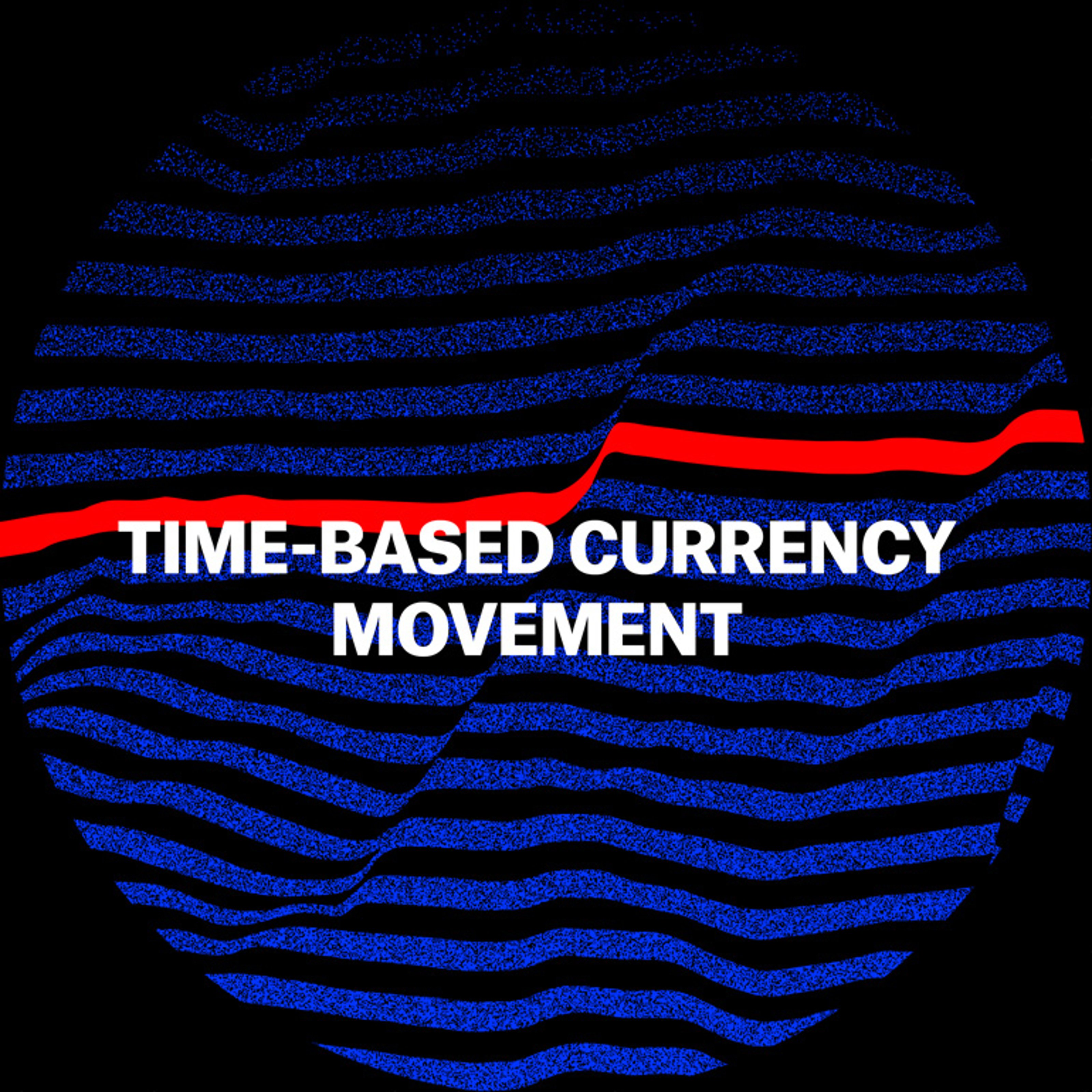


Conceptualized by Edgar S. Cahn, when experimenting with the idea of solving unmet social needs with existing unused social capacity, time banking aims to be an alternative currency to the US dollar, letting people exchange their time and skills with others. In joining a time bank, the individual agrees to earn and spend “time credits,” based on the hours they spend helping another person. They can then ask for someone else’s help, depending on how many time credits they have. It is aimed to be a more inclusive and equalizing order, investing in community building, sharing of skills and knowledge while changing the definition of “value” from fiscal to interpersonal. In 1995, Cahn founded TimeBanks USA, as an incubator for new currency initiatives. Since then, the movement has been adopted by several communities in more than 30 countries. The movement aims to revitalize community connections, be more environmentally conscious, promote social justice and award the effort and labor of overlooked acts of kindness and assistance.

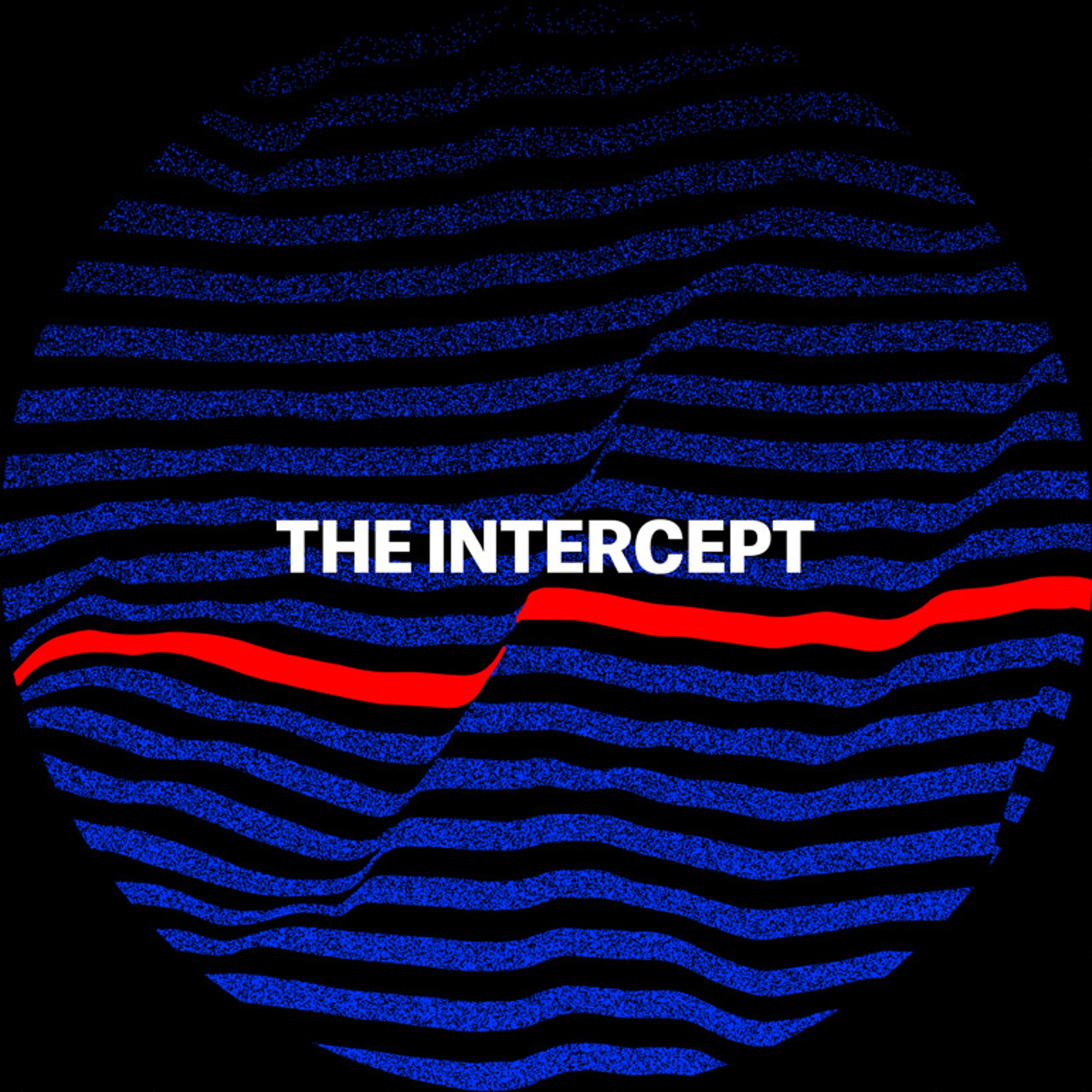


The Intercept is an award-winning news organization launched by eBay founder and philanthropist, Pierre Omidyar. Since day one, the organization has been dedicated to holding those in power accountable through fearless journalism. The first story published by The Intercept’s was a report about the N.S.A.’s involvement in the U.S. targeted killing program.
Politics, war, surveillance, corruption, the environment, technology, and criminal justice, are just some of the focuses of The Intercept’s in-depth investigations and unflinching analyses; though its leak of the Edward Snowden documents in 2014 was surely what made The Intercept a household name. Through its deep funding, The Intercept is able to provide its journalists the required legal support and editorial freedom to expose corruption and injustice throughout the world.
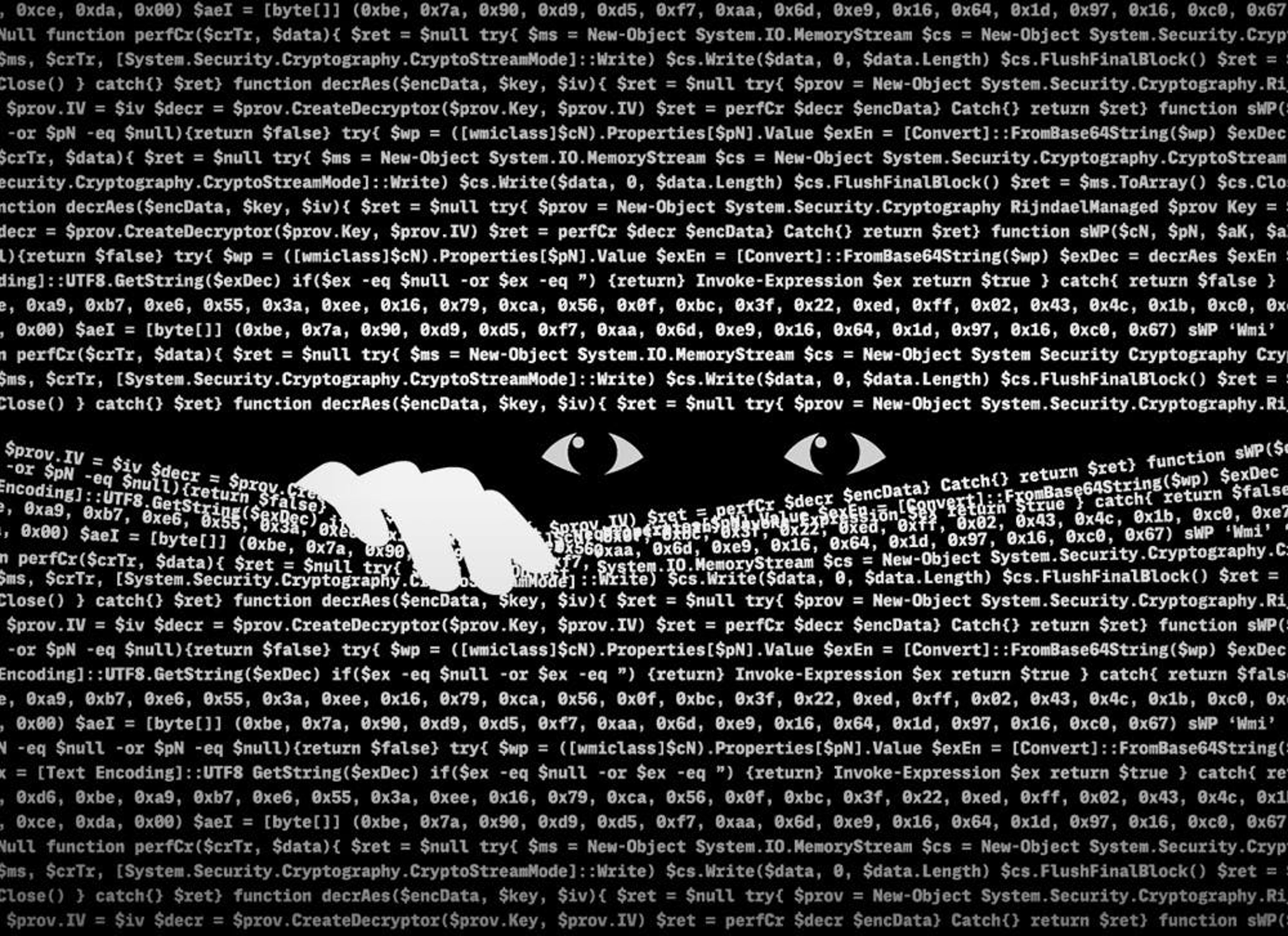



Brad Troemel who is a theorist, writer and an artist, is perhaps best known as the co-creator of the popular Tumblr blog the Jogging, which began in 2008/2009 as a collaboration with the artist, Lauren Christiansen. Later, Troemel shifted his online output to platforms like Etsy and Squarespace, using their e-commerce interfaces to sell kits for on-demand artworks. His current practice focuses on the square JPEG, recalling Troemel’s earlier essays in which he emphasizes the notion of athletic aesthetics that he suggests are a by-product of art’s new mediated environment, wherein creators must compete for online attention in the midst of an overwhelming amount of information. Troemel’s influential Instagram account exposes the decaying aspects of the art world and corrupt institutions in an extremely amusing manner.




The finalists for a prize who demanded to receive the prize as a collective in a joint statement of solidarity; an artist best known for her service-oriented work, creating art that brings to life the very essence of any urban center: waste flows, recycling, sustainability, environment, people, and ecology; the a tuition-free postgraduate university located under nightclubs in London and Amsterdam; an artist whose work addresses the history of American slavery and racism through violent and unsettling imagery; a writer who informs us that the data and information we provide to internet services like Google, Facebook and others, have created a new kind of ruling class which now dominates not only labor but capital as well; a curator, who as the co-curator of the 12th Berlin Biennale, posed the question “how can art change politics and evoke real effects in our society?”; an Israeli architect that was recently banned from entering the United States, who came to prominence through detailed digital reenactments of incidents regarding human rights abuses or disputed assassinations; a project dedicated to bringing to light the everyday actions of citizens; the working class; a 19 year-old hip-hop artist and activist, who took on the political system by being one of the plaintiffs involved in a lawsuit against the US government for failing to act on climate change and finally, with no official treatment and no vaccine available for at least another year for COVID-19, we would like to recognize everyone who is staying home and doing their part in flattening the curve, as well as the volunteers who have put themselves at risk by lending a hand to elderly citizens and other high-risk people who are completely confined to their homes.
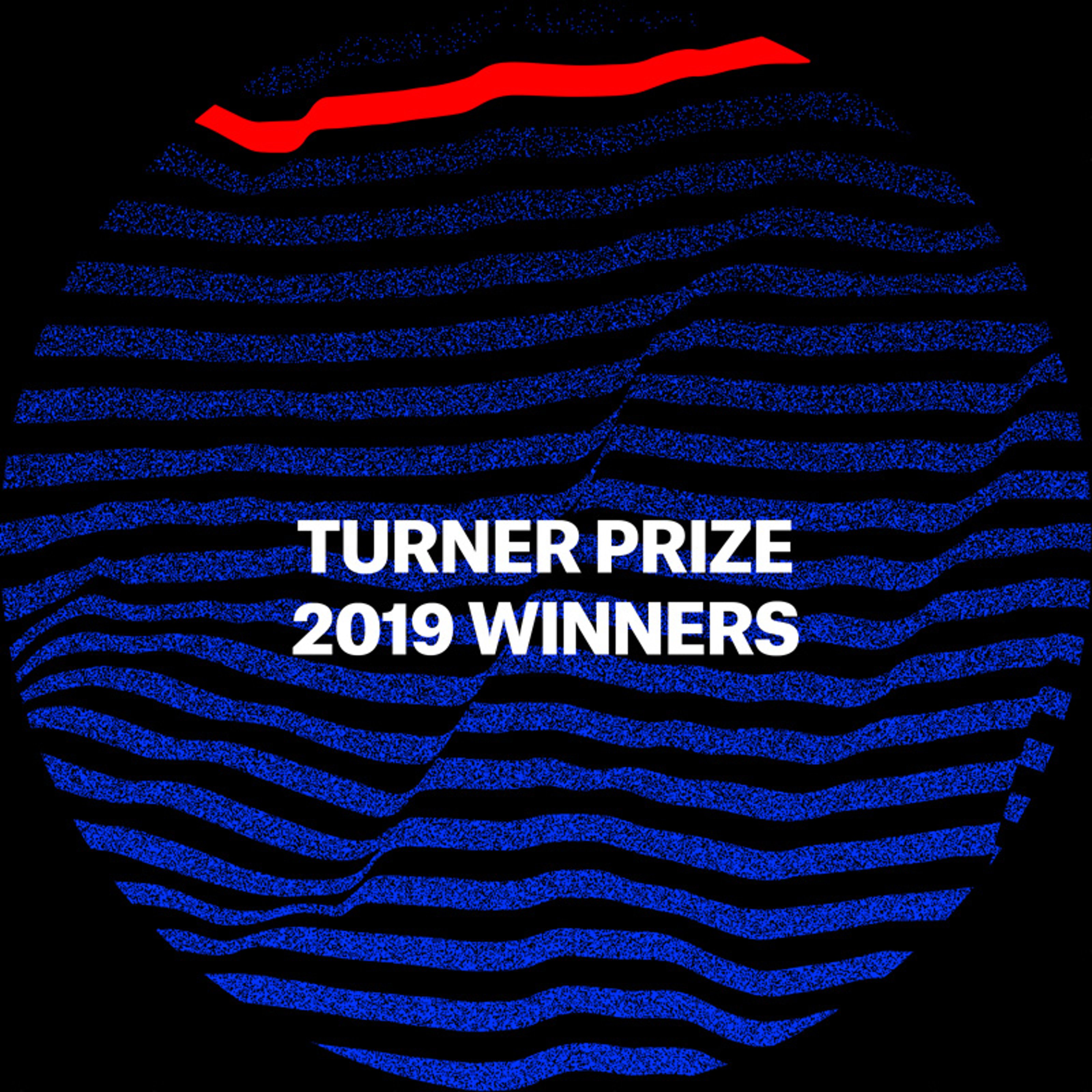


In a surprising turn of events, finalists for the Turner Prize in 2019—artists Oscar Murillo, Tai Shani, Helen Cammock and Lawrence Abu Hamdan—all demanded to receive the prize as a collective in a joint “Statement of Solidarity.” This was the first time in 34 years of the prize’s history that it was awarded to more than one individual. Murillo, Shani, Cammock and Abu Hamdan all create works that are socially and politically conscious, and claimed that this competition between them was unjust and unnecessarily divisive. In their statement, they underlined the importance and urgency of each artist’s work and how they can’t be compared to one another. They agreed to share the reward in the spirit of collaboration and multiplicity in a society that’s increasingly falling into conflict; an important step in promoting solidarity and co-existence rather than competition.



As the Artist-in-Residence at the New York City Department of Sanitation since 1977, Mierle Laderman Ukeles, has used her work to empower people to act and change societal values and norms. The focus of her work stems from a feminist concern with challenging the privileged and gendered notion of being an artist.
She is best known for her service-oriented work, which relates the idea of process in conceptual art to domestic and civic “maintenance,” creating art that brings to life the very essence of any urban center: waste flows, recycling, sustainability, environment, people, and ecology. In 1969, she penned a manifesto entitled Maintenance Art Manifesto 1969! Proposal for an exhibition “CARE”, challenging the domestic role of women and proclaiming herself a “maintenance artist.” Aside from “personal” or household maintenance, the manifesto also addressed “general” or public maintenance and earth maintenance, such as addressing polluted waters. Her exhibitions were intended to bring awareness to the low cultural status of maintenance work. Maintenance, for Ukeles, includes the household activities that keep things going, such as cooking, cleaning and child-rearing and during her exhibitions, she performed the same tasks that she would perform in her daily life, including entertaining guests.
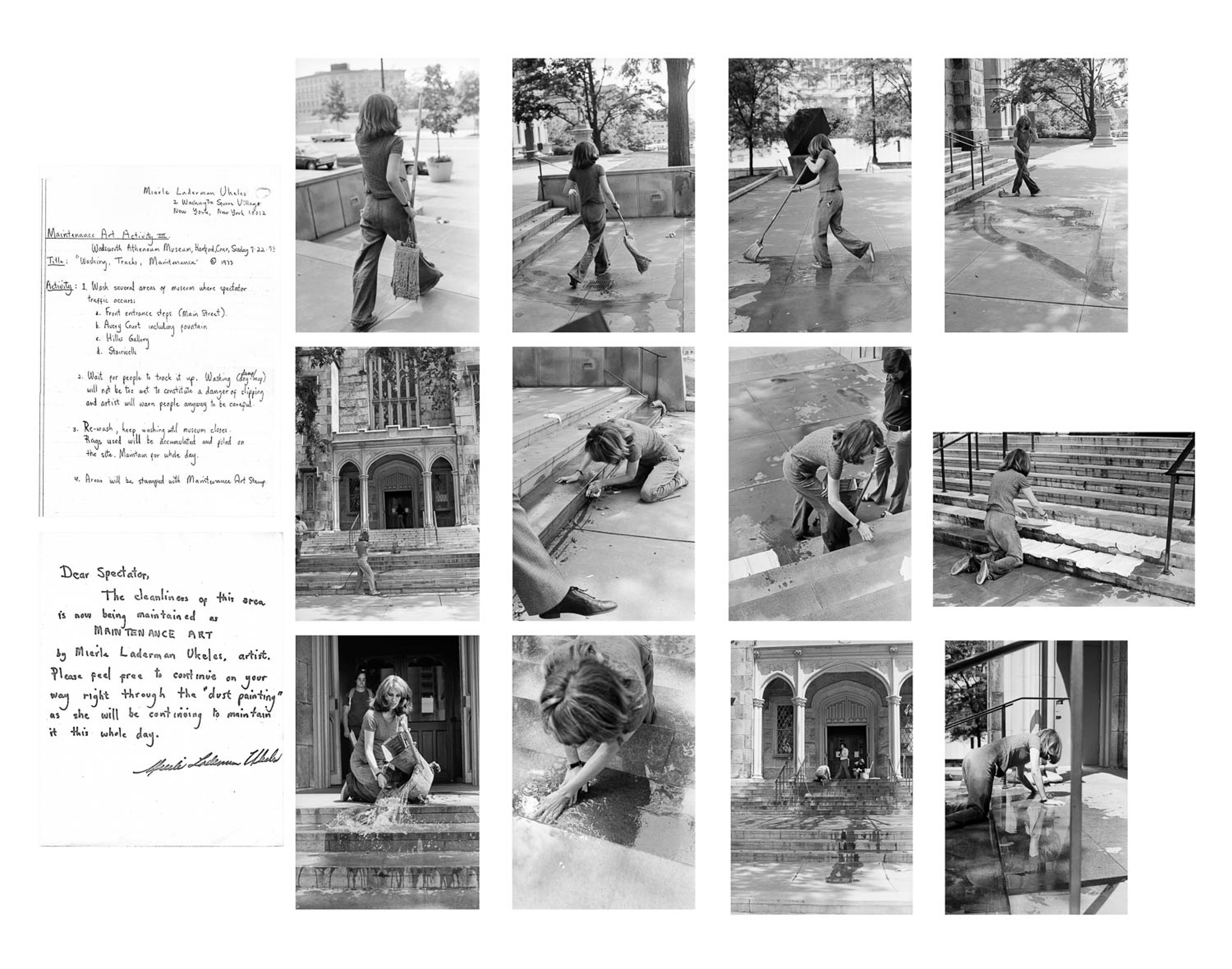



Led by its founder Dr. Nelly Ben Hayoun, The University of the Underground, is a tuition-free postgraduate university located under nightclubs Village Underground in London and De Marktkantine in Amsterdam. The University provides a completely free and accredited Master of the Arts (MA Design of Experiences) which exists at the nexus between critical design, experiential, theatrical, filmic, semiotics, political and musical practices. It aims to teach students how to engineer situations, to design experiences and events to best support social dreaming, social actions and power shifts within institutions, companies and governments.
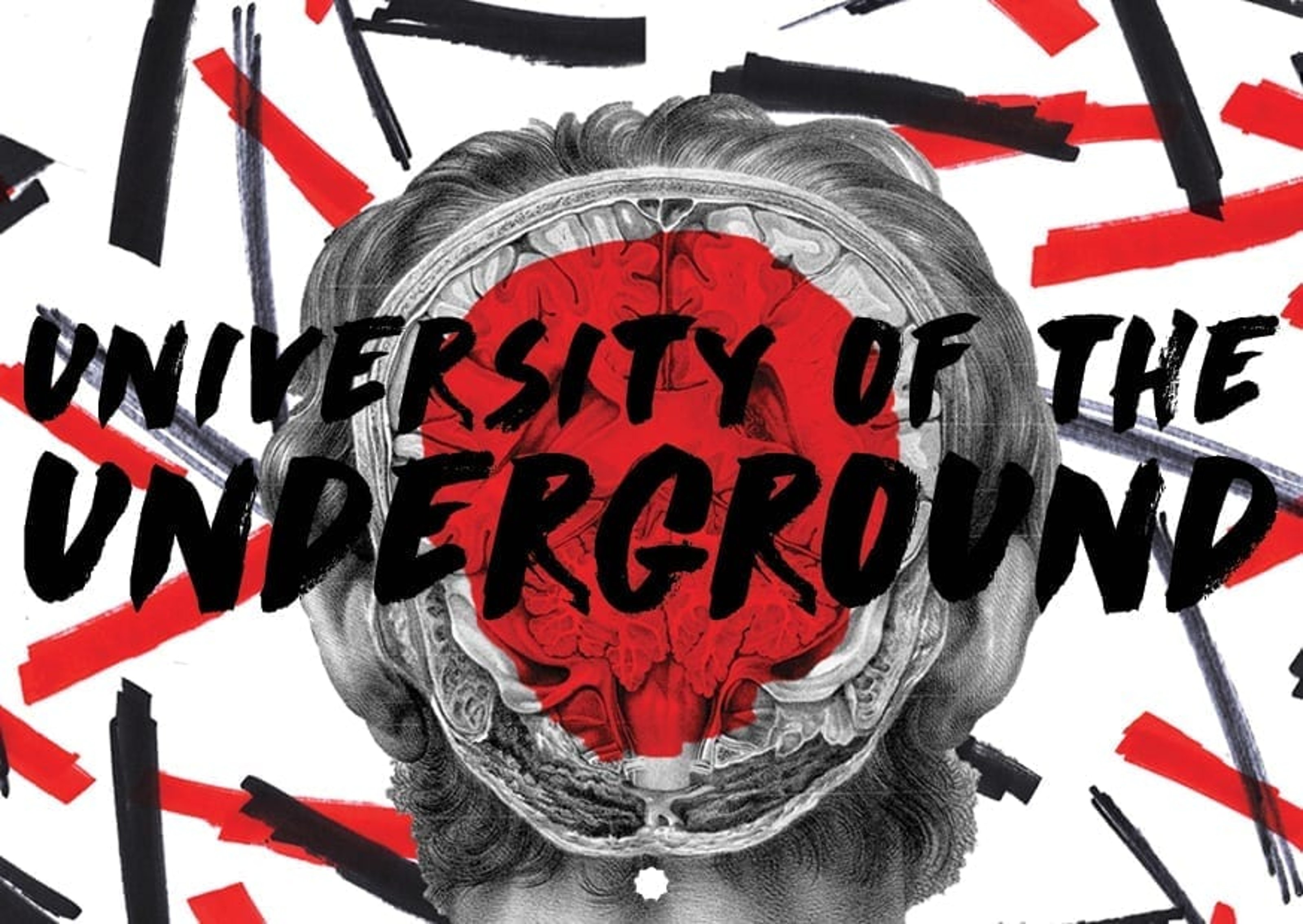



Kara Walker is best known for her candid investigation of race, gender, sexuality, and violence through silhouetted figures that have appeared in numerous exhibitions. Her panoramic friezes of cut-paper silhouettes, usually black figures against a white wall, address the history of American slavery and racism through violent and unsettling imagery. Walker’s work pokes holes in the romantic idea of the past—exposing the humiliating, desperate reality that was life for plantation slaves. Although Walker is known for her serious exhibitions with an overall deep meaning behind her work, she admits relying on “humor and viewer interaction.”

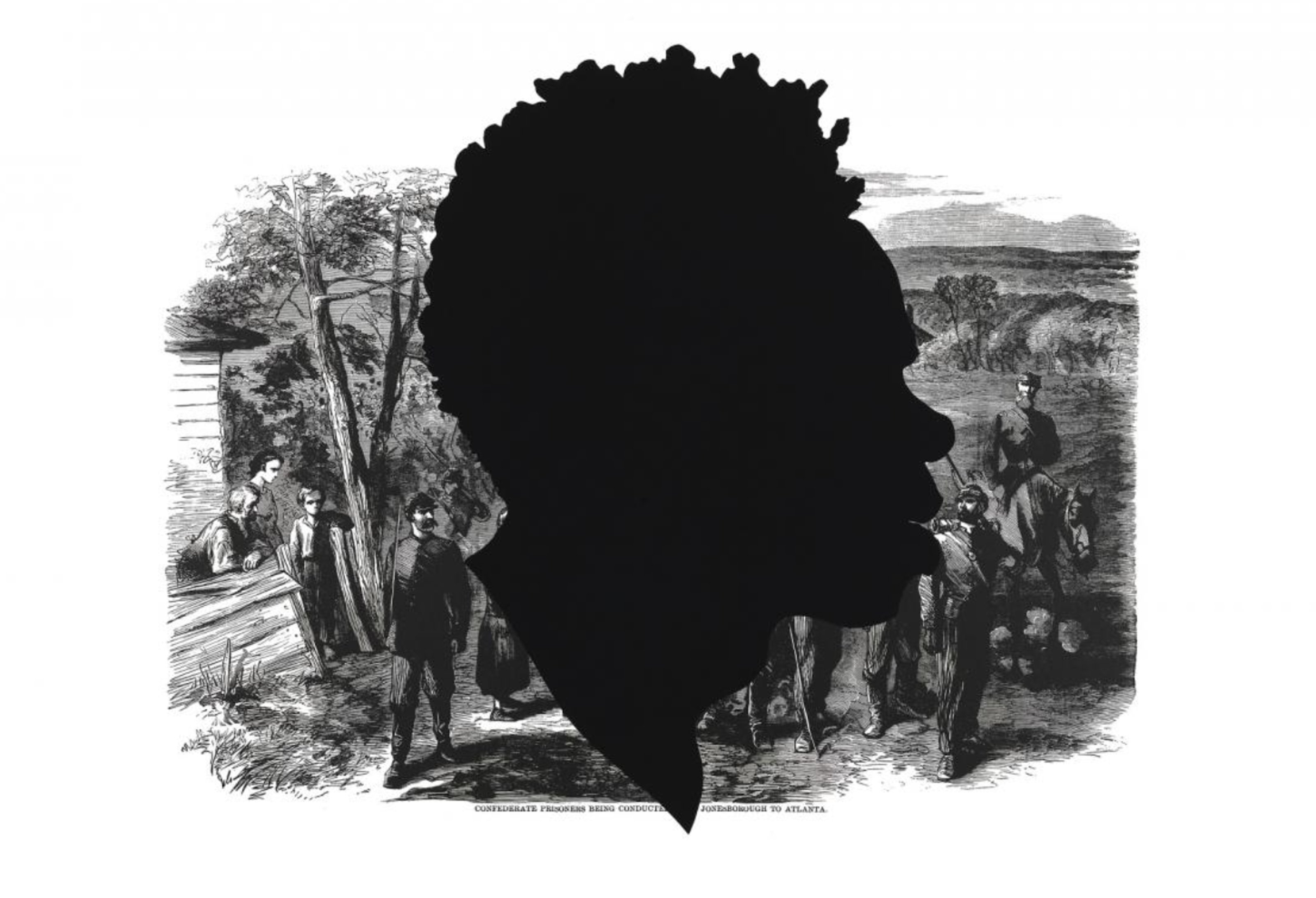
Kara Walker – Confederate Prisoners Being Conducted from Jonesborough to Atlanta, from the portfolio Harper’s Pictorial History of the Civil War (Annotated), 2005



A writer and scholar, McKenzie Wark is recognized for her writings on media theory, critical theory and new media. In her book “Capital Is Dead: Is This Something Worse?” Wark informs us that the data and information we provide to internet services like Google, Facebook and others, have created a new kind of ruling class. Using the data we provide, this emergent class now dominates not only labor but capital as well. Wark is a trans woman.
“Durable alliances generally start with demonstrations of good will. All forms of knowledge are now under attack by factions of the ruling class whose last bases of support are extreme forms of reactionary populism. So it’s time to stress the commonality in our desire to know the world.”
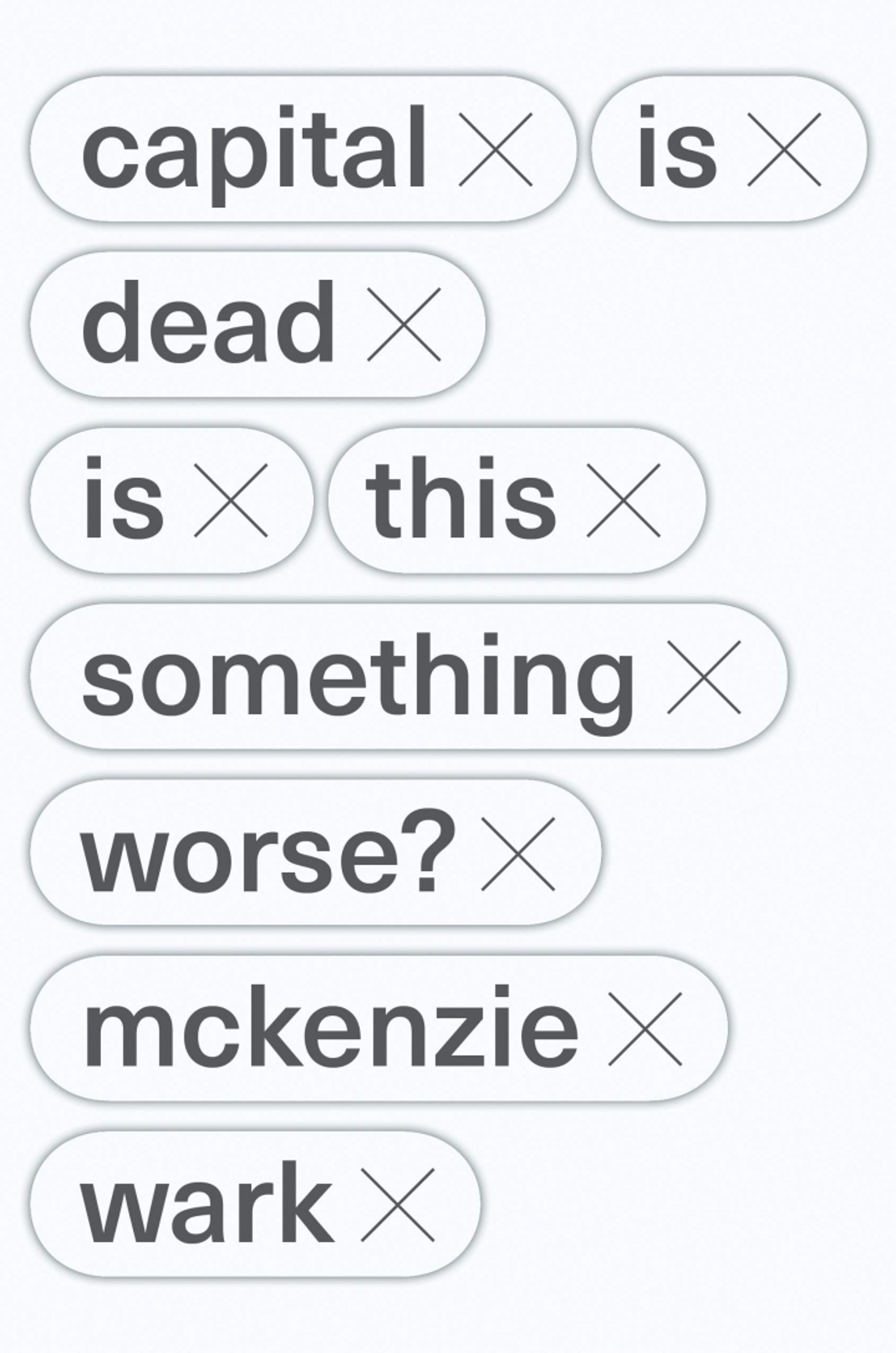
Capital Is Dead, Is This Something Worse? by McKenzie Wark. (Verso, 2019)



Curator, researcher, writer Joanna Warsza works in interdisciplinary public art projects which examine social and political issues. As the co-curator of 7th Berlin Biennale ‘Forget Fear’, she posed the question “how can art change politics and evoke real effects in our society?”. Warsza is a Program Director of CuratorLab at Konstfack University of Arts in Stockholm, and an independent curator interested in how art functions politically and socially outside the white cubes. She was the Artistic Director of Public Art Munich 2018, curator of the Georgian Pavilion at the 55th Venice Biennale and associate curator of the 7th Berlin Biennale among others. In Spring 2020 together with Övül Ö. Durmusoglu, she co-initiated Die Balkone. Life, art, pandemic and proximity in windows and balconies of Prenzlauer Berg in Berlin, where they both live. Joanna and Ovul will curate the 3rd Autostrada Biennale in Kosovo.




Eyal Weizman leads the multidisciplinary research group Forensic Architecture. The group was formed in University of London and came to prominence through detailed digital reenactments of incidents regarding human rights abuses or disputed assassinations. Forensic Architecture had a prominent role in the resignation of Warren B. Kanders from the Whitney Museum board, with their withdrawal from the Biennial and their project Triple-Chaser, an investigation into the uses of products like teargas and rubber bullets manufactured by Safariland Group, owned by Kanders. Their investigation revealed that Safariland products were used in various conflict zones, namely the US-Mexico Border, Gezi Protests in Istanbul in 2013, protests in Puerto Rico in 2018 and on the Gaza Strip.
Eyal Weizman was recently banned from entering the US, before Forensic Architecture’s first major survey exhibition opening at Miami’s Museum of Art and Design (MOAD).
Chemical Attacks in Douma, Syria (excerpt from an investigative analysis commissioned by the New York Times)
On 7 April 2018, the city of Douma, was targeted by two chemical weapons attacks. At that time, the city and its surrounding areas had been under siege by the Syrian military since 2013. At least 70 people died in the attacks, according to reports. Reporters from Russian media outlets RT and TV Zvezda quickly claimed that the attacks had been staged, and that the canisters had been carried into place by the rebels, rather than dropped from regime-controlled airspace above the city. The site of the first chlorine gas attack is rendered as an architectural 3D model. From here, measurements, impact damage and other material evidence was accurately assessed. analysis supports the assessment that the canisters were dropped from the air. At both sites, Forensic Architecture identified a harness consistent with the aerial delivery of munitions documented elsewhere in Syria.
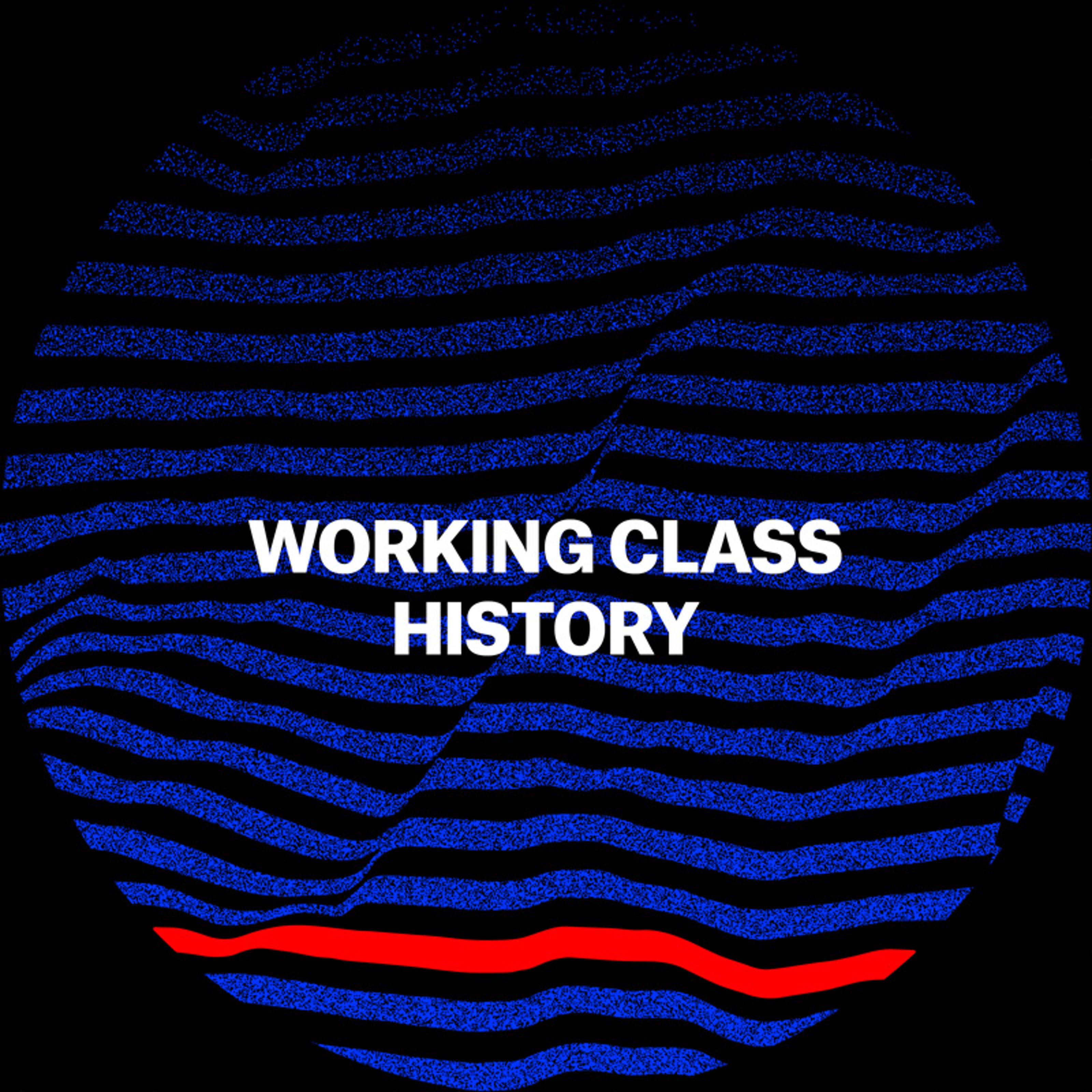


Working Class History is a project dedicated to bringing to light the everyday actions of citizens; the working class. As much of history is written by the powerful and the wealthy, Working Class History aims to highlight the struggles of the unheard, to enlighten and impact the world of today. They present their extensive historical research on Instagram and on their podcast.
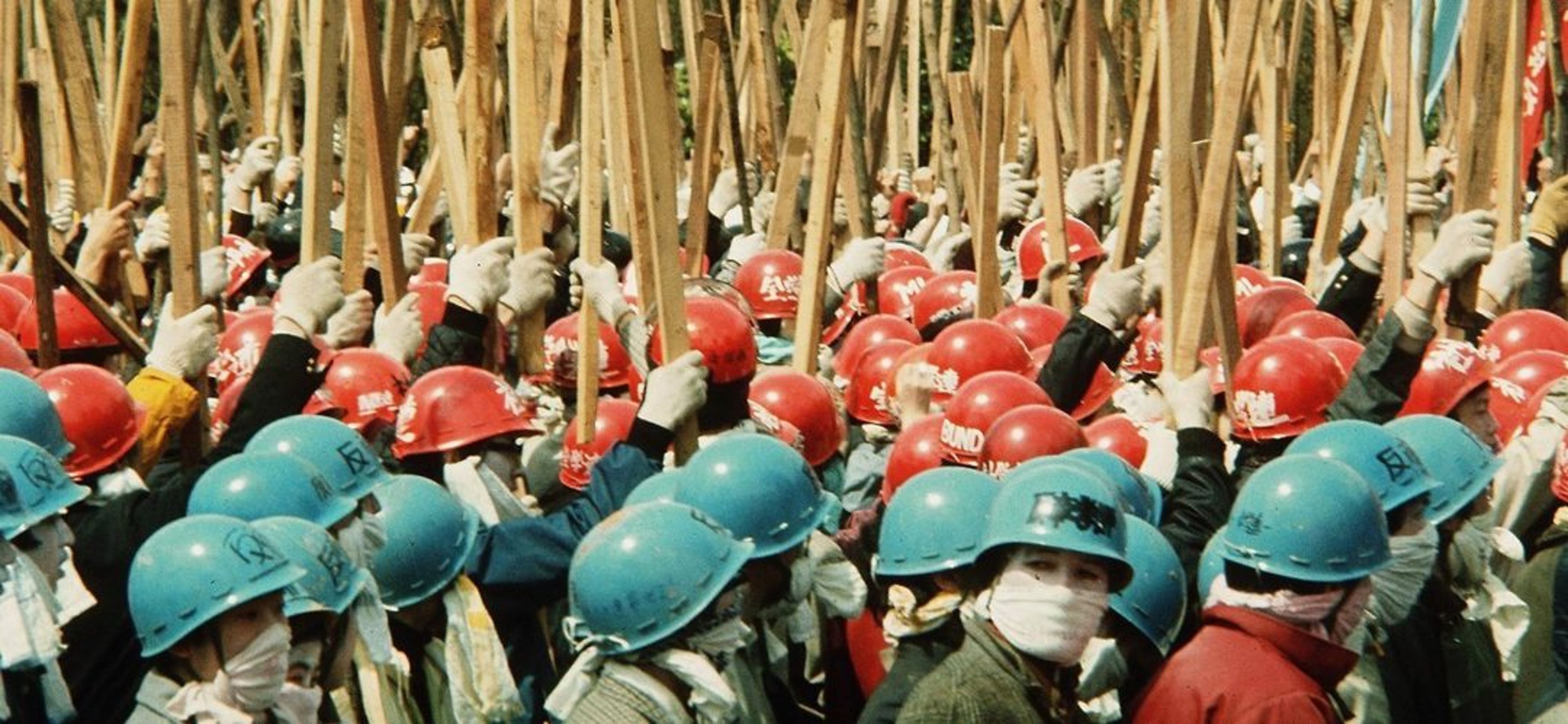
Students protesting the construction of the New Tokyo International Airport (Asahi Shimbun via Getty Images)
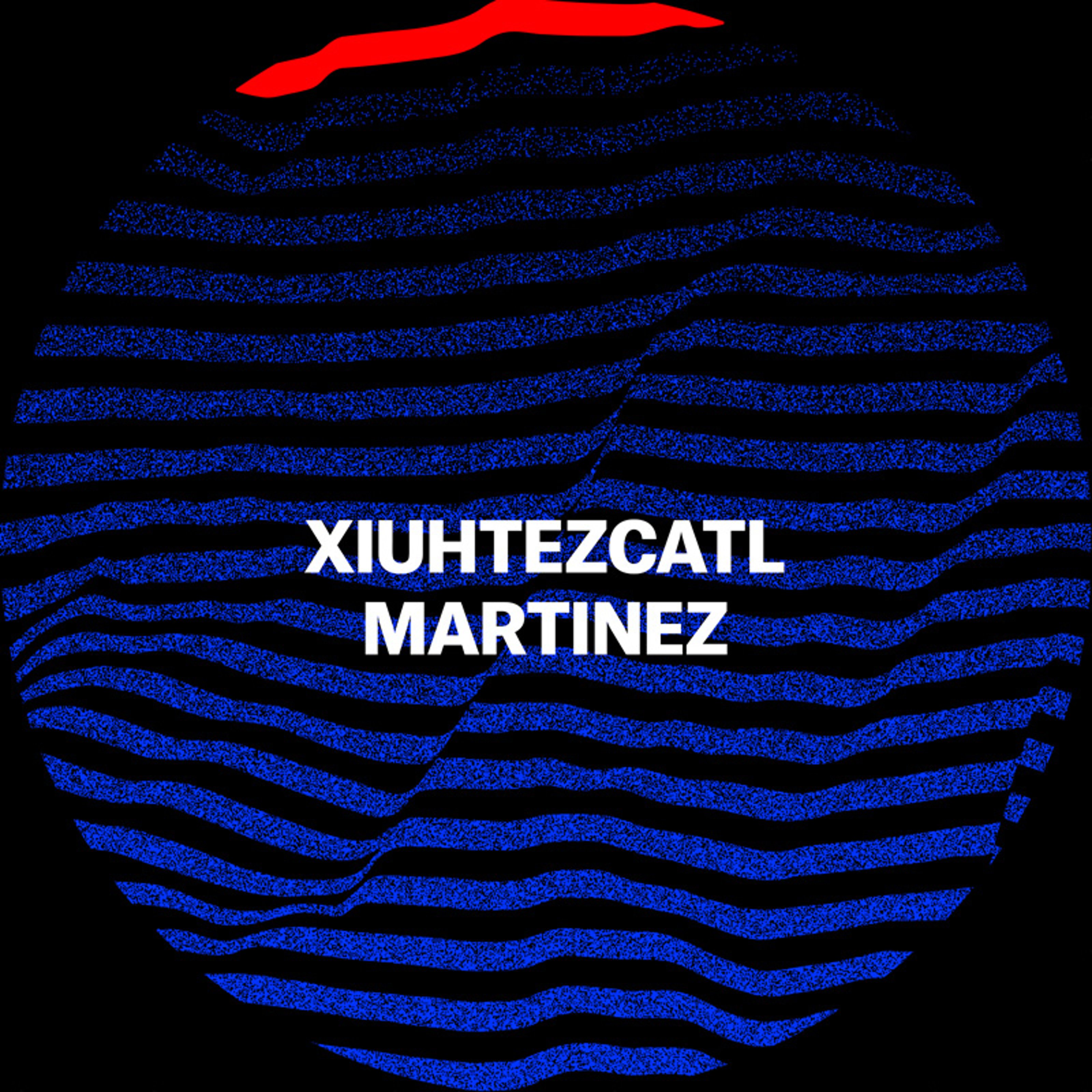


Xiuhtezcatl Martinez is a 19 year-old hip-hop artist, activist and the youth director of Earth Guardians. He took on the political system by being one of the plaintiffs involved in a lawsuit against the US government for failing to act on climate change. He’s been leading a fight for protecting the environment since he was six, speaking at rallies and participating in protests. Martinez cites his parents’ passion for environmental causes and their Indigenous Aztec heritage as an influence on his activism and believes his generation has the power to change the world for the better. He is passionate about pushing the government on fracking, climate crisis and indigenous issues and isn’t afraid to take on governments, politicians or industries to tackle these crises, through activism and through his music.
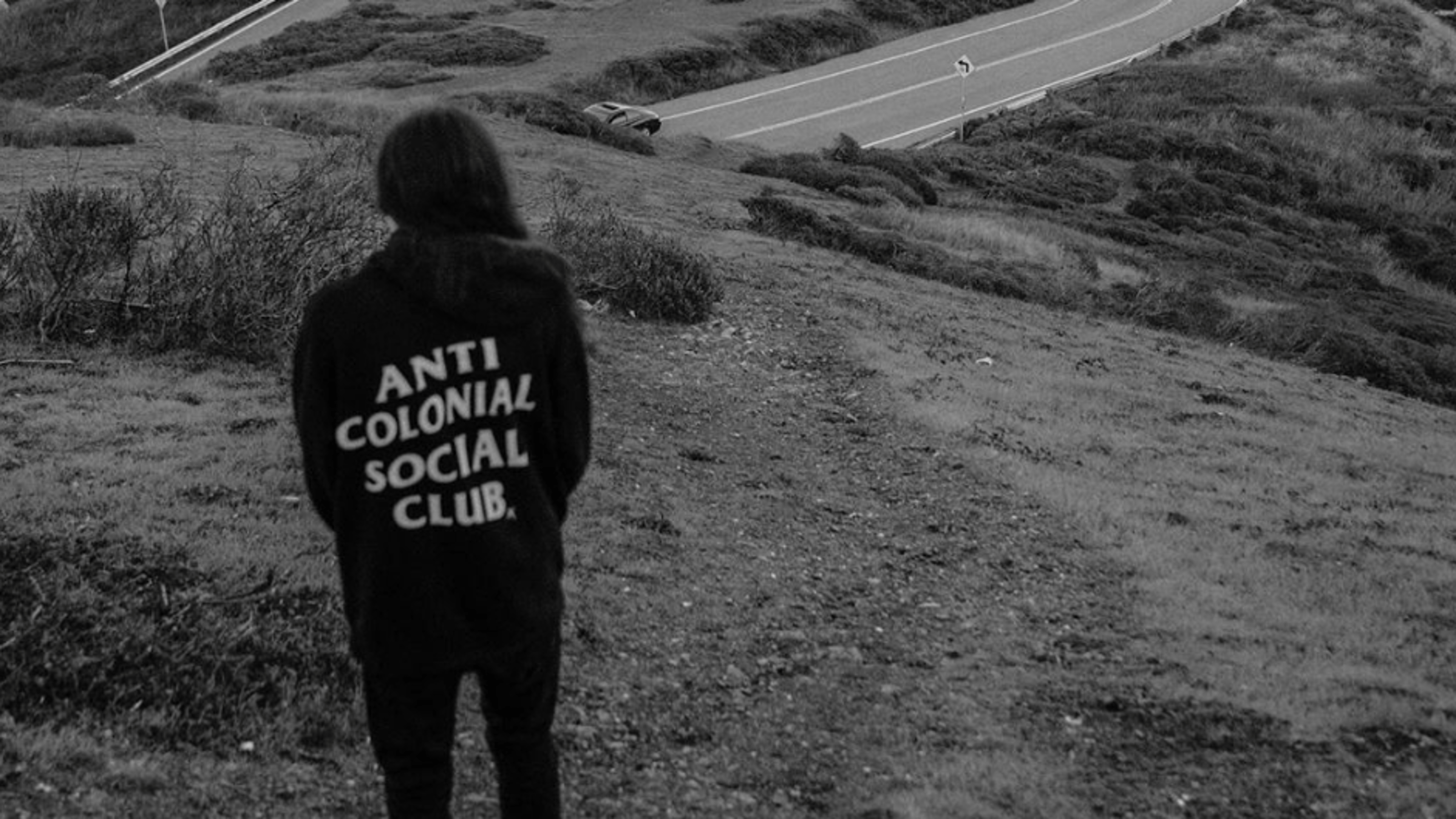
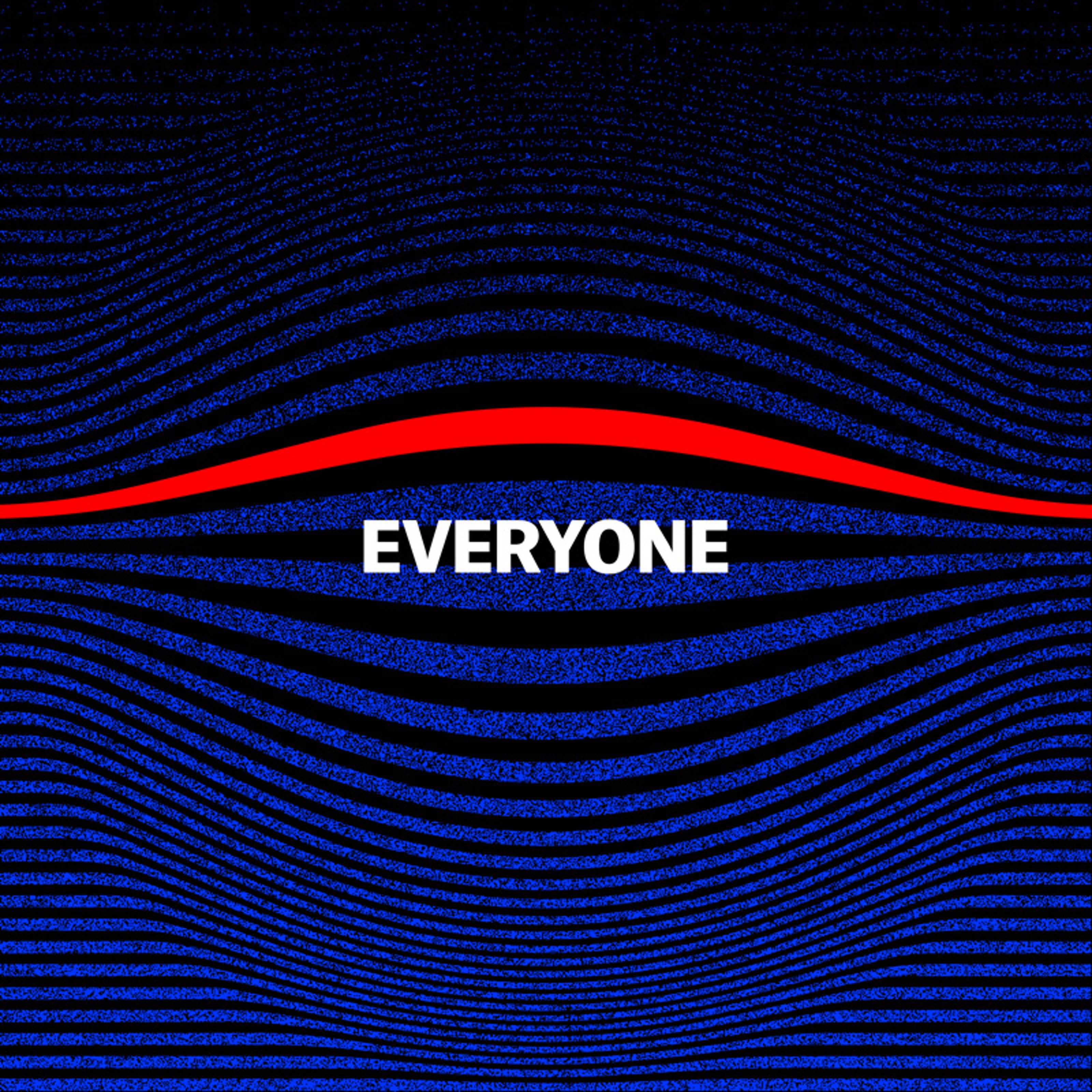


We are living in chaotic times that require collective action, as every day brings new obstacles and challenges surrounding the Covid-19 pandemic. With no official treatment and no vaccine available for at least another year, the only effective way to keep the coronavirus pandemic at bay is to give the virus fewer chances of spreading. In these dire circumstances, it’s important that everyone does their part for the greater good of society. We would like to recognize everyone who is staying home and doing their part in flattening the curve, as well as the volunteers who have put themselves at risk by lending a hand to elderly citizens and other high-risk people who are completely confined to their homes.
